How to travel around Italy: everything you need to know about driving, cycling and public transport

May 30, 2023 • 14 min read

A rented scooter can help you cut through traffic in Italy's busy cities © Ben Pipe Photography / Cultura RM Exclusive / Getty Images
Italy has more must-see sights than you could squeeze into a lifetime. From the exceptionally well-preserved Roman ruins of the capital to the blissful Mediterranean landscapes of Sicily and Sardinia, roaming around the boot-shaped peninsula is a journey of discovery that never fails to astonish.
With so much to see and do, it’s only natural to think that Italy must have set up an optimally functioning public-transportation system to make roaming around easy for the millions of visitors that travel to the country each year. Think twice. While major hotspots are well connected, getting off the beaten track can be tricky without your own vehicle and some planning.
With this article, we’ll guide you through all there is to know to get around Italy, from navigating the twisting roads of the rural countryside to booking a high-speed train ticket at the cheapest price. Whether you have your heart set on touring Tuscany , time-traveling in Rome or eating your way around Emilia-Romagna , here's what you need to know about touring Italy independently.

How to get around Italy without a car: understanding the public transport system
Ranging from snow-capped Alpine peaks surpassing 4,000m in altitude to wild Mediterranean archipelagos, the diverse geography of the Italian peninsula doesn’t allow for one single mode of transport to move people around the country. Trains, buses, ships and ferries all contribute to helping you reach your destination.

Travel by train for views of the stunning Italian countryside
Italy boasts an extensive rail network spanning the length of the country, meaning most major cities – including Rome , Florence , Naples , Bologna and Palermo – are connected by regular train services. Best of all, you can sit back and soak in the gorgeous scenery in between them.
The vast majority of trains are run by Trenitalia , Italy's national train operator, while a handful of high-velocity services are handled by privately owned Italo . Routes are well integrated into the Europe-wide Interrail and Eurail rail-pass system. Trains in Italy broadly fall into three main categories:
- Regionale: the slowest and cheapest trains, generally stopping at all or most stations en route
- InterCity (IC): faster services operating between major cities (their international counterparts are called EuroCity)
- Alta Velocità (AV): modern, high-velocity Frecciarossa, Frecciargento, Frecciabianca (operated by Trenitalia) and Italo trains, with speeds of up to 300km/h and good connections between major cities.
How do you book tickets?
Tickets can be reserved on the Trenitalia and Italo websites (which are now available in English as well as Italian), at railway station counters and at self-service ticketing machines, as well as through travel agents.
Note that when buying a paper ticket for regional and Intercity trains directly at the station – either at the ticket office or at the ticketing machines – it should be validated before entering the train, as these types of tickets are not date specific. When buying online, you can just jump on board without worrying about validation.
Do you have to book in advance?
You don’t need to worry about booking regional trains in advance – the price doesn’t change and seats are not numbered. While regional trains traveling to and from major cities can be packed during peak hours (from 7am to 9am and 5pm to 7pm) as commuters travel to and from work, outside such times they hardly fill up and allow for spontaneous adventures.
Tickets for high-speed trains can also be purchased on the same day of travel, although it is well worth booking in advance to get access to offers and discounts.
How much does it cost?
Ticket prices in Italy tend to be in line, if not slightly cheaper than, other Western European nations, and vary depending on train type and class. Most Italian trains have 1st- and 2nd-class seating, with a 1st-class ticket typically costing from a third to half more than 2nd-class.
How do you find discount fares?
Both Trenitalia and Italo offer decent discounts on advance purchases. Generally, the earlier you book, the greater the savings – though refunds and changes on such tickets are highly restricted. By signing up to Italo’s newsletter you’ll receive discount codes in your inbox when special offers are available (which happens frequently).
Trenitalia regularly offers discounts on its tickets to tourists. For instance, if you plan to travel over the weekend it is worth considering the Weekend Return Offer , which grants you a 40% discount on Intercity tickets. The Italia in Tour ticket allows for unlimited travel on regional trains for three or five consecutive days at a fixed price of €29 or €49.
Are you allowed to bring bikes onboard?
It is possible to take bicycles on many Italian trains by paying a small surcharge. When booking your ticket online, look out for the bicycle icon to know whether the train has a dedicated carriage for bikes.
Which trains offer the best views?
If it's classic Italian scenery you're after, plan your trip around some of Italy's dramatic mountain railway journeys.
The trip on the cute red Bernina Express train between Tirano and Chur, St Moritz or Davos in Switzerland is one of the best rail rides in the Alps. The “ Italian Trans-Siberian ” is a historic railway running from Sulmona to Isernia across the lower Apennines in Abruzzo and Molise, through spectacular mountainous landscapes. If you’d like to match nature with history and literature, you can travel on the Treno di Dante between Florence and Ravenna, in the footsteps of the great Tuscan poet.

Buses are the inexpensive way to explore Italy
Italy’s rail network does reach far and wide, but many areas are still not accessible by train. Suburban buses cover the distance between towns that are either too small or too remote to have a train station.
The public suburban bus network is typically managed on a regional level, meaning that there is no centralized website for purchasing tickets. Google is fairly reliable these days when it comes to schedules, together with the Moovit app. Intercity bus tickets can be bought in advance at newsagents and tobacconists.
Long-distance coaches are mostly managed by private companies, such as Flixbus , Itabus , Marinobus and Marozzi . Though slower than trains, coaches are a cheaper form of transport in Italy, with a web of routes that stretches to all corners of the country. Tickets can be purchased online through bus company websites.
Alternatively, in larger cities, most intercity bus companies have ticket offices (usually at or near the main bus station) or sell tickets through travel agencies. In villages and smaller towns, tickets are sold in bars or on the bus. Advanced booking is not generally required, though it is advisable for overnight or long-haul trips in high season.

Boats zip along the coast and out to the islands
Navi (large ferries) sail to Sicily and Sardinia, while traghetti (smaller ferries) and aliscafi (hydrofoils) serve the smaller islands. Most ferries carry vehicles, but hydrofoils do not. On long-haul ferries, travelers can usually book a two- to four-person cabin or a poltrona , an airline-style armchair. Deck class (which allows you to sit/sleep in lounge areas or on deck) is available only on some ferries.
The primary embarkation points for Sicily and Sardinia are Genoa , Livorno , Civitavecchia (near Rome) and Naples and involve a comfortable overnight trip across the Tyrrhenian Sea. Passenger tickets are cheap during the low season – a trip from Livorno to Olbia can cost as little as €25 – but rise in the summer. Taking your car onboard can be costly during the holiday season.
Ferries for Sicily also leave from Villa San Giovanni and Reggio Calabria . Main arrival points in Sardinia are Cagliari , Arbatax, Olbia and Porto Torres; in Sicily, Palermo, Catania , Trapani and Messina .
Local transport is inexpensive and efficient in urban areas
Most towns and cities have efficient local bus services, and some larger cities, such as Milan, Rome, and Naples, also have extensive metro networks. In Venice , water taxis, gondolas and vaporetti (small passenger ferries) perform the same role.
It's usually possible to reach nearby villages fairly easily by local bus. Bus tickets are sold at newsagents and tobacconists (stores marked with a T sign) and usually cost under €2. Buying tickets directly from the driver is possible, but it will incur a surcharge.
Taxis can be found around bus and train stations. If you call for a radio taxi by phone, the meter will usually start running when you place the call, not when you are picked up. Taxi drivers in major tourist destinations do not have a great reputation; make sure to ask in advance about the price and whether you can pay by card, and check that the meter is turned on.
Rideshares are limited in Italy. At the moment, services like Uber cannot legally operate in Italy as they do in many other European countries. Uber Black, used by licenced taxi drivers only, works in major cities.

Getting around by car, motorcycle or Vespa means maximum freedom
Unless you are planning to stick to art cities, having a private vehicle in Italy means you can travel at your own pace and visit regions with minimal public transport. This is particularly handy in the mountains, on the islands and in the rural countryside, where running buses are few and far between.
Driving your own car will allow you to sleep in isolated agriturismi (farm houses) and take all the time you need to admire the hilly scenery of the country’s interior. Car-hire companies operate throughout the country, allowing you to pick up and drop off vehicles in most major cities. Operators include Avis , Europcar , Hertz and Italy by Car , among others. Consider hiring a small compact car, as doing so will reduce your fuel expenses and make it easier to negotiate narrow city lanes and tight parking spaces.
In the past couple of years some of the regions that see a large influx of tourists during the summer – Sardinia and Tuscany, for instance – have experienced a shortage of rental cars. Much of that is a result of the pandemic: rental companies sold many of their vehicles as travel stopped, while people got increasingly used to relying on private rather than public transportation. As a consequence, prices skyrocket in the high season, so if you're planning to rent a car in the summer, book one in advance.
Who can rent a vehicle in Italy?
Renters must generally be 21 or over, with a credit card and home-country driving license or International Driving Permit. To drive a vehicle in Italy you must have insurance against personal and material damage. All car rental companies offer optional (but recommended) “kasko” coverage, a comprehensive insurance that covers all forms of damage, regardless of who caused it.
How much does it cost to rent a scooter?
Agencies throughout Italy rent motorcycles and scooters, ranging from small Vespas to large touring bikes. Prices start at around €35/150 per day/week for a small 50cc scooter and rise to more than €80/400 per day/week for a 650cc motorcycle. A license is required to ride a scooter – a car license will do for bikes up to 125cc; for anything over 125cc, you'll need a motorcycle license.
What rules do you need to know?
It's obligatory to wear seat belts (front and rear), to drive with your headlights on outside built-up areas, and to carry a warning triangle and fluorescent waistcoat in case of breakdown. Wearing a helmet is compulsory on all two-wheeled vehicles.
How are the driving conditions in Italy?
Road conditions are generally good, but lax maintenance in some areas means you should be prepared for potholes and rough, bumpy surfaces, particularly on smaller secondary roads. Local driving conditions can also take some getting used to. Roads can be narrow and traffic congestion is common. Parking can also be hard to find in urban areas (one reason for the huge popularity of scooters), and local drivers have a reputation for being impatient and quick to use their horns.
What do you need to know about the roads?
It is important to know where you can and cannot drive. Roads in Italy are split into three main categories: roads referred to as strada normale are those that run through urban centers and have a speed limit ranging between 30 and 70km/h. All vehicles can drive here.
A superstrada is a free, multi-lane state road marked by blue signs, with a speed limit of 90km/h. Scooters and bicycles are not allowed to enter such roads and doing so by mistake can be dangerous. The same goes for the autostrada, a toll motorway connecting major centers, where the speed limit reaches 130km/h.
When driving in historic centers you should also keep an eye out for the ZTL signs. A zona a traffico limitato is an area where non-residents are not allowed to enter with a car. Such areas are common, although typically only active during the day. Entering a ZTL translates into a guaranteed fine.

Internal flights are best reserved for longer trips
With Italy’s train and bus network being both cheap and reliable (and much more environmentally friendly) , flying is usually not the most convenient way to travel domestically in Italy. However, if you need to get from one part of the country to the other as quickly as possible, then air services are available, and most major cities have airports.
Italy's beleaguered flag carrier, Alitalia, was replaced in 2021 by a new state-backed airline called ITA Airways , with flights to cities across the Italian mainland and to Sardinia and Sicily . Several low-cost airlines also operate domestic flights, including easyJet and Ryanair . It’s cheaper to buy tickets in advance of travel.
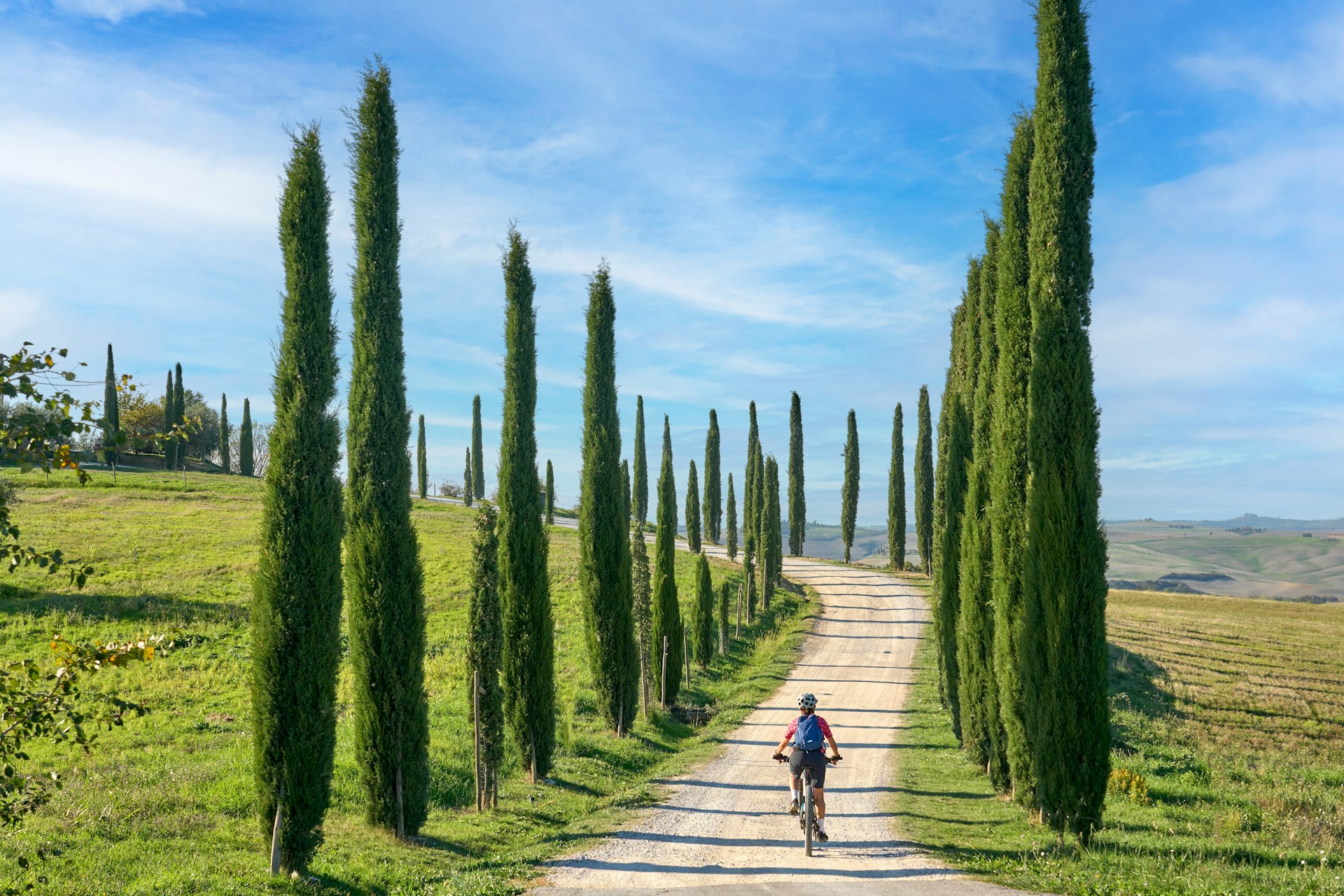
Cycling is a great way to explore the countryside in Italy
Road cycling has long been a popular sport in Italy, but in recent years many regions have invested in building bike paths and itineraries to make this form of sustainable travel accessible to more people. The spread of electric bikes has also contributed to getting people to tour on two wheels – Italy’s hilly and mountainous countryside is no longer an obstacle, thanks to technology.
Northern Italy, especially the Alps and Dolomites , is at the forefront of this shift toward green mobility, offering endless routes for every level of fitness that can be tackled during summer months. But the rest of the country is catching up quickly.
Flat, enjoyable cycling paths run through much of the coast of Liguria . Abruzzo has recently inaugurated its Via Verde – a 40km green lane running parallel to its Costa dei Trabocchi – and the 60km path encircling Umbria’s Lago Trasimeno was completed in 2023. In various parts of Italy, discontinued rail tracks have been converted into mountain-biking routes.
River banks offer the perfect conditions for cycling. Rome, known for its infamous traffic, has a 32km-long path for cyclists, running along the Tiber river through the city center. Tuscany is slowly completing its Ciclovia dell’Arno, which will follow the region’s largest river East to West across 270km, and the VENTO project – aiming to connect Venice with Turin via a 705km path along the Po river – has been in the works for more than a decade.
Bikes are prohibited on motorways, but they can be carried on some ferries and on regional trains displaying the bicycle logo, where you'll need to purchase a separate ticket known as a supplemento bici . Bikes are available for hire in most Italian towns from €12 per day. E-bikes start around €35 per day.

Accessible transportation in Italy
Italy is not an easy country for travelers with disabilities. Cobblestone streets and pavements blocked by parked cars and scooters make getting around difficult for wheelchair users. And while many buildings have lifts, they are not always wide enough for wheelchairs. Not a lot has been done to make life easier for hearing- or vision-impaired travelers either, though awareness of accessibility issues and a culture of inclusion are steadily growing.
If traveling by train, you can arrange assistance through SalaBlu online or by calling 800 90 60 60 (from a landline) or 02 32 32 32 (from a landline or mobile). You can also see the full list of services and details of barrier-free stations on the Rete Ferroviaria Italiana ’s accessible travel information page.
Many urban buses are wheelchair-accessible, though some of the stops may not be – check before you board. Some taxis are equipped to carry passengers in wheelchairs; ask for a taxi for a sedia a rotelle (wheelchair).
Two good online resources for disabled travelers are Village for All , which performs on-site audits of tourist facilities (namely accommodation providers) in Italy and San Marino, and Fondazione Cesare Serono , which provides a list (in Italian) of accessible beaches. For more information, download Lonely Planet's free Accessible Travel guide .
This article was first published May 2021 and updated May 2023
Explore related stories
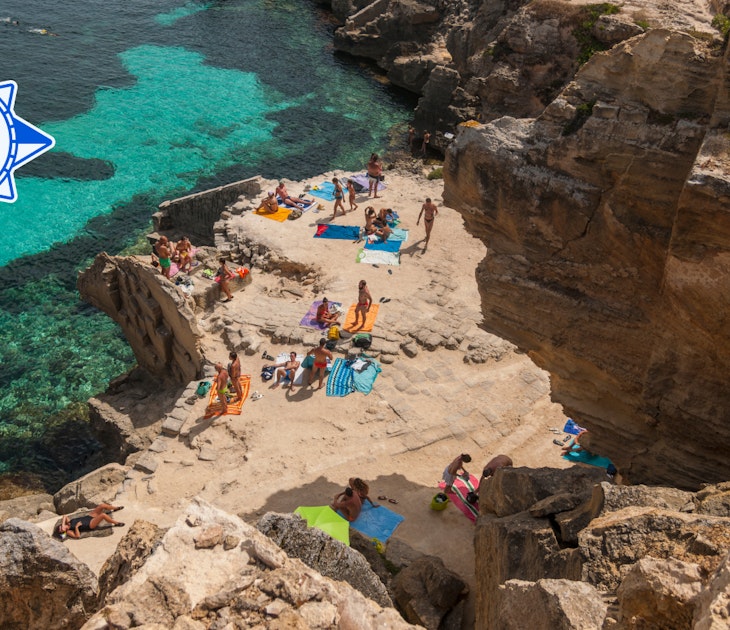
Tips & Advice
Apr 15, 2024 • 10 min read
From chilling on the beaches of Bora Bora to eating shellfish in Cape Cod, USA, here are the best places to visit in June.

Apr 9, 2024 • 7 min read

Apr 8, 2024 • 7 min read
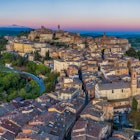
Apr 7, 2024 • 11 min read

Apr 5, 2024 • 5 min read
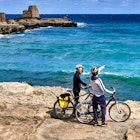
Mar 30, 2024 • 4 min read
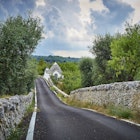
Mar 30, 2024 • 6 min read

Mar 26, 2024 • 6 min read

Mar 26, 2024 • 4 min read
Nomadic Matt's Travel Site
Travel Better, Cheaper, Longer
Italy Travel Guide
Last Updated: November 17, 2023

Italy is one of Europe’s most iconic and popular destinations. Home to incredible food, fabulous wine, tons of ancient ruins, undying romance, and picturesque landscapes, it should come as no surprise that this is one of the most sought-after travel destinations in the world.
I’ve been visiting since 2006 and I never tire of it.
The vineyards in Tuscany, history in Florence , ancient streets of Rome , gorgeous views and hills Cinque Terre , romantic canals in Venice — I love it all.
Italy is best experienced slowly so pace yourself. Soak in the atmosphere and way of life as you explore. Italians move slowly and enjoy la dolce vita and so should you! Relax, take in the scenery, enjoy a cappuccino or a glass of wine. The slower you go, the better you’ll be able to appreciate the charms and nuance of this iconic southern European gem.
This travel guide to Italy can help you plan your trip, save money, and make the most of your time here.
Table of Contents
- Things to See and Do
- Typical Costs
- Suggested Budget
- Money-Saving Tips
- Where to Stay
- How to Get Around
- How to Stay Safe
- Best Places to Book Your Trip
- Related Blogs on Italy
Click Here for City Guides
Top 5 things to see and do in italy.
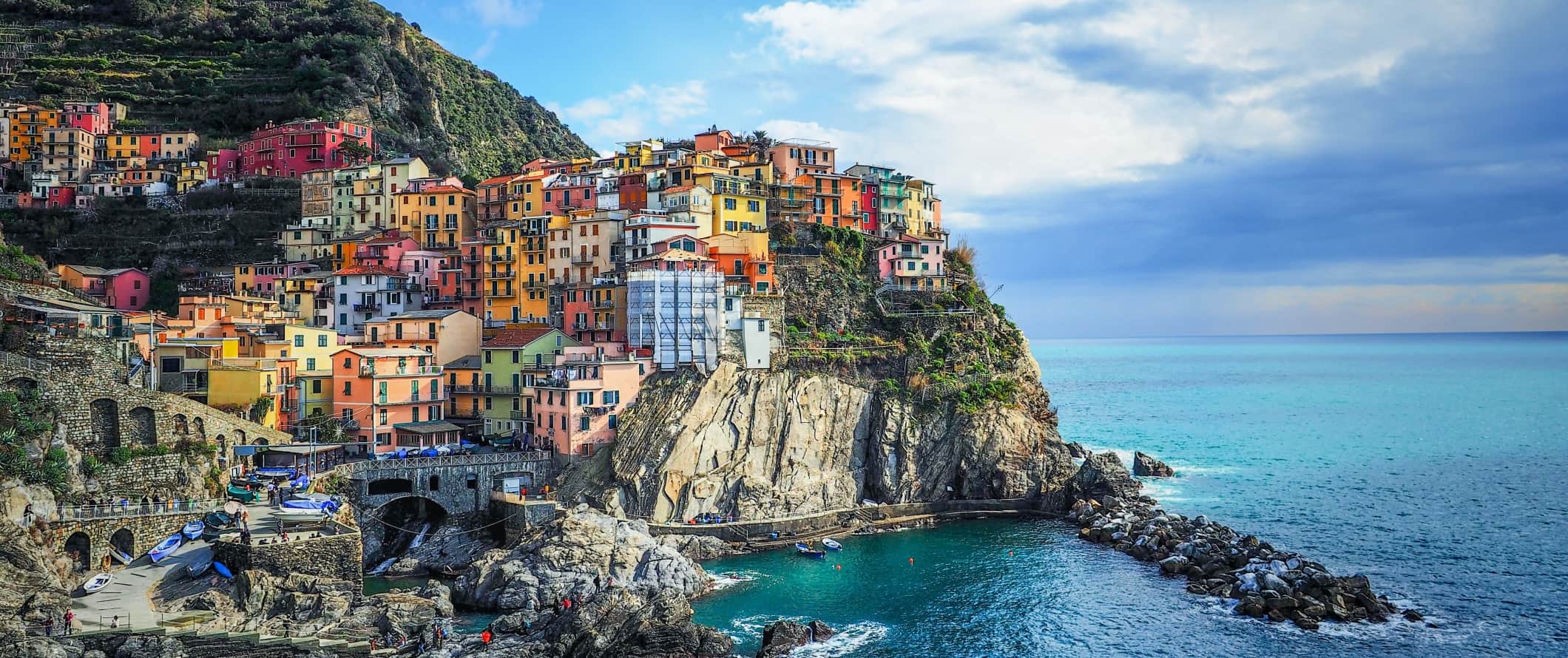
1. Explore Venice
While crowded, Venice is an astounding place to visit. I love the city’s iconic architecture and picturesque canals. Don’t miss the Piazza San Marco, Doge’s Palace, Rialto Bridge, the Basilica San Marco, and the city’s countless museums. Moreover, be sure to head to the old Jewish Ghetto for hip bars and cheap drinks (the English word ghetto comes from this area of Venice). Venice is also home to several world-class festivals. In late winter, the epic Carnival takes place here and, in August, the prestigious Venice Film Festival takes over the nearby island of Lido. If you have time, be sure to explore the neighboring islands on a day tour. They are charming in their own right.
2. Wander Rome
Rome has so much to see and do that you’ll need to make several trips to even scratch the surface. Besides obvious highlights like the Colosseum, Forum, Palatine Hill, and Trevi Fountain, make sure you explore the Trastevere neighborhood. It’s my favorite area in Rome and feels almost like a village inside a big city. Trastevere offers delicious food, funky bars, and ancient winding streets. I love the family pizzerias and cafes here for people-watching and the gelato. Vatican City, the smallest independent city-state in the world, is nestled within the heart of Rome and is home to the Pope, St. Peter’s Basilica, the Sistine Chapel, and many fantastic museums. You can fill an endless amount of time here so don’t try to rush your visit!
3. Tour Pompeii
Located a 20-40-minute train ride from Naples , Pompeii is an ancient city that was destroyed by a volcano, preserving it in a blanket of ash still frozen in time. Walk around the Roman city as it stood the day that Mount Vesuvius exploded in 79 CE, moving in and out of homes, villas, baths, and businesses where pots and vases still lay. What really struck me was entering the houses and seeing that the fountains and most of the beautiful frescoes are still intact. Admission is 16 EUR while a guided tour with a professional archeologist is 50 EUR. It’s a huge site and will take a full day to visit in depth.
4. Hike the Cinque Terre
The Cinque Terre consists of five colorful coastal villages on the west coast of Italy, backed by steep vineyards and mountains. These small towns are by no means undiscovered by tourists but still absolutely beautiful and teeming with great shops and cafes. Each village has its own unique charm and personality so be sure to visit all of them. I absolutely love the fun hikes in the stunning hills high above the sea between the villages that range in difficulty. The Cinque Terre express train makes it super easy to pop around to the different villages if you don’t want to hike between the towns. Trail #7 is my favorite.
5. Relax on the Amalfi Coast
Other things to see and do in italy, 1. party at the venice carnival.
Carnival is ten days of masquerade madness every February leading up to Mardi Gras. The tradition goes back centuries, starting in the 12th century and reaching the height of popularity in the 18th century. Today, it’s one of the biggest festivals in Italy, with millions of people attending every year. The iconic and diverse masks are a central part of the festivities and every year there is a contest for the most beautiful mask. If you want to splash out, you can even attend a traditional masquerade ball! Just be sure to book your accommodation early as the city fills up months in advance.
2. Explore Milan
Milan is the fashion capital of Italy. Spend some time taking in the glamor but don’t spend more than a day or two here unless you’re looking to splash out. While you’re here, don’t miss the beautiful Milan Cathedral, which boasts 3,500 statues, 135 spires, and five bronze doors. Sforzesco Castle, a 15th-century castle that houses Michelangelo’s last sculpture, is also worth a visit. There’s also Leonardo da Vinci’s The Last Supper , located inside Santa Maria delle Grazie church (which is itself a UNESCO World Heritage Site) as well as Leonardo’s Horse, one of the largest equine statues in the world. To get away from the crowds, spend some time relaxing in Parco Sempione, Milan’s most famous city park. It’s a vast oasis of green space and perfect for a picnic when the weather is nice.
3. See the Leaning Tower in Pisa
The entire city of Pisa is focused on taking photos of this famed tower. Started in 1173 and finished in 1399, it’s the bell tower of Pisa’s cathedral, located next door. Although it was meant to be perfectly vertical, the tower started leaning during construction due to the weight of the building on an unstable foundation. Admission to the top is 20 EUR or 27 EUR for a ticket that includes all the monuments in the complex. DiscoveryPisa runs a guided tour of all three sites for 30 EUR if you want a more in-depth experience.
4. Visit Siena
Everyone who visits Siena walks away loving it. Located in Tuscany, it’s one of the best-preserved medieval cities in Italy and boasts a labyrinth of lanes gathered around the arena of Piazza del Campo. Spend a few days admiring this charming city and exploring one of Italy’s most popular and famous regions. The main draw to the city is the stunning Siena Cathedral, which was constructed with white and black marble and is one of the most beautiful cathedrals in the country (the interior is massive and ornately decorated and lined by huge columns). Be sure to also visit the Torre del Mangia, a narrow 14th-century tower that offers stunning views of the area, as well as the 14th-century Fonte Gaia fountain, which is decorated by centuries-old marble panels.
5. Wander Naples
Naples , made famous as the birthplace of pizza, is a gritty city home to a wealth of historical treasures. There’s the medieval Naples Cathedral, the 18th-century Villa Comunale Park, and nearby Naples , Pompeii , one of the most amazing and important sites to visit in the country. The Archaeological Museum of Naples is also worth a visit, and if you enjoy hiking you can climb up the iconic Mount Vesuvius. Naples is the gateway to the south so you’re very likely to come here if you’re crisscrossing the country. Its location near Pompeii, Capri, and Sorrento makes it the perfect starting point for exploring the region. Best of all, it’s a foodie city like no other; I ate my weight in pizza during my visit!
6. Explore Florence
There’s no real need to explain why one should visit Florence — the city speaks for itself. Everything people say about it is true: great food, amazing museums, ancient buildings, small streets, awesome gelato. The city has it all. Be sure to visit The Uffizi, which holds the world’s most important collection of Renaissance art (including the The Birth of Venus and La Primavera by Botticelli, Bacchus by Caravaggio, and Doni Tondo by Michelangelo). The famous David statue is also in Florence, housed in the Galleria dell’Accademia. It’s one of the most impressive sculptures in the world and at 5.17 meters (17 feet) tall, it’s a lot bigger and more detailed than you think it would be! While here, make sure you take a few wine tours throughout the region to get a feel for the verdant countryside.
7. Drive around “the Heel”
Few travelers ever visit the southern heel of the Italian “boot.” But, if you have time, it’s worth the trip. This is where most of the fruits and vegetables in Italy come from so a trip down here will give you the best glimpse into rustic Italian life far from the maddening crowds of Rome and Italy’s other tourist hotspots. Don’t miss the picturesque Polignano a Mare, with its rugged cliffs and white-washed houses. Gallipoli, with its labyrinth of narrow lanes and historic port, is also worth visiting. There are tons of amazing beaches in this part of the country too, including Marina di Pescoluse (Salento), Cala Porto (Polignano a Mare), and Torre Guaceto (Brindisi).
8. Eat your way around Sicily
There’s Italian culture and then there’s Sicily. Sicily has its own unique cooking style, traditions, and customs. It’s unlike the rest of Italy. Be sure to spend some time in Taormina and Palermo (the capital of Sicily). The UNESCO Valley of the Temples is also in Sicily, a national park home to incredible Greek ruins that are over 2,000 years old. Don’t miss the stunning Mount Etna , an active volcano that you can ski on it in the winter or take a tour of the top in the summer.
9. Stroll through Sorrento
Sorrento is a small city in southwestern Italy surrounded by a dreamy landscape of rolling hills, deep valleys, and the Lattari Mountains. There’s not a lot to do in the town itself but Sorrento makes an ideal starting point for numerous excursions to nearby cities and islands around the famous Amalfi Coast, like Capri and Ischia. I especially love driving along the winding coastal roads overlooking the sea. Don’t miss a visit to the nearby Blue Grotto .
10. Attend Settimana Santa (Holy Week)
This is the last week of Lent, known as Holy Week. During this time, there are several processions throughout Italy, drawing crowds of thousands. Throughout the week, there are various gatherings in Puglia, Abruzzo, and Sicily but the major event occurs on Easter Sunday and is led by the Pope himself. It’s an amazing time to visit, but expect huge crowds and for accommodation to sell out months in advance.
11. Visit Alberobello
A UNESCO World Heritage Site, this is an interesting and picturesque little town just south of Bari (a port city on the Adriatic Sea) known for its unusual white cone-shaped houses (they’re super peculiar). It’s well worth a visit between the months of November and April (to avoid the flocks of tourists) as there are a couple of museums to peruse, in addition to some great restaurants, bars, and markets.
12. Tour the Vatican Museums
Founded in the early 16th century, it is a complex of museums spanning over 12 acres. There are so many priceless highlights, including Michelangelo’s works in the Sistine Chapel. You could easily spend hours here. Consider getting a guide to make the museum come to life. Admission is 17 EUR and skip-the-line guided tours with Get Your Guide cost 50 EUR. For a more unique experience, check out the
13. See Chiesa di Sant’Efisio
When you find yourself in Cagliari on Sardinia, wander over to the Stampace quarter to see this church. Dedicated to the patron Saint Ephisius, this is the most important church in the city. The original building dates to the 13th century, though it was rebuilt and expanded in the 16th century and then again in the 18th century, this time in the Baroque style. Admission is free.
14. Take a cooking class
Italy is a dream destination for foodies and the best way to learn about this amazing cuisine is to take a cooking class . You’ll get to visit a local market, learn about the history of some of the country’s best dishes, and then learn how to make them yourself so you can impress friends and family back home. You can find cooking classes all over the country. They are very common. Prices vary depending on what city you take a class in, but most cost at least 70 EUR and last a few hours.
15. Take a walking tour
Walks of Italy offers incredible, detailed tours all around the country. They are my favorite tour company in the country. And they are relatively inexpensive and you definitely get your money’s worth. If you are big into history, culture, or architecture these tours are for you. You’ll walk away with a much richer understanding of the country. Don’t miss them.
For information on specific cities in Italy, check out these city guides:
- Cinque Terre Travel Guide
- Florence Travel Guide
- Milan Travel Guide
- Naples Travel Guide
- Pisa Travel Guide
- Rome Travel Guide
- Sorrento Travel Guide
- Venice Travel Guide
Italy Travel Costs
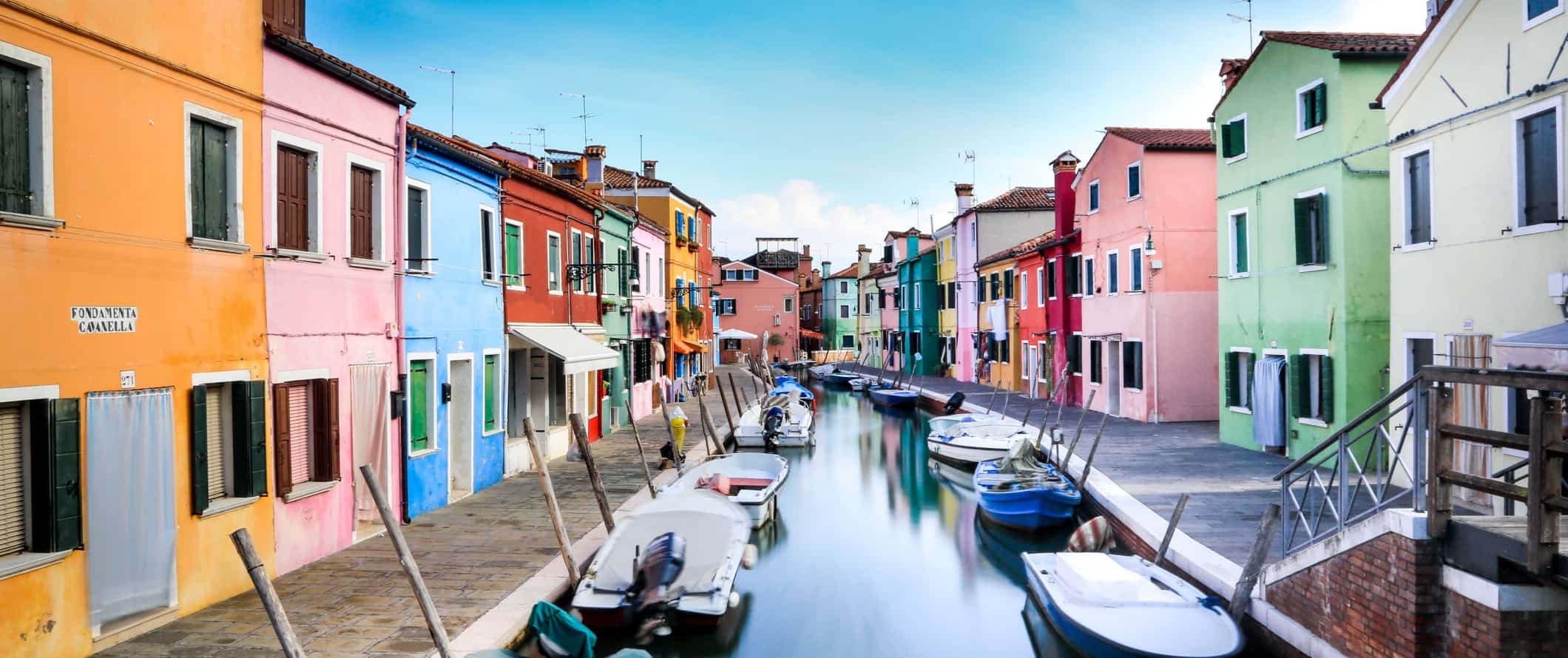
Accommodation – Hostel dorms average 27-40 EUR per night for rooms with 6-8 beds. Private rooms are usually between 55-100 EUR per night. Free Wi-Fi is standard and most hostels also have self-catering facilities and include breakfast. During the summer months, expect prices to double. In Rome and Florence, prices throughout the year are about 20% higher than anywhere else.
For those traveling with a tent, campgrounds are available around the country, usually costing between 15-30 EUR per night for a basic plot for two people.
A night in a two-star budget hotel ranges between 70-125 EUR per night. Expect basic amenities like free Wi-Fi, TV, AC, and occasionally free breakfast. Prices are on the higher end in cities like Rome and Venice and also double during the summer.
On Airbnb, private rooms start around 45-90 EUR, while entire apartments usually start around 100-150 EUR. Expect prices on the higher end in hotspots like Rome and Venice. Prices can also double (or triple) when not booked in advance. Additionally, expect even higher prices in the busy summer months.
Food – Italian cuisine is beloved around the world, though every region in Italy offers its own distinct flavor. Tomatoes, pasta, olives, and olive oil form the backbone of most dishes, with meat, fish and various cheeses rounding out the menu. Gelato and pizza, of course, are also super popular. Some traditional dishes include bigoli in salsa (pasta in anchovy sauce), risotto al nero di seppia (risotto with cuttlefish ink), gnocchi alla Sorrentina (potato gnocchi), cassoeula (a meat and cabbage stew), and tagliatelle funghi porcini e tartufo (pasta with mushrooms and truffles).
A casual restaurant meal of pizza or pasta usually costs 10-20 EUR. In tourist hot spots, add 5-10 EUR to that.
Quick eats like pizza by the slice, paninis, and light snacks cost between 3-8 EUR. Snacks like croissants are less than 2 EUR.
Fast food (think McDonald’s) costs around 8-10 EUR for a combo meal while Chinese, Thai, or Indian food is 10-12 EUR for a main dish. Dessert is usually around 4-8 EUR for something like tiramisu.
Your average restaurant meal costs around 30 EUR with a drink. Most main dishes cost around 15-20 EUR while a pizza is around 10-15 EUR. For higher-end meals, expect to spend about 70 EUR for a three-course meal with a drink.
Beer costs around 4-5 EUR while a glass of wine costs 4-8 EUR. For non-alcoholic drinks, a latte or cappuccino is around 1.50 EUR and bottled water is 1 EUR.
If you plan on cooking your own groceries, expect to spend 50-65 EUR per week. This gets you basic staples like pasta, rice, seasonal produce, and some meat or fish.
Backpacking Italy Suggested Budgets
If you’re backpacking Italy, my suggested budget is 60 EUR per day. This assumes you’re staying in a hostel, cooking all your meals, limiting your drinking, taking public transportation to get around, and sticking to mostly free activities like hiking, free walking tours, and the beaches. If you plan on drinking a lot, add at least 15 EUR to your daily budget.
On a mid-range budget of 140 EUR per day, you can stay in an Airbnb or budget hotel, eat out for a couple of meals, enjoy a few drinks, take the occasional taxi, and do more paid activities like touring the Colosseum or exploring Pompeii.
On an upscale budget of 255 EUR or more per day, you can stay in a budget hotel, eat out for all your meals, drink as much as you want, rent a car, and do whatever tours and activities you want. This isn’t a real luxury budget but it’s a budget that affords you the ability to do anything you want. If you want real luxury, you’ll need to read a different blog for that!
You can use the chart below to get an idea of how much you need to budget daily, depending on your travel style. Keep in mind these are daily averages — some days you’ll spend more, some days you’ll spend less (you might spend less every day). I just want to give you a general idea of how to make your budget. Prices are in EUR.
Italy Travel Guide: Money-Saving Tips
It’s very easy to break the bank in Italy, owing to all the historic sites, expensive accommodation, and delicious but pricey restaurants. After all, Italy is one of the most expensive Eurozone countries. You’re going to be spending a lot on a visit here. However, there are still lots of ways to reduce your expenses. Here are some tips to help you save money in Italy:
- Skip the bread – Many restaurants offer you bread when you sit down — but they don’t mention that it’s not free. If you’re on a budget, decline the bread and save a few Euros each dining experience.
- Picnic – Head to the store or one of the many markets in the country and grab food for a picnic. It’s cheaper than eating out and you can lounge in one of the many parks to watch the day go by. Food markets are a good place to try things, get fresh cheese and cold cuts, pasta, and snacks like ‘arancini,’ a super-filling rice ball stuffed with meat or cheese.
- Drink the tap water – When out at a restaurant, ask for tap water or you will automatically get expensive bottled water included on your bill. Since the tap water is safe to drink, bring a reusable water bottle to save money and reduce your plastic use. LifeStraw is my go-to brand as their bottles have built-in filters to ensure your water is always clean and safe.
- Buy wine at the store – You can buy a great bottle of wine for 6-10 EUR at the store. It’s a lot cheaper than drinking at the bar. Take it outdoors and sit around and enjoy the day/evening or skip expensive nightlife and go out for a long dinner and just drink it at the hostel. Just make sure you have a travel corkscrew on you if you’re going to sit outside somewhere!
- Take the bus – Budget bus companies like Flixbus can take you across the country for cheap. It isn’t glamorous, but with tickets starting at 6 EUR you really can’t complain! (And it’s cheaper than the train.) Taking the bus in town inside big cities instead of taking taxis everywhere or renting a car will save you lots of money.
- Take a free walking tour – Most cities in Italy offer free walking tours that cover all the main highlights. It’s the best budget-friendly way to explore and also a great way to meet other travelers if you’re alone. Just be sure to tip your guide at the end!
- Stay with a local – Accommodation is expensive in Italy, even in the hostels. Use Couchsurfing to stay with locals who have extra beds or couches for free. It’s the best way to save money and meet people. Just be sure to send your requests early (especially in the summer). Also, it’s a good idea to research the area you’re staying in first so you’re not so far away from the city center (or city!) that you need to spend a lot of time/money getting into town to see the sites.
- Get a city tourist card – Many tourism offices offer tourist cards that provide free or discounted entry to the main attractions. Some even include restaurant discounts and free transportation. If you plan on sightseeing a lot, these cards can cut your costs drastically. Check the local tourism board in each city for info when you arrive.
- Rideshare – If you’re flexible in your schedule, use the ridesharing service BlaBlaCar to catch rides with locals between cities. I used this service and not only did I save money, I got to meet interesting people and learn more about life in Italy. This is a good option to book a few days in advance. Just make sure to pick someone who has good ratings because newer drivers can have a tendency to be unreliable or cancel at the last minute.
Where to Stay in Italy
There’s a lot of hostels and hotels in Italy to choose from. To help you save money on accommodation, here’s a list of my recommended hostels and budget hotels in Italy:
- Loly Boutique Hotel (Rome)
- The Beehive (Rome)
- Hotel Montecarlo (Venice)
- Generator (Venice)
- Hostel of the Sun (Naples)
- Ulisse Deluxe (Sorrento)
- Hotel Bologna (Pisa)
- Hostel Pisa Tower (Pisa)
How to Get Around Italy
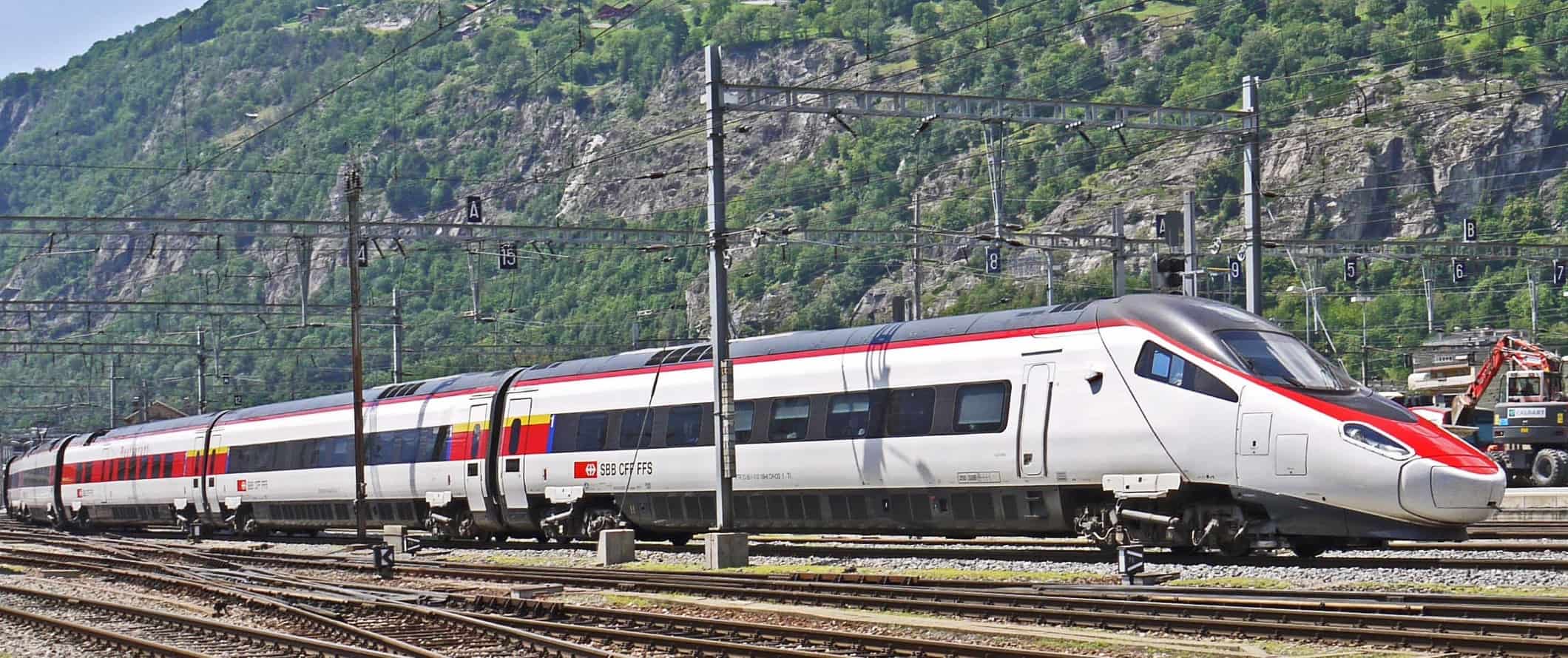
Public transportation – Public transportation is available in all the major cities in Italy (many of which have comprehensive metro systems). Tickets usually cost between 1-2 EUR for a single journey. Some cities also have day passes that offer unlimited travel. In Rome, you can purchase a one-day pass for unlimited travel for 7 EUR. A one-week pass costs 24 EUR, for example. While public transportation is generally reliable, traffic can be a nightmare — especially in Rome.
Train – The best way to get around Italy is via their extensive train network. Prices are affordable too, with most trips costing just 10-30 EUR. Rome to Florence takes just 90 minutes (on the fast train) with tickets starting at 20 EUR. Rome to Venice takes around 4 hours with tickets starting around 30 EUR. Rome to Naples is just over one hour and costs around 20 EUR.
Italo and Trenitalia are the two main rail systems. Tickets on Trenitalia are often a standard price, while Italo’s ticket prices fluctuate more widely. It’s worth it to check both.
Bus – The bus is slower than the train but cheaper, with prices on FlixBus starting as low as 6 EUR. This isn’t the most convenient or fastest way to travel, but the buses are comfortable and good for short and medium journeys. Most buses come with outlets and free Wi-Fi too.
The 4-hour trip from Rome to Florence costs around 7-15 EUR, while a longer trip like Venice to Naples takes 10-15 hours and costs just 20-32 EUR.
Flying – If you’re pressed for time and are looking to jump from one city to the next, a budget airline might be the way to go. Prices can be incredibly low — just 20-100 EUR round trip on airlines like Ryanair.
That said, when you factor in the time spent at airports, you’re likely not going to save much time. Also, keep in mind that you’ll have to pay to check your baggage on these cheap flights and you usually need to print your boarding pass out too (or pay a fee).
Ferry – If you want to visit some of Italy’s amazing islands, you’ll have to book a ferry. Ferries are frequent and you don’t need to book too far in advance, but during peak season it’s a good idea to book at least a few weeks ahead. You can use FerryHopper to find routes and prices. The popular one-hour ferry from Naples to Capri starts from 25 EUR.
Car rental – Car rentals are generally quite affordable here, usually starting around 25-35 EUR per day for a multi-day rental. Just make sure you have an International Driving Permit (IDP) as it’s required before you rent a car. Also, keep in mind that Italian drivers can be on the aggressive side so drive cautiously. For the best rental car deals, use Discover Cars .
When to Go to Italy
There’s no wrong time to visit Italy. Historically, the peak season has been July and August, but post-COVID cities like Rome, Florence, and Venice are busy pretty much year round. Temperatures can soar as high as 36°C (98°F) during the summer, and popular cities like Rome, Venice, and Florence experience a huge influx of visitors. I’d try to avoid visiting in the summer if you can as it’s just too crowded, too hot, and prices increase during this time as well.
Personally, I think the best time to visit Italy is during the shoulder season (March-May and September-October). It’s still warm but the crowds have thinned and prices are lower. This is a particularly great time to hang out in the Mediterranean. Expect daily highs around 22°C (72°F).
Winter is from November to February. It gets cold, and tourist crowds thin out considerably. Temperatures vary quite a bit from north to south, with it sometimes dropping to 2°C (36°F) in Milan and 4°C (39°F) in Rome. On the other hand, November to December is fantastic — you’ll find Christmas markets and festivals galore!
How to Stay Safe in Italy
Italy is a safe country to travel as violent crime against tourists is very rare. However, scams and pickpocketing are common, especially around high-traffic tourist sites in places like Rome and Venice. Always keep your valuables secure and out of sight on public transportation and when out and about. The biggest things to watch out for are pickpockets on public transportation and in crowds. Don’t leave your bag open or put your mobile phone in loose jacket pockets on the tram or subway.
Be wary of people selling discounted tickets on the street. Chances are they are fake so always buy tickets from reputable sellers only. If you take a taxi somewhere, make sure the driver uses the meter so you don’t get ripped off.
If you’re worried about getting ripped off you can read about other common travel scams to avoid here.
Solo female travelers should generally feel safe in Italy, however, the standard precautions apply (never leave your drink unattended at the bar, never walk home alone intoxicated, etc.). Catcalling is not uncommon in Italy. Also, on public transport be mindful of groping on public transport. For specific tips, check out one of the many solo female travel blogs on the country as they will have better advice for you.
If you rent a car, make sure you drive carefully and also have extra insurance. The roads in much of the country are very winding and narrow and drivers here are on the aggressive side.
Natural disasters here are uncommon, but since there are several active volcanoes in the country they can occur. Venice is also prone to flooding, so always be mindful of the weather while you’re here and heed any warnings or advisories.
If you experience an emergency, dial 113 for assistance.
Always trust your gut instinct. Make copies of your personal documents, including your passport and ID. Forward your itinerary along to loved ones so they’ll know where you are.
The most important piece of advice I can offer is to purchase good travel insurance. Travel insurance will protect you against illness, injury, theft, and cancellations. It’s comprehensive protection in case anything goes wrong. I never go on a trip without it as I’ve had to use it many times in the past. You can use the widget below to find the policy right for you:
Italy Travel Guide: The Best Booking Resources
These are my favorite companies to use when I travel. They consistently have the best deals, offer world-class customer service and great value, and overall, are better than their competitors. They are the companies I use the most and are always the starting point in my search for travel deals.
- Skyscanner – Skyscanner is my favorite flight search engine. They search small websites and budget airlines that larger search sites tend to miss. They are hands down the number one place to start.
- Hostelworld – This is the best hostel accommodation site out there with the largest inventory, best search interface, and widest availability.
- Booking.com – The best all around booking site that constantly provides the cheapest and lowest rates. They have the widest selection of budget accommodation. In all my tests, they’ve always had the cheapest rates out of all the booking websites.
- HostelPass – This new card gives you up to 20% off hostels throughout Europe. It’s a great way to save money. They’re constantly adding new hostels too. I’ve always wanted something like this and glad it finallt exists.
- Get Your Guide – Get Your Guide is a huge online marketplace for tours and excursions. They have tons of tour options available in cities all around the world, including everything from cooking classes, walking tours, street art lessons, and more!
- The Man in Seat 61 – This website is the ultimate guide to train travel anywhere in the world. They have the most comprehensive information on routes, times, prices, and train conditions. If you are planning a long train journey or some epic train trip, consult this site.
- Rome2Rio – This website allows you to see how to get from point A to point B the best and cheapest way possible. It will give you all the bus, train, plane, or boat routes that can get you there as well as how much they cost.
- FlixBus – Flixbus has routes between 20 European countries with prices starting as low 5 EUR! Their buses include WiFi, electrical outlets, a free checked bag.
- SafetyWing – Safety Wing offers convenient and affordable plans tailored to digital nomads and long-term travelers. They have cheap monthly plans, great customer service, and an easy-to-use claims process that makes it perfect for those on the road.
- LifeStraw – My go-to company for reusable water bottles with built-in filters so you can ensure your drinking water is always clean and safe.
- Unbound Merino – They make lightweight, durable, easy-to-clean travel clothing.
- Top Travel Credit Cards – Points are the best way to cut down travel expenses. Here’s my favorite point earning credit cards so you can get free travel!
- Walks of Italy – This walking tour company provides inside access to attractions and places you can’t get elsewhere. Their guides rock and they have some of the best and most insightful tours in all of Italy.
- BlaBlaCar – BlaBlaCar is a ridesharing website that lets you share rides with vetted local drivers by pitching in for gas. You simply request a seat, they approve, and off you go! It’s a cheaper and more interesting way to travel than by bus or train!
Italy Travel Guide: Related Articles
Want more info? Check out all the articles I’ve written on backpacking/traveling Italy and continue planning your trip:

The 6 Best Hotels in Florence
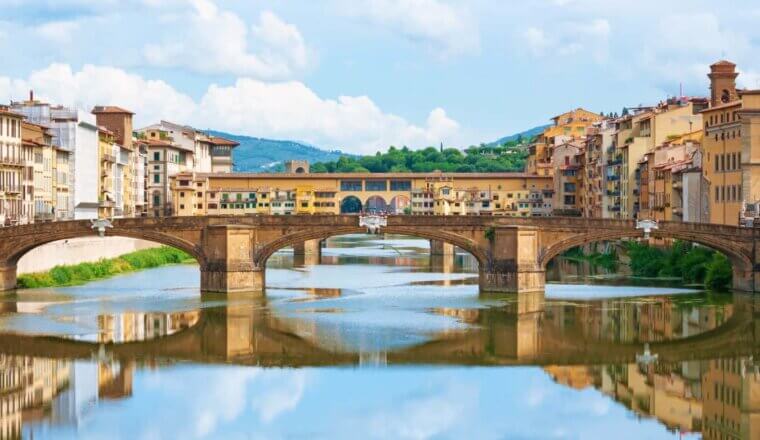
Where to Stay in Florence: The Best Neighborhoods For Your Visit
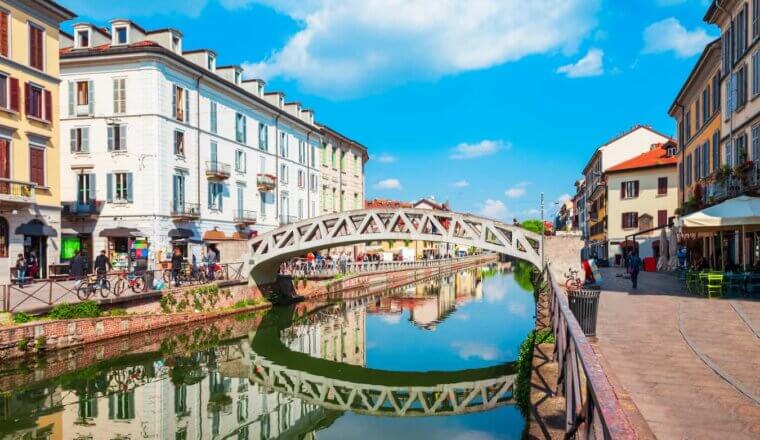
Where to Stay in Milan: The Best Neighborhoods for Your Visit
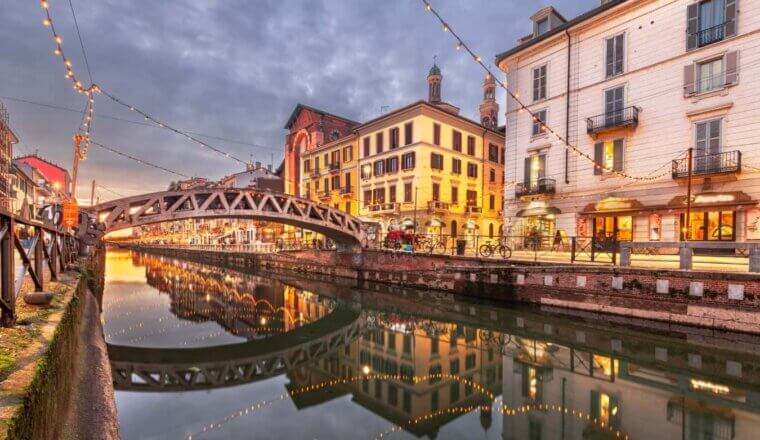
The 6 Best Hotels in Milan
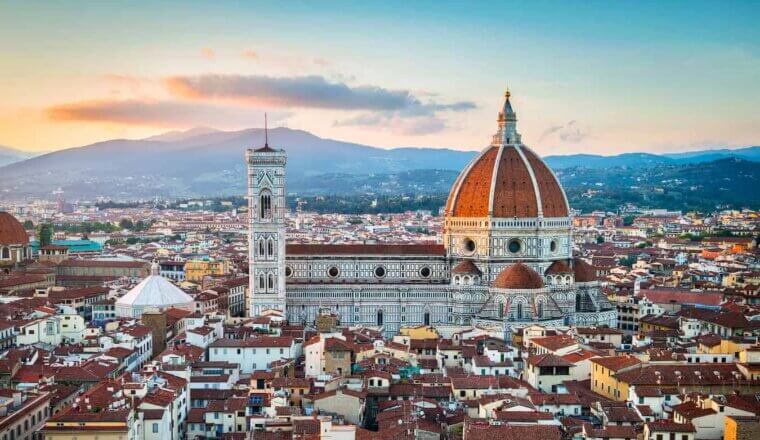
The Best Walking Tours in Florence
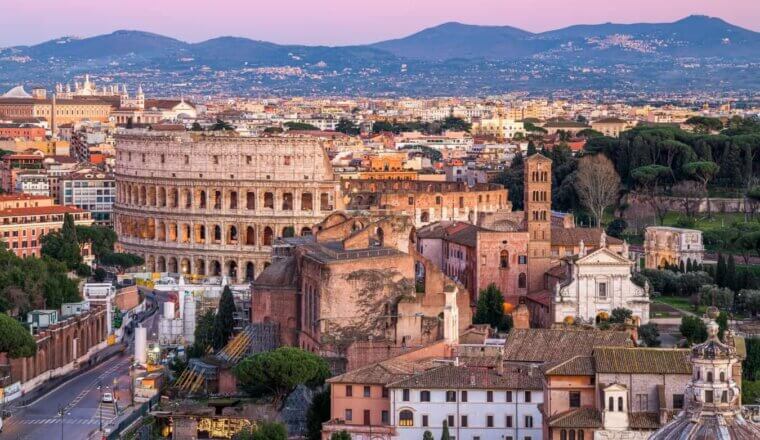
The 8 Best Hotels in Rome
Get my best stuff sent straight to you, pin it on pinterest.
- Where To Stay
- Transportation
- Booking Resources
- Related Blogs
- Getting around Italy: Transportation Tips
Book your individual trip , stress-free with local travel experts
- roughguides.com
- getting-around
- Travel guide
- Itineraries
- Local Experts
- Travel Advice
- Accommodation
Plan your tailor-made trip with a local expert
Book securely with money-back guarantee
Travel stress-free with local assistance and 24/7 support
Carlo DeSando
Wonderful Time in Italy We were covered from the moment we landed in Rome. The drivers were great, the connections were flawless, and it was well-planned a...
Unless you opt for a one-base holiday, you will probably find yourself travelling around Italy a fair bit. When planning on how to get around Italy, it is worth considering personal and public transport options. Both rail and bus services are good value and efficient. Regular ferries service the islands, and local buses link more remote areas. Internal flights can be worthwhile and even work out cheaper than the train for some of the longer journeys. Naturally, you’ll have most flexibility with your own transport. Discover the best way of getting around Italy and plan your trip with our travel guide.
Getting to Italy and getting around
Travel by train in italy, bus travel in italy, flying around italy, renting a car in italy, driving around italy, cycling in italy, motorbikes & scooters in italy, italy by boat, tailor-made travel itineraries for italy, created by local experts.

8 days / from 2622 USD
Experience the hit TV show 'The White Lotus' in Sicily
Stay in beautiful Taormina with gorgeous views of Mount Etna and discover Sicily, including famous filming locations. Go on exclusive wine tastings, discover the Greek theater in Taormina with a private guide, visit other Sicilian towns and enjoy the crystal clear water on this week-long trip.

8 days / from 3258 USD
Enchanting Italian Lakes
Experience the picturesque lakes of Northern Italy, including Lake Garda, Como, Lugano and Maggiore; explore the charming Borromean Islands – former favourites of Ernest Hemingway – and stroll the romantic streets of Verona and Milan. All of this, and much more, with this self-drive trip!

16 days / from 3258 USD
From Venice to Florence: A Grand Tour of Northern Italy
From the atmospheric canals of Venice and the picturesque coastline of Cinque Terre, to the trendy designer boutiques of Milan and the Renaissance-infused streets of Florence, Northern Italy has plenty to offer. Experience it all with this comprehensive trip.
Tailor-made trips for Italy
There are regular direct flights to Italy from the UK and the US . Airlines from Australia , New Zealand and South Africa fly via Asian or European cities. Rail connections with the rest of Europe are also good and link well into the national network.
Once in Italy, you’ll have a good choice of affordable and efficient transport options. Note that on Sundays and public holidays, the frequency of public transport can be heavily reduced or even non-existent, so it is important to check before you travel.
Getting around Italy by train is a great option. The Italian train system is pretty efficient and one of the least expensive in Europe. Ferrovie dello Stato Italiane runs trains under the brand name Trenitalia , operating a large network across the country. Sleeper trains connect the major Italian cities with Paris , Vienna , Hamburg and Barcelona .
Validating your ticket
All stations have yellow validating machines in which passengers must stamp their ticket. Passengers must validate their ticket before starting their journey. If your ticket is booked for a specific train, there is no need to stamp it. If in doubt, ask. Look out for the machines in the station or as you come onto the platform. Failure to validate your ticket can result in a hefty on-the-spot fine. Tourists who feign ignorance are not exempt.
Regional trains
Regional trains are the most economical, but can be very slow. No reservation is necessary, and there’s no need to buy in advance for these.
Le Frecce is the country’s swish high-speed train network offering daily connections between the main cities. Book tickets in advance for the best fares. Seat reservations are required for all these services. Even if you have a rail pass you’ll need to pay a €10 or €15 supplement.
Intercity and Eurocity trains
Intercity and Eurocity trains are fast and comfortable, connecting main towns. A number of Eurocity trains cross the border to connect with European cities.

High-speed Trenitalia Frecce trains © kaband/Shutterstock
Italo trains
Privately run high-speed Italo trains connect a number of destinations in Italy, from Bolzano in Alto Adige to Salerno in Campania . There are also a number of smaller privately run lines, using separate stations but charging similar fares to the FS trains.
Timetables and fares
Timings and route information are posted at train stations. Check the Trenitalia website for the latest schedules.
Fares are inexpensive. They are calculated by the kilometre and easy to work out for each journey. The timetables give the prices per kilometre. As a rough guide, a second-class one-way fare from Milan to Verona (1hr 50min) currently costs about €22 by Intercity, €13 on Regionale.
Return tickets
Return tickets are valid within two months of the outward journey, but as two one-way tickets cost the same it’s hardly worth bothering. Children aged 4–12 qualify for a fifty percent discount on all journeys. Children under four travel free.
Booking in advance
There are huge savings to be had by booking in advance online, especially for Le Frecce. As a rough guide, a Frecciarossa high-speed train from Rome to Milan costs from €45 for the three hour journey.
Rail passes
A rail pass is unlikely to be worthwhile for an Italy-only trip. Prices are low and as you need to have a reservation for the faster trains. The convenience of a pass is outweighed by the extra queues and booking fees.
Interrail and Eurail passes
Europe-wide InterRail and Eurail passes are accepted on the Trenitalia network. You will still have to book for certain trains and pay a supplement for travel on the Freccia trains. Children’s, youth and group tickets are available.
If you are travelling around Italy by train, it is more than likely you will need to use a bus at some point. Nearly all places are connected by some kind of bus service, but in remote towns and villages schedules can be sketchy and are reduced, or even non-existent, at weekends.
Bus terminals ( autostazione ) are often conveniently located next to the train station. In smaller towns and villages, most buses pull in at the central piazza.
Tickets for bus travel
Buy tickets before you travel from the bus station ticket office, or on the bus itself. On longer hauls, you can try to buy them in advance online direct from the bus company. To get off, ask Posso scendere? “The next stop” is la prossima fermata .
City buses are always cheap, usually costing around €1.20. Tickets are commonly available from newsagents and tobacconists. Once on board, you must validate your ticket in the machine at the front or back of the bus. The whole system is based on trust, though in most cities checks for fare-dodging are regularly made. Hefty fines are issued to offenders.

Alitalia plane at Milan's Malpensa airport © Alexandre Rotenberg/Shutterstock
Depending on where you’re travelling to, it may be worth considering travelling around Italy on internal flights. These can sometimes be cheaper and quicker than travelling by train. Budget airlines open and close every season and there are often special deals being advertised. You can save by shopping around and, as always, booking as far in advance as you can.
Domestic Airlines in Italy
- Air Dolomiti
- Blue Panorama
Car rental in Italy can be pricey, especially in high season and in smaller towns. In bigger cities there are savings to be made. By booking in advance and shopping around, you can rent a small car for a week for under £100. Local firms can be less expensive and often have an office at the airport. Generally, the best deals are to be had by arranging things in advance.
Information for Renting a Car in Italy
You need to be over 21 to rent a car in Italy. You will need a credit card to act as a deposit when picking up your vehicle. If booking with a small local company, be sure to check whether CDW is included in the price before booking. Sat nav systems are available to rent with cars from many outlets and as always, be sure to reserve in advance.
Camper Van Rental
Camper van or mobile home holidays are in Italy are growing in popularity. They are convenient, facilities in campsites are usually dependable, and more and more resorts have created free camper-van parking areas ( sosta camper ). Blurent , Comocaravan and Magicamper are among the companies offering reasonably new quality vehicles for rent. Prices are usually around €900 for a four-berth vehicle for a week in high season, with unlimited mileage.
Driving is one of the best ways to travel around Italy. It is a great place for a self drive holiday , though cities and their ring roads can be hard work. The roads are good and the motorway network is very comprehensive. Italian drivers are also less erratic than their reputation suggests.
Driving in cities should be avoided whenever possible as congestion, complex one-way systems and confusing signage can make it a less than relaxing experience. Out of the towns, there are stunning rural routes like the Passo dello Stelvio in the Ortles mountains, which many claim to be one of Europe’s best drives.
Traffic can be heavy on main roads and appalling in city centres. During rush hour, roads in and around the major cities can be gridlocked and are best avoided.
Although Italians are by no means the world’s worst drivers they don’t win any safety prizes either. The secret is to make it very clear what you’re going to do and then do it. A particular danger for unaccustomed drivers is the large number of scooters that can appear suddenly from the blind spot or dash across junctions and red lights with alarming recklessness.
Rules for Driving in Italy
Rules of the road are straightforward. Italians drive on the right and give way to vehicles coming from the right. The speed limits are 50km/hr in built-up areas, 110km/hr on dual carriageways (90km/hr when it’s raining) and 130km/hr on autostradas (110km/hr in the rain). For camper vans, these limits are 50km/hr, 80km/hr and 100km/hr respectively. Drivers need to have their dipped headlights on at all times when using any road outside a built-up area. Drinking and driving is illegal, so do not do it.
Zona Traffico Limitato
The majority of Italian towns and villages have a Zona Traffico Limitato (ZLT; restricted traffic area), where access is for residents only. These zones are marked by a red-rimmed circular road sign giving the hours and days of the limitation and are vigorously enforced, often by police on the ground as well as by cameras.
Legal requirements
If you’re bringing your own car, as well as current insurance, you need a valid driving license and an international driving permit if you’re a non-EU licence holder. It is important to carry your car documents and passport when driving as failure to provide them if stopped by the police, can result in a fine on the spot. It is also obligatory to carry a warning triangle and a fluorescent jacket in case of breakdown.
Snow tyre and chains
It is a legal requirement to have snow tyres or chains on board between mid-November and mid-April when travelling on motorways. You can incur a hefty fine if you are not suitably equipped.

Autostrada in Piemonte, Italy © Fabio Lamanna/Shutterstock
Motorway driving
The majority of motorways ( autostrade ) are toll roads. Take a ticket as you join the motorway and pay on exit. Paying by cash is the most straightforward option. Booths which accept cash are marked “cash/ contanti ” and colour-coded white. Avoid the yellow colour coded Telepass lane, for which you need a linked bank account.
Since other roads can be frustratingly slow, tolls are well worth it over long distances, but be prepared for queues at exits at peak times, and rates can mount up on a long journey.
Petrol Stations
Most petrol stations have someone who will fill the tank for you, with some giving the choice of self-service ( fai da te ). With the exception of the ones on motorways, they often have the same working hours as shops, meaning they’ll be closed for a couple of hours at midday, all day Sunday, and will close at around 7pm.
Self service
Outside opening hours, many petrol stations have a self-service facility for which you pay into a machine between the pumps by bank note or credit card. These are often not well advertised so you might need to go onto the forecourt to check.
In the event of a breakdown when travelling around Italy, call 116 or the ACI (the national motoring association) on 803 116, who will send someone out – this is expensive if you need a tow, unless you already have cover with a motoring organization in your home country. Alternatively, consult the Yellow Pages ( Pagine Gialle ) under “ Autoriparazioni ” for specialised repair shops.
Italians may seemingly park just about anywhere, but we advise not to follow suit. Parking attendants are especially active in tourist areas and if you park in a zona di rimozione (tow-away zone), then do not expect your car to be there when you get back.
Never leave anything visible in the car when you’re not using it. Certain cities have appalling reputations for theft. In Naples , some rental agencies won’t insure a car left anywhere except in a locked garage.
Most towns and villages have pay-and-display areas just outside the centre but these can get very full in high season. Lots of towns now operate a colour coded parking scheme:
Spaces in these zones (blue lines) have a maximum stay of one or two hours, cost around €0.70-1.50/hour, and are sometimes free at lunchtimes, after 8pm and on Sundays. You can usually pay at the meter or buy tickets from local tobacconists.
These spaces (white lines) are much coveted as they are free, so will be difficult to come by.
These areas (yellow lines) are for disabled drivers or delivery zones.
It is handy to have a mini clock like dial which you set and display in the windscreen when you park to indicate that you’re still within the allowed limit. Rental cars generally come with these, and some tourist offices have them too.
Secure car parks often come in the form of small, enclosed garages, which are universally expensive. These can cost up to €20 a day in big cities. A patrolled car park is probably the safes overnight option, especially if you have foreign plates.
Parking in the street
Finding a place can be much easier at night, but make sure you’re not parked on a street which becomes a market in the morning or on the day of the week it gets cleaned in the small hours, otherwise you’re likely to be towed.

Spectacular views - mountain biking around Lake Garda, Italy © gorillaimages/Shutterstock
Cycling is a very popular sport and mode of transport in much of Italy. Hotels and hostels will take your bike in overnight for safekeeping. On the islands, in the mountains, around the Italian Lakes , in major resorts and larger cities, it’s usually possible to rent a bike. In rural areas rental facilities are few and far between. Unless you are travelling to Italy for a cycling trip, public transport or renting a car, remain the best way to travel around Italy, especially over long distances.
Accommodation for cyclists in Italy
Serious cyclists might consider staying at one of a chain of hotels, such as Italy Bike Hotels . These hotels cater specifically for cycling enthusiasts. Each provide a secure room for your bike, a maintenance workshop, overnight laundry facilities, suggested itineraries and group-tour possibilities, a doctor on hand and even dietary consultation. Bikes can be taken on local and slower Regionale trains if you buy a supplemento bici (bike supplement) for €3.50, or for free in a bike bag. On faster Eurostar or equivalent trains cycles must be placed in bike bags.
It is possible to tour Italy by motorbike, but there are relatively few rental places. Mopeds and scooters are comparatively easy to find: virtually everyone in Italy can ride one and although they’re not really built for long-distance travel. They are ideal for shooting around towns and islands. Helmets are compulsory.
Boat and Hydrofoil are the best ways to travel to Italy’s islands from the mainland.
Italy has a well-developed network of ferries and hydrofoils operated by a number of different private companies. Large car-ferries connect the major islands of Sardinia and Sicily with the mainland ports of Genoa , Livorno, La Spezia, Civitavecchia, Fiumicino and Naples .
The smaller islands of the Bay of Naples islands, the Pontine islands, the Aeolian islands are usually linked to a number of nearby mainland towns. The larger lakes in the north of the country are also well served with regular boats and ferries in season, but are drastically reduced in winter.
Fares are quite expensive, and on some of the more popular services, to Sardinia , for example, you should book well in advance in summer. Remember that sailings are cut outside the summer months, and some services stop altogether. For full schedules and prices, check directferries.co.uk or the Italian website traghetti.com .
Top image: Travelling in italian Alps © Andrey Armyagov/Shutterstock
The Rough Guides to Italy and related travel guides
In-depth, easy-to-use travel guides filled with expert advice.
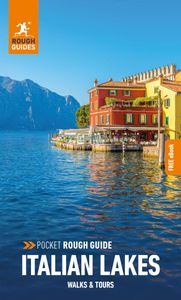
Travel advice for Italy
From travel safety to visa requirements, discover the best tips for traveling to Italy
- Eating and drinking in Italy
- How to get to Italy
- Shopping tips for Italy
- Sports and Outdoor activities in Italy
- Travel Tips Italy for planning and on the go
- Best time to visit Italy
- How to spend 7 days In Italy - 8 unique itineraries
- How To Spend 10 Days In Italy - 8 Unique Itineraries
- How To Spend 14 Days In Italy - 5 Unique Itineraries
- How to get from Rome to Florence
Find even more inspiration here

- Travel Tips
written by Rough Guides Editors
updated 05.04.2024
Ready to travel and discover Italy?
Get support from our local experts for stress-free planning & worry-free travels.
- Where to stay
- Travel advice
We’re on the road right now – join in on the fun and follow @thebrokebackpacker on IG!
- Meet the Team
- Work with Us
- Czech Republic
- Netherlands
- Switzerland
- Scandinavia
- Philippines
- South Korea
- New Zealand
- South Africa
- Budget Travel
- Work & Travel
- The Broke Backpacker Manifesto
- Travel Resources
- How to Travel on $10/day
Home » Europe » Italy » Itinerary
Italy Itinerary • MUST READ! (2024)
You are about to embark on the adventure of a lifetime to one the world’s most vibrant countries, with an array of attractions and some of the suavest locals in Europe! Every step you take in this fabulous country will be filled with beauty, art, and fresh excitement. Italy is an absolute hub for tourists, and it is easy to see what brings so many people from around the world to this country!
Italy has become known for its luxurious villas, delicious wines, Mediterranean seas, white sand beaches, and genius architecture. There is so much on offer in this country, and so many marvelous places to visit, that it can become difficult to plan your trip to such a country thriving with scenic adventure! It might be easier to ask yourself what not to do, instead of what to do – as every stretch of Italy is inviting and waiting to be explored!
Our Italy trip planner will ease the stress of navigating your way and finding the best spots to enjoy during your travels to this cultural and magnificent part of the world! From ancient temples to luminescent blue seas, you will be spoilt for choice!

Unlock Our GREATEST Travel Secrets!
Sign up for our newsletter and get the best travel tips delivered right to your inbox.
- Best Time To Visit Italy
Where To Stay In Italy
Italy itinerary, day 1 itinerary in italy, day 2 itinerary in italy, day 3 and beyond, day trips from italy, staying safe in italy, faq on italy itinerary, best time to visit italy.
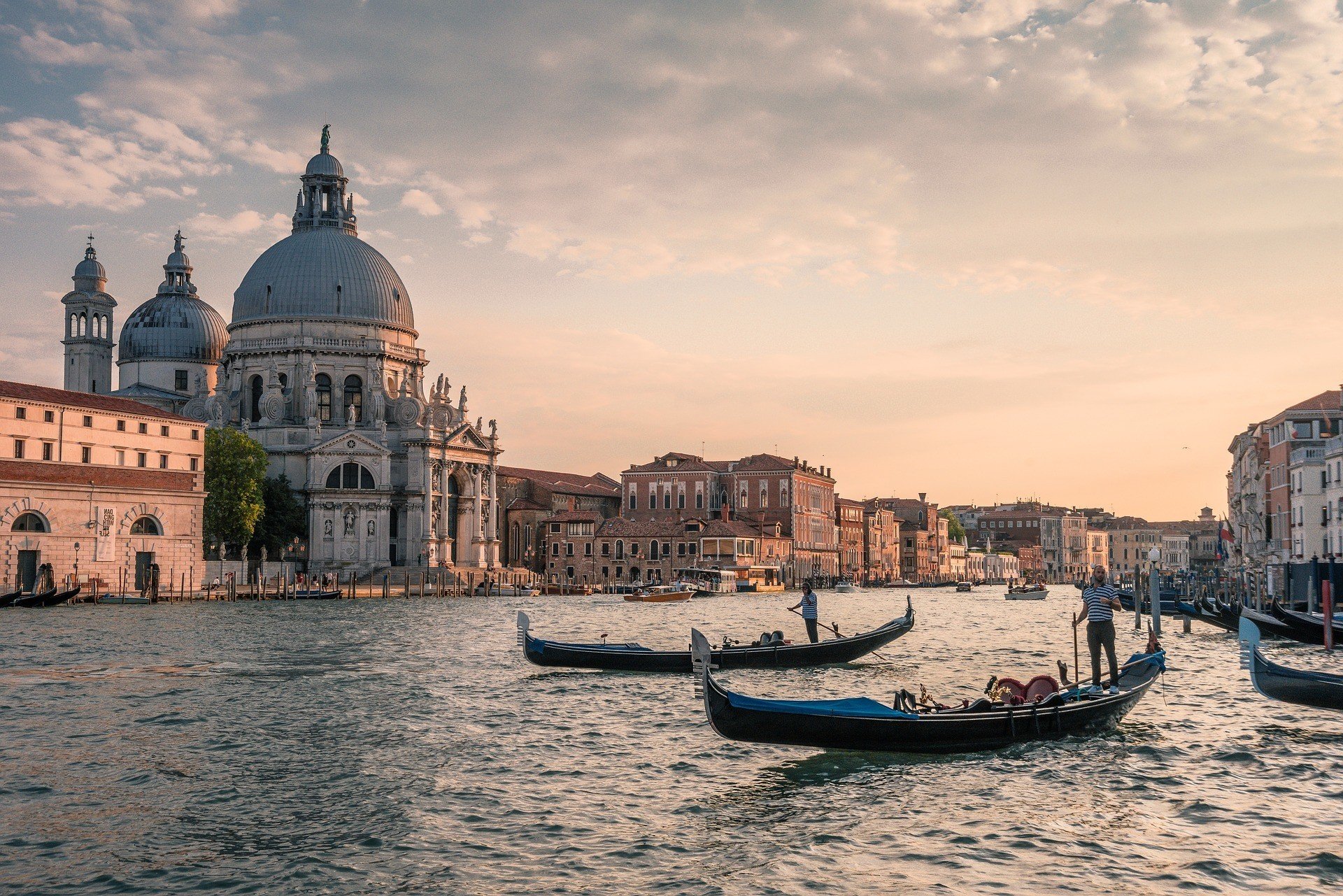
When is the best time to visit Italy ? has some of the most welcoming weather in the world! Every season is magnificent for a vacation in Italy , and this is something that makes the country even more beautiful. There are sunny and dry summers that can reach high temperatures, but the cool Mediterranean seashores are just so exquisite, making summer still very enjoyable.
Winters are wet and cool, and the mountain landscapes get lots of snowfall. The Dolomites, as well as the whole of the Alps, become a dream come true to snow-sport lovers. It is the perfect time to visit for one incredibly scenic ski trip!
Some of the best seasons to visit are between April to May, and September to October. During these phases, the sun is out but moderate, making it ideal to chill and sightsee! June to August is the peak visiting season, so prices skyrocket as do the temperatures.
Do check out our Italy packing list which will help you to pack and dress effectively whatever time of year you decide to visit.
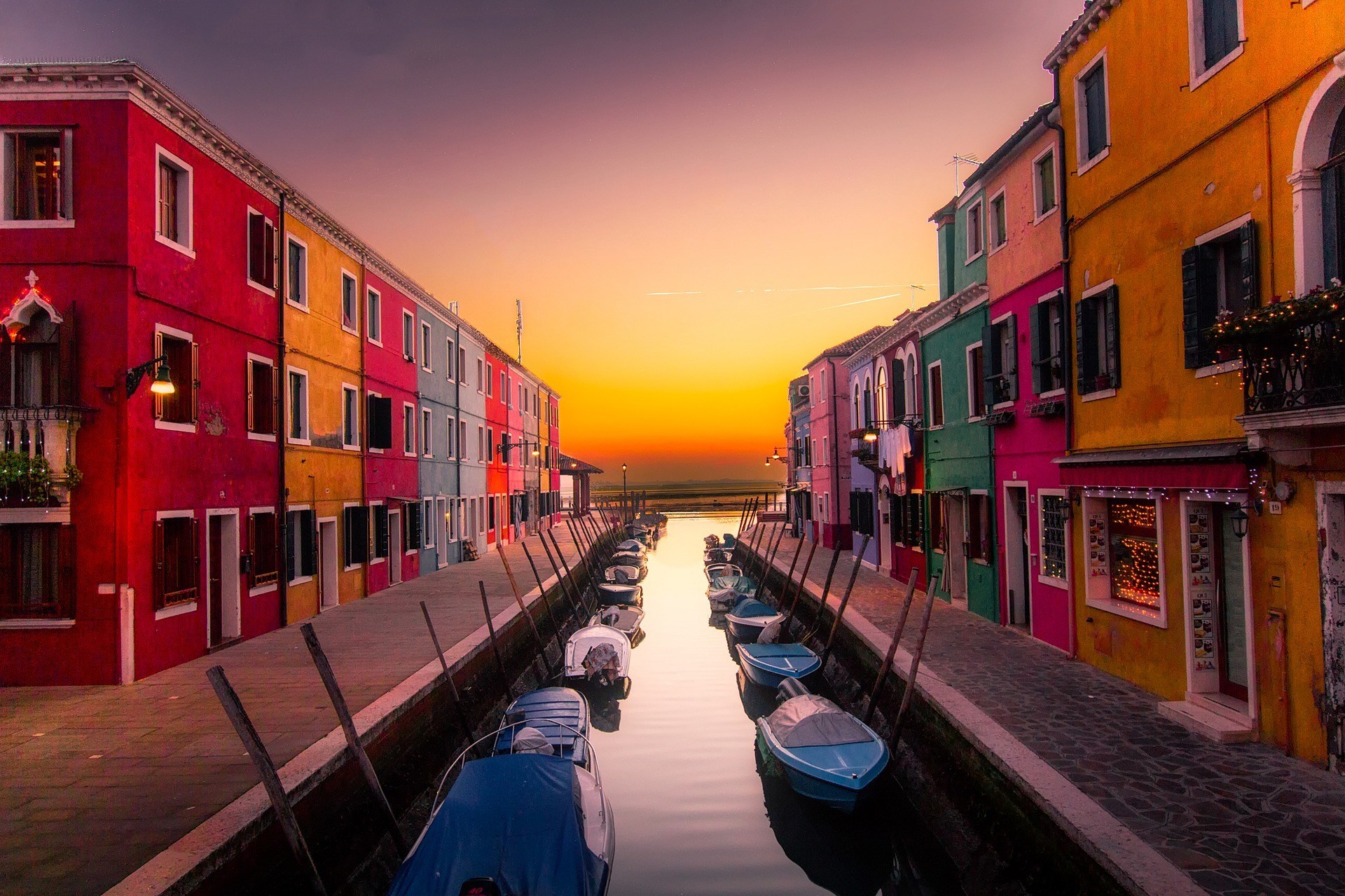
Italy’s neighborhoods still encapsulate so much of this country’s rich heritage! There are so many upbeat, scenic, and often romantic cities to stay in when you go to Italy. Every neighborhood has something different to offer, but the most common theme is olden-day buildings, unique structures, friendly people, and lots of funky restaurants!
Choosing where to stay in Italy obviously depends on what exactly you want to see.
Trastevere is found in Rome and is a historical city that has become known for having narrow, cobblestone alleyways, as well as beautiful medieval structures. This neighborhood has a calm atmosphere and is found along the banks of the Tiber River. The streets are full of boutiques, old-fashioned stores, eccentric cafes, and breathtaking architecture! Nightlife in this part of Italy is very vibrant and breaks the more relaxed mood of daytime. Rome is home to some of the best festivals in Italy. One of the best historical things to see whilst venturing Trastevere is the famous basilica churches! Some of the best hostels in Rome are found here.
Piazza Delle Erbe is an extremely charming part of fair Verona! Buildings from the Renaissance line this popular neighborhood, and there are many Greek-God statues to be admired during your visit here. If you want to know where life is happening, then you will find your answer in Piazza Delle Erbe’s Plaza, where there are shops, restaurants, and plenty of stalls! Here you get the unique opportunity to experience a cup of delicious coffee whilst viewing the 13th-century Madonna Verona in the center of this plaza.
Cannaregio is located in ‘the sinking city’ of Venice, and is one of the most populated neighborhoods in the city! Here you can walk through Romanesque-style narrow streets, purchase the best-baked goods, enjoy the markets and check out some of the local churches. As Venice was one of the first Jewish ghettos in Europe, it is fascinating to take some time out to see the Museum of Jewish Art and the Judaica shops!
Check out one of the following neighborhood guides for some of our favorite Italian cities!
Cinque Terre
Amalfi Coast
Best Hostel in Italy – Generator Rome

One of the very best hostels in Italy is the Generator Rome. Discovery historical and ancient backstreets, and find yourself close to hubs that offer street culture, art, and amazing food! The Generator Rome is only a short walking distance to the Roma Termini station, as well as one of the best attractions, The Colosseum. The interior design of this hostel is outstanding and adds a special touch to your stay.
Best Budget Hotel in Italy – Camping Village Jolly
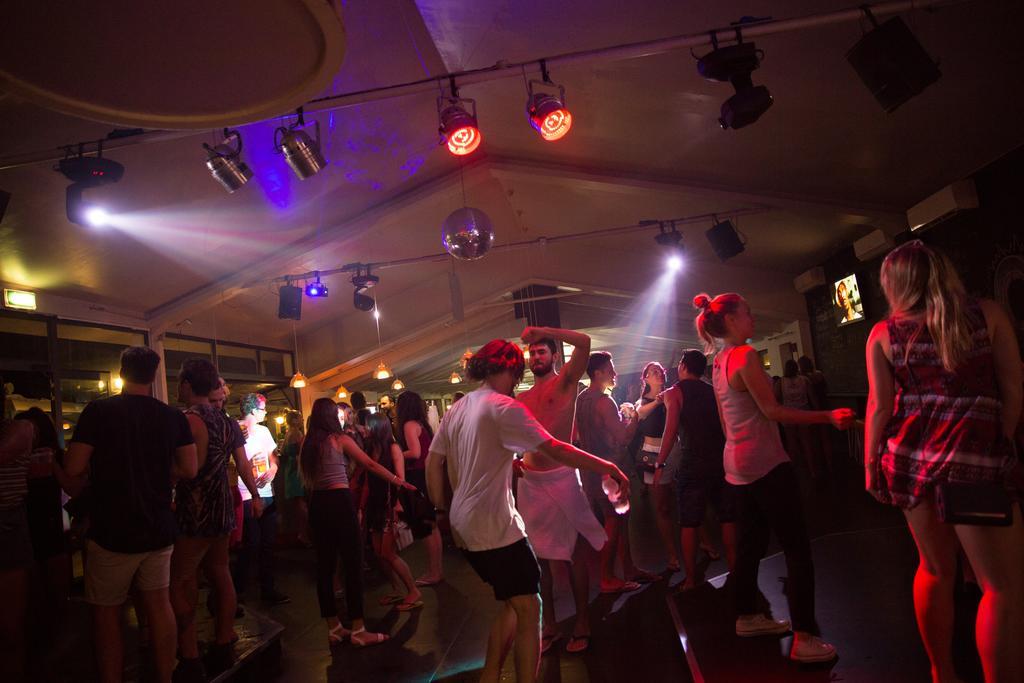
As well as being affordable, this hotel has a swimming pool, and the staff have lots of insider information which they offer at the reception desk. You can buy your fresh groceries at the store on-site, and even lounge for a drink at the bar after a long day or have yourself a tasty ice cream. If you feel peckish at night, then the à la carte restaurant is perfect for you to have an easy dinner!
Best Luxury Hotel in Italy – Belmond Grand Hotel Timeo
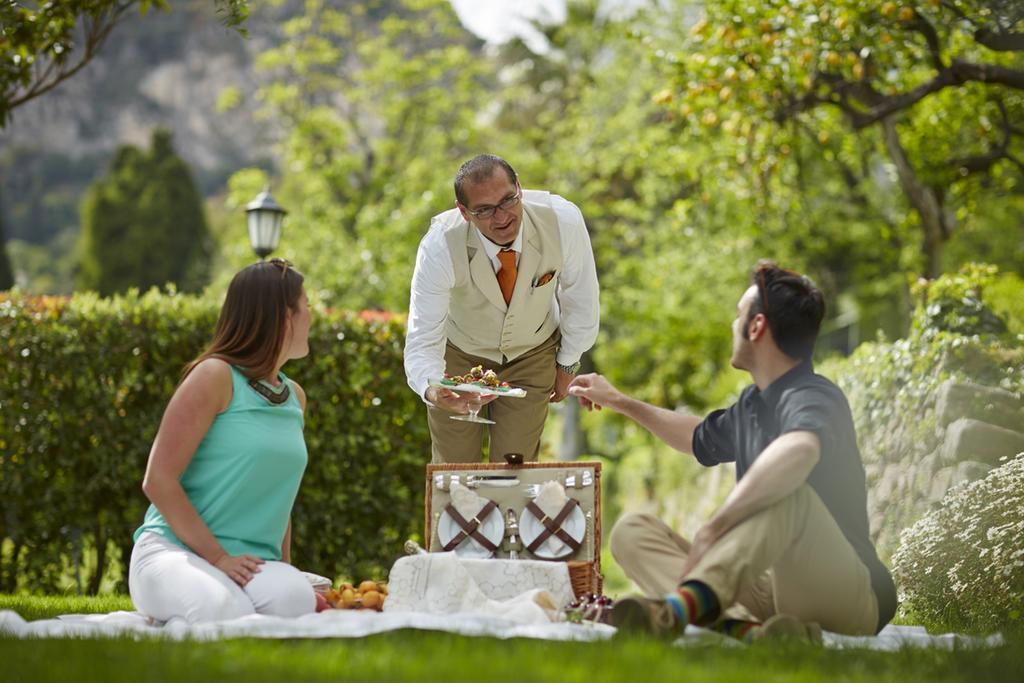
Situated amongst some of the most gorgeous mountain landscapes, and also opposite the Greek Theatre, the Belmond is in one of the most perfect places for a lavish trip! Taormina’s Belmond Grand Hotel Timeo has mesmerizing panoramic views of Mount Etna and the Sicilian Coast.
You can also treat yourself at the spa, and sunbathe at the pool. It features an outdoor pool, and spa. Some of the suites also have magnificent views of the sea! Other suites have a view of the hotel gardens so you can capture the essence of paradise whilst looking out at the magnolias, cypress and palm trees. Everything you can dream of is provided here at this 5-star hotel!
Curious to learn more ? You can find epic accommodations in Taormina neighborhoods . You’re sure to have the best stay!
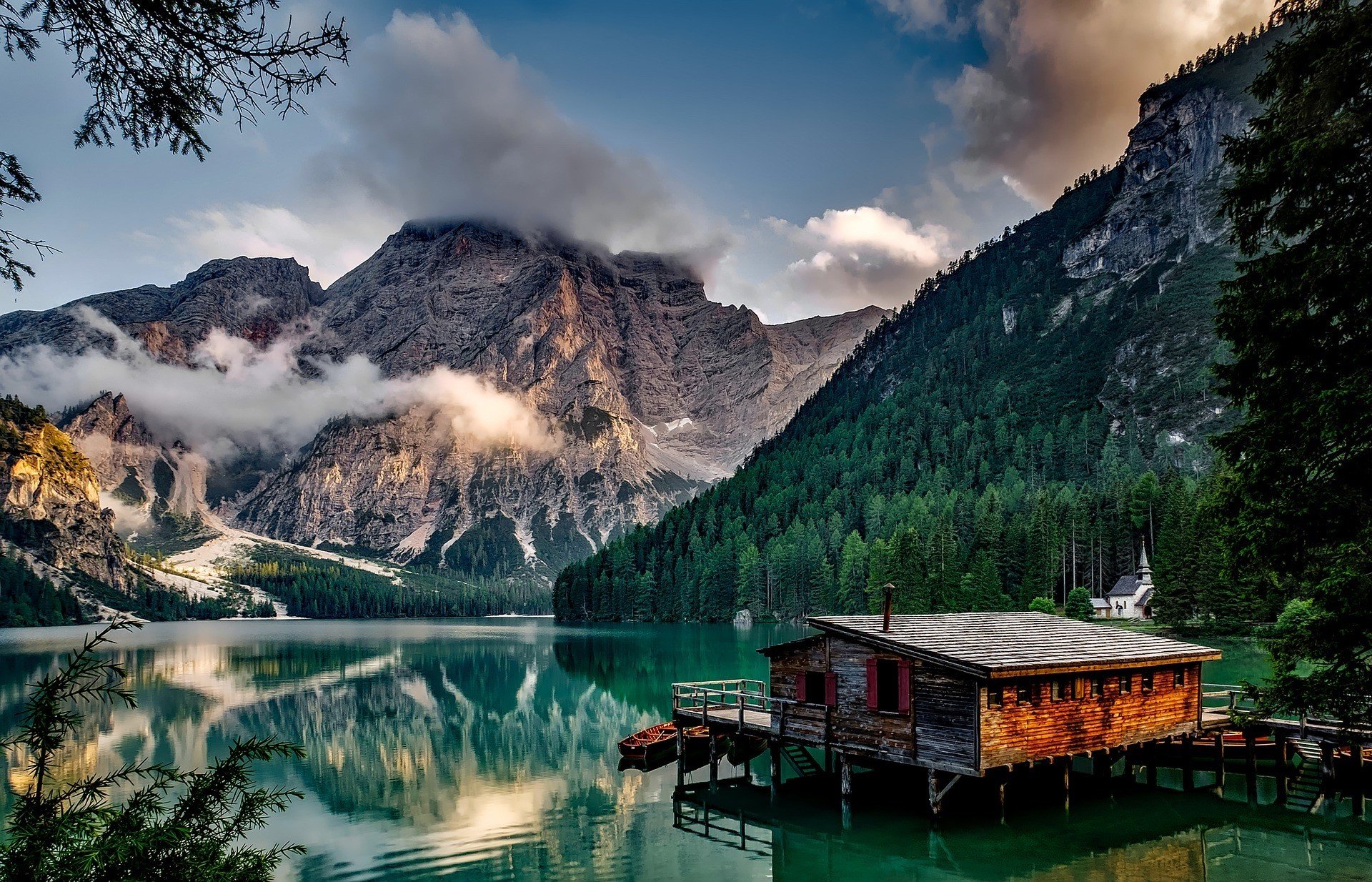
Using trains is by far the cheapest and most easy way to travel in Italy, and many of the major cities are connected to one another. Italian high-speed trains are operated by both Trenitalia and Italo. These trains link Turin, Bologna, Florence, Naples, Salerno, Milan, and Rome.
You can also rent a car during your stay. EU driving licences are valid but otherwise, you will need to get your hands on an International Driving Permit, and it’s a good idea to keep your original Driver’s License with you too. If you want to rent a bike instead, then that’s also a good idea and your permit will work for those too!
Considering that Italy is made up of 116,000 square miles, with 20 regions (two of which are islands, Sardinia and Sicily) then flying from either north to south, or south to north is much more time saving and sometimes even cheaper! Air Italy is one of the more affordable flight companies that you can use
When walking around Italy, just be sure to have your camera and comfortable walking shoes. The streets are remarkably scenic, so walking from place to place will be an adventure in itself! This is a really awesome way to enjoy the street stalls and meet locals.
The Sistine Chapel | The Pantheon | The Siena Cathedral | The Leaning Tower of Pisa | The River Arno
OK so this Day 1 itinerary is very ambitious and has been designed for people who are short on time but not on cash. To get this itinerary done you will need to start early and finish late. You will need a personal car to get you from Rome to Sienna to Pisa and will need to pay to skip the line to get to the Sistine Chapel. To complete it, you will need to keep moving.
Ideally, you would split this over 2 days.
Stop 1 – The Sistine Chapel
- Why it’s awesome: Michelangelo created jaw-dropping paintings on the large ceilings and the tall walls of this Vatican site!
- Cost: Entrance Fee is €15 ($17)
- Food Recommendation: Get yourself a wonderfully crispy pizza from Alice Pizza! You will get value for money and enjoy premium square slices. As the originators of the phenomenon of pizza, no other country does it better.
The world-famous chapel showcases commissioned art pieces from Pope Julius II, and Michelangelo himself painted the vault of the chapel! The creative genius is responsible for most of the in-depth and awe-inspiring paintings that adorn The Sistine Chapel, and he took years upon years to complete them, from 1508 to 1512 to be exact.
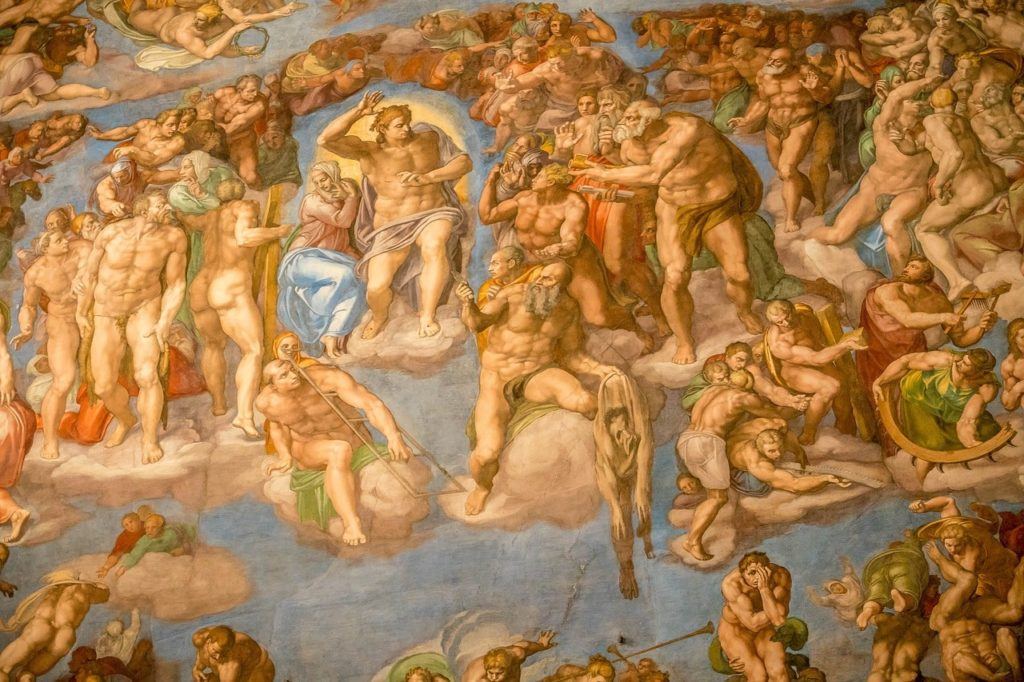
Michelangelo presented original and unprecedented art that understandably revolutionized the world of western art from that day forward! These frescoes are extraordinary and capture the soul of Italy’s religious history, whilst beguiling viewers from all over the world! Art critics have declared Michelangelo’s iconic work as being one of the top works in the history of painting. The massive size of the figures painted on the ceiling and the challenge of applying paint to a curved surface have made these frescos an astounding and exceptional creation!
High Renaissance artwork, a breathtaking chapel, and insurmountable historical lineage all make The Sistine Chapel a treasure trove of brilliant site seeing and a perfect way to begin your unforgettable journey of Italy!
Day 1/Stop 2 – The Pantheon
- Why it’s awesome: The Pantheon shows off Rome’s most incredible and genius interior architecture!
- Cost: Free entrance
- Food Recommendation: Have a lovely and hearty meal at The Pantheon Restaurant, Di Rienzo. Sit and relax whilst enjoying a glass of wine, we suggest ordering the Spaghetti with Clams for an authentic taste of Italian flavor!
Roman architecture has been renowned for its ability to withstand the years while maintaining the original structure, and The Pantheon is a prime example of the brilliance of Roman architecture! This monument has been standing for over two thousand years and, despite its ancient age, it is still standing tall – even though the gilded bronze roof tiles were removed by Pope Gregory III to be used for cannons and to create an altar in St Peter’s Church!
The Pantheon has also survived a fire in 80 AD and was rebuilt in a way that provides us with an insight into the complex and high technical mastery of Roman builders. The most prevalent feature of The Pantheon is its 43-meter dome, which is a superior accomplishment in Roman interior architecture and is suspended from supports that are hidden inside the walls. Talk about mysterious!
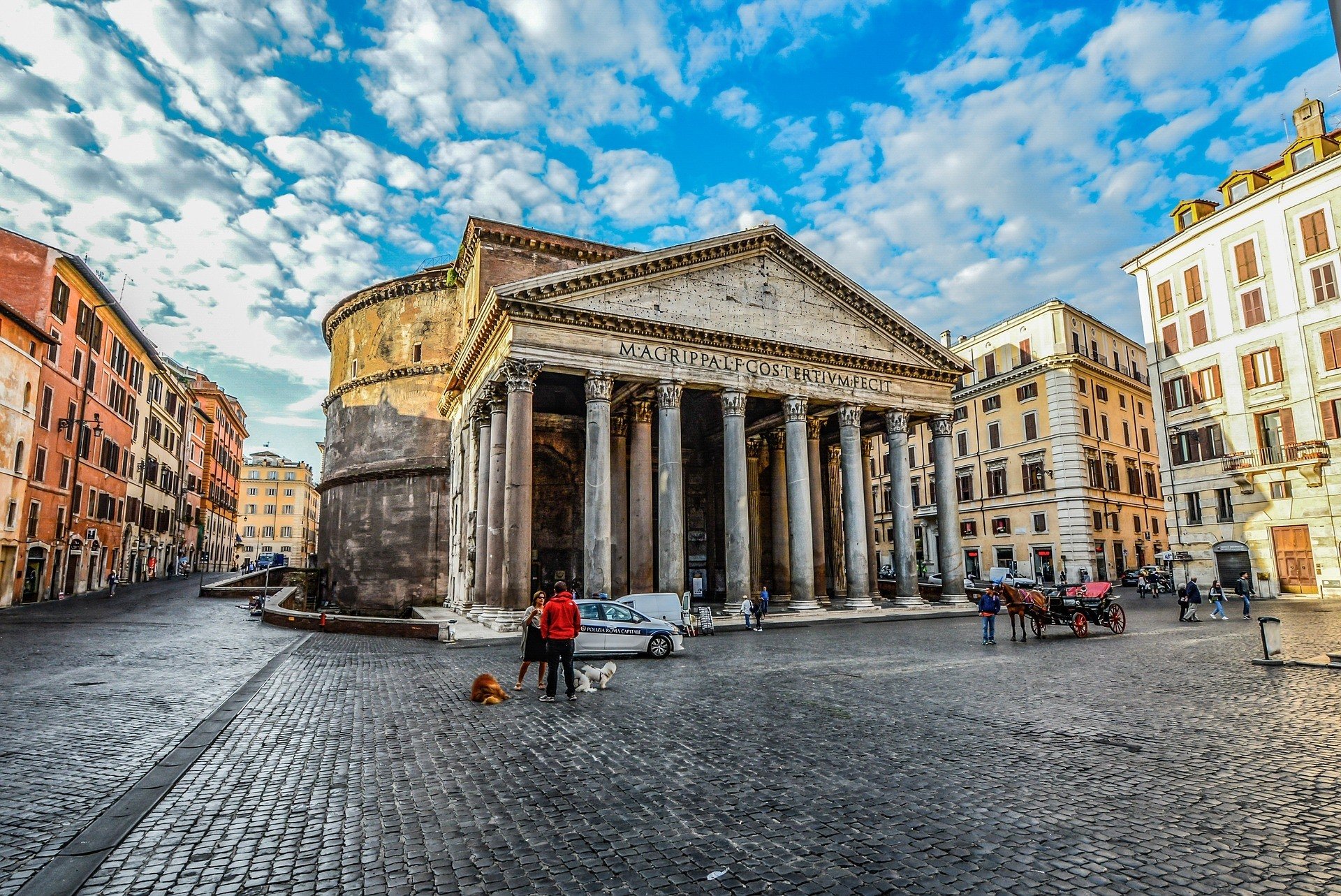
The 9-meter central opening in the dome is The Pantheon’s only light source, creating an ambient atmosphere. The Romans created this structure in a way that both the height and the diameter are the same proportion, creating a sort of architectural harmony in the building.
The gardens have been used as a burial place for the Italian kings and other famous Italians, such as the painter Raphael.
You will be immersed in an endless display of ancient Roman beauty and architectural prestige!
Insider Tip: Be careful of the floors when it’s been raining, as they get very slippery!
If you need some ideas for accommodation in Rome, consider checking out our guide on the best vacation rentals in Italy .
Day 1/Stop 3 – The Siena Cathedral
- Why it’s awesome: The Siena Cathedral is a marvel, built entirely of marble and complete with golden touches!
- Cost: Entrance fee is €5 – €8 ($6-$9)
- Food Recommendation: The Ristorante Numero Unico offers scrumptious meals and scenic settings. Have yourself a meal packed with different flavors, served with a beautiful presentation! The T-bone steak is one of their best and most popular dishes.
A visit to Siena’s ancient and gothic cathedral is an adventure in itself! Otherwise known as The Duomo di Siena and this temple has become one of religious fervor to the people of Siena. The interior is breathtaking and covered with incredible works of renaissance-themed artwork. From the roof of The Siena Cathedral, you can experience an awe-inspiring view of Siena!
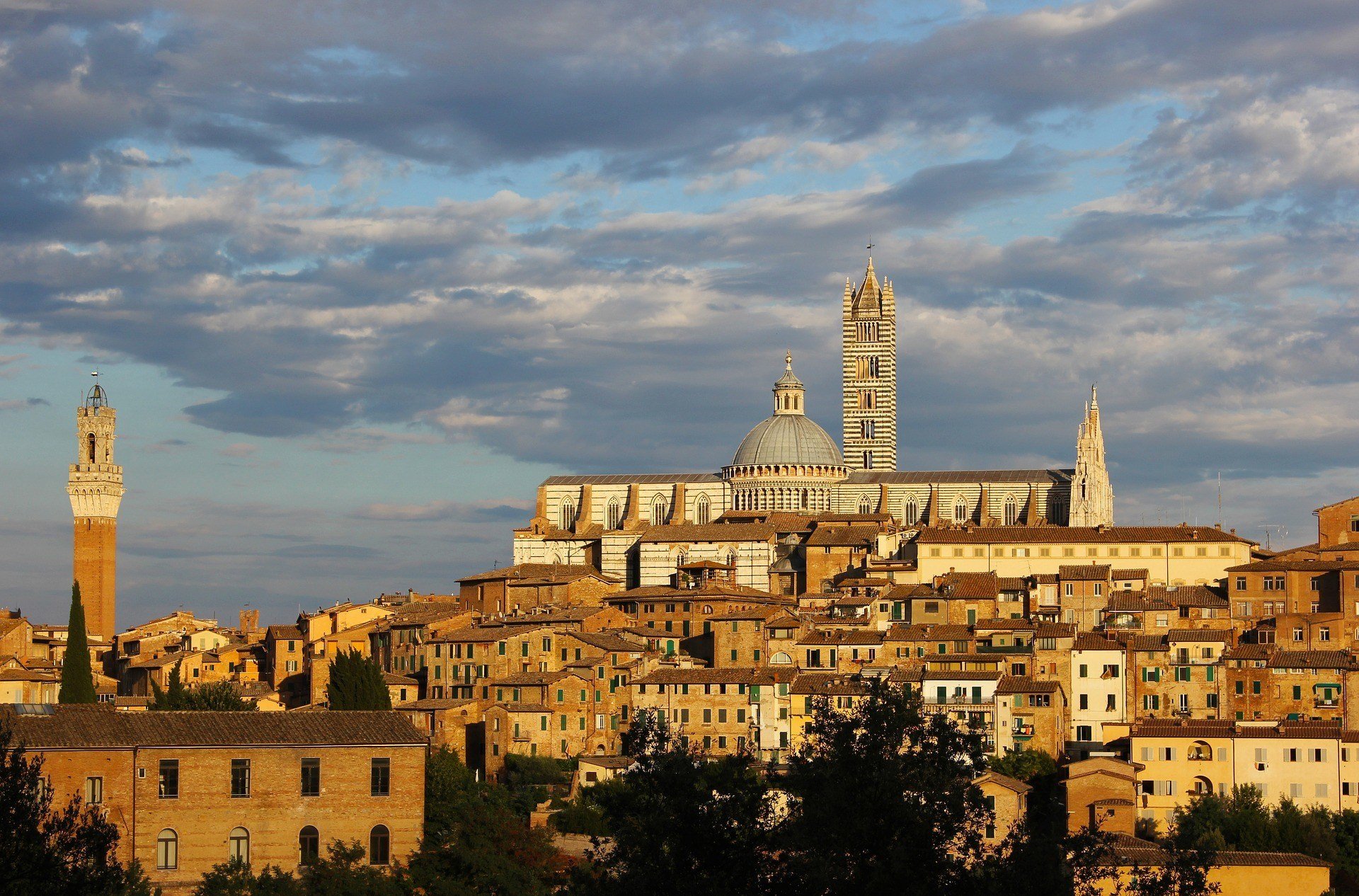
From The Cathedral Square, the Duomo’s presence is imposing and lavishly decorated, dominating the square with its sheer elegance and light! Made entirely from black, white and pink marble, and decorated with the rich golden decor, The Siena Cathedral is a marvel to behold! This building is one of the most important gothic edifices of Italy, and it took over two hundred years to be fully constructed.
The Siena Cathedral is beautiful inside and out, featuring work of Italy’s most famous and acclaimed artists from that era, such as Nicola and Giovanni Pisano, Donatello, Pinturicchio, Lorenzo Ghiberti, and Bernini. One of the most famous paintings that are showcased here is the Museo dell’Opera del Duomo. This magnificent cathedral is fascinating and by far one of the most impressive features in Siena!
Day 1/Stop 4 – The Leaning Tower of Pisa
- Why it’s awesome: This tower was built by a team of different architects over many years, and still stands even though it continues to tilt!
- Cost: Entrance fee to walk to the top is €18 ($24)
- Food Recommendation: Have a light meal at The Ristoro Pecorino, a quint and local cafe found close by. Their food is delicious and savory. They also happen to serve some of the best-brewed coffee!
The leaning tower of Pisa has gathered attention from the world, and has such an effect that makes this building look like it is defying the very nature of gravity! The ‘leaning’ has been due to the fact that after the first of the three floors was built by the architect Bonanno Pisano in 1178, the tower has begun to bend 5cm to the southeast.
100 years later, another architect by the name Giovanni di Simone began his attempts to compensate for the inclination of the structure. He built four vertical floors, but unexpectedly the bell tower still bent – and so the construction stopped again!
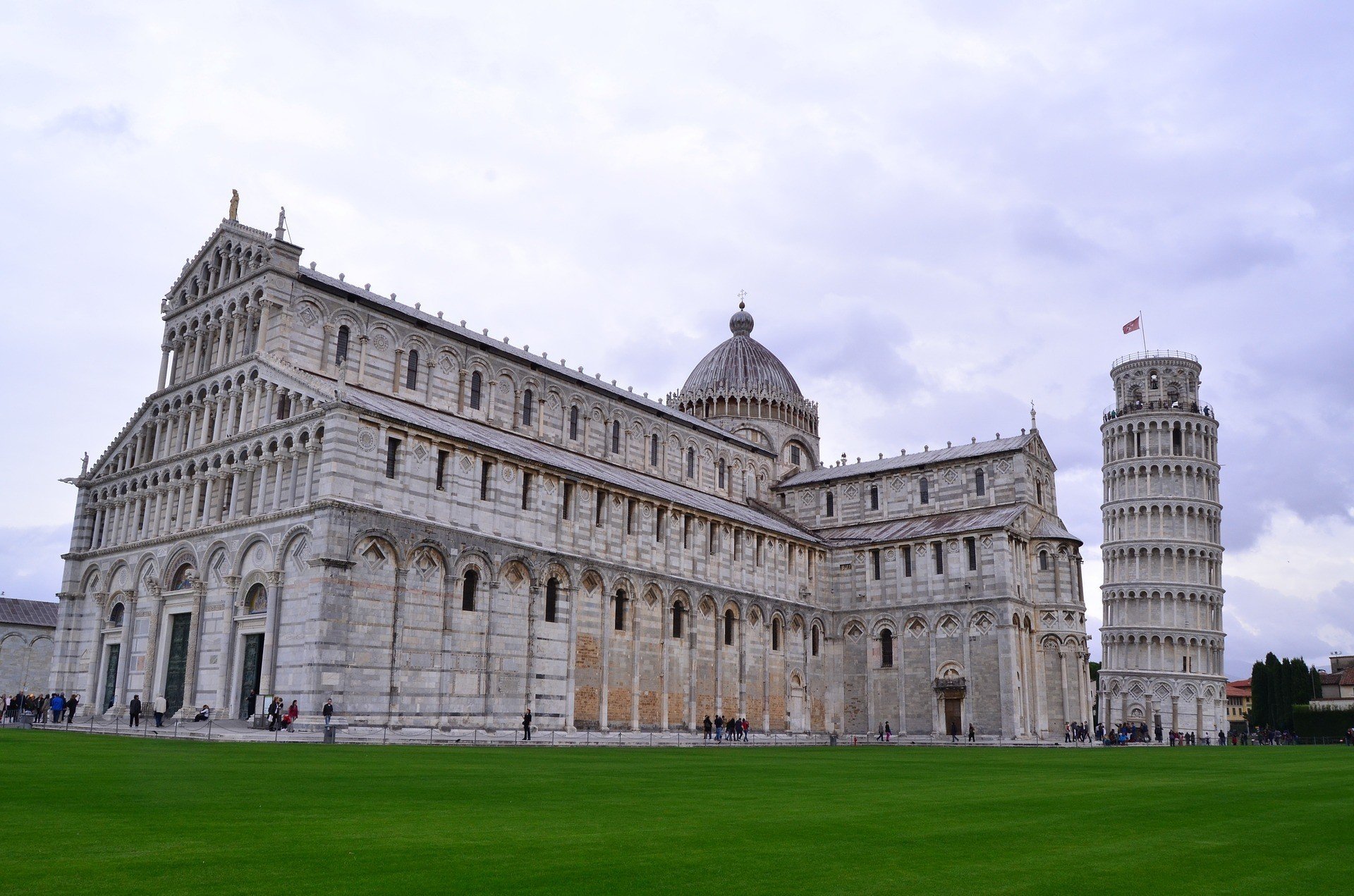
Lastly, came in Tommaso Pisano to complete the work of the bell tower is 1372, despite the continuation of the sideward plummet. A remarkable building expert named Alessandro Gherardesca then made the first restoration of the tower’s foundation and replaced it with marble.
Thanks to all of these creative and innovative thinkers, we now have the tremendous Leaning Tower of Pisa! This structure is a spectacle and insanely beautiful on the inside, with marble finishes and white pillars. Explore a building that took years to be completed, and continues to stand even though it tilts about 1 cm every year!
Insider Tip: Lines can be crazy, so make sure to book your ticket in advance!
Day 1/Stop 5 – The River Arno
- Why it’s awesome: It is one of the primary and most important rivers in the whole of Italy!
- Food Recommendation: Caffe Dell Oro (Gold Coffee) is an Italian bistro that specializes in traditional Italian cuisine, so you are in for some really diverse and new meals. We suggest going for the seafood options, especially the grilled sea bass. Whatever your stomach feels like, each meal is cooked to perfection!
The River Arno is one of the main rivers in Italy, even the city of Pisa was built around this waterway! The part of the River Arno that runs through Pisa provides a captivatingly beautiful landscape, and is an amazing place to simply walk along at night! Under the stars, watch as the moonlight reflects off the river surface, along with the lights from cafes and cars driving by.
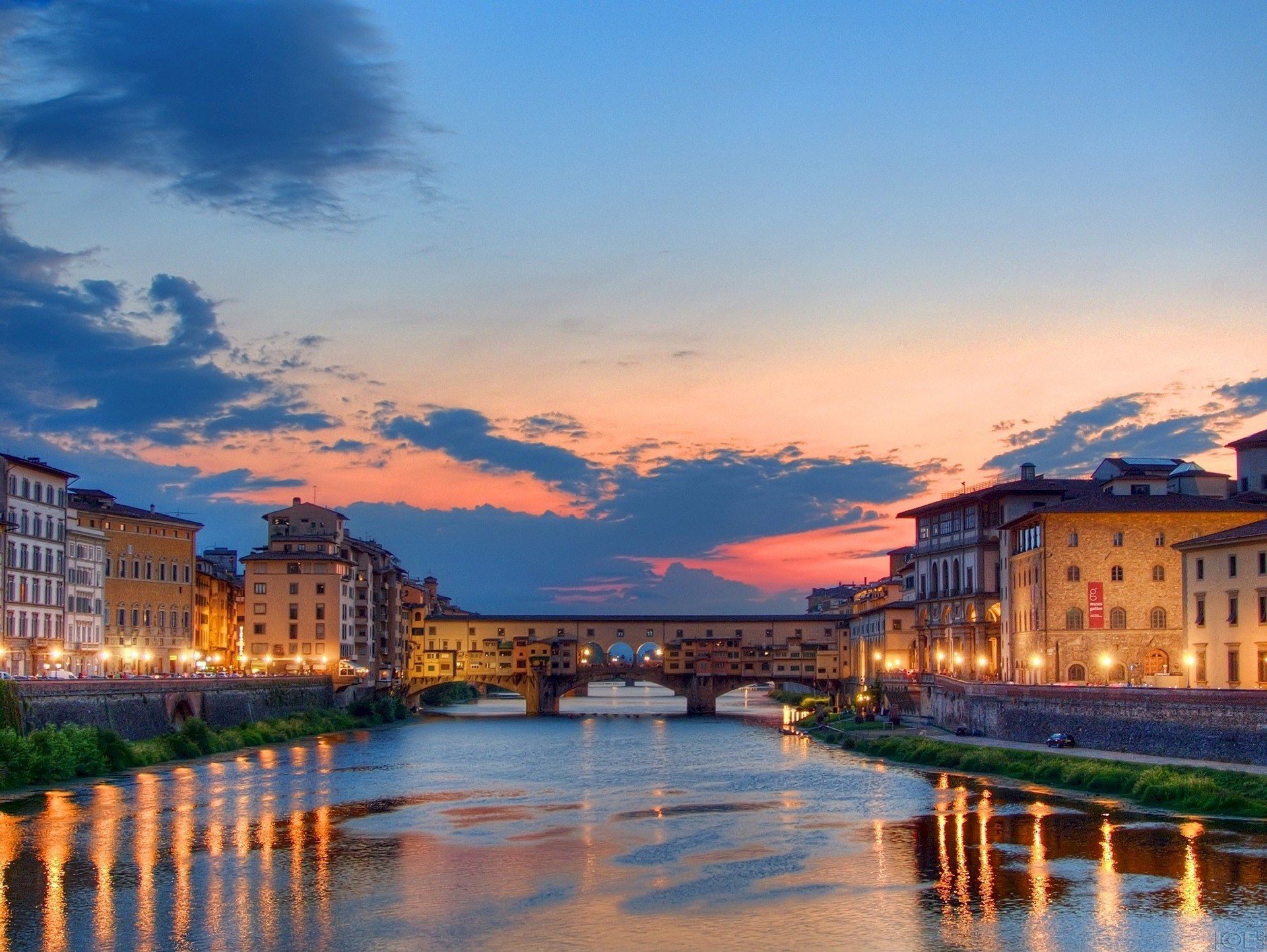
Five absolutely gorgeous bridges cross over the Arno from central Pisa, and both the Lungarno Mediceo and Galileo Galilei are found parallel to the river. The local old-school houses and renaissance-themed architecture create a marvelous backdrop and this part of Pisa is truly picture perfect!
You will remember the magic from this moment forever, there is no better way to end of your first day traveling in Italy!
Insider tip: Learning some basic Italian, such as Ciao for hello and goodbye, will be incredibly helpful during your trip! The locals are some of the most welcoming people in Europe, and they really appreciate it when tourists show that they have attempted the home language.

Wanna know how to pack like a pro? Well for a start you need the right gear….
These are packing cubes for the globetrotters and compression sacks for the real adventurers – these babies are a traveller’s best kept secret. They organise yo’ packing and minimise volume too so you can pack MORE.
Or, y’know… you can stick to just chucking it all in your backpack…
The Uffizi Gallery in Florence | San Petronio Basilica in Bologna | The Gardens Of Giardino Giusti in Verona | The Grand Canal in Venice | Lido Beachfront in Venice
The day 2 itinerary is just as hectic as day 1. Whilst these 3 cities are relatively close together, traffic congestion can make the journeys longer than we would like. Again, you will need to start very early , have a private car and skip the line at Uffizi. You will have no time to hang around Bologna and may have to cut the gardens of Giardino Giusti.
Stop 1 – The Uffizi Gallery in Florence
- Why it’s awesome: This gallery hosts the most famous and beautiful artworks all the way from the Middle Ages to the present Modern Day!
- Cost: €6 – €12 ($7 – $13)
- Food Recommendation: Vinaino Fiorenza offers simple, yet gourmet Tuscan style food, specializing in special bread and rolls. The Panzanella is a great dish to have for a breakfast that is jam-packed with different tastes!
The Uffizi Gallery entirely takes up the first and second floors of a large building constructed between 1560 and 1580, originally designed by Giorgio Vasari. The architecture of the building is art in itself, but when you embark on your adventure inside the gallery you will be lost in a world of fine art and ancient history!
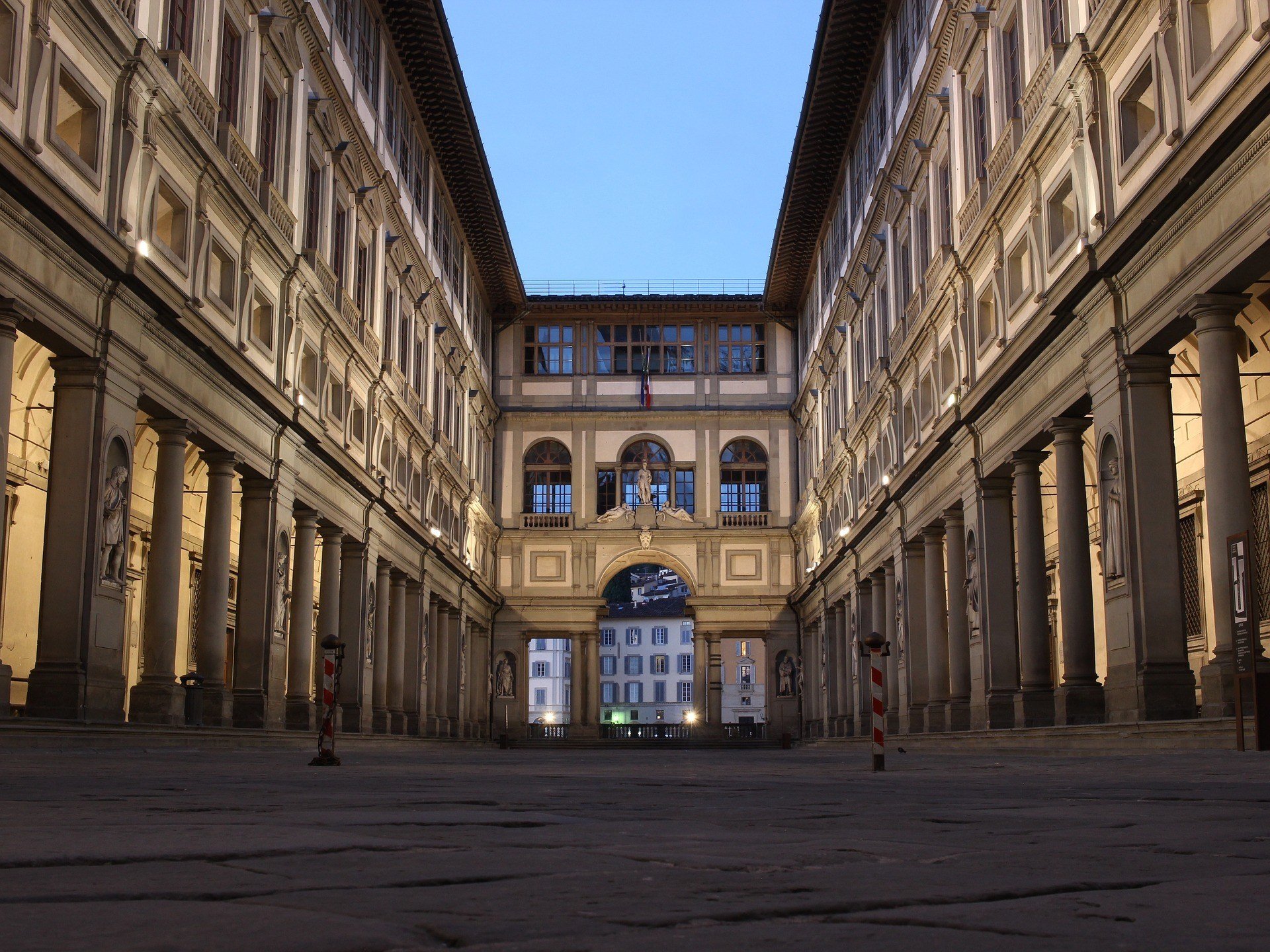
The gallery is famous worldwide for the outstanding collections of ancient sculptures and paintings that it keeps, some that are dated back to the Middle Ages and some from the days we now live.
There is already so much splendor encapsulated from the paintings, but the gallery also prides itself on its collections of priceless ancient statues and busts that decorate the corridors! The Uffizi Gallery is a must-see landmark attraction in Italy. For an in depth review of Florence, read our Florence travel guide.
As this itinerary is intense, you will need be there by 9am to restrict yourself to seeing the masterpeices only. This can be done in 2 hours so you can out and on the road by midday.
Day 2/Stop 2 – San Petronio Basilica in Bologna
- Why it’s awesome: It is the 10th largest church in the entire world!
- Cost: Entrance is free and it is €2 ($3) to take photos
- Food Recommendation: Botanica Lab Cafe is the first Bistro in Bologna, and is striving to create healthy meals for a healthy body! Enjoy all of their vegan food and shakes. We recommend tasting one of their fresh croissants.
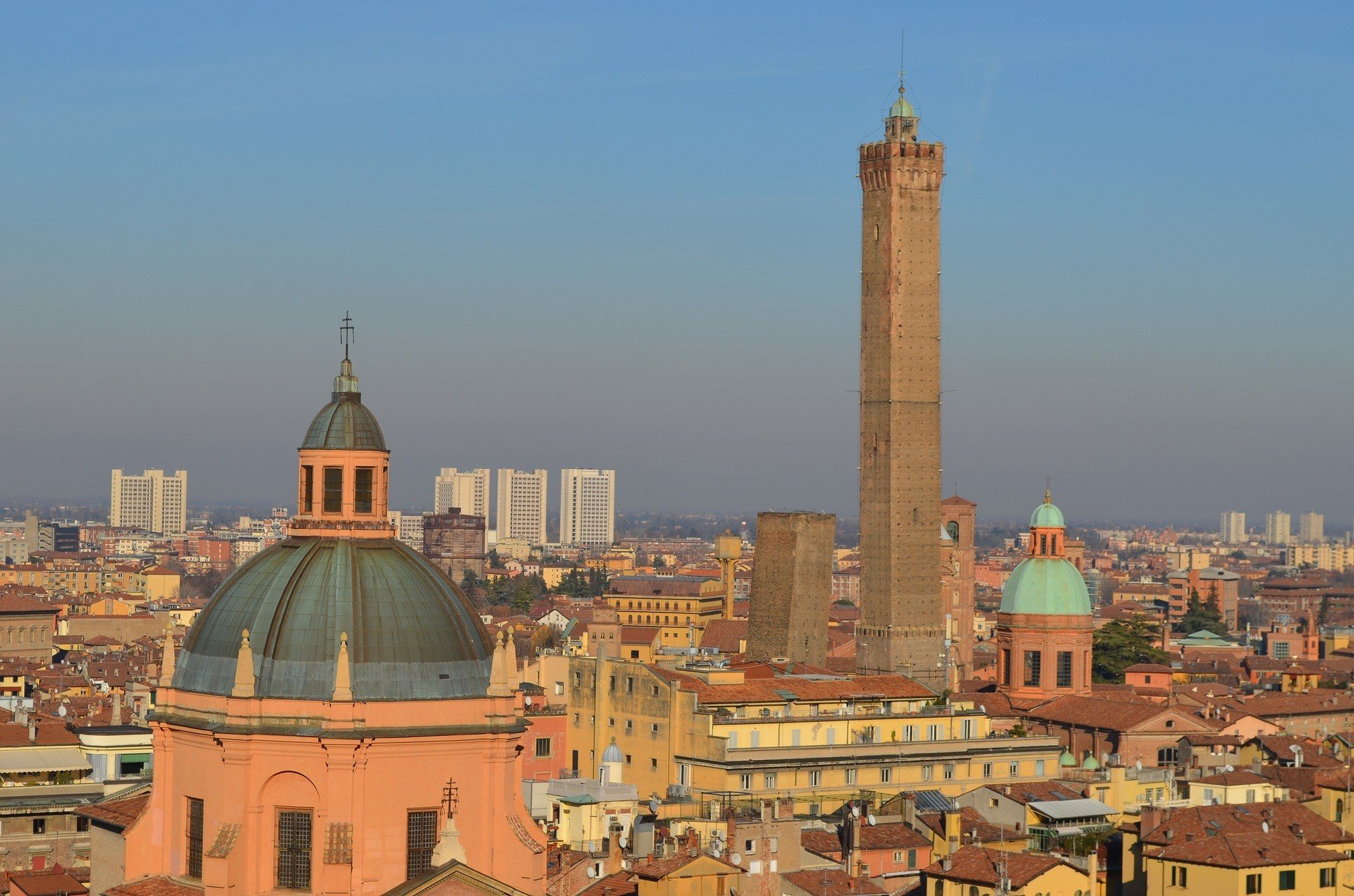
This immense structure stands and presents a domineering presence in the center of the Piazza Maggiore. San Petronio Basilica is dedicated to Saint Petronius, the patron saint of Bologna.
San Petronio Basilica in Bologna, ItalyThis outstandingly beautiful church has a Gothic design, and its most famous features are the sheer enormity of the building and its ancient unfinished front facade. Originally, the church was constructed in 1388 through to 1479, but it has never been truly finished, so the front facade is rather bizarre. The lower half features brilliant colored marble stonework, in contrast to the top half that remains bare and made of exposed brown brickwork.
The church’s inside atmosphere is truly epic, with large brick columns that are adorned with decoration and seem to stretch on forever! The San Petronio Basilica’s main altar is magnetic and will draw your attention as you walk down the central aisle in wonderment!
Insider Tip: On the weekends you can take an escalator trip to the viewing platform!
Day 2/Stop 3 – The Gardens Of Giardino Giusti in Verona
- Why it’s awesome: These gardens are those of a famous royal palace in Verona!
- Cost: Entrance fee is €8,50 ($10)
- Food Recommendation: Enjoy a laid back and fun meal at the Café Carducci! The setting is vintage, and so are the wines. We suggest having a wine and cheese sitting with a light meal.
The Giusti Gardens are professionally designed and landscaped to capture the essence of the Italian Renaissance, and the style in which it does so is magnificent! The gardens are some of the very finest in Verona, providing a stunning contrast to the waves of architecture that is most present in the city!

You will walk along and find yourself feeling like royalty as you enjoy the eight different squares, and each section has its own unique design and theme with a central fountain or sculpted centerpiece! Maintaining a high-class standard, it is easy to see the care and attention put into every inch of this garden.
Rich flowers, bright colors and indigenous bushes decorate these gardens – and you can even find yourself in an iconic hedge maze!
Note that unless you have driven between cities like a stunt driver, the gardens may be closed by the time you arrive. Or, you may be running out of daylight and wanting to get straight to the Canal’s and Lido.
Day 2/Stop 4 – The Grand Canal in Venice
- Why it’s awesome: The Grand Canal is huge, and along the expansive waterways are some of the most outrageously beautiful places in Italy!
- Cost: Entrance is free, and the gondola hire is €4,30 ($5)
- Food Recommendation: The Restaurant Terrazza Danieli is an upmarket rooftop restaurant on The Grand Canal that has views overlooking the city! The restaurant serves classic Venetian cuisine, and one of the best bets for a tasty meal is the traditional pasta.
What should one know about the Grand Canal? Perhaps, that it the greatest avenue in the world! It may be a little strange considering it is an entire street that is made out of the water, but it is lined with some of the greatest and most beautiful buildings on earth! Riding along the Grand Canal is a truly enchanting adventure.
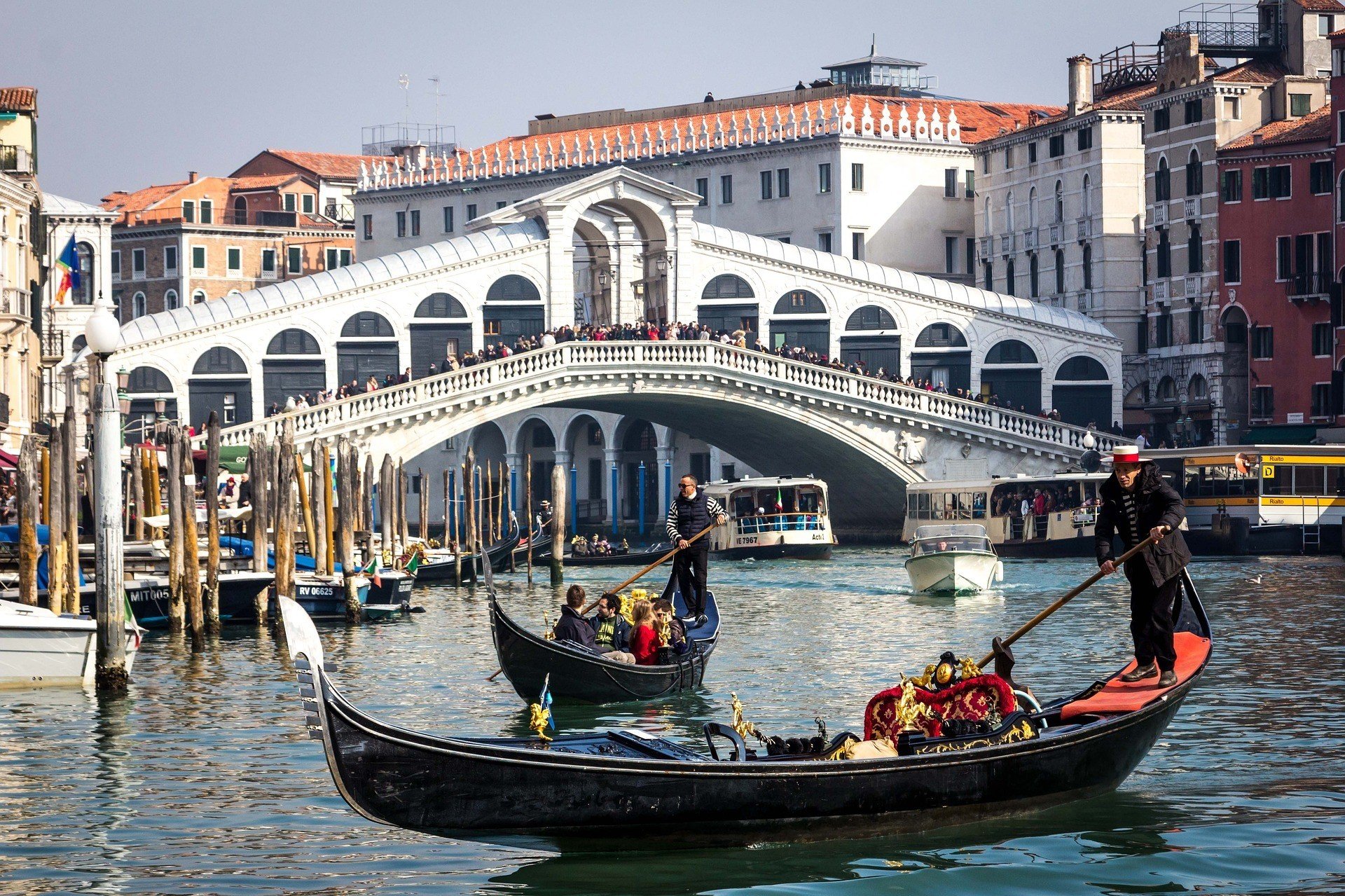
This used to be “the” prestigious place to live back in Venice’s heyday, and it is still one of the most aristocratic addresses on the block! All the merchants that have really ‘made it’ in the world of business have had a shop on the Grand Canal at some stage. On a humorous note, most of the beautiful buildings along the canal originate from this contest had by the Venetian rich to outdo the neighbor’s place next-door – how little things have changed today!
Whimsical and glamorous, the Grand Canal with have you falling in love with the enigmatic nature of Venice!
Insider Tip: Palaces in Venice were literally built to be seen from the water so keep your eyes peeled!
Day 2/Stop 5 – Lido Beachfront in Venice
- Why it’s awesome: This beach stretch is famously the best in Italy!
- Cost: Entrance fee is €22 ($24) for non-residents
- Food Recommendation: There is such a vibe at the Essentiale Restaurant & Lounge Bar at Hotel Villa Laguna that it can’t be missed! Enjoy 5-star style and fantastically decadent traditional food cooked by world-class chefs. Spot famous Italian actors and musicians whilst having one unforgettable culinary experience!
Lido has some of the very best beaches in Italy, and has a sandbar that elongates over 7 miles long that sits in the Venice Lagoon and the Adriatic Sea! This stretch of beach has the well-earned nickname of “Island of Gold”, due to the stunning golden-brown sands and magnificent shores.
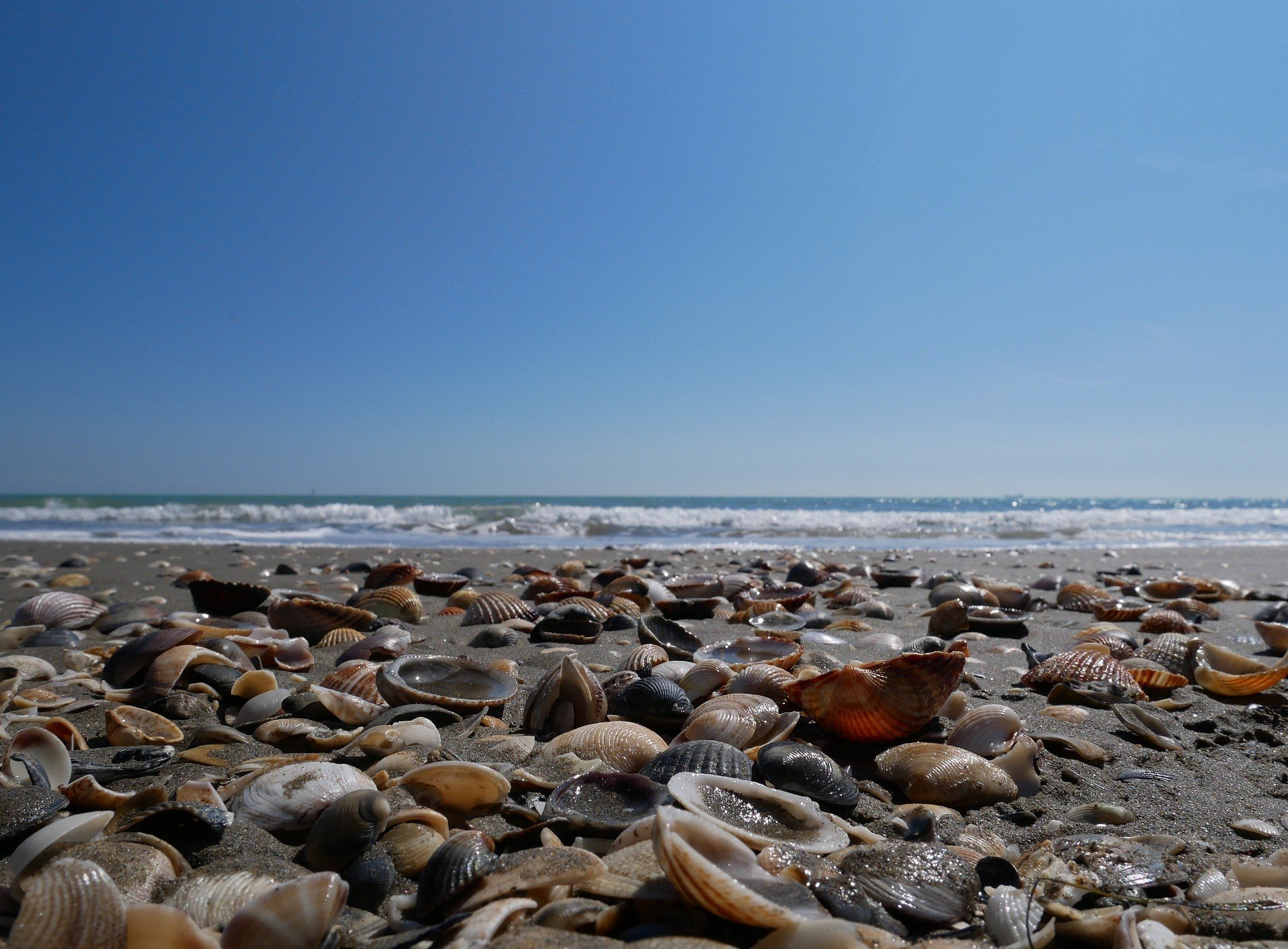
The loveliest beaches are in front of Lido’s historically grand hotels, they are lined with thatched beach huts or sporting elegant white cabanas. The beaches are open from May through September for travelers to bask in the Italian sun and enjoy the atmosphere!
In all probability, the sun will have set by the time you arrive. Hopefully, there will be a full moon casting a serene reflection over the water. This is an amazing and remarkably scenic way to end your 2 days in Italy.
You will be tired out by this point so make sure you book one of the best hostels in Venice to ensure a good nights rest.

Generator Rome
One of the very best hostels in Italy is the Generator Rome. Discovery historical and ancient backstreets, and find yourself close to hubs that offer street culture, art, and amazing food!
- Outdoor Terrace
The Montecassino | The Cinque Terre in Liguria | The Colosseum in Rome | The Roman Forum | The Chianti Wine Route in Tuscany
Our Italy trip planner will give you plenty of fun ways to spend your next few days! Visit ancient sites and historical landmarks all whilst traveling the beauty of this country and learning more about what Italy’s heritage is all about. Come with us on this adventure!
The Montecassino
- The Montecassino was first built in 529 AD and attracts lots of tourists worldwide due to the significant historical background of the Abbey.
- The surrounding gardens are vast and full of indigenous Italian wildflowers!
- The entrance to this magnificent site is entirely free, but the monks do accept donations to the monastery.
Italy’s steep and rocky hills are home to a rebuilt Monte Cassino Abbey, and it is one of the most popular abbeys in the world! Despite being destroyed during World War II, it has been remade and kept its original structure. This is a unique site that is filled with lots of history from the days of worship and meditation. It is still in use as a religious venue for Christian monks, and it is breathtaking!
The remaining ashes of Saint Benedict, as well as his twin sister Saint Scholastica, are preserved and kept in bronze urns. The urns are found under the basilica’s high altar, and you can also admire other relics that are on display in the Chapel of Relics.
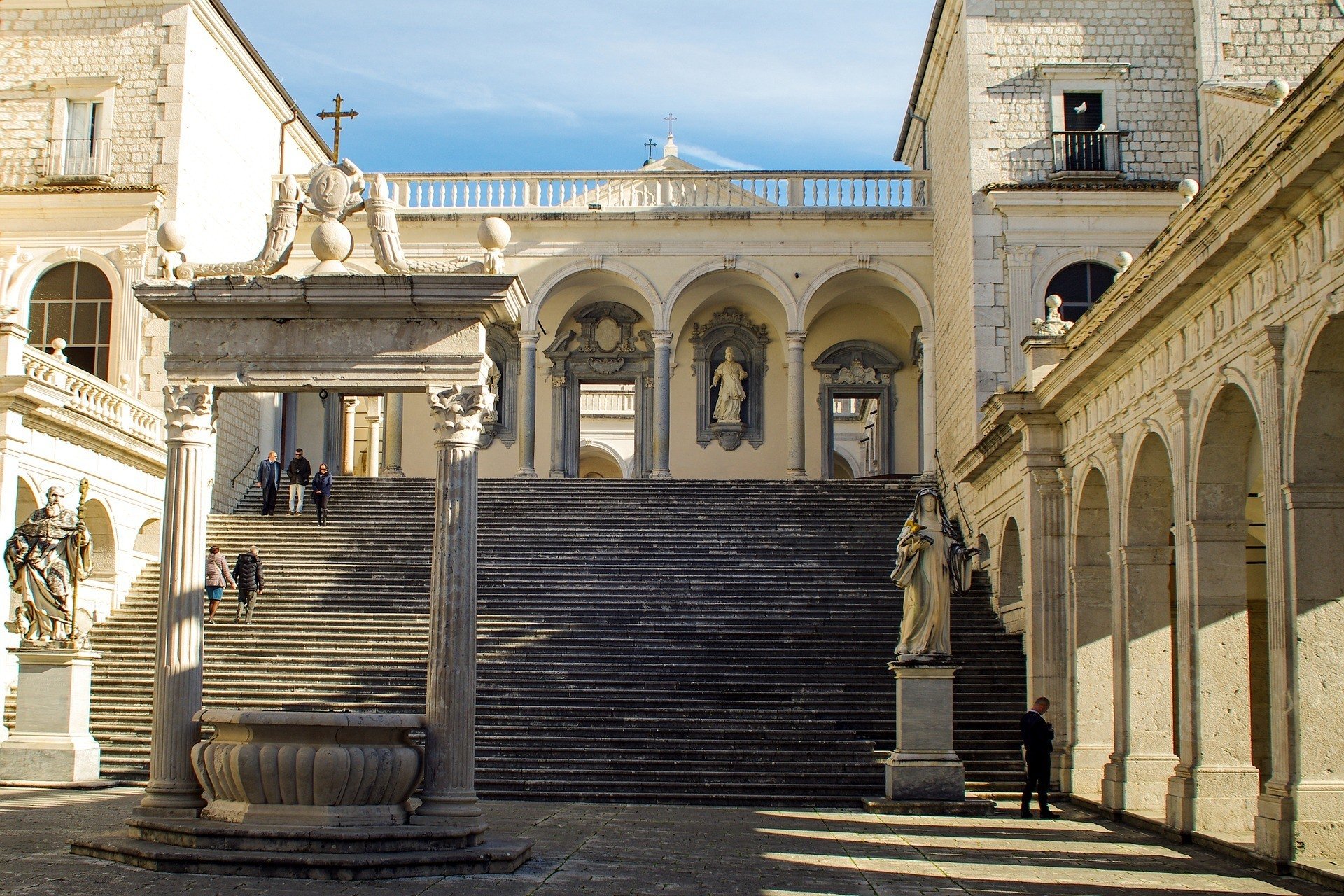
If you venture under the church, you will see a16th century crypt, adorned with an endless amount of fine art mosaics, as well as the tomb of St Benedict and his sister.
Monte Cassino used to be the wealthiest known monastery and is filled with old relics from St. Benedict. To see these old paintings, frescoes, and mosaics, you can go into the abbey’s museum. This adventure is full of new knowledge and stunning religious artifacts!
The Cinque Terre in Liguria
- Cinque Terre is a UNESCO World Heritage Site and has also been designed as a national park. Italy has a bunch of national parks to visit .
- The Cinque Terre is nestled in Liguria, and the ‘Five Lands’ is made up of five prominent villages that are located at the top of the rugged cliffs. overlooking the famous Italian Riviera.
- €105 ($119) is the average cost of traveling this famous coastline.
Cinque Terre’s villages are all overlooking the famous Italian Riviera, so no matter which of these villages you are in, at any given time you will be astounded by the landscapes!
This popular string of centuries-old seaside villages has 5 distinct towns that each have their own uniquely charming sites – Vernazza, Corniglia, Manarola, Riomaggiore, and Monterosso.
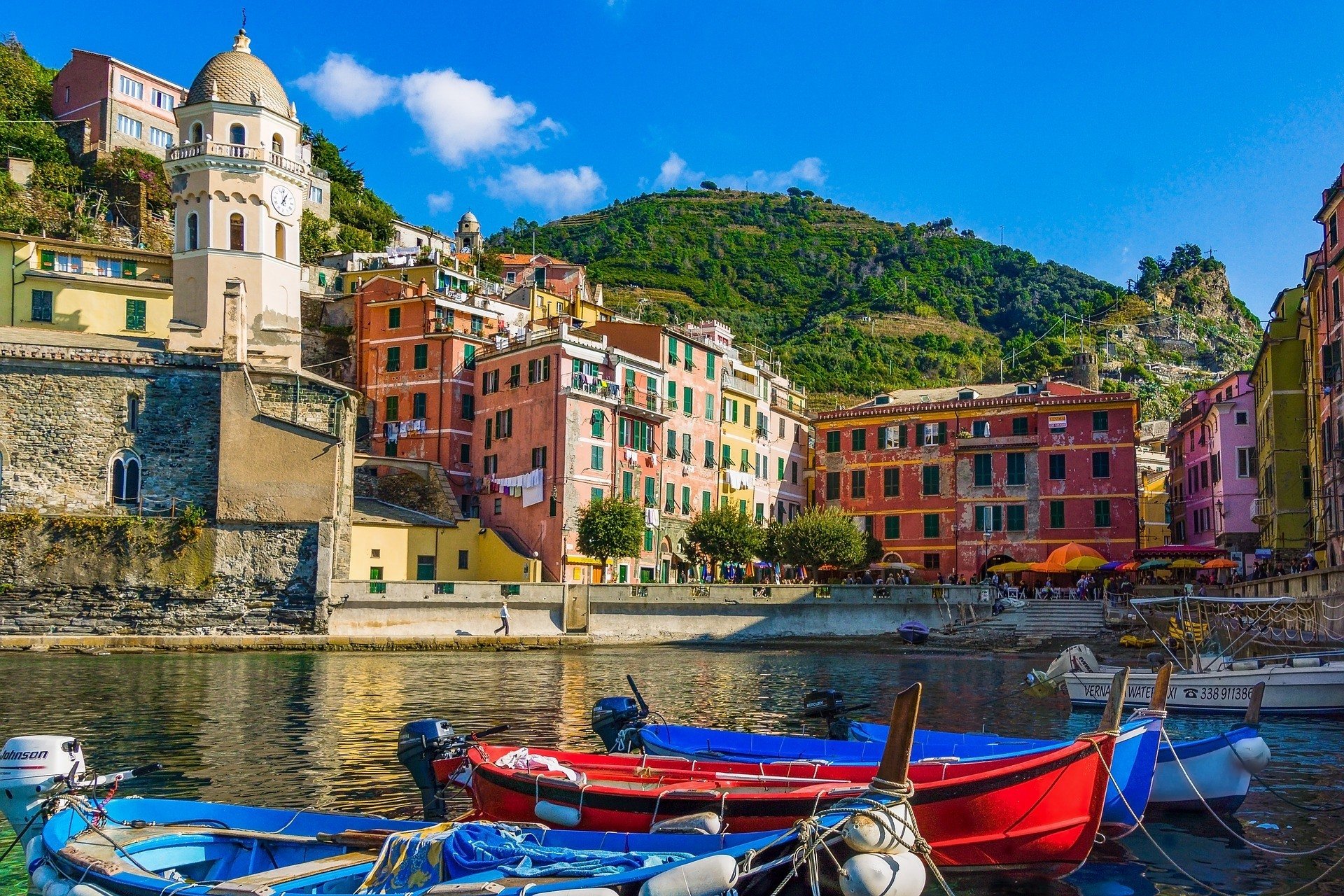
These humble villages are overflowing with marvelous vineyards, vibrantly colored houses, steep terraces, abundant fishing harbors and plenty of local seafood specials. Most of the food here will be served with Liguria’s famous sauce, pesto.
The romantic area of Cinque Terra is sprawled between La Spezia and Levanto. It offers olive groves, azure sea views along the long coastline and a bevy of traditional restaurants.
If you want to have a hike, then The Sentiero Azzurro cliffside trail is the best! This hiking trail connects all of the villages and provides some of the most amazing sweeping sea vistas!
The Colosseum in Rome
- Pre-book tickets before you come. Lines are very long and sometimes it can take half a day just to get in.
- This site is one of the biggest attractions, and when you see how the building still stands and preserves so much of Ancient Rome’s splendor, you will understand why!
- Entrance fee is €12 ($13,50)
You simply can’t visit the ancient city of Rome and not visit this most well known and very famous attraction! The mighty colosseum retains a remarkable stature and captures what it was like in Rome during the empire’s day. Walking amongst the wreckage, you can almost feel yourself time traveling to see the gladiators readying themselves for a fight to the death, as the hierarchy watched and eager fans cheered!
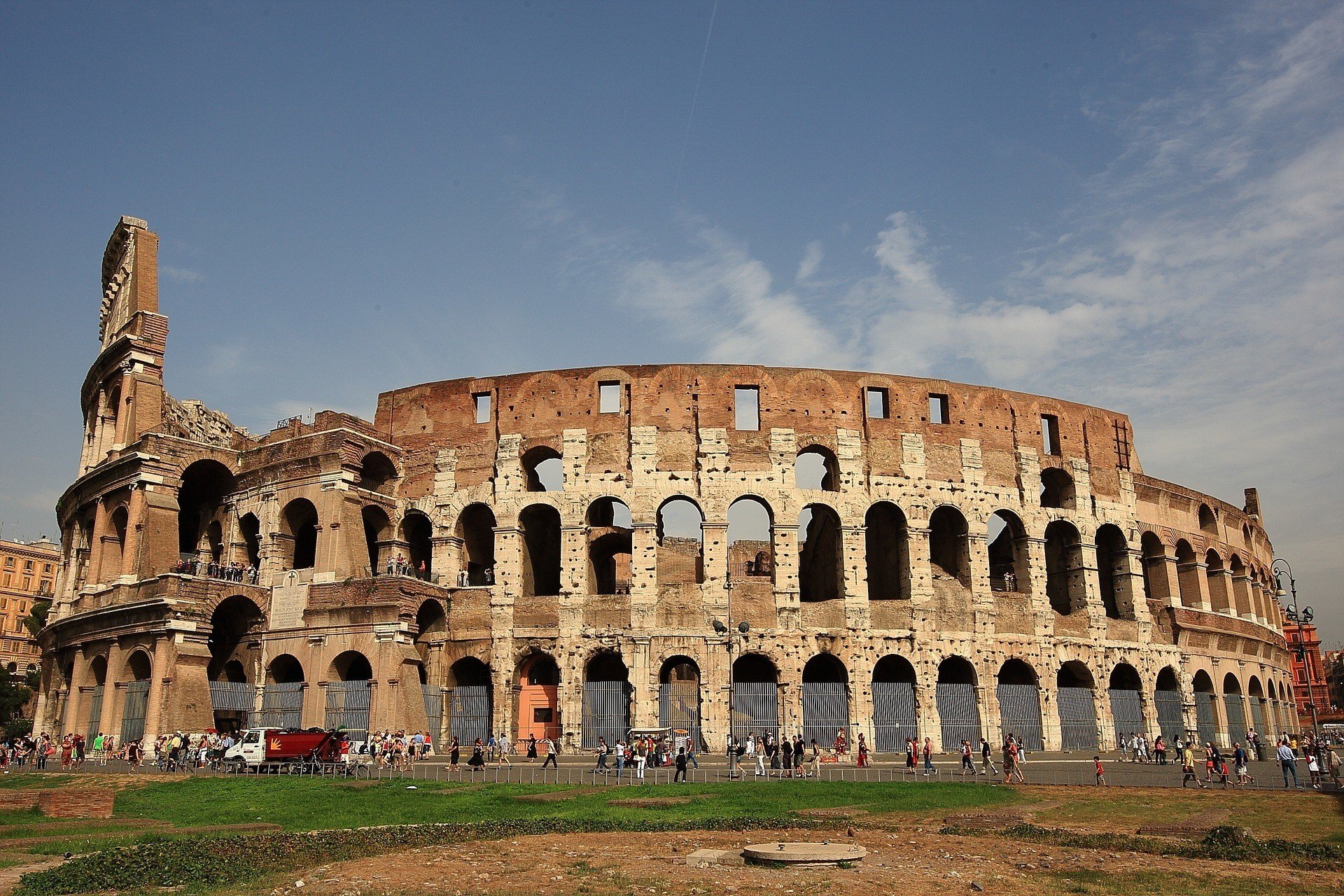
This colossal amphitheater was once able to host 50 000 spectators and has now become one of the most important historical relics in the world! The Colosseum still retains a hell of a lot of grandeur, and you can get a very good idea of what it must have looked like in its prime.
This site is both entertaining and reflective, as we realize how far humanity has come from such barbaric times (we now have X Factor….) . The ruins are beautiful, and seeing these broken down structures under the clear skies of Rome is perfection.
Want to learn more about this wonderful country? Head over to our backpacking Italy travel guide for more details all things Italian!
The Roman Forum
- The Roman Forum is one of Italy’s biggest attractions and lies between the Capitoline and the Palatine hills of Rome.
- The Forum was the center of the whole Roman Empire!
- Entrance fee is €2 ($2,24)
The Roman Forum is an essential part of any Rome itinerary . It is so big that it can be seen from most terraces in the wider city and enchants everyone who visits with its tall pillars, aged domes and amazingly well-kept structures with infinite detail and depth.
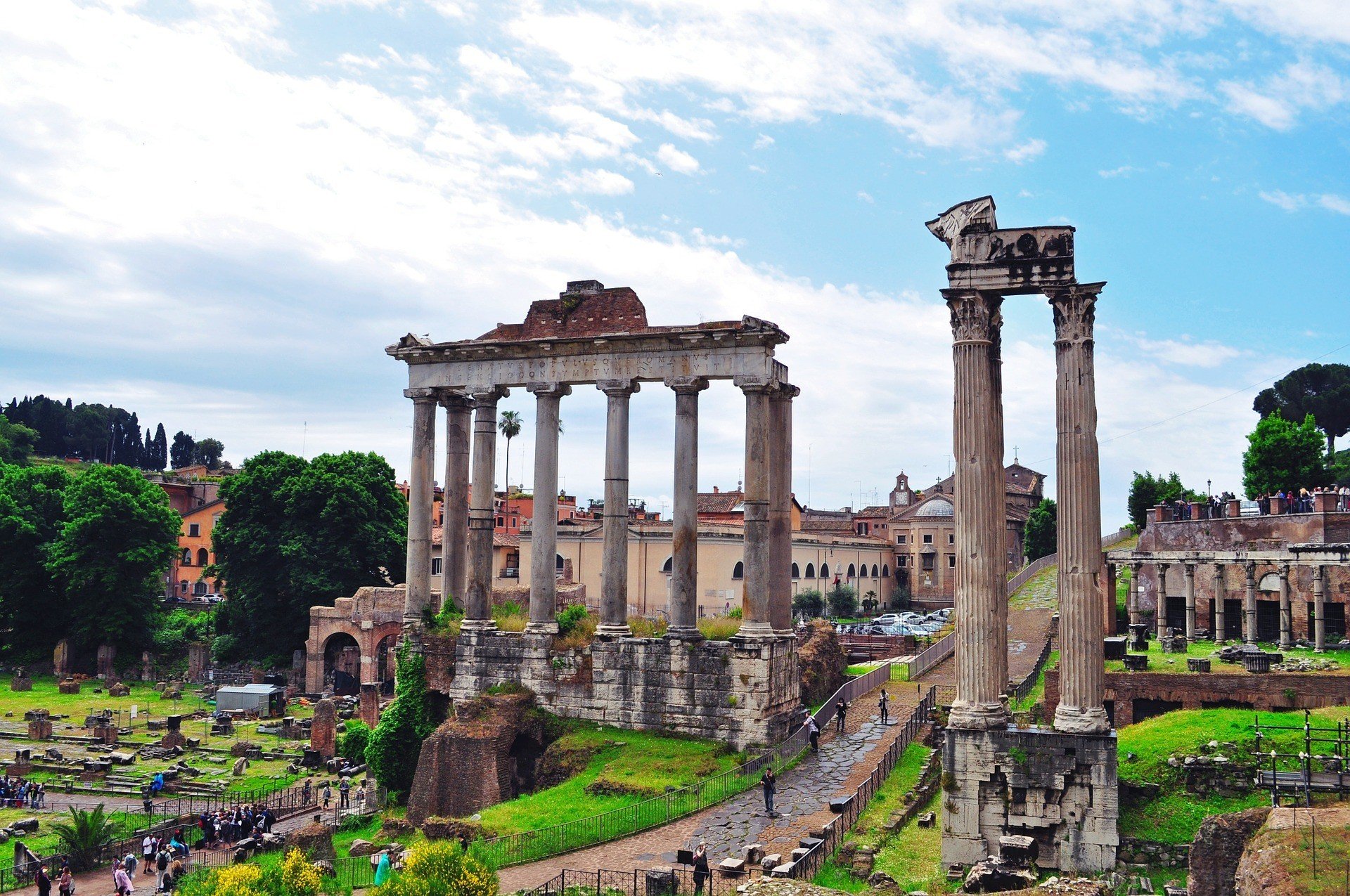
The ruins of The Roman Forum are made up of breathtakingly impressive temples, arches, and houses. This expansive labyrinth of history is home to both The Temple of Saturn and The Via Sia. Walking in the footsteps of Julius Caesar, in these remains you can still feel the power from Italy’s most prominent and ancient empire!
A guided tour of the Roman Forum offers you an authentic chance to gain insight into the politics, beliefs, and lives of the Ancient Romans themselves, helping you to understand so much more about this lost civilization!
The Chianti Wine Route in Tuscany
- Chianti is the most famous wine estate in Italy and churns some of the best plonk in the world!
- Touring this route offers you a very unique view of the landscapes and villages that you won’t find on other wine routes or tours.
- The route is free to drive or walk through.
The Chianti road connects Florence to Siena, and is probably the most beautiful driving route in Italy! It passes through acres and acres of pristine arable land which has produced some of the best wine ever!
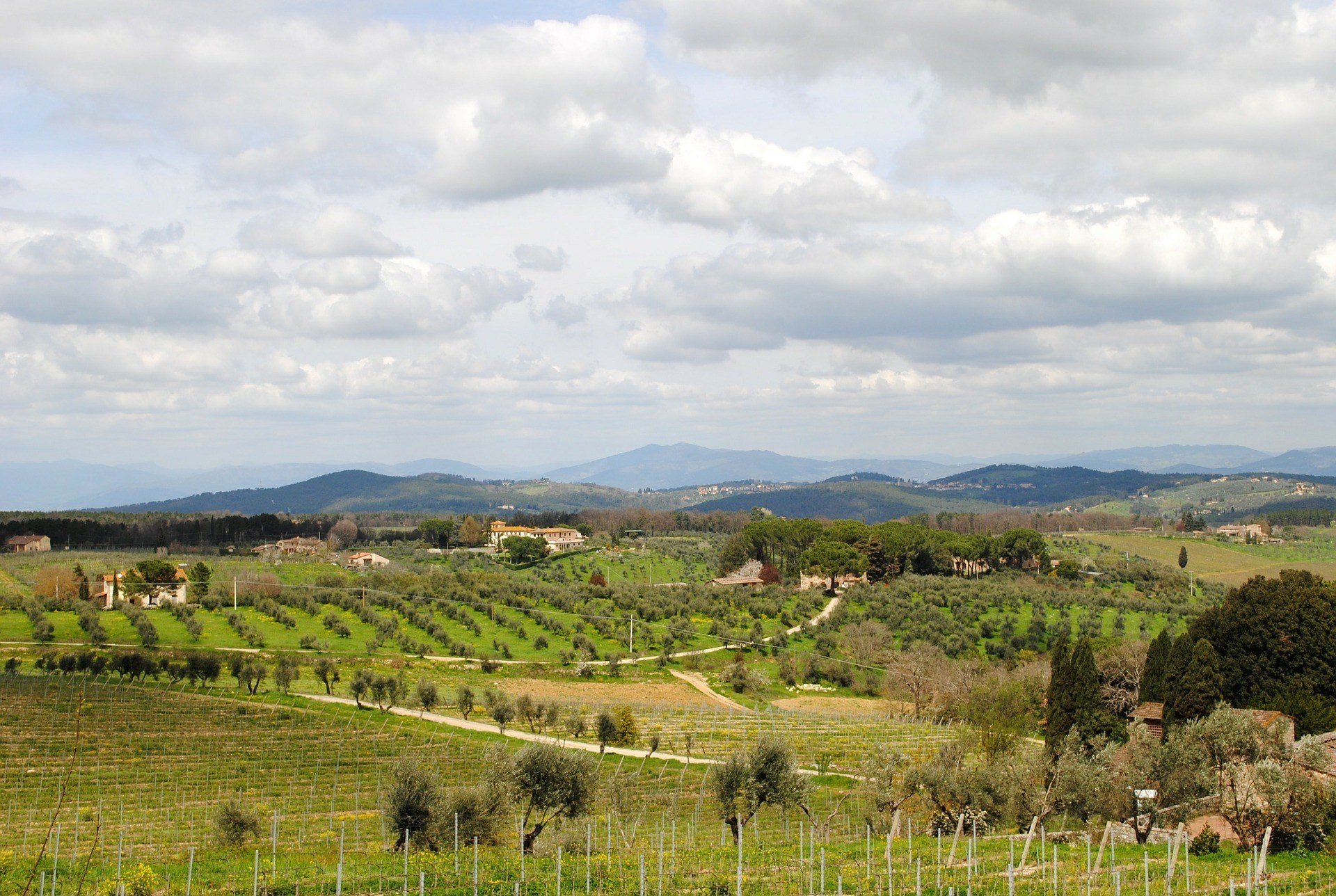
Just like it’s wines, Chianti has become more beautiful with time! This route will take you through enchanting old villages, rolling green hills and flowing streams. Stop off to have a wine tasting, or simply even have a picnic in one of the many beautiful spots along the way.
Italy is a strong contributor to the world of wine and this is one of its prime, wine regions . Winelovers simply cannot go to Italy without exploring the magnificently beautiful and expansive vineyards!
You’ll also find plenty of Italian yoga retreats in this part of Italy.
Here of some of the best Italian trips for you to enjoy on your journey that will add heaps of zest and fun to your days! Whether you’re spending the weekend in Italy or more than 3 days in Italy, we’ve got your back with these amazing tours.
Capri Boat Trip To Visit The Blue Grotto
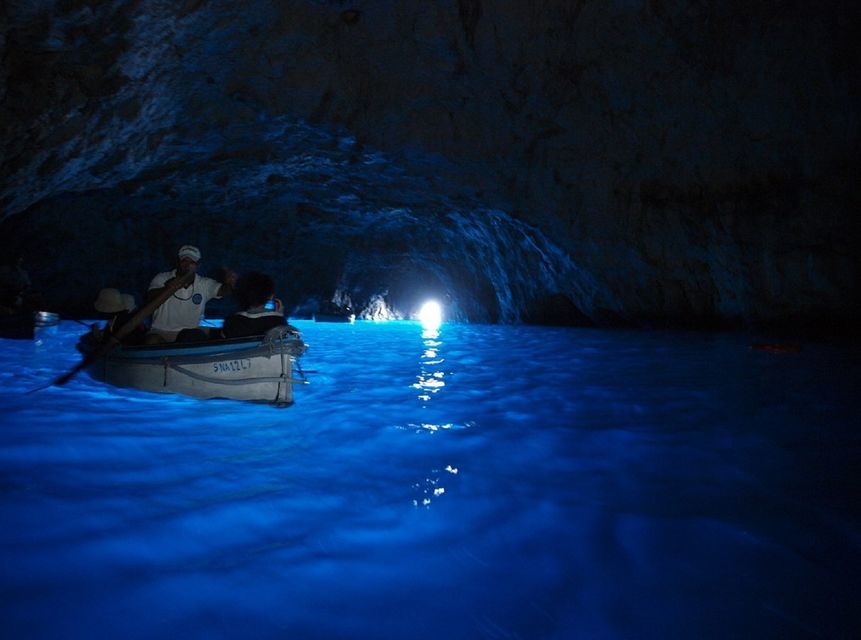
This adventure is a true must for those wanting to experience all of the magic that Italy’s waterways have to share! The mystical Blue Grotto is an ancient sea cave just off the coast of Capri Island, and the effect that the sunlight has on the cave water is mesmerizing!
The ocean water turns a bright luminescent blue color, and while you are touring through the cave you will not only feel the calmness and fantasy-like essence, but you will also feel as if you are floating on an electric blue wave that lights up the whole underwater cavity! The cave is a true gem, and boating through is a once in a lifetime experience!
Rome: Pompeii Sightseeing Trip
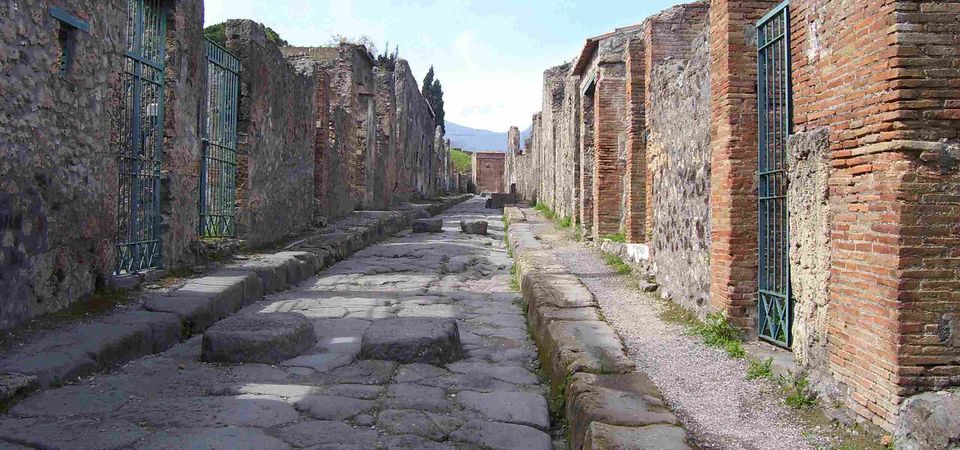
Pompei was famously suddenly and totally destroyed by a volcanic eruption in 79AD. On this group excursion, you will explore these artistic and historical sites, ranging from old bathtubs, halls, and marble statues! Exploring Pompei’s history is eerrie and fascinating.
The buildings are surprisingly well-preserved for their age, showing how ingenious Roman architecture was. These ruins are beautiful and have remained standing even after a huge volcanic eruption destroyed most of the castles and temples. Some parts of Pompeii still remain covered in volcanic ash, making these ruins a massive archeological landmark!
Tuscany: Canyoning Adventure Day Trip
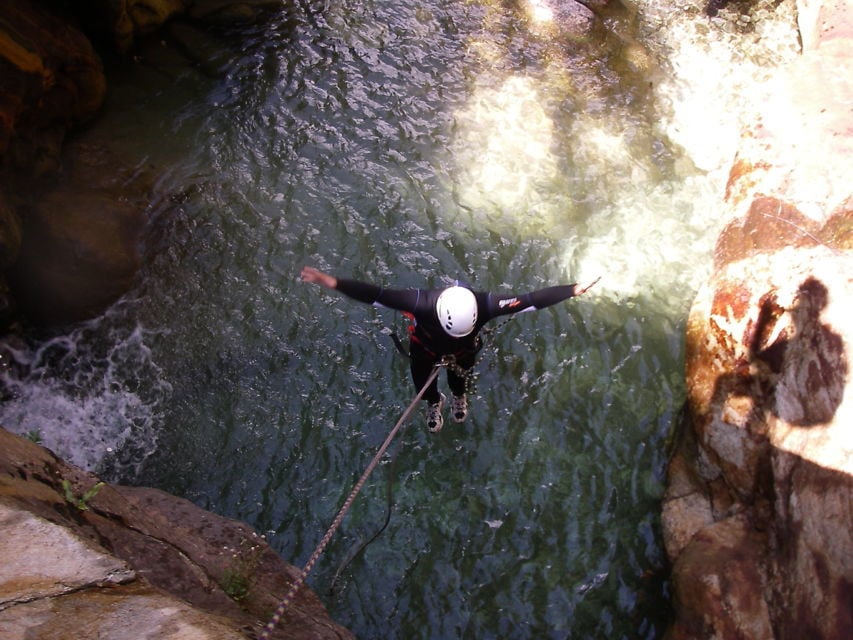
This is a fun day trip that is sure to curb your undying craving for adventure! On this energising excursion, you will have a full day of wet and wild canoeing on the beautifully scenic countryside of Tuscany!
As you navigate the way, you will be immersed in gorgeous waterfalls, and slide down completely natural water slides. Maneuvering on the sometimes tricky Tuscan waterways, you will have a great day learning how to conquer the waves. The whole way is full of gorgeous Renaissance buildings, colorful vegetation, birdlife and views that will make your soul soar!
Naples and Amalfi Coast Full Day Tour from Rome
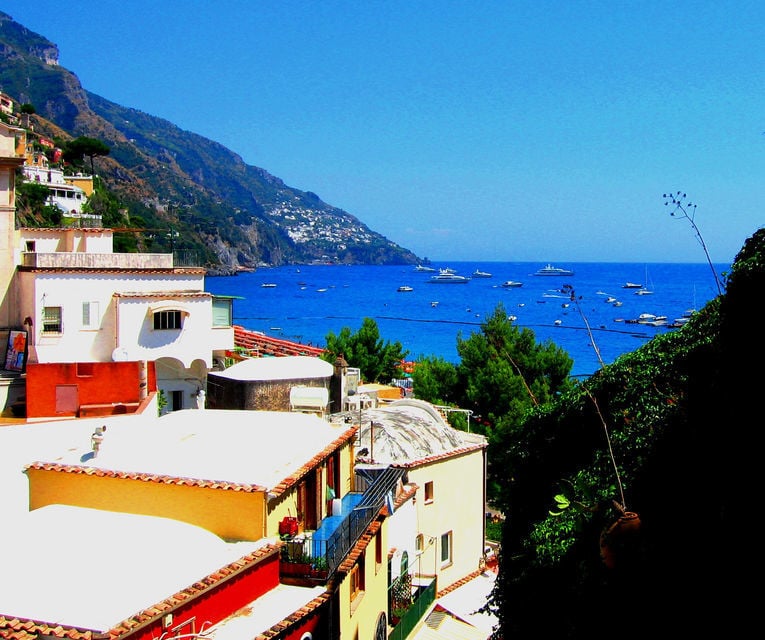
Having the opportunity to see one stunning place is magnificent enough, but on this tour, you will get to see two in only one day!!
Dirty Naples shows another side to Italy’s charecter and yet never fails to charm visitors.
To make your day even more unforgettable, you will be traveling past the exquisite coast of Amalfi . This coastline is lined with colorful old-school villas, fishing villages, stunning cliffs, and rocky shorelines.
Ischia Day Trip with Lunch from Naples
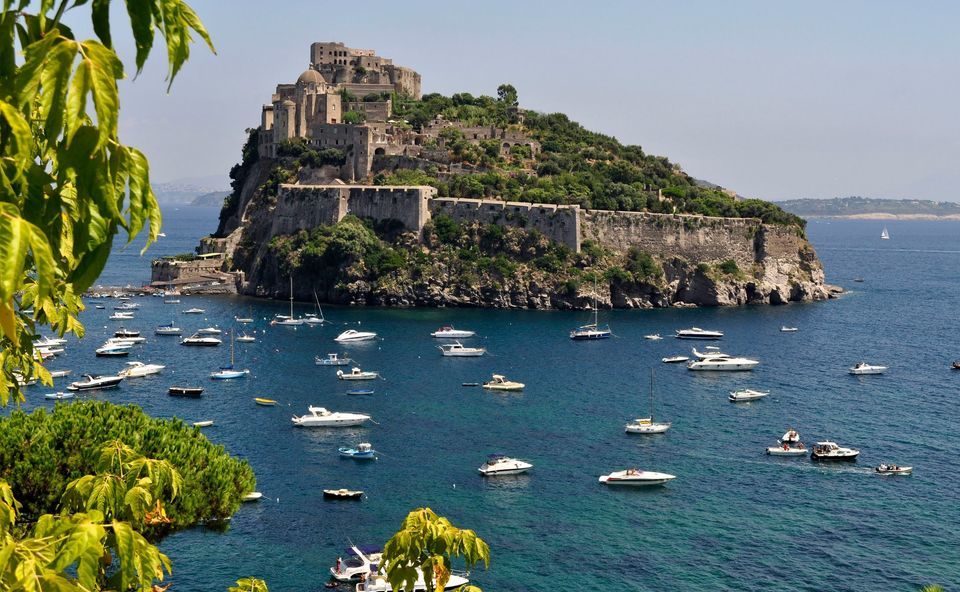
On this day trip from Naples, you will be provided with one otherworldly kind of adventure! Travel from Naples to one of the most beautiful islands in Italy , and lunch with your travel companions. This volcanic island is surrounded by the Mediterranean sea, with ocean views that stretch as far as the eye can see!
The waters are known for being mineral-rich and enjoyably warm for you to have a dip and swim with fish. There are also volcanic natural spas for you to treat yourself to on this alluring island.
From the beach of Ischia, you can walk along a stone bridge to the medieval Aragonese Castle. Nearby, you will find the 18th-century Palazzo dell’Orologio that houses the Sea Museum, where you can learn more about the area of Ischia and its fishing tradition.
Italy is very safe for travellers and violent crime is rare. However, you do need to take some precautions. Italy is generally safe , we will help prepare you for your visit so that you can keep yourself and your important things safe when in Italy!
Rome, in particular, is known for petty theft and pickpocketing as are other major tourist destinations.
Never travel with your bag out in the open or with an unlocked backpack. Keep your bag in front of you and keep it zipped. For extra precautions, get a handbag with a wire strap, so that it cannot easily be cut and run away with.
In the Metro subways watch for young children who may be working as pickpockes and bag thieves. Stay aware of people wanting to bump or get too close to you, and watch where their hands are going. Pickpocketing happens in the busy lines and within big tourist groups.
Don’t Forget Your Travel Insurance for Italy
ALWAYS sort out your backpacker insurance before your trip. There’s plenty to choose from in that department, but a good place to start is Safety Wing .
They offer month-to-month payments, no lock-in contracts, and require absolutely no itineraries: that’s the exact kind of insurance long-term travellers and digital nomads need.

SafetyWing is cheap, easy, and admin-free: just sign up lickety-split so you can get back to it!
Click the button below to learn more about SafetyWing’s setup or read our insider review for the full tasty scoop.
Find out what people want to know when planning their Italy itinerary.
How many days do you need for a full Italy itinerary?
If you’re keen to explore as much of the country as possible, then you’ll need about 2-3 weeks in Italy.
What should you include on a 10 day Italy itinerary?
Make sure to check out these iconic attractions: – The Pantheon & Colosseum, Rome – Siena Cathedral, Siena – The Leaning Tower, Pisa – Grand Canal, Venice
Where should you stay for a honeymoon in Italy?
Positano is our pick for the most romantic place to stay in Italy, while Florence and Venice are also popular options.
What is the best way to travel around Italy?
Train travel is the cheapest and easiest way to travel around Italy. Renting a car would provide more flexibility, while flying can be the quickest option and is often great value!
This complete travel guide will ensure that your days in Italy are well spent! We have covered the best trips for your Italy vacation, where to find the most mouth-watering traditional cuisine, and more! This beautiful country is a favorite, so be prepared to fall in love with the history, culture, and people as you explore endless magic!
This Italy travel itinerary will have you enjoying the best parts of Italy, and soaking up your time in this country to the fullest! Backpacking through Italy can be inexpensive , and truly one of the best adventures you will ever go on. We sing Italy’s praises loud and clear!

And for transparency’s sake, please know that some of the links in our content are affiliate links . That means that if you book your accommodation, buy your gear, or sort your insurance through our link, we earn a small commission (at no extra cost to you). That said, we only link to the gear we trust and never recommend services we don’t believe are up to scratch. Again, thank you!

Share or save this post

Leave a Reply Cancel reply
Your email address will not be published. Required fields are marked *
Save my name, email, and website in this browser for the next time I comment.
Notify me of followup comments via e-mail.
An Italian Mama's Guide to Italy
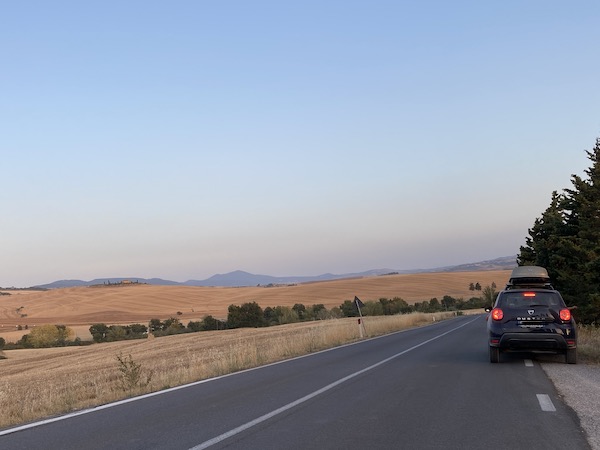
How to get around Italy: transportation guide for all types of travelers
How to get around Italy: Italy transportation guide Learn how to get around Italy by car, train, bus, ferry, uber and private drivers in Italy and more.
When planning a first trip to Italy , one of the biggest decisions to make is how to move from one place to the next.
While not huge, if compared with other counties such as the US, Canada or Australia, distances in Italy can be deceiving.
What seems a short hop may easily be a long, slow drive while longer, intimidating distances may be quickly covered by taking a fast train.
This variety of terrain and transportation option means the best way to get around Italy depends on where you are!
Some regions and areas are best discovered by car, some are much easier by train or ferry.
Some areas require you to drive yourself while others have good offerings of local car services with drivers, which can be good for day tours, winery visits and town hopping.
In this Italy transportation guide, we look at the best way to get around Italy taking into account regional differences and seasons, plus we share tips on our favorite transport options.
Please note: this post contains affiliate links. Should you make a purchase through them, we might make a small commission, at no extra cost to you.
The best way to get around Italy: summary table
The best way to get around italy: by train.
Taking the train is the best way to get around Italy if you are interested in visiting Italy’s main cities and areas such as Cinque Terre.
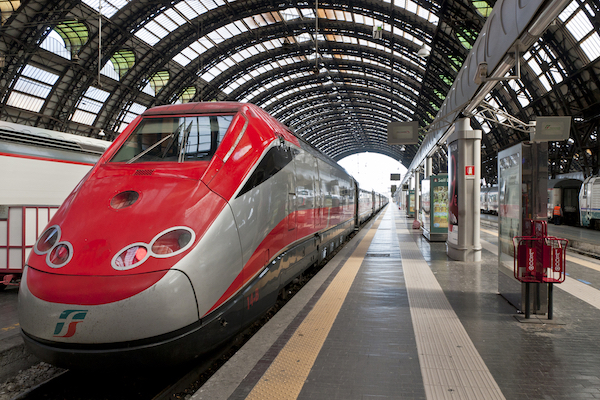
The Italian railway system is extensive and easy to use: fast trains cover long distances and slower, local trains connect smaller towns and, often, villages in an efficient and environmentally friendly way.
However, not all regions have a well-served railway network so traveling around Italy by train is not a viable option everywhere.
The train is the best way to get around Italy in the following cases:
- If you are visiting main cities such as Rome, Bologna, Naples, Florence, Venice, Milan etc. In this case, you can use Italy’s high-speed trains and find yourself in the center of Italy’s main cities in a fast, efficient and stress-free way
- If you are visiting Cinque Terre : the famous five towns of Cinque Terre are connected one to another by train, which is a fast and efficient way to see them. The train leaves you in the towns, passes often, and is cheap. It also saves you from driving and parking in the area, which is difficult and expensive, due to the narrow streets of this area and the intense traffic.
- You are in a small town that happens to have good train connections such as Lucca, Ravenna, Levanto, Perugia etc.
Due to the lack of infrastructure or direct connections, the train is not as handy to get around Italy if you are planning a country stay in Tuscany (agriturismos and villas are isolated and require the use of a car), if you are going to Sicily, Sardinia or large parts os the South of Italy.
In these cases, getting around by car is a better option.
You can find here >>> our guide to traveling Italy by train <<<
How to get around Italy: by car
Getting around Italy by car is a great option if you want to be free to visit small towns away from the train line, if you are planning on country stays and visit country restaurants and agriturismo, if you are going to the South or to the Dolomites.
The best areas to visit in Italy by car are:
- Puglia and the South
- Sicily and Sardinia
- Tuscany (with exceptions: Florence, Lucca, Pisa are also easily reached by train)
The worst parts of Italy to visit by car are:
- Big cities and towns – city centers in Italy are open to permit holders only and, usually, a nightmare for parking and navigation
- Cinque Terre – where traffic and parking make driving difficult and pricey, in high season especially
- Amalfi Coast (high season) – where intense traffic and parking are tough to deal with, even for locals
Getting around Italy by car – self drive
The easiest and most cost-effective way to drive around Italy is renting a can and driving yourself.
You can find here >>> our guide to renting a car in Italy <<<
Despite potentially scary stories you may have heard about Italian drivers, driving in Italy is much easier than you may expect.
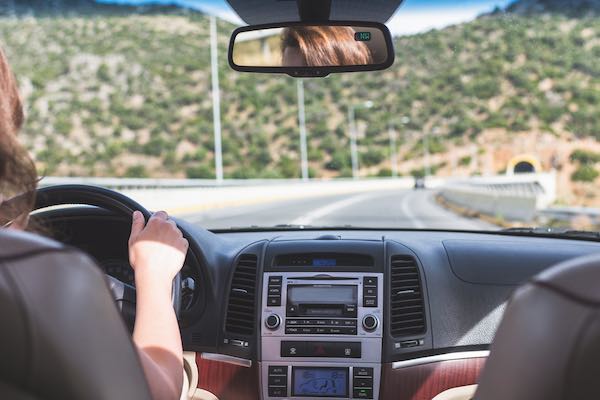
For long distances, you drive on autostrad e (freeways): they are busy but offer a driving experience similar to that of UK motorways or American highways.
Smaller roads serve smaller towns and these indeed can be taxing if you are used to motorway driving.
Narrow roads, parallel parking and inpatient drivers are common in Italy and locals will make you feel under pressure by beeping as if their life depended on it.
Usually, all you need for a safe driving experience in Italy is to know what to expect.
Luckily, we have a guide for you!
Find here >>> tips for driving in Italy + need to know <<<
Please note: driving in Italy may require you to obtain an international driving permit. If traveling with small kids, you will also need a car seat matching EU standards. We talk about this and more in the guides above: if in any doubts, check the exact requirements with the car rental agency before committing.
Getting around Italy by car – private drivers, car service and Uber in Italy
If you prefer to avoid driving yourself, it may be tempting to look for a private driver or car service.
The request for car service recommendations in Italy comes up often in my Italy with kids Facebook group as in other parts of the world taxis and private drivers are an easy and cost-effective transport option.
This is not always the case in Italy.
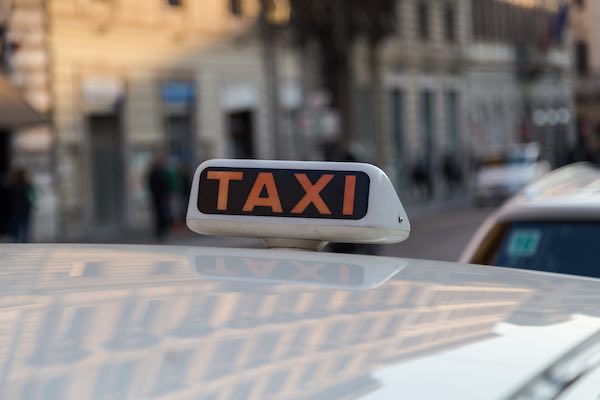
Taxis are an excellent option for inner-city travel in Italy but are very expensive once you ask them to leave the city boundaries.
Since they are local to each municipality getting a taxi from one town to the next usually incurs in very high charges ad the driver also charges you for their way back in an empty car + gas.
If you only need a one-way transport, the best option is to ask your host if they can source a private driver for you or book via a reliable transport company such as Welcome Pickups.
Welcome Pickups has a fleet of cars and vans to suit the most group, they can pick you up from airports, train stations and more.
In addition, you can get a free online quote instantly, just by adding your dates and needs on their website.
This is fantastic, as you know precisely what you are getting and the price before booking.
Find here >>> Welcome Pickups info, prices and free quote tool <<<
They also offer English-speaking drivers and car seats for kids on request.
Uber in Italy is not widely available and, even where it is, it comes in the form of Uber Black, which usually charges high prices.
Recently, the news reported an agreement between Italian authorities and Uber so things may change. however, at present, uber is not a reliable option.
So, how can you source a private driver in Italy?
My recommendations are:
For airport – accommodation transfer , option for Welcome Pickups or driver/shuttle service offered from your accommodation
For transfers to a local attraction or point of interest , consider a tour with a driver.
For instance, this tour by LivTours allows you to explore Tuscany’s wine regions from Florence without having to drive yourself
For transfers in the Amalfi Coast /Pompeii area, I recommend you join this local Sorrento Travel group, where you can find many local drivers, recommendations from members and direct contacts of transfer providers
For any local stretch , I recommend you source the name of a local taxi service from your host who will know hyper-local solutions that will offer the most competent and price-efficient solution
Getting around Italy by ferry
Some areas of Italy are best explored from the water.
Ferries are a scenic and efficient way to travel certain parts of Italy: some cover long distances and may even offer overnight stretches such as Sardinia or Sicily.
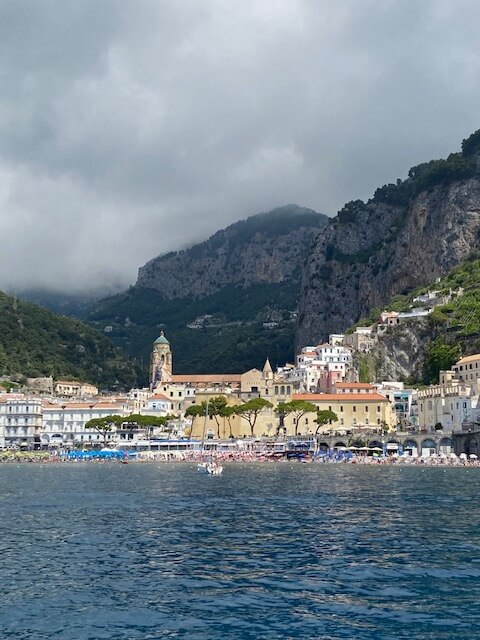
Other ferries are local and operate almost as shuttle services between popular towns.
Examples of these easy to take, shuttle style ferries and hydrofoils are:
- Naples/ Sorrento to Capri, Ischia or Ponza
- Salerno to Amalfi Coast
- Sorrento to Amalfi Coast
- Levanto / La Spezia to Cinque Terre
- Venice – Venice lagoon islands.
These ferry/hydrofoil services are usually efficient as offered by several companies, which means you can often choose between a vast choice of times and types of service.
It is good to know that ferry services are seasonal and subject to sea conditions.
While main connections are guaranteed year-round, in the heart of winter the number of daily runs diminishes to a handful each day so it is paramount to plan your day with the current ferry schedule in front of you, if going in low season, to avoid issues.
Ferries are also fantastic in the good season to explore lake areas such as Lake Garda or Lake Como.
How to get around Italy by bus
An extensive network of bus services connects areas of Italy not served by the railway.
The bus is a great, cheap way to get around Italy and while it is more tiring than the trains, it offers a great alternative for areas such as Sicily of Abruzzo, where train connections are scarce.
The main issue when it comes to bus transportation in Italy is that you don’t have a national service with all schedules but you often have to rely on regional/local ones, which may be hard to source online.
A great way to discover how to get places by bus and is checking on Omio , a trip planner and ticket provider that gathers all the info you may need to plan a trip from A to B by bus, train or plane.
Getting around Italy by plane
Longer distances in Italy can also be covered by plane.
This is a reasonable option if you are short on time and need to cover long stretches, let’s say Milan to Sicily. However, domestic air travel in Italy is not always as convenient.
In many cases, Italian airports are far enough from the city center to add a long transport time to/from them. Also, since the service is often offered by budget airlines, delays are possible and the level of service is often low
In most cases, high-speed trains are more convenient than planes so I recommend you check both options before committing.
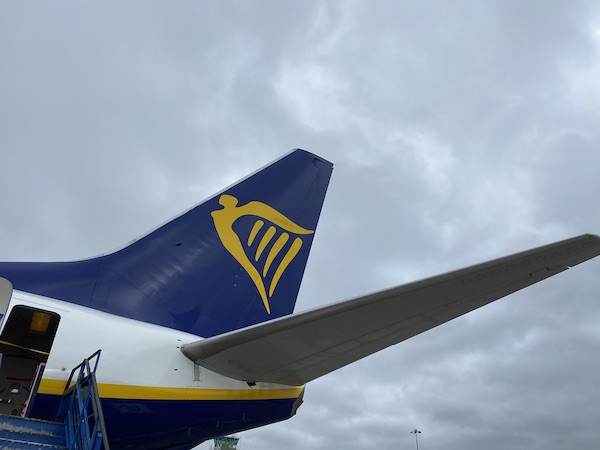
The best way to get around Italy by region
As mentioned above, the best way to get around Italy depends on where you are. At a glance, these are our tips on how to get around Italy by region.
If you are not sure what region your favorite attractions are in, have a look here >>> our guide to the regions of Italy .
- Valle D’Aosta: train and car
- Piedmont: train, car for vineyards and country stays
- Lombardy: train and bus. Milan is best visited on foot.
- Veneto: train and bus. Venice is best visitied on foot
- Trentino Alto Adige: car, train for bigger centers, bus
- Friuli venezia Giulia: train, bus, car
- Emilia Romagna: train, bus. Bologna is best visited on foot
- Tuscany: car, train for the main city, some coastal towns, Lucca, Pisa
- Liguria: train, ferry (summer)
- Umbria: car, train on selected routes (Perugia, Orvieto), bus
- Abruzzo: car and bus
- Le Marche: car and bus
- Molise: car and bus
- Lazio: train, car, bus. Rome is best visited on foot
- Sardinia: car
- Sicily: car
- Campania: train, ferry, car (low season)
- Calabria: car, train in selected areas
- Basilicata: car
- Puglia: car
More Italy travel tips
Planning a trip to Italy? Don’t forget to also check out our 100+ Italy travel tips and our guide to planning a first trip to Italy !
This website has over 200 guides to help you plan tour trip to Italy. You can use the search function at the top to find destinations and topics relevant to your trip.
If you are traveling to Italy with kids, don’t forget you can also join our free Facebook Group Travel Italy with kids , where you can connect with me and many other friendly parents for insight and practical tips for your upcoming vacation.
Marta Correale
Marta Correale is an Italian mama of two. Born and raised in Rome, Marta has a passion for travel and especially enjoys showing off Italy to her kids, who are growing up to love it as much as she does! A classics graduate, teacher of Italian as a second language and family travel blogger, Marta launched Mama Loves Italy as a way to inspire, support and help curious visitors to make the most of a trip to Italy and learn about Italian culture on the way.

You May Also Like

Italy in December: all you need to know to plan the perfect trip
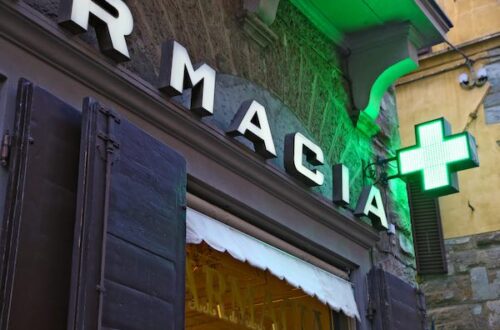
Farmacie: all you need to know about Italian pharmacies (and how they can help you!)
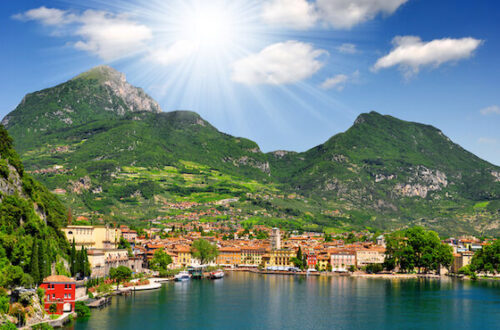
What is the nearest airport to Lake Garda? How to get to the Lake
Privacy overview.

Get our Rail Planner app
Plan your trip, get extra discounts, and show your Pass as you go.

Our favorite spring routes
Celebrate spring with these 7 off-the-beaten-path train routes

All about seat reservations
Everything you need to know about booking your seats

Alternatives to Busy Routes
Travel between popular European cities without seat reservations

Through our Chatbot in the bottom right corner.

Ask the Community
Browse questions from fellow Eurail travellers, or ask your own!
- Plan your trip
- Suggested Itineraries
Italy Itinerary
- Order overview
- Reservations overview
- My Trips & Travelers
- {{translatedTraveler}} {{#promotional}} {{currencySign}} {{standardPrice}} {{/promotional}} {{quantity}}x {{currencySign}} {{finalPrice}}
- Child {{childPasses}}x FREE
- {{translatedPassType}}
- {{translatedValidityPeriodDescription}}
- {{translatedClass}}
- Remove Pass(es)
- {{variant.localizedTravelPackDescription}} {{quantity}}x Free
- {{variant.localizedPassUpgradeDescription}} {{quantity}}x {{currency}} {{price}}
- Your order will arrive by {{expectedDeliveryDate}} 1 x {{currency}} {{price}}
Your cart is empty
Follow this Italy itinerary by train with the Eurail Italy Pass and be in for a real treat. Take a memorable gondola ride along Venice's Grand Canal, set out on a shopping extravaganza in Milan, and tour Rome's magnificent monuments and museums. Reserve a seat on Italy's Frecce high-speed trains for a fast and comfortable journey between the country's major cities. Or, hop on board Trenitalia regional trains and visit Italy's authentic towns and villages. The Eurail Italy Pass gives you the freedom to travel around Italy at your own pace and along the route that you choose.
Itinerary in short
Cities visited in this itinerary:.
Click here or on the map to view this route in our Trip Planner
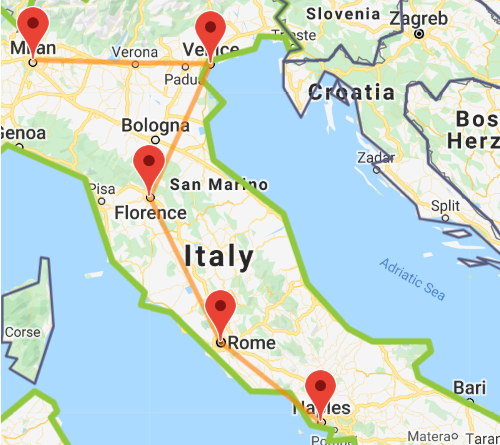
For this itinerary, we recommend:
- Eurail Pass: Italy
- Travel days: 4 days within 1 month
Most of the high-speed trains in Italy require reservations. These reservations are not included in your Eurail Pass. Make sure to book your seats in advance; there are limited seats available for Eurail Pass holders. It's also possible to avoid reservations altogether simply by taking regional trains .
Traveling to France or Italy with a Eurail Pass?
Let us help you get more out of your trip. Sign up to get discounts and insider tips for your destination , including top attractions, local food and drink experiences and more – all delivered straight to your inbox. Just tell us when your trip starts.
Milan, Italy
Milan is Italy's city of class and elegance, with some of Europe's best shopping. Head to Quadrilatero d’Oro for a retail experience to die for with all the major designers concentrated together, such as Prada, Giorgio Armani, and Dolce & Gabbana. By night, get tickets for an opera or ballet at La Scala (Teatro alla Scala) for a memorable night of entertainment from the country's most renowned performers. Leonardo da Vinci's 15th-century mural, The Last Supper, is housed within the Santa Maria della Grazie church and is a must-see on a visit to Milan. Another top attraction to include is the magnificent Milan Cathedral – swoon at the Gothic architecture from the exterior and inside, marvel at intricate stained glass windows and a rich array of sculptures and paintings.
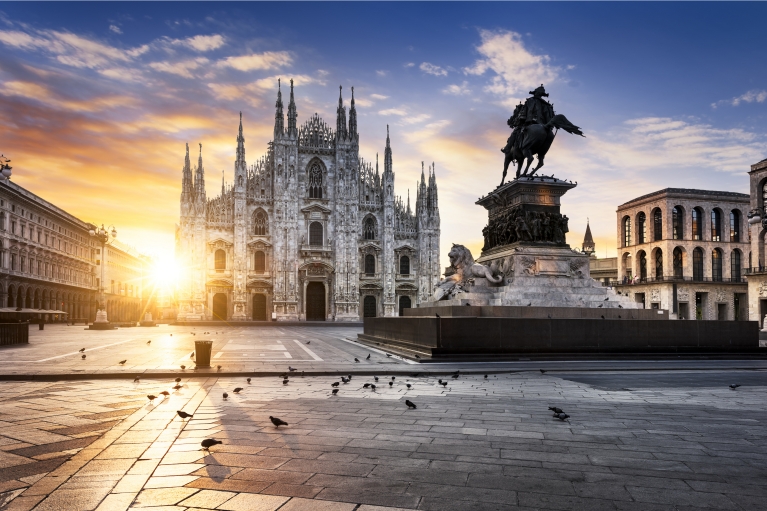
From Milan to Venice
Travel time:
Reservation needed:
Milano Centrale
Reservation required
Venice, Italy
Stazione di Venezia Mestre
If you're searching for an affair of the heart, Venice will reel you in with its artistic setting and labyrinth of enchanting canals. The best way to taste the city's riches is on board the iconic gondola. As you're propelled along the Grand Canal – Venice's most ancient water thoroughfare – admire views of grand Renaissance palaces and intricate arch bridges. Located just off the Grand Canal is Piazza San Marco , drawing in large crowds as well as musicians and artists. The square's centrerpiece is San Marco's Basilica – a fine example of Venetian-Byzantine architecture. The church is known as the "Church of Gold" thanks to its dressing of opulent gilt and intricate frescoes.
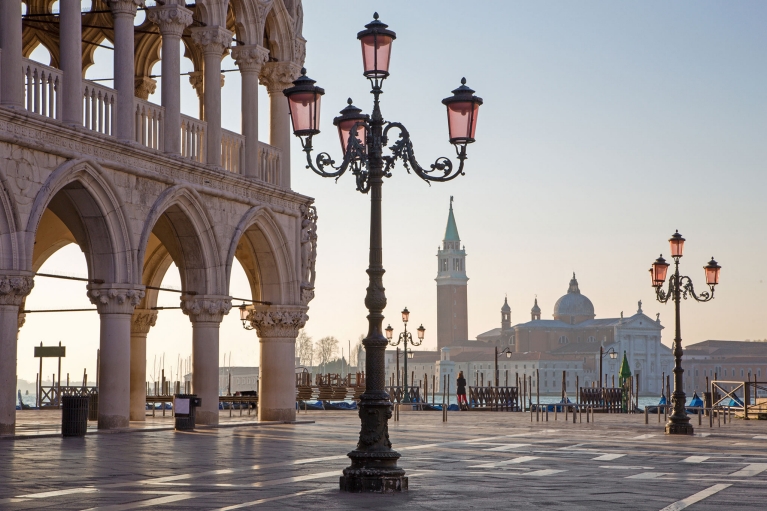
From Venice to Florence
Venezia Santa Maria
Florence, Italy
Firenze S.M.N.
Michelangelo's Statue of David is by far one of the most recognized sculptures on the planet and an absolute must-see on a trip to the Renaissance city of Florence. The original is housed in the Galleria dell'Accademia with a replica standing in Piazza della Signoria. This Renaissance masterpiece represents the biblical hero, David, which is made of marble, and stands at an astounding 17 ft (5.17m). Another popular attraction is il Duomo (Cathedral of Santa Maria del Fiore) – its impressive dome is the symbol of Florence. Climb the 463 steps up to the top for a panoramic vista across the city. The route also takes you to the dome's interior, where you can get up close to Giorgio Vasari's incredible frescoes of the Last Judgment. Whether you’re an art lover, a history buff, or just a curious adventurer, Florence offers a celebration for the eye and palate.
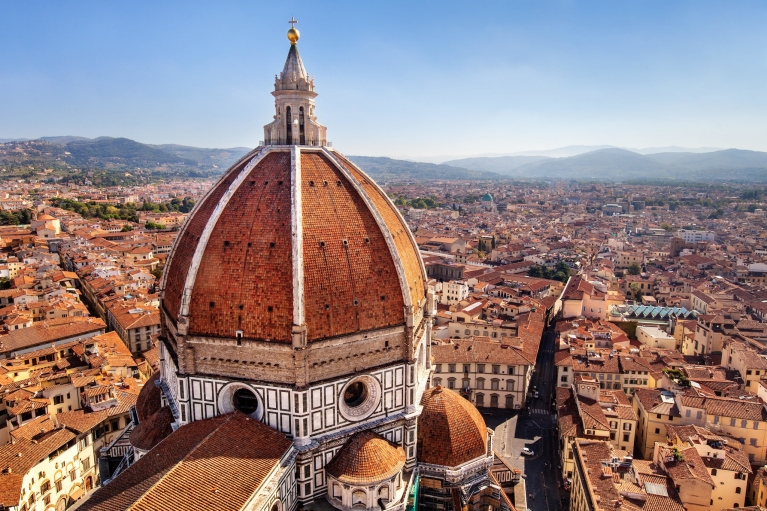
From Florence to Rome
Rome, italy.
Roma Termini
Rome will be the highlight of your Italy itinerary. The Colosseum was the largest ever built in the Roman Empire and is regarded as one of the greatest examples of Roman architecture. Step into the core of the ancient amphitheatre to imagine the buzzing atmosphere of the chanting Roman crowds as barbarous fighting between gladiators took place. Within Rome sits the Vatican – the sovereign city-state packed with fascinating museums and imposing architecture. Take a tour of the Vatican Museums , which were established and developed over the centuries by the reigning Popes. In the Sistine Chapel, you'll see Michelangelo's remarkable frescoes that adorn the walls and ceilings—Nearby is St Peter's Basilica – an impressive example of Renaissance architecture and the holiest Catholic site.
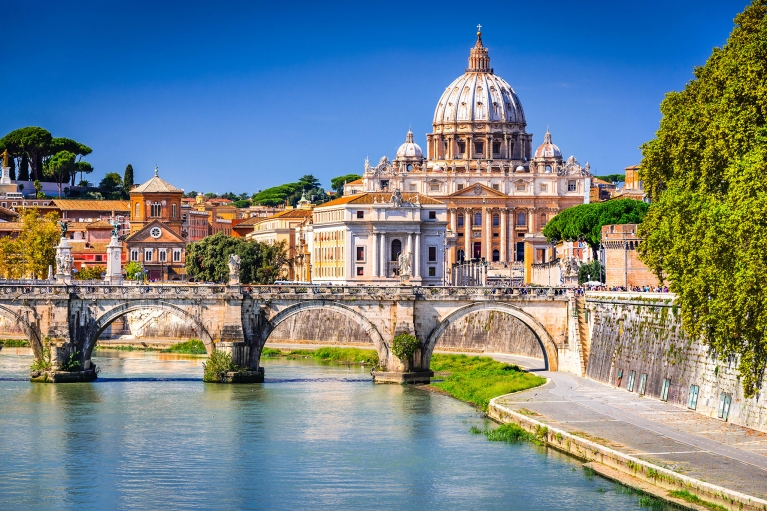
From Rome to Naples
Naples, italy.
Napoli Centrale
If you're looking for an insight into the real, gritty Italy of the south, Naples is your place. The city is Italy's third biggest and has some of the world's best opera houses and theatres. Head to the Bay of Naples for glorious views of Mount Vesuvius – one of Italy's three active volcanoes. Just a short boat ride away is the stunning Capri Island , where wealthy Italians spend their summer vacations. It makes for the perfect day trip from the hustle and bustle of Naples. Take a clifftop walk to admire views across the sun-kissed Tyrrhenian Sea, and be sure to enjoy a refreshing drink of fresh orange and lemon juice – made with fruit hand-picked from the island's groves. The boat ride to Capri is not included in your Eurail Pass.
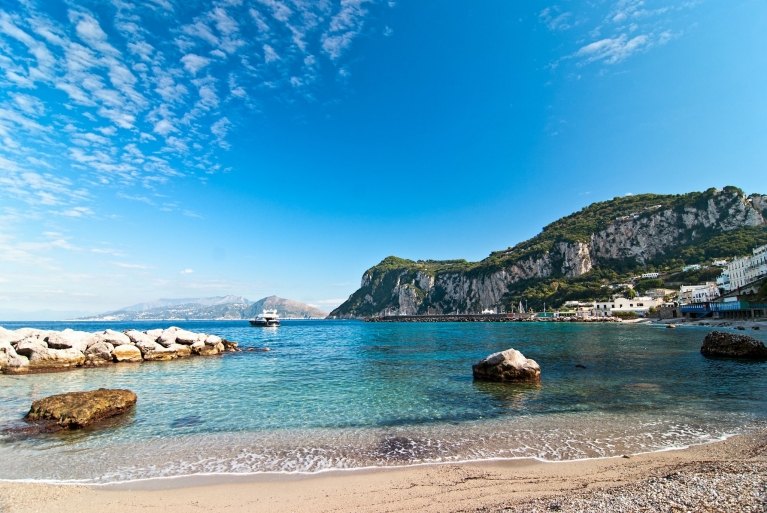
Experience this itinerary with the Eurail Italy Pass!
Change of currency.
You cannot change the currency once you have a Pass in your cart. Remove the Pass, and then change the currency on the website header.

- Switzerland
- The Netherlands
- National Parks
- Affording Travel
- Photography
- Responsible Travel
- Worldschool
- Wanderlust Guides
- Travel Planning
- Work with Us
Europe , Italy , Travel
How to spend 10 days in italy: 5 italy itinerary ideas for 2024.
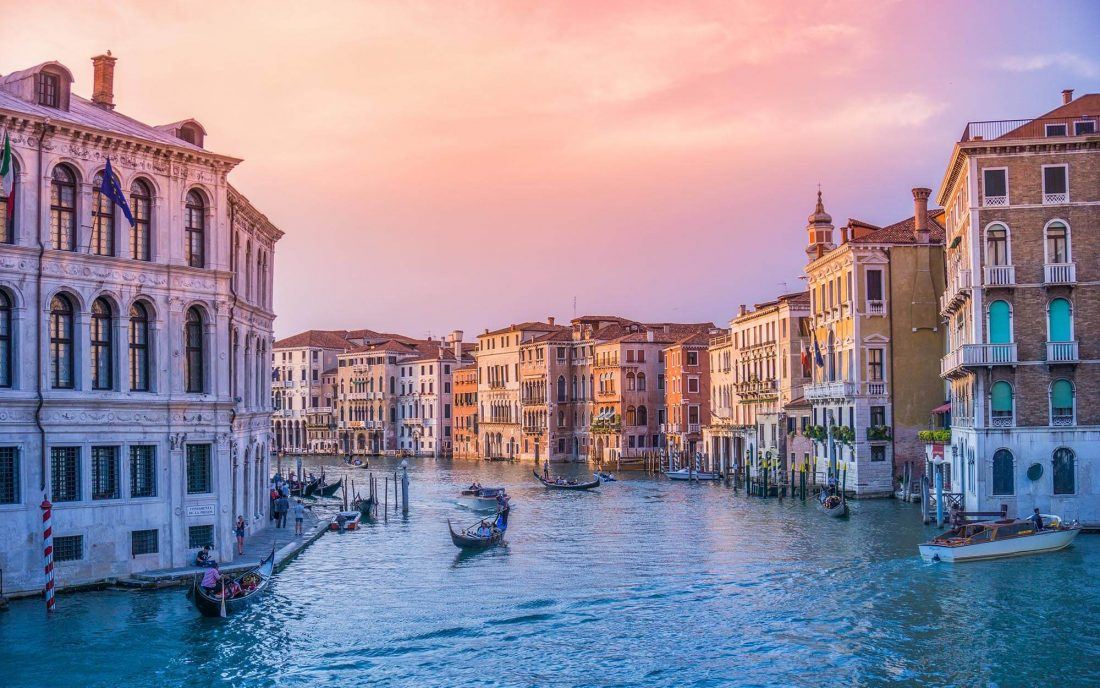
If you’re wondering how to spend 10 days in Italy, I’ve got you covered with these 5 itineraries! Discover the beauty, history, culture, and wonder with the perfect Italy itinerary.
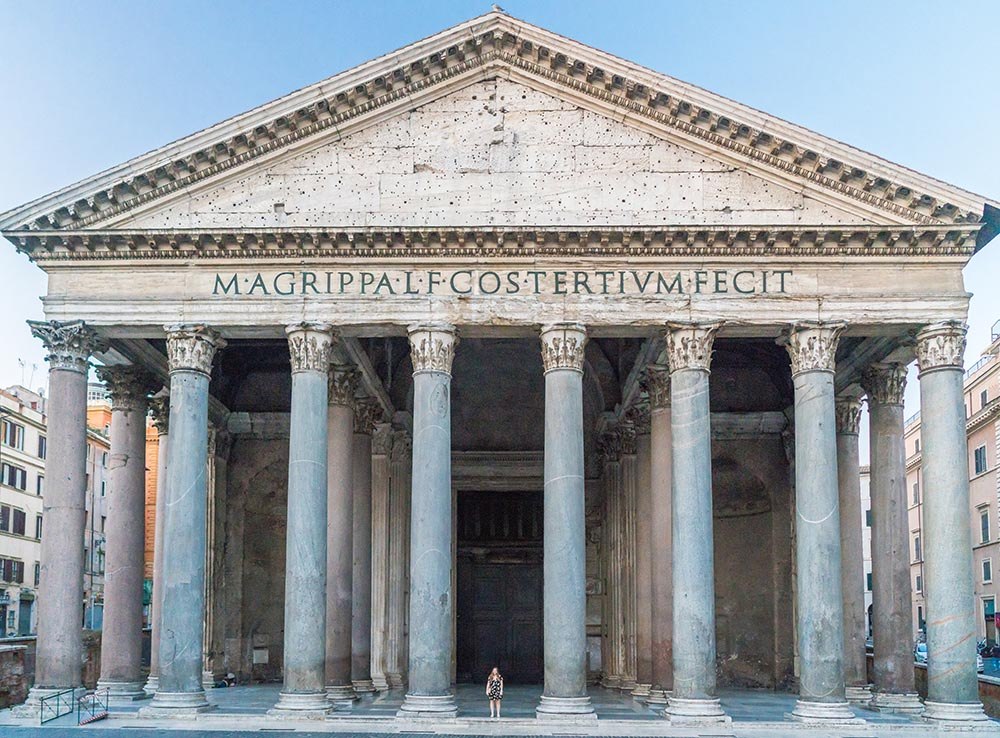
How to Spend 10 Days in Italy: 5 Amazing Itinerary Ideas for your Trip to Italy
Italy is an incredible country that should be on any traveler’s bucket list! Italy has given us so much: the Renaissance, famous artwork, timeless classical music, stunning architecture, pasta, pizza, gelato …need I say more? Not only is Italy the birthplace of so many things, but it is also home to breathtaking natural beauty , from the lakes and mountains in the north to the gorgeous stretches of coastline on either side of the country.
- Here are my top 10 day Italy itineraries:
- Gotta See it All: Rome, Amalfi, Florence, Pisa, Cinque Terre, Milan, Lake Como, & Venice
- Classic Italy: Rome, Florence, & Venice
- Northern Lakes of Italy: Milan, Lake Garda, Lake Iseo, Lake Como , & Lake Maggiore
- Italian Island Hopping: Sardinia & Sicily
- Exploring Tuscany: Florence, Siena, Chianti, & San Gimignano
Here's a Short Cut
Want to skip all the planning and just access my detailed Italy Itinerary complete with interactive maps and daily schedule? Click the yellow button below.
How many days do i need to see italy, how do i plan a 10 day trip to italy, the best time to visit italy, getting around italy, how much is a trip to italy going to cost, first trip to italy suggestions, where are the best places to visit in italy, what to do in italy, what to pack for italy, itinerary #1: gotta see it all, day 1 & day 2: rome, traveling from rome to amalfi, day 3: amalfi coast, traveling from amalfi to florence, day 4: florence, traveling from florence to pisa, day 5: florence/pisa, traveling from pisa to cinque terre, day 6: cinque terre, traveling from cinque terre to milan, day 7: milan & lake como, traveling from milan to lake como, day 8: lake como, traveling from lake como to venice, day 9 & 10: venice, italy itinerary 10 days #2: classic italy, days 1-3: rome, traveling from rome to florence, day 4-6: florence, traveling from florence to venice, day 7-10: venice, itinerary #3: northern lakes of italy, day 1: milan, day 2-3: lake garda, day 4: lake iseo, day 5-7: lake como, day 8-9: lake maggiore, day 10: milan, itinerary #4: italian island hopping, day 1-5: sardinia, getting to sardinia, day 6-10: sicily, getting to sicily, itinerary #5: exploring tuscany, day 1: florence, day 2: home base, day 3: lucca & pisa, day 4: home base, day 5: chianti, day 6: home base, day 7: san gimignano, day 8: home base, day 9: siena, day 10: florence, practical tips for booking your trip.
We love Italy and have spent time living there and also being tourists there many times! It’s one of our favorite places to visit over and over again.
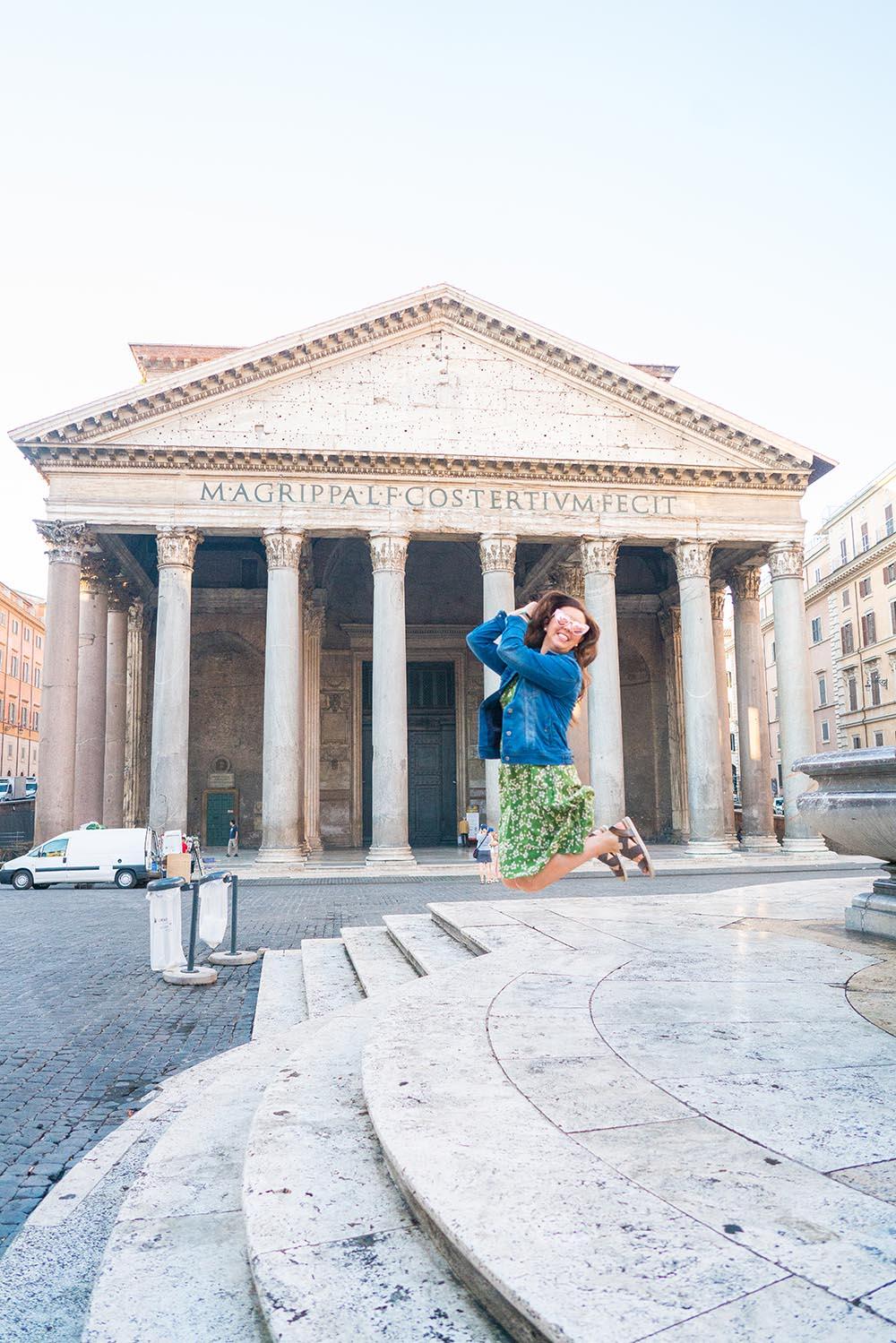
Any trip to Italy will be amazing, but I wanted to give you a few Italy itinerary options to choose from. They are all great options, but everyone has different tastes, and one might be a better fit for your needs and group.
If you want to learn more about Italy before planning your trip, be sure to read my complete Italy Travel Guide.
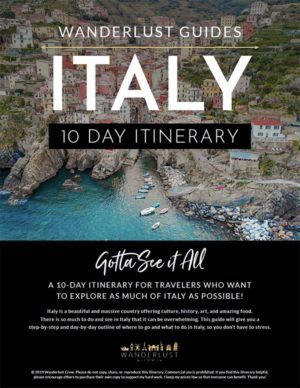
Join my Italy Travel Group on Facebook for more helpful tips!
How long should you plan for your trip around Italy? How about indefinitely? Two weeks in Italy is really nice, but if that’s not an option for you, I think that 10 days in Italy is a good amount of time for your first visit. It will allow you to see around three sites without getting too worn out, and it’s the average paid vacation time for most Americans.
A full 10 days in Italy gives you enough time to visit several cities in the country and have some in-depth experiences without feeling too rushed. But if you only have one week in Italy, you can still have a great time. Just cut one location out of any of these itineraries and you’ll be fine! There are so many things to do in Italy and you’ll never be able to see them all, but you can see the best!
If you’re stressing about how to plan a trip to Italy, take a deep breath. Anywhere you choose will be great! Once you’ve decided to spend 10 days in Italy, it’s time to get planning your trip! This is the fun part, but it can also be pretty stressful. Be sure to read all the information here , and once you pick which itinerary works best for you, do all the research you can!
The best time to travel to Italy can be a tricky question! The best time to go to Italy will be different depending on what you want to do or see. If you want to see snowy mountains in the Dolomites or go skiing, obviously you’ll want to go in the winter. If you want to spend most of your time on the beach, you’ll want to go in the summer. Summer in Italy can be hot, humid, and really crowded. So if you want to see the big cities, it’s best to go during shoulder season (April-May or September-October).
The best time of year to visit Italy is probably May or September in my opinion. Keep your preferences in mind when choosing when to go to Italy. I give my recommendation for each itinerary below.
Getting around Italy can be fun and easy! In my opinion, traveling by train is the best way to travel around Italy and see the country. It allows you to sit back and relax between destinations, and with the cost of fuel and tolls in Italy, it’s actually the most affordable way to travel Italy. Traveling around Italy by train can sound a little scary if you don’t know what you’re doing. Be sure to read my guide so that you feel confident before booking tickets and traveling by train.
Read My Guide to Train Travel in Italy Here
Many will recommend purchasing a Rail Pass for your trip to Italy. A Rail Pass allows you to ride many trains in Italy without a reservation. This means you can hop onto almost any train in Italy. You can read more about it in my Italy Train Guide . Depending on the length of your trip, how often you’ll be riding trains, which trains you’ll be taking, and how many countries you’re planning to visit in Europe , it can be a great deal…
But it can also be a waste of money . For these itineraries, I don’t recommend buying one. I’ve done the math on each of these itineraries and I don’t think it’s worth it. If you are straying from any of these Italy itineraries, you really need to do the math and decide if it’s right for you. This Italy Train Guide lays all of the information out for you.
There are some areas in Italy that I think it’s definitely worth renting a car! In the northern lakes, dolomites, Sardinia, and Tuscany are all great places to drive in Italy. That can be a little terrifying in some areas. Be sure to read this guide to driving in Italy. I always tell people that once you drive in Italy you can drive anywhere!
If you’re renting a car, there are two companies we prefer to use: Rental Cars and Expedia Cars. We have had no issues with them and have been able to find the best prices available.
How much does a trip to Italy cost you ask? Your trip to Italy cost will be very different than the next person. You’ll need to budget for your 10 days in Italy. Your budget will depend a lot on where you choose to go. Large cities like Rome, Venice, and Florence will be more expensive than staying in the countryside.
Italy uses the Euro like a lot of Europe. The exchange rate is usually around .90 Euros to 1 USD. Food costs around the same as in the US, fuel is a lot more expensive, and accommodation will vary widely.
I would plan on spending around €100-300/night for accommodations depending on your group size and level of luxury. If you’re a small group, VRBOs and house rentals can be very cheap! If you’re traveling Italy on a budget, I highly recommend using VRBOs over hotels.
If you’re planning a trip to Italy, you’ll want to follow my basic advice, especially if its your first trip to Italy!
- Learn a few basic words in Italian (grazie, ciao, preggo)
- Be sure to validate your train tickets (avoid getting a €300 fine and read this! )
- Try the local food and venture away from the main tourist sites to get it
- Be sure to pack an Italy-specific power adapter (they have 2 types of plugs). I use THIS ONE for Italy specific plugs. And THIS ONE for European plugs also found in Italy.
- Beware of pickpockets ( you can learn about what happened to me here )
- Beware of a Coperto charge. This is a charge to sit and eat.
- Read my Tips for Visiting Europe
Where to go in Italy you ask? When planning your trip to Italy, think about what is most important to you. The country is so large, it can be overwhelming. After visiting Italy 5 separate times, I have found it best to focus on one region of the country at a time if possible. I know that it’s so hard to visit Italy and not want to see it all, but you won’t want to spend your entire trip on a train, or in a car, or on a plane.
See this list of the best places to see in Italy
While it’s tough to say just which are the best places to visit in Italy, because, let’s be honest, all of Italy is so dang amazing, I do have some personal favorite Italy vacations. When I help friends plan their trip to Italy, I like to give them a little taste of everything: city, history, nature, beach, culture, and food!
I love getting off the beaten path, but there are just some places that are a must see in Italy! There are literally hundreds of choices you can make for your first Italy itinerary, and they would all be amazing. Every person or group has different preferences and interests. That’s why I have created five different 10 day Italy itinerary ideas for you.
You’ll have tons of amazing things to do in Italy, and what you choose to do will largely depend on where you go and what time of year you go, but here are some of the top things to do in Italy:
- Take a cooking class
- Eat gelato at least twice a day
- Go to the beach
- Visit ancient ruins
- Ride on a Vespa
Download my FREE Italy Bucket List by clicking here.
Packing for Italy can be tricky depending on the time of year you’re visiting. Our family backpacked around Europe , spending an entire month in Italy. You can see our Italy Packing List here. No matter what time of year you go, be sure to pack a good pair of walking shoes. I love these sandals for warmer months and these boots for colder months.
The Best Way to See Italy in 10 Days 5 Italy Itinerary Ideas
I’ve compiled 5 itineraries for your 10 day trip to Italy. Any of these will be a great choice, it just depends on your personal preferences and what you really want to prioritize during your time in Italy. I’ve made some really classic itineraries and some more off the beaten path itineraries! Each Italy trip itinerary has been tried and tested by myself and I can highly recommend any of them. These are my top 5 Italy vacation ideas.
When to go: Shoulder Season (April-May or September-October)
This is one of the best Italy vacations for really energetic and active travelers. This itinerary is great for those visiting Italy for the first time, who think they may never have the opportunity to return again. Not everyone travels all the time, which is totally understandable. Some can’t afford to travel often, and some don’t really want to. If you think you’ll only be in Italy once in your life, this is the itinerary for you. It’s definitely an aggressive itinerary that requires you to move through the country nearly every day and spend about one day in each city, but it can be done!
I’ve done this Italy itinerary several times with friends and with my kids. It’s exhausting, but doable, and you’ll so SO much!
If you want to make your life easier, you can purchase this full itinerary , which includes interactive maps, an hour by hour guide, walking you through each moment of your trip. This full itinerary provides you with specific tours and classes, and exact train schedules, as well as recommended accommodations. My interactive 40 page PDF contains everything you need to pull off this amazing itinerary!
Rome, Amalfi, Florence, Pisa, Cinque Terre, Milan, & Venice
Day 1: rome, day 2: rome, day 5: florence & pisa, day 9: venice, day 10: venice.
Most affordable flights to Italy will take you to Rome. It’s where I’ve flown into every time I’ve visited Italy. But shop around and find the best deal because you can begin this Italy itinerary at any point.
You can start your Italy itinerary anywhere you wish, but I always recommend starting in Rome . Rome is the third most visited city in Europe, after Paris and London, with 7-10 million visitors per year, and for good reason.
Rome is full of art, history, culture, and amazing food. It is incredible to wander down a street and suddenly come upon an ancient structure or statue! Ancient history is everywhere in this large city.
When you first arrive in Rome, jetlag will probably get the best of you. Give yourself a day to recover and take in all the beauty (and gelato ) that this ancient city has to offer. You’re going to get here and never want to leave.
There is so much to see and do in Rome, it could literally take you a lifetime. Don’t be discouraged by not being able to do it all. There is still so much that you can see just in a day and a half! Be sure to read my guide to Rome in One Day before you go.
Things you shouldn’t miss in Rome:
- Wake up early to beat the crowds
- Vespa Tour of Rome ( more info here Seriously one of the best things to do in Italy)
- Tour the Colosseum BOOK HERE
- See St. Peter’s Basilica BOOK HERE
- Wander Trastevere
Read More: What to do in Rome for a Day
You can easily get from Rome to the Amalfi coast by taking the train from Rome to Naples . From there, I recommend either taking the bus system along the coast, hiring a driver, or renting a car. Or even better, a Vespa! Parking is crazy along the Amalfi Coast . There are parking garages, but they fill up fast and cost a lot, so just be prepared and bring cash.
Time: 1 hour 10 minutes Cost: $24- Adults $12- Children
The Amalfi Coast is a gorgeous stretch of coastline that you could honestly spend weeks in, lazing away on the picturesque beaches and soaking up the sun. But if you’re on a mission to see it all, take an entire day to relax and enjoy the sites. There are many small towns dotting the winding coastline. I recommend picking one and spending a few hours at the beach.
I personally love the beach at Atrani because you don’t have to walk down a thousand stairs like Positano, but you still get that beautiful and classic look of Amalfi! You can rent 2 beach chairs and an umbrella on the beach for €20 cash.
Here are the things you cannot miss on the Amalfi Coast
- Spend at least one day on the beach
- Drive along the coast
- Take a day trip to Capri BOOK HERE
- Discover more things to do on the Amalfi Coast here
After you’ve had a relaxing day on the Amalfi Coast, it’s time to head to another classic city in Italy: Florence! Hop back on the bus or rental car or taxi to Naples , then take the train to Florence .
Time: 2.5 hours Cost: $44- Adults $22- Children
Florence is a beautiful city that is home to much of Italy’s Renaissance art. Home to Michaelangelo, da Vinci, Brunelleschi, Buonarroti, and Botticelli just to name a few, Florence is overflowing with ancient art and architecture! Spend a day and a half exploring museums , walking along the Ponte Vecchio , and eating gelato in this renowned city of culture. Tours and tickets MUST BE BOOKED IN ADVANCE ! Especially if you are going during the busy season.
Here are things you should not miss in Florence:
- See Michaelangelo’s David BOOK HERE
- Walk up the Duomo BOOK HERE
- Visit the Uffizi Gallery BOOK HERE
- Visit the Boboli Gardens
For the last half of your second day in Florence, I recommend a quick trip to Pisa on your way to Cinque Terre .
Time: 1 hour Cost: $11- Adults $5- Children
Head to Pisa to see the famed Leaning Tower of Pisa ! Yes, it’s touristy, but worth seeing, especially if this will be your only time in Italy. Going up to the top is really awesome. Kids must be 6 or older and you can book your tickets here.
After you’ve spent a few hours in Pisa, it’s time to head back on the train to Cinque Terre. Which town you train to will depend on which of the 5 towns you stay in. But if you don’t know that yet, you can book tickets to La Spezia and pick up a regional train to any of the towns Cinque Terre towns last minute.
Time: 1 hour Cost: $12- Adults $6- Children
Cinque Terre is one of my very favorite places in Italy ! It was one of my best trips to Italy and i t’s what I picture parts of Italy must have looked 100 years ago! Cinque Terre, translated, means Five Lands , and is the area consisting of five villages: Monterosso, Vernazza, Corniglia, Manarola, and Riomaggiore . They are all equally stunning, and whichever one you choose will be amazing. They all have their own special charm, and they also all have their own pros and cons. Read my complete guide to Cinque Terre to help you decide which town to stay in.
The beautiful towns built on cliffs are honestly one of the best things to see in Italy. Be sure to spend some time in the ocean during your time in Cinque Terre. Monterosso has a beautiful white sandy beach with chairs and umbrellas. I recommend that you spend at least two nights in Cinque Terre so that you have a full day and a half to explore all the towns. There is a train that goes between each town so that the area is very easy to navigate.
Here are things you should not miss in Cinque Terre:
- Visit all of the five towns by train
- Take the ferry at least once so you can see Cinque Terre from the water
- Eat gelato in every town
Once you’ve done some relaxing in Cinque Terre, hop on the train to Milan.
Time: 3.5 hours Cost: $26- Adults $13- Children
Stop into Milan for a quick trip to see the Duomo Cathedral and the Last Supper , which must be booked in advance ! Now you’re on your way to Lake Como!
You have two great options for exploring Lake Como. You can either take the train and ferry around Lake Como, or you can rent a car. If you want to see more of the remote parts of Lake Como in the north, or just drive around the lake, I suggest you rent a car. But taking a train is simple and affordable. It’s just a matter of preference. I suggest that you take the train to Varenna where you can catch a ferry to Bellagio or Menaggio, Lake Como’s major towns.
Time: 40 minutes Cost: $8- Adults $4- Children
Welcome to one of my favorite places on earth. With gorgeous lakeside villas and a relaxing atmosphere, it’s one of the most beautiful places in Italy. I recommend you spend your time boating around the lake and checking out all the magnificent houses, wandering the streets of Bellagio, and renting a scooter to explore.
Things you shouldn’t miss in Lake Como:
- Rent a boat
- Visit George Clooney
- Villa del Balbianello (from Star Wars)
It’s time for your last train ride in Italy! Take the train from Varenna to Venice (be sure to book San Lucia and not Mestre). This will take you to the heart of Venice. From there you can take a water taxi or water bus to anywhere in the city.
Time: 4 hours Cost: $36- Adults $18- Children
You’ll be spending the last two days of your Italy trip in the lovely Venice. There’s no place on earth like it! Spend your last moments in Italy floating down the canals, getting lost in the winding alleyways, and eating gelato ! Read all about what to do in Venice before going.
Things not to miss in Venice:
- Gondola ride BOOK HERE
- Boat Ride to Colorful Burano BOOK HERE
- Murano Glass tour BOOK HERE
- Doge’s Palace & Bridge of Sighs BOOK HERE
- Book a Photoshoot in Venice: BOOK HERE (use code WANDERLUST) for a discount.
If this itinerary feels right for your 10 days in Italy, you can get the complete itinerary here. Let me do all the work for you!
This is the best Italy itinerary for someone who wants a really classic experience . It covers the most important sites and major cities in Italy that most visitors will want to see on their first trip to Italy. This Italy itinerary allows you to spend a few days in each location, so you can get to know each city a little better. You can do this itinerary in any order, but most people choose to start in Rome.
Rome, Florence, & Venice
Day 1-3: rome.
You’ll begin your classic tour of Italy in the capital of Italy. There is so much to see in Rome, you’ll be glad you have three days to see it!
Here are some ideas for your 3 days in Rome:
- I recommend getting up early in the mornings to see sites like the Pantheon and Spanish Steps before the rest of the tourists wake up. The city is so beautiful in the morning light.
- Your first day in Rome is a great day to take a guided tour of the city so that you can get a lay of the land and check the main sites off. I recommend taking a Vespa Tour! It’s so much fun and even kids can go. Knowledgable tour guides drive you around the entire city, stopping to show you classic and little-known sites. They even stop for gelato. Read here for more Vespa Tour information.
- Eat dinner in Trastevere , where you’ll find many tiny little restaurants all serving delicious and authentic Italian cuisine.
- Try several gelato shops each day to find your favorite. Read this to find out the best gelato shops in Italy. My personal favorite is Gelato del Teatro!
- Take a cooking class . Rome is home to some of the best food in the world. Don’t skip out on learning how to make it yourself. This cooking class is amazing and I love this food tour.
- If you’re visiting Rome with Kids, there is so much to do! My kids love Rome, and not just for the gelato. Read my guide to Rome with kids.
- Book a Photoshoot in Rome: BOOK HERE (use code WANDERLUST) for a discount.
You can take a direct train from Rome to Florence in under an hour and a half. It’s an easy train ride from city center to city center.
Time: 1 hour 20 minutes Cost: $22- Adults $11- Children
Florence, the birthplace of the Renaissance, is a must for your classic trip to Italy. You’ll have the opportunity to see celebrated artwork and architecture.
Some ideas for how to spend your next few days in Florence:
- Walk the Ponte Vecchio: This ancient bridge has been around forever and is one of the most iconic sites in Florence.
- Take a Food Tour of Florence: BOOK HERE
- Take pictures in the iconic Florence photobooth
- Book a Photoshoot in Florence: BOOK HERE (use code WANDERLUST) for a discount.
- Walk up the Duomo . You’ll need to get tickets for this, but this massive, iconic building is just gorgeous.
- Tour the many museums of Florence. Don’t miss Michaelangelo’s David.
You can easily get from Florence to Venice by train. Be sure to buy tickets to Venice Santa Lucia and NOT Mestre ! Santa Lucia will take you directly to the archipelago of Venice while Mestre takes you to the industrial part of Venice.
Time: 2 hours Cost: $37- Adults $17- Children
Spend the last few days of your classic Italy itinerary in Venice. It’s one of the best cities in Italy and unlike anywhere else in the world. If you play it right, Venice can be a relaxing way to end your trip. I seriously recommend waking up with the sun and exploring Venice in the early hours while it’s quiet and not overcrowded. It is truly beautiful. When it starts to get too busy or hot, go back to the hotel and take a nap! Then go back out around dinner time and explore until dark. I’ve done this during several trips to Venice and it was perfect!
Be sure to take advantage of the Vaporetto (public water transportation) and visit the islands of Murano and Burano!
Here are some ideas of things to do during your time in Venice:
- Take a Mask Making Class BOOK HERE
- Take a Murano Glass Tour BOOK HERE
- Visit Burano BOOK HERE
- Take a Gondola Ride BOOK HERE
- Go on a Food Tour BOOK HERE
When to go: Summer
This Lakes of Northern Italy itinerary is one of my favorites, and not something that most people try. This is best Italy itinerary if you’re intereseted in exploring the beautiful lakes of Northern Italy. It’s some of the most gorgeous scenery you’ll ever see in your life.
I love this itinerary for a family trip to Italy. I do recommend that if you choose this itinerary, you book a trip for late spring or early fall as the lakes do get crowded during the summer, and are very cold during the winter months.
Each lake has something unique to offer and it’s worth visiting all of them, but if this itinerary seems a little intense for your 10 days in Italy, I recommend cutting out one or two lakes and just sticking with two or three areas. The great thing about this itinerary is that you’ll also be able to see Milan, so you’ll get a taste of a large Italian city while also enjoying the countryside and beach time.
For this Northern Italy itinerary, I highly recommend flying into Milan and renting a car. The lakes and northern scenery can be best seen while taking leisurely winding drives around the lakes.
Milan, Lake Garda, Lake Iseo, Lake Como, & Lake Maggiore
On your first day of this 10 day Italy itienrary, you will fly into Milan. Here you can spend an entire day or half day exploring the city. Be sure not to miss the imposing Duomo of Milan and The Last Supper if you are interested in art history.
Known for its crystal clear waters, Lake Garda is a beautiful destination for relaxation and fun. Be sure to visit the stunning Scaligero Castle for magnificent views. You can also visit Gardaland , a great family amusement park!
Lake Iseo, known as Lago d’Iseo is a little-known lake between Garda and Como that is a hidden gem in Italy. You can spend your time here hiking, ferrying across the lake, or visiting Grumello Castle.
Lake Como is one of the best places in Italy and one of my favorite places on earth. Yes, it’s popular, but its worth spending at least a few days here. We spent several months and never got sick of it! Rent a boat and cruise the lake yourself and visit the famous town of Bellagio. You can read all about what to do in Lake Como here.
Laggo Maggiore is the second largest lake in Italy and claims both Italy and Switzerland as it crosses the borders. It is located just south of the Swiss Alps which means there are beautiful mountains surrounding the lake all with incredible views. As such a large lake, you have many options for where to stay. There are beautiful lush gardens and old villas dotting the lake. you really can’t go wrong!
Head back to Milan after your wonderful 10 days on the lakes of Italy.
Sardinia and Sicily are the two largest islands in the Mediterranean Sea and are both worth visiting. You can easily ferry between the two islands via an overnight ferry, which can be really fun. Both islands offer a unique taste of Italy that is something a little different from the mainland boot!
Sardinia & Sicily
Spend 5 days on this beautiful Italian island that is the second largest in the Mediterranean Sea. It’s one of my favorite places to go in Italy to enjoy the beach! With over 1,200 miles of gorgeous coastline, sandy beaches, Star Wars-esque rocky beaches, beautiful mountains, and centuries of history, it’s an easy choice for anyone looking for a tropical Italian holiday. Italy beaches are known as some of the best in the world, and, in my opinion, most of them are on Sardinia!
Sardinia is known as a “Blue Zone” which means that people who live here live longer than anyone on Earth. The people there are so friendly, the food is amazing, and the scenery is absolutely breathtaking!
You can fly to Sardinia, or you can take the ferry from Livorno to Olbia, or take the ferry from Sicily to Cagliari. Depending on which side of the island you decide to spend most of your time on (remember, it’s huge) either one of these could work for you.
Time: Livorno to Olbia: 8 Hours Trapani to Cagliari: 11 hours Cost: Around $70/person with a car (extra for private room for overnight ferry)
Mountains, history, food, beaches…Sicily really does have it all! It’s one of the best places to vacation in Italy for sun lovers. Located in the soccer ball of Italy, just off the toe of the infamous boot, Sicily is the largest Meddeteranian island and worth spending a few days on. Sicily boasts some of the best beaches in Italy and evenin the world, like Cefalu, San Vito Lo Capo, Isola Bella, but also offers a rich history and culture as well as a delicious tradition of cullinary delights. Spend time on the beach, hiking, visiting ancient ruins , and tasting classic Sicilian food . It’s a great place to take a cooking class (BOOK HERE) .
Sicily is a great place to have a car so that you can really see the island. Read this guide to an Italy road trip in Sicily .
You can fly to Sicily or take the ferry over. Flying into Naples and driving 4.5 hours down the coast can be beautiful and gives you the option of stopping in the Amalfi coast if you have time.
Time: Naples to Sicily: 5 Hours Cost: $40/person (ferry)
Exploring Tuscany is one of the most classic Italian experiences you can have. What I love about visiting Tuscany, especially as a family, is that it is laid back and you can usually rent a nice villa with a pool for a good price on VRBO, while being surrounded by enchanting scenery. I’ve created a list here of beautiful villas in Tuscany at affordable prices (ps. most of them have pools)!
For this Tuscany Itinerary, I highly recommend picking a home base in one place and taking day trips from there. Everywhere on this list is an easy drive or train ride from anywhere in Tuscany. Maybe take a day trip every other day from your home base. This is perfect if you want to do an Italy road trip through Tuscany.
If you’d rather base yourself in Florence and take a day trip to San Gimignano, Siena, and Chianti, this is a great tour that hits all those locations.
Florence, Siena, Chianti, San Gimignano, &
Visit Florence for a day trip. Enjoy the ancient feel the the city, walk the Ponte Vecchio, visit famous museums and see incredible artwork!
Spend time enjoying your Tuscan Villa. Look for cooking classes near you and try local food.
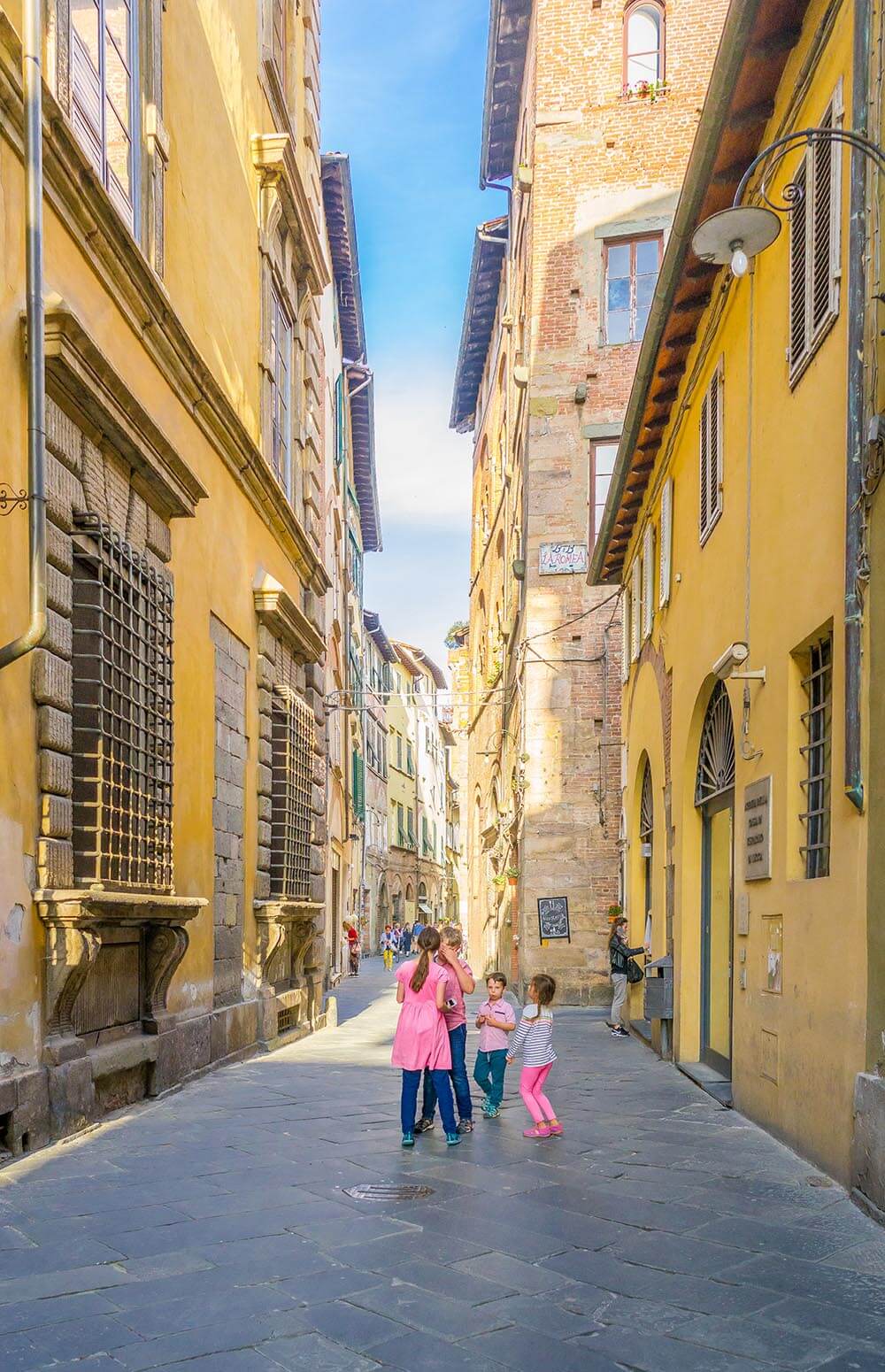
Take a day trip to the beautiful city of Lucca, stopping in Pisa on your way there. Climb up the leaning tower of Pisa (you must book in advance) .
Spend the majority of your time in Lucca, an amazing walled city, largely free from traffic and filled with beautiful architecture. I think it’s one of the best cities to visit in Italy. Rent a bike and ride around the ancient walls of the city. You can even take a self-guided bike tour of the city. Be sure to grab a few gelatos during your time in Lucca as these were some of my favorite gelato shops in Italy.
Take a day to explore your own little Tuscan town. Sometimes the local hidden gems can be your favorite part of your trip to Italy! You never know what you’ll find. As the locals what they recommend doing nearby.
With lush vineyards, olive groves, and hilltop towns, Chianti is a beautiful region of Tuscany. This is a great area to take a scenic drive or rent bikes to enjoy more views. If you’d like some help seeing Chianti, you can actually book a half day tour that will take you to all the best spots.
San Gimignano is a beautiful and well-kept walled city in Tuscany. This medival city still has its original house towers.
This beautiful medival town will steal your heart the moment you enter its walls. Be prepared to climb some steep hills in Siena. Grab a pizza and hang out on the Piazza del Campo, the fan shaped public square where everyone comes to enjoy the city.
Spend one last day in Florence seeing the sites before heading home.
Whichever itinerary you choose for your trip to Italy will be wonderful. You really can’t go wrong by choosing any of these. I love helping my readers plan their travel, so if you need any help please reach out to me on Facebook or Instagram . You can learn more information about traveling to Italy on my Italy Website, I Heart Italy . If you want some great tips on traveling Italy, join my Italy Travel Group on Facebook for more helpful tips!
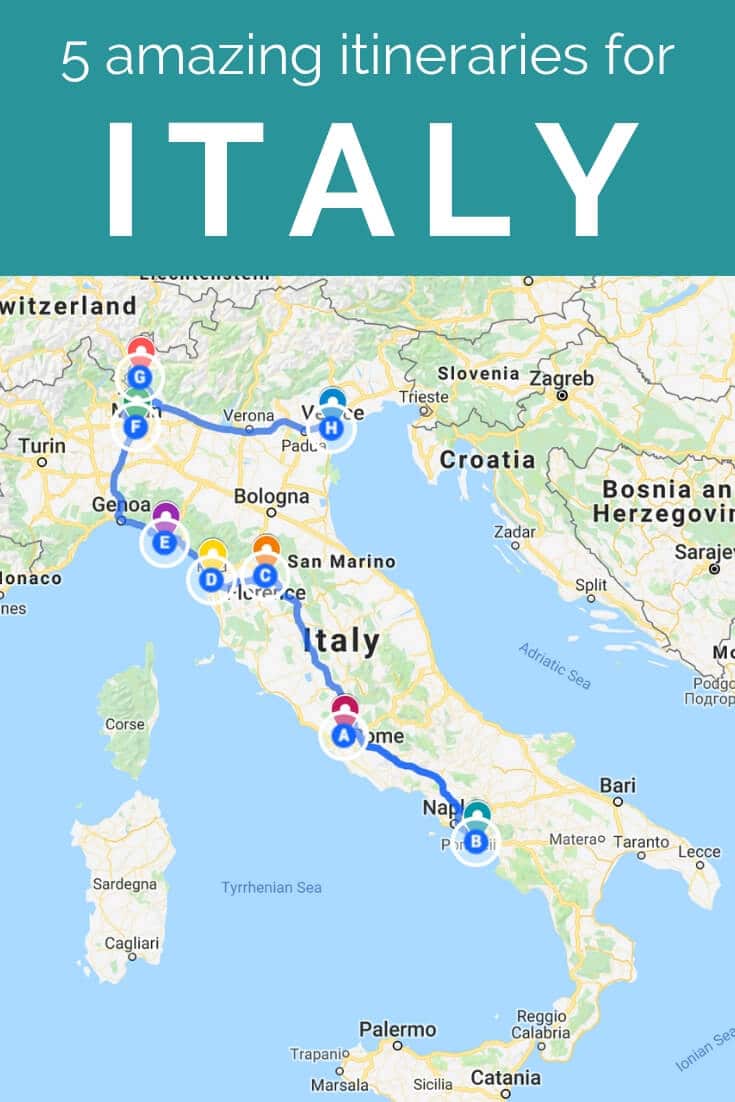
Book Your Flight s and Car Find a budget airlines by using Skyscanner . This is my favorite way to search for flights because they crawl websites and airlines around the globe, so you always know you’re getting the best deal. Learn more tips for finding the best flight deals here. For cars, I like to use Rental Cars because they have good filters and its easy to search for multiple companies.
Book Your Accommodation My preferred way to stay around the world is VRBO . I find it usually gives you a unique local experience in any destination. If you want to stay in a hotel, use Booking , as it consistently gives the cheapest rates for guesthouses and hotels. I use them both all the time.
Always Get Travel Insurance Travel insurance protects you and your family against illness, injury, theft, and cancellations. It’s peace of mind in case anything goes wrong. I never travel without it. I’ve been using World Nomads for the last few years and love how easy it is to use. I have also used Allianz . Compare rates to see which is best for the coverage you need.
Looking for ways to save money on travel? Check out my resource page for the companies I use for traveling! I share everything I use to save me time and money.

Wanderlust Crew
26 thoughts on “ how to spend 10 days in italy: 5 italy itinerary ideas for 2024 ”.
Thanks for your detailed descriptions of each place. I am so tempted to visit all of them but I will be on a cruise this time. If you only have one day to visit between Pisa, Florence, and Cinque Terre, which one(s) would you recommend? We are a group of multi-generation travellers (incl 1 72 yo and 1 4 yo kid). Thanks.
Hi Angie! A cruise sounds so incredible!! You’re going to love Italy. Hands down I would choose Cinque Terre! All 5 towns are so incredible and they are easily accessible by the trains. Not sure of the stamina of the 72 year old and the 4 year old, but I would avoid Corniglia just because there are a million stairs! There IS a bus that will take you from the train station to the top of the town though, but it was very crowded and unreliable. Riomaggiore and Vernazza were my favorites though. You’re going to love it! Let me know where you end up going! Have the best time!! xo Vanessa
Just purchased your 10 day itinerary and love it! Hubby and I are planning for Sept/Oct 2020 for 2 weeks. We are thinking about using 5-6 of those days to visit Sardina while we are there. Any suggestions for trimming a few days off the 10 day itinerary and suggestions for Sardinia. Or, is it too much to add Sardinia in 2 weeks? Thanks! Erin
Hi Erin, I’d cut out Lake Como and Venice and head to Sardinia instead. We spent a month in Sardinia last year and loved it. It’s super low key and not very touristy! Feel free to email me if you’d like help with a customized itinerary. xo Vanessa
Hi there. We are a family of three (1 son age 13yo) traveling to Italy in mid/end of May 2020. We definitely want to see Rome and then I am torn between going north(Florence/NW(Cinque Terre)/really North Dolomites/Alps)or South towards Sorrento and Amalfi coast. We have 10 days flying out of NYC. We are first time visitors to Italy and don’t want a jam packed schedule. Can you point me in the right direction? Love all your info! TY!
Hey Diane! That sounds like an amazing trip. I agree, especially with teens you don’t want to pack too much in. How long are you in Italy for? I would recommend flying into Rome, spending 2-3 days there, then catching the train to Cinque Terre. Then spend a day in Florence and see the famous artwork. With teens I like to break up the history/culture with some beach time! You can read more about Cinque Terre here: https://wanderlustcrew.com/things-to-do-in-cinque-terre/ May is a great time to go. Great weather, but not too crazy busy! Let me know if you need more help planning! xo Vanessa
We are there for 10 days. I decided Rome/Florence for day/Cinque Terre/Lake region and home out of Milan. I have read all your i fo and LOVE it. Ty!
That sounds perfect! Definitely spend some time in Lake Como!! It’s one of my favorite places ever! Good luck and holler if you need help! Enjoy!
What do you do with the bags, when you do the half day tour to Pisa enroute to Cinque Terre. Is there storage facility at the train station?
Hey Danny! Great question! There are storage lockers in the Pisa Train station. You can find that here: https://www.stowyourbags.com/en/shop/pisa/luggage-storage-pisa-centrale-station/
Hi there. We are couple planning our vacation to Italy, we will be there for 12 days. We are flying into Rome so we will spend some time there, we also plan on going down to the Amalfi coast. We would like to add another spot or two to visit during our trip, we’ve both been to Florence, so we were thinking about maybe doing an Airbnb in Tuscany, or perhaps going somewhere south since we’ll be in Amalfi. We are not really sure what to do. Any suggestions/or recommendations would be appreciated. Thank you!
Hi Charles. Have you thought of visiting Puglia or hopping a flight to Sardinia or Sicily for something a little different? Renting a house in Tuscany would also be lovely. You honestly can’t go wrong!
Great post with lots of helpful information in Italy travel. Italy is my favorite country, I just can’t get enough of it!
Thanks Whitney. Italy has everything! Love it!
Hi – We are family of 4 which includes boys age of 5 and 10. We are visiting Italy for 11 days in March 9-20. I am more concern about the weather than anything else. What cities should I cover?
Hi Rohan, Italy will be great! The weather will vary greatly in March depending on what area you’re going to. If you want warmer, definitely stay south. If you need any help planning feel free to email me at [email protected] xo Vanessa
This guide is amazing! My boyfriend and I will be in Italy for 12 days at the end of December and beginning of January. It will be our first time and we are having a hard time because we want to see everything. Any recommendations for this time of the year? We heard that the Amalfi Coast shuts down during the winter. Should we save that for another trip? Thanks!
Hey Katie. So exciting about Italy! You guys will love it! Amalfi does sort of shut down, but it’s also great to see it without hordes of tourists. Cinque Terre is also another amazing place. Are you doing Venice? It’s beautiful at Christmas time.
This is the first truly helpful piece of content I’ve read trying to plan my honeymoon in Italy and not knowing where to start. Super grateful that I came across this!
This is a fantastic guide! Thank you! My husband and I are planning for one week in May – 9-10 days max. So wondering if I do your “see-it-all” itinerary but take out Lake Como and Milan. That’ll give me time to do a day trip to Capri right? How would you break up the 10 days for Rome, Amalfi (Positano & Capri), Florence, Pisa, Cinque Terre and Venice?
Yes you could definitely cut out anything. I think 2 days in each location is sufficient. 1 day for Capri.
We plan on visiting Italy in the fall and hitting Rome-Amalfi-Naples(Pompeii and Mt.Vesuv)-Florence-Venice. We planned to fly in to Rome, but we’re just wondering if you typically book a flight out from Milan or another city at the end of these itineraries or just take a train back down to Rome for the last day so you can book round trip? We were also interested in maybe spending a day relaxing at a winery and visiting a hot spring. Would Florence be a good spot for that? Thanks!
Tuscany is a great place to relax at a winery. If it’s cheaper to fly round trip out of Rome, I would just take the train from Milan to Rome. The trains are really affordable in Italy. Here is some more train info that might be helpful: https://iheartitaly.co/train-italy/
Pingback: To najlepšie z Talianska, čo môžete vidieť | MoodBooster
Pingback: The Best Places to Visit in Italy | I Heart Italy
Pingback: How to Find the Best Gelato in Italy! | I Heart Italy
Leave a Reply Cancel reply
Your email address will not be published. Required fields are marked *
Notify me of follow-up comments by email.
Notify me of new posts by email.
This site uses Akismet to reduce spam. Learn how your comment data is processed .
- 2024 TRAVEL UPDATE
- Work with us
- Beyond Bologna
- Regions of Italy
- Travel books
- Best group tours
- Itineraries
- Accommodation guide
- Italian phrases for travel
- Rocket Italian review: 2024 update
- Ultimate Italy Travel Planner
- City Planners
- Essential Guides
- Italy themed gift ideas
- Trip planning services
Transportation in Italy
This article may contain compensated links. See our full disclosure here
When you’re planning a trip to Italy, one of the important things you need to decide is how to get around. There are several options for transportation in Italy and in this article, we’ll tell you when to use each one depending on your itinerary, travel style and budget.
If you are visiting from the United States or outside Europe you may not be familiar with some of the Italian transportation options so we’ll take you step by step through each one and what to expect when before and during your trip to Italy.
Article contents
Getting around Italy by train
The best way to travel around Italy, if you mainly want to visit the cities like Rome, Florence and Venice, is by train. Italy has an extensive network of both fast speed inter-city trains and regional services that connect the smaller cities and towns.
Travel by train in Italy is fast, efficient, comfortable and convenient. Trains go up to speeds of 300km / 185 miles per hour which cannot be matched by car, even if you’re driving a Ferrari! You can relax in your seat with access to power and wifi. There’s usually a snack bar. And room for your luggage in the overhead racks or in compartments at the end of each carriage.
Train stations are generally located in the center of cities and towns which means there is no need to negotiate traffic and congestion or find expensive and secure parking.
It’s also cost effective if you book in advance. There are fares as low as €15 for fast speed trains from Rome to Florence that will get you to the Renaissance city in an hour and a half compared to at least 3 hours by car.
Train schedules and tickets
Italy has two main train companies. Trenitalia is the government owned carrier that operates fast speed inter-city rail and regional train services. Italo is a privately owned company operating fast train services between the major cities.
We recommend using Omio website if you want to check the timetables and fares for your train journeys. They give you a handy comparison of train departures, travel times and prices for both operators. When you’re ready to book your travel, your tickets are held in their app so there is no paper or extra documentation to manage.
Main fast-speed train routes in Italy
If you want to see the major cities and perhaps do a side trip to smaller towns like Pisa, Verona and Bologna, train travel is the easiest option. Below are the main train lines in Italy
- Venice – Padua – Bologna – Florence – Rome – Naples – Salerno
- Turin – Milan – Bologna – Florence – Rome – Naples – Salerno
- Milan – Brescia – Verona – Vincenza – Padua – Venice
You can also reach popular destinations like the Cinque Terre, Lake Como, Lake Garda , and Sorrento by train.
Italy train map – the major routes
READ: Best itinerary ideas for your trip to Italy
Travel by car in Italy
Driving in Italy is fun and can take you to places that others will not be able to reach easily using trains and buses. In fact, many off-the-beaten-path towns and villages are only accessible by car. The best places to drive in Italy are Tuscany , Sicily, Puglia , the Dolomites, along the Riviera coast and through Umbria and Le Marche. This is where you’ll see the picturesque villages, rolling green hills and coastal vistas of your dreams.
We recommend renting a car if you want to explore the countryside and lesser-known regions that are not well connected by high speed trains and other regional services.
However, if you are thinking of driving in Italy you’ll need to be aware of some important differences to the conditions you experience at home:
- automatic transmission cars are rare and you may need to drive a manual or stick shift model
- Italian cities are very congested and it is often difficult to find parking, and when you do it is expensive
- Towns and cities restrict entry to their historic zones – known as ZTL (more info on that here )
- Tolls apply on most highways known as autostrada – they are the fastest way to get around by car
- Gas or petrol is expensive
- Italian drivers are known for their fast and fearless skills!
That being said, if you want to experience the countryside, discovering Italy by car is one of the most thrilling experiences you’ll have on your trip.

Car rental in Italy
We usually do a sweep of Auto Europe and Car Rental by booking.com to find the best deals for car rental in Italy. You will find all the major and Italian brands on those sites. We’ve used many different car rental companies including Italian providers via these sites and they are all comparable in terms of vehicles available and services provided.
If you’re planning a longer driving trip in Italy and Europe, consider Auto Europe’s long term car rentals and short term lease options. They offer the best rates available for trips of one month or more.
Private drivers and airport transfers
If you’re not keen on driving, you might consider a private driver or transfer. There are some places that are easier to get to by car and let’s face it, Italian drivers have a fairly fearsome reputation.
Getting from Naples
to Sorrento or the Amalfi Coast is the most popular route to do this. You can arrange this transfer from the station or airport easily online with Suntransfers . T hey have long standing global reputations, competitive prices and 24/7 customer service. You just book online and your transfer is confirmed instantly. For those traveling in large groups, they have larger vehicles and you can also book child car seats if required.
We also use Suntransfers for airport transfers in the major cities. In Rome, we also like to use Welcome Pickups – a friendly airport transfer service with an easy-to-use and reliable system for booking airport transfers. Rates include meet and greet service for around the same price as a local taxi. Customer service is available via their passenger/driver chat system. In Venice, we recommend arriving in style in a water taxi .
Flying within Italy
Flights in Italy are available but with the exception of a few key routes, they rarely make sense from a convenience or cost perspective. Although you can find cheap flight deals (we use Skyscanner ), many of them are with low cost airlines that will charge extra for checked luggage and seat allocation.
The airports are generally on the outskirts of major cities so you’ll need to factor the time and cost of getting to and from each one. Plus the waiting time for security and potential air traffic delays.
That being said, there are some routes for flying in Italy that make sense from a time, cost and convenience perspective:
- mainland to Sicily – short, inexpensive flights beat out long overnight uncomfortable ferries and train journeys
- mainland to Sardinia – flights are short and ferries take upwards of 8 hours
- Venice to southern Italy – Naples, Bari or Brindisi (for Puglia) – or vice versa
- Milan (Linate airport) to Puglia (Bari or Brindisi) – or vice versa
- Rome to Reggio Calabria and vice versa
READ: our guide to Italy’s main airports for international and regional travel
Buses in Italy
If you’re looking for a budget alternative to trains, Italy is also served by buses. There is no national bus service however so finding the best routes and prices requires a bit of scouting around.
Flixbus has a huge network of bus routes in Italy between the main cities as well as smaller cities. With comfortable seats, power and wifi onboard, if you are not on a tight schedule and want to save some cash then the bus is a great solution.
Some cities in the south of Italy, especially Puglia, are not well served by trains. In this case, Flixbus can be very useful and a great alternative to driving long distances.
In regional areas like Tuscany, Puglia and beyond local bus networks connect the smaller towns. These local bus networks are run by various different companies, many of which do not publish timetables online. In this case, you need to go to the bus stops and check out the schedules. We would not recommend bus travel unless you have plenty of time to get around.
Ferries in Italy
The Italian peninsula relies on several ferry services between the mainland and Sicily and Sardinia as well as islands in the bay of Naples and throughout the lakes region.
To get to Sicily there is a short car ferry ride from Reggio Calabria to Messina or overnight ferry services from Naples, Civitavecchia (port of Rome) and Genoa to Palermo.
The ports of Sardinia – Olbia, Golfo Aranci and Porto Torres – have services to Livorno and Genoa. With journeys taking 8 hours or more they are useful only if you are taking a car over to the island.
Different ferry companies run services throughout Italy and their websites are hard to navigate. Direct Ferries is a useful English language site that has easy to understand travel routes, times and prices for Italian ferries.
Best Italy transportation options for your trip
When we’re planning our trips to Italy, some of the most useful tools are Google Maps and Rome to Rio . These online applications give you the various options for the journeys you want to take by train, car, bus and plane.
In the Google maps example below you can see various options for getting between Rome and Florence. In this case the train icon is highlighted which gives you the public transportation results. You can also choose car and plane icons to find out the driving and flying times.
Google allows you to view the upcoming train schedule via the schedule explorer and you can even change your preferred departure and arrival time to find the best option for you. In this example, you can see that the 280 kilometer journey takes 1 hr 44 mins by train and 3 hours by car.
Using these tools is one of the first things we do when planning our trips to Italy. They give you a general overview of travel times, prices and schedules for using public transportation in Italy as well as driving and flying alternatives.
READ: Our guide to Using your cellphone in Italy for access to maps and apps while on the go.
Andiamo! Let’s go to Italy
We hope you now have a better idea of the best ways to travel in Italy. You should now know how to travel to different cities in Italy and explore the countryside. With a little forward planning, getting around this amazing country is a breeze.
Planning a trip to Italy?
We love travel in Italy and sharing our knowledge. Read our Italy trip planning guide or join our FREE Italy travel planning community . Our 115,000+ members are happy to answer questions about your itinerary, how to get from place to place, the best places to stay and fun things to do.
Sign up for our news and podcast updates where we share mini guides, tips, exclusive deals and more and we'll send you our Italy Trip Planning Checklist to say grazie ! >> click here to subscribe
Italy City Guides
Latest italy travel podcasts and articles, can you travel to italy – latest travel information [april 2024], visiting italy in may – reasons to go and what to expect, episode #216: 10 reasons we love italy’s umbria region, visiting italy in april – reasons to go and what to expect, episode #215: discover regional italy without a car, episode #210: travel smart to italy – your guide to new regulations and important dates, how to use your cellphone in italy, venice tourist tax – latest information on the new access pass for venice.
Please share if you found this article useful
Train Travel in Italy: The Ultimate Guide
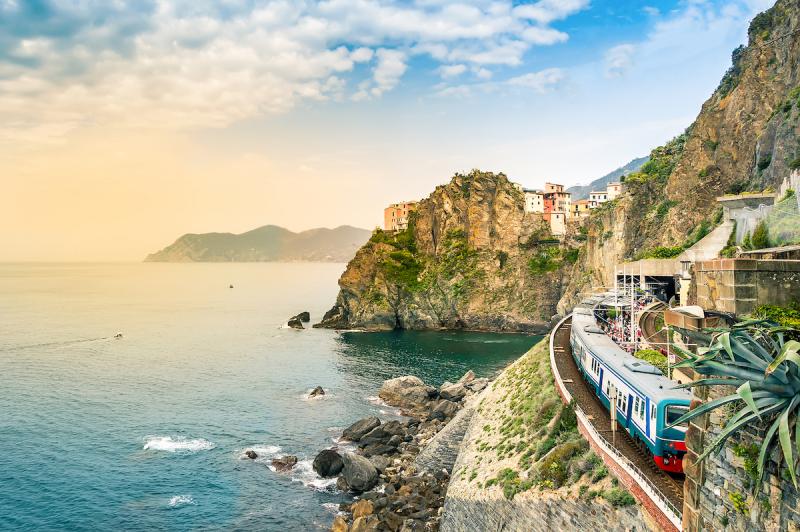
Train travel in Italy is relatively easy, but may pose some challenges if you have never been to the country or if you are not used to this mode of transportation. This is why we have created this ultimate guide to traveling by train in Italy, which you can also print out and carry with you during your trip as a reference.
Let’s look at the main points to consider.
What is the Best Way to Get Around Italy?
Buying an italian train ticket, arriving at the train station in italy, safety at the train station.
- Types of Italian Trains
- Should I Book a First Class Ticket or a Second Class Ticket?
- What To Do If Your Train is Canceled or Delayed
How to Pack for Train Travel in Italy
- Train Travel Times for the Most Common Italian Routes
The Most Important Train Stations in Italy
The train is one of the easiest and most convenient ways to travel around Italy, however this does not mean you have to do it all by train. Whether you use the train for all or part of your Italian trip depends on the itinerary that you are planning. If you do the classic Rome-Florence-Venice tour, then you can do it all easily by train, and it is the recommended option because the train stations in these cities are conveniently located in the city centers and you do not need a car to tour them. If you plan to visit the countryside or the mountains, you should consider renting a car as it gives you more freedom and flexibility. You can also combine different modes of transport: train between major art cities, a rental car for an on the road and to reach smaller towns and hilltop towns that may not be as well connected, plane if you need to go from the north to the south of Italy or vice versa.
Most train stations in Italy are located in or very close to the city center (hence why many have ‘centrale’ in their name), so they’re very easy to reach, sometimes even on foot from your centrally located hotel.
Where Italian trains are the best or only choice:
- Rome, Florence, Venice, Naples, Milan, Cinque Terre
Where Italian trains are better avoided:
- Amalfi Coast, Sicily, Sardinia, remote countryside
Where a car is a good option, but you can also get by with trains and buses:
- Tuscany, Umbria, the Dolomites
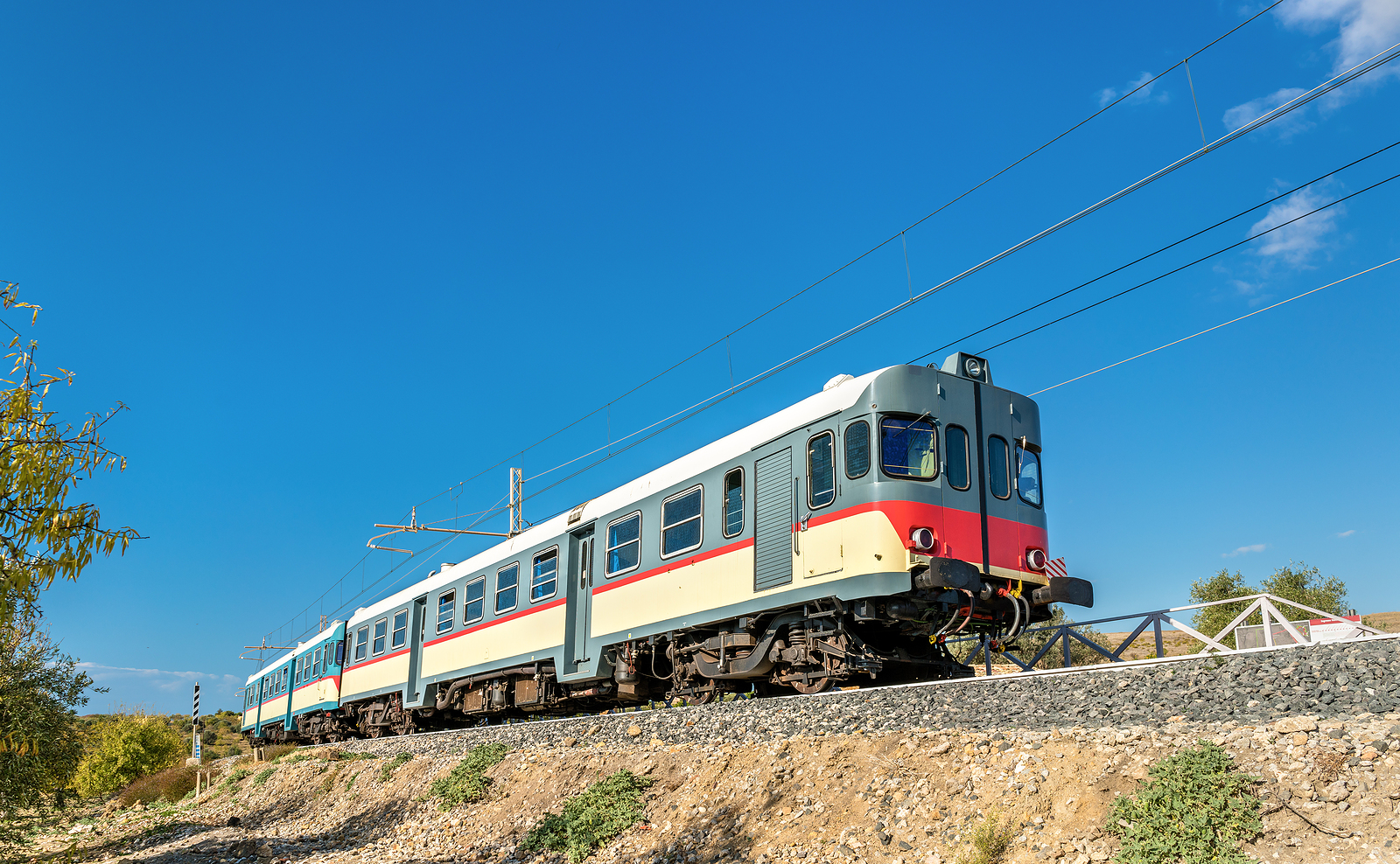
You have two options to buy train tickets for your Italian trip:
- Buy your ticket online in advance via the train company’s website (Trenitalia and Italo), an intermediary like Italian train travel specialists ItaliaRail , or through your travel agent;
- Directly at the train station in Italy, either at the ticketing window or using the self-serve ticket machines (instructions are available in English and the machines accept credit cards).
We recommend buying your tickets in advance whenever possible so that you do not have to wait in line, deal with a machine if you’re in a hurry, you have more seat options, plus having your trip mapped out beforehand can save you precious time while in Italy.
As a general rule of thumb, the sooner you book, the cheaper the fare. Seniors and children (or family packages) generally have reduced fares on Trenitalia’s Frecce and Italo.
*For more information about buying train tickets in Italy, see our dedicated feature .
First of all, always arrive early (at least 20 minutes before your train’s departure time). Train stations in major cities like Rome, Milan and Bologna are very big and you may have to walk five to ten minutes to reach your track ( binario in Italian).
The first thing you want to do when you get to the train station in Italy is to find the electronic board with the trains departure information. There are several throughout the stations, with the bigger one in the main hall and ticketing area, and smaller ones on each platform, in underground passages and waiting areas.
The board has the following information:
- Type of train and train number ( treno )
- Train’s final destination ( destinazione )
- Departure time ( orario )
- Delay ( ritardo ) - expect a 5-10 minute delay as standard in Italy
- Information ( informazioni ) - this usually displays the intermediate stops of the train with arrival times and where the different classes are located scrolling by
- Platform number ( binario )
To identify your train, look for the train number on your ticket, as the destination shown on the board is the final one, but your destination may be an intermediate stop (which you will see in the part of the display that scrolls by).
If your train does not have a specific train number, date and time printed on it, you must validate it before boarding . Look for a green, white or yellow electronic box and insert your ticket into it to get it timestamped (ie validated) before getting on your train (the validation lasts for six hours). This mostly applies to regional trains. You do not need to validate your ticket if you are taking a Freccia high-speed train or Italo train (see below for specifics).
When at the platform, double-check that the train you are about to board is the right one by looking at one of the several boards positioned overhead along the track, it specifies train number and destination.
Also, make sure to board the correct carriage; the number is visible on the side of the train, on an electronic sign on the door, and before boarding, on a screen overhead. This way you will avoid creating more confusion and blocking aisles as you walk through carriages to reach your seat.
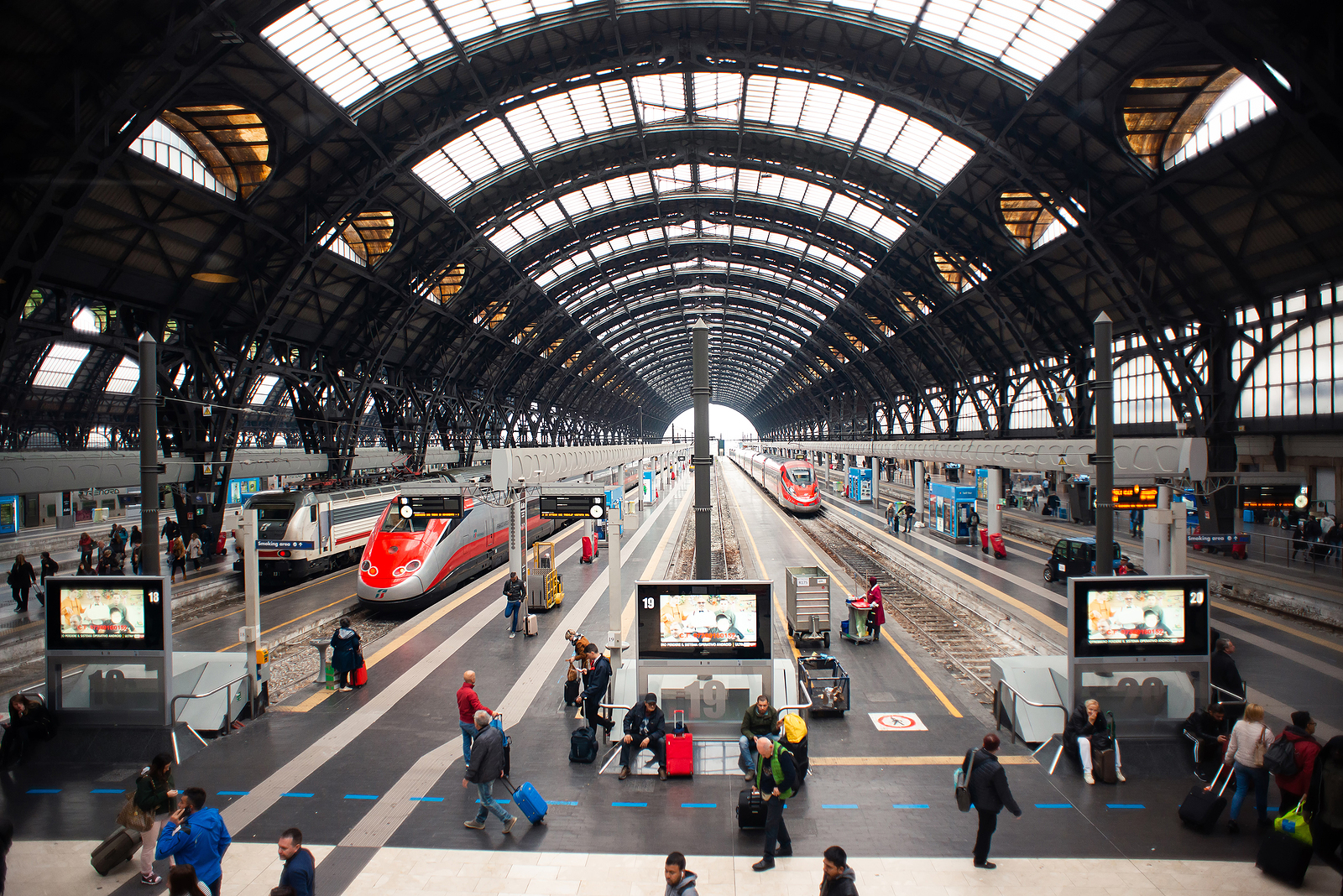
Generally speaking, traveling by train in Italy is safe, but be vigilant of pickpockets and other petty criminals that may target disoriented travelers intent on finding their way through the station. Always carry your bag in the front, and consider investing in a money belt to place your passport, credit card, money and important documents.
If your luggage on the train is not close to you (ie if it’s big you’re going to have to place it in the luggage area at the front or end of the carriage), take a look at it when the train stops at intermediate stations.
Do not accept help from strangers who may offer to carry your luggage or help you get a ticket at the ticketing machine. They may insist on getting a ‘tip’ from you once their ‘service’ is done and not leave until you do. Just send them away as soon as they approach you.
Types of Italian Trains
Two companies run trains in Italy: Trenitalia and Italo. For a long time, Trenitalia has been the only railway company in Italy and to this day it has the widest network and routes. Italo began operating in 2012, and offers high-speed service between major Italian cities.
When traveling on Trenitalia, you have three different types of train to choose from which differ based on speed and price.
Le Frecce - they are Trenitalia’s most modern, comfortable and fastest trains, which also means they cost more. They require advance reservation, have seat assignment, and provide most of the high-speed service on the main lines between Turin, Milan, Venice, Bologna, Florence, Rome, Naples, and Bari.
There are three types of Frecce:
Frecciarossa : the fastest and most expensive trains, traveling up to 300 km/h. They connect Italy’s biggest cities (Turin, Milan, Bologna, Florence, Rome, and Naples), but not Venice. Frecciargento : these trains use both the high-speed and traditional lines; they are not as fast as the Frecciarossa and take you to main cities such as Florence, Bologna, Rome, and Naples, but not to Milan or Turin. They go to Venice and southern regions like Apulia and Calabria.
Frecciabianca : the slowest among the Frecce, they run on traditional lines and connect large and medium-sized cities in 14 of the 20 Italian regions (Valle d’Aosta, Trentino Alto Adige, Umbria, Basilicata, Sicily and Sardinia are not covered).
Intercity - these trains are less expensive than the Frecce ; they operate outside of the high speed line, therefore your trip will take longer. They connect medium to large cities across Italy, making few intermediate stops. It is not always possible to reserve your seat in advance. These trains are usually quite old and don’t have amenities like wi-fi and restaurant service, available on the Frecce .
Regional trains - the cheapest option, these trains are used by locals to get to and from work and school, connecting minor towns and villages. You cannot reserve a seat in advance, therefore if you need to take a regional train, try to avoid rush hours. Coaches are mostly second class, with only one or two reserved for first (which in this case you may want to get). These are the trains you would take for example if you were going to the Cinque Terre or to Assisi.
General tip : use the Frecce to reach the biggest cities, then use regionali to move around the region to smaller centers (when possible - sometimes you will need to take a bus instead; sometimes renting a car will be the easiest option).
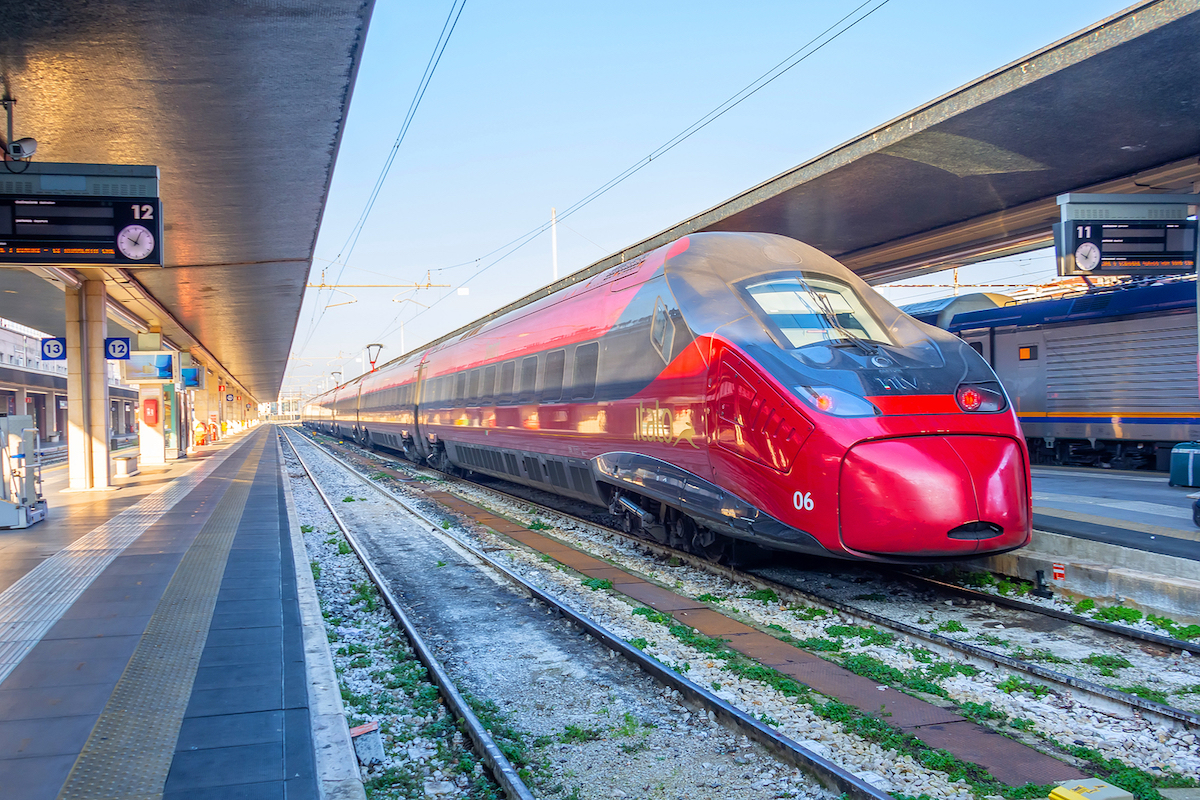
Should I Book a First Class Ticket or a Second Class Ticket?
All trains generally offer first class and second class, or, in the most modern trains, ‘standard’, ‘premium’, ‘business’, ‘executive’ (the most expensive, the less seats available and the less people around you). What corresponds to second class (or standard) on the Frecce and Italo is absolutely decent, but obviously more crowded, so if you wish for tranquility and silence, go for an upper class of service. You may want to step up to first class on the Intercity and regional trains.
What To Do If Your Train is Canceled or Delayed
When you travel by train in Italy, you should be aware that things don’t always go as smoothly as you may expect in countries such as, say, Switzerland or Germany. Try to remain patient as your train may be canceled or delayed because of a strike, an accident or repairs on the line.
As reported on the Trenitalia website:
- if your Freccia train is delayed by 30 to 59 minutes, Trenitalia will issue a bonus equal to 25% of the ticket price that you can use for future purchases.
- If your Freccia train is over an hour late when you get to your destination, you are entitled to a compensation equal to: 25% of the ticket price for a delay ranging from 60 to 119 minutes; 50% of the ticket price for a delay of more than 120 minutes. The compensation may be issued in the form of a bonus for a new ticket to be purchased within 12 months; cash if the ticket was paid cash or refund on the card that you used for payment.
You can request your bonus after 24 hours from the date of travel and up to 12 months, at the ticket office of any train station, online on the Trenitalia website, at the travel agency that issued the ticket, or by calling the Call Center.
Use this page for reference .
Pack light! You don’t want to have to carry around a huge suitcase that is hard to lift and lower when you get on and off the train. Remember, there are a few steep steps up (and down) the train, there may be stairs to the platforms, especially in the older stations where you won’t find the automatic ones, and you may have to walk the distance in large train stations like Rome Termini or Bologna Centrale.
Go for a light carry-on or even a backpack, this will be helpful in general as you may decide to also walk between your hotel and the train station.
We have a great feature with general tips on how to pack for travel to Italy by Sarah Murdoch, a Rick Steves tour guide and Italy expert.
Train Travel Times for the Most Common Italian Routes
Rome – Florence
1 hour 31 minutes (Frecciarossa – Trenitalia)
1 hour 23 minutes (Italo)
Rome – Venice
3 hours 45 minutes (Frecciargento – Trenitalia)
3 hours 45 minutes (Italo)
Rome – Milan
2 hours 55 minutes / 3 hours 20 minutes (Frecciarossa – Trenitalia)
3 hours 14 minutes (Italo)
Rome – Naples
1 hour 10 minutes (Frecciarossa – Trenitalia)
1 hour 20 minutes (Italo)
Florence – Milan
1 hour 40 minutes (Frecciarossa – Trenitalia)
1 hour 50 minutes (Italo)
Florence – Venice
2 hours 5 minutes (Frecciargento – Trenitalia)
2 hours 5 minutes (Italo)
Milan – Venice
2 hours 23 minutes / 2 hours 35 minutes (Frecciabianca – Trenitalia)
Milan – Naples
4 hours 40 minutes (Frecciarossa – Trenitalia)
4 hours 31 minutes (Italo)
- Rome: Roma Termini
- Florence: Firenze Santa Maria Novella
- Venice: Venezia Santa Lucia
- Milan: Milano Centrale
- Naples: Napoli Centrale
- Turin: Torino Porta Nuova
- Bologna: Bologna Centrale
Now that you know everything you need to know about train travel in Italy, enjoy the ride as you watch Italy’s beautiful scenery roll by!
For more Italian train travel, check our dedicated section , Italy by Train.
You may also be interested in...
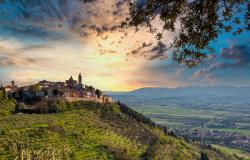
Latest property in Rome

What to do in Rome

Enjoying this Italy intel? You might also love:


Interrailing Italy: Ultimate Guide and Route (2023)
Some links in this post contain affiliate links. I receive a small commission if you use the links at no extra cost to you! Happy reading 😀
Looking to travel Italy by train? Yay! Interrailing Italy is one of the best summer European trips, and you’re in for the adventure of a lifetime!
Whilst Italy is one of my favourite countries in Europe, it’s also one of the easiest to travel by train. And there are plenty of towns, villages, cities and coastlines to visit, so spending a few weeks travelling around is the European summer of dreams.
In the following post, I outline the best interrailing Italy routes and itineraries, and how to squeeze some of the most beautiful Italy destinations into your trip.
🚝 Need to buy your interrailing pass ? I recommend checking this website for the best discounts and deals!
🗺️ Interrailing Europe this summer? You might also like…
- Backpacking Europe: A Beginners Step-by-Step Guide
- What To Pack Interrailing Europe: Packing List Essentials
- Interrailing Routes 3 Weeks: FOUR Routes You’ll Love!
Want to see epic photos and videos from these experiences?
Follow me on Instagram! As we travel, I post everything live on Instagram, so check out my recent highlights and posts. If you can’t find what you’re looking for, drop me a DM!
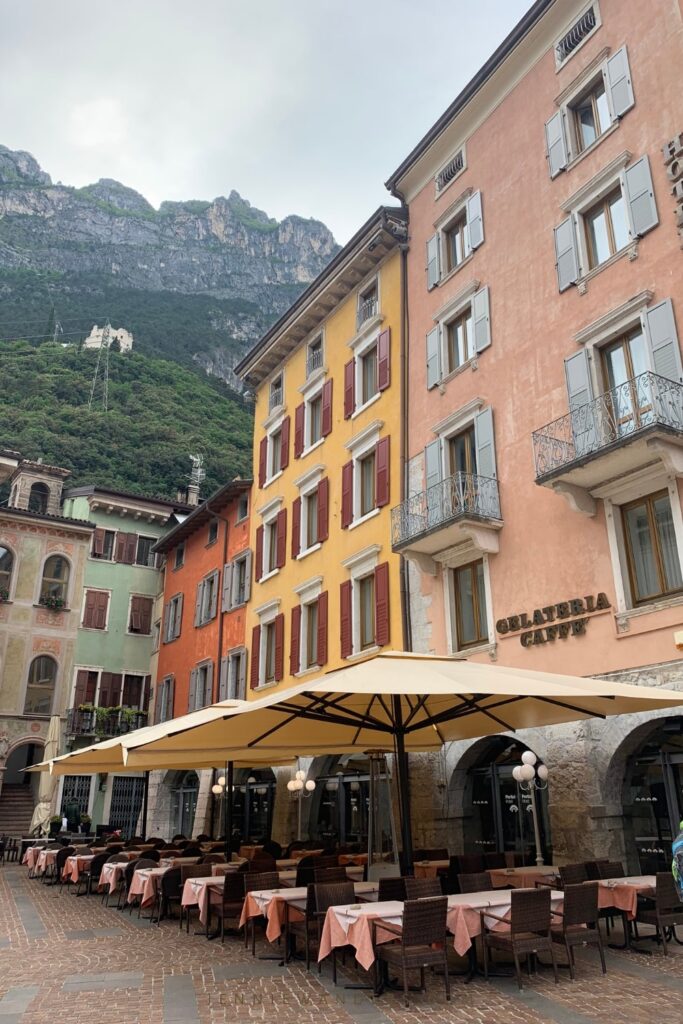
Interrailing Italy: A Summary
Interrailing Italy is straightforward, as their train system is one of the best in Europe. But, here are a few extra things to bear in mind when you are planning your trip:
🚇 The rail network in Italy connects the entire country. So if you’re worried about being able to get from A to B, don’t be! Even smaller, ‘off the beaten track’ villages and towns will have a train station. Regional trains and night trains are available in most major cities.
🚌 Journeys around Italy can also be made by bus. If you have a section of a journey that cannot be made by train, the FlixBus can be used for inter-city routes.
🇮🇹 The interrailing pass will include all trains in Italy, including Le Freece high-speed trains (although you’ll need a reservation), Trenitalia and Trenord.
🚝 You must make a seat reservation for high-speed trains, even with an interrailing pass . Seat reservations are usually around 10 EUR. This can be done on the interrailing website or at the train station. You can guarantee your seat easily there for either high-speed trains or regional trains.
Booking hostels?
Choosing the right hostel as a backpacker is crucial to how successful your trip will be. Always use Hostelworld.com for the cheapest rates, widest availability and most importantly – honest reviews from other travellers! Click here to view the best hostels for your trip.
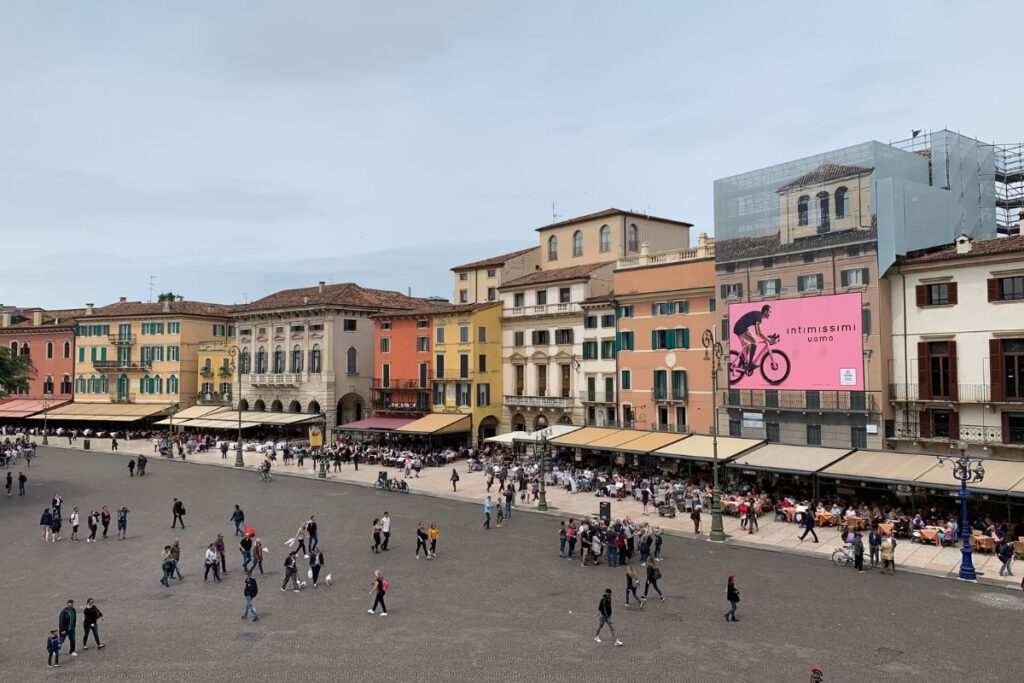
Where to stay when interrailing Italy
Whilst there will be many hostels all over Italy to stay in as a backpacker, these are some of the best. All of the hostels listed are perfect for solo travellers and couples who are looking to meet other backpackers whilst interrailing Italy.
🇮🇹 Rome: Hostel Trustever ➡ BOOK NOW
🇮🇹 Naples: Ostello Bello ➡ BOOK NOW
🇮🇹 Rome: The Rome Hello BOOK NOW
🇮🇹 Florence: Santa Monaca ➡ BOOK NOW
🇮🇹 Milan : Ostello Bello ➡ BOOK NOW
🇮🇹 Positano : Hostel Brikette ➡ BOOK NOW
🇮🇹 Venice : WE_Crociferi ➡ BOOK NOW
🇮🇹 Naples : Hostel of the Sun ➡ BOOK NOW
🇮🇹 Rome : Yellow Square Hostel ➡ BOOK NOW
🇮🇹 Venice : Anda Venice ➡ BOOK NOW
🇮🇹 Bologna : WE_Bologna ➡ BOOK NOW
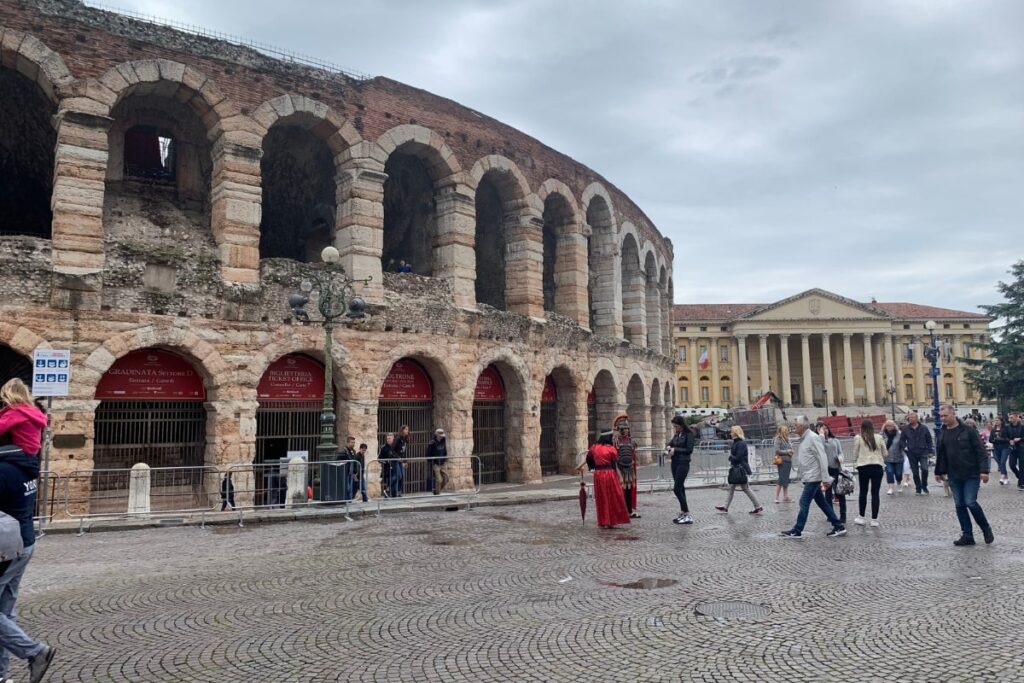
Interrailing Italy: Route 1
🇮🇹 Duration: Two weeks
🚇 Four locations in Italy: Naples – Rome – Florence – Bologna
If you’re interrailing Italy for two weeks , this is a good route to see some of the best sights in Italy. As Italy’s train network is quick and easy to use, you will be able to see some of the best cities the country has to offer in a short amount of time.
This interrailing Italy route starts in Naples. If you can, fly directly to there to cut out any extra train time from your home country. In Naples, you can spend a day or two exploring Mount Vesuvius and Pompeii. If you have time (and budget), you can take the one-hour train from Naples to the Amalfi Coast for a day or overnight trip.
The train between Naples and Rome is around 1.5 hours, so if you start your journey early in the morning, you can have some extra time in Rome, Italy’s capital city, and one of the most visited places in the country.
From there, you can travel to Florence. There are a few different trains between Rome and Florence; either fast or slow, so be sure to check beforehand. The fast train takes just under 1.5 hours, whereas the slow train takes over three hours.
Finally, you’ll end your interrailing trip to Bologna. From Florence, the train to Bologna should take under 90 minutes. Either fly home from Bologna Airport, or book onward train travel from there.
➡ Don’t forget to pre-book your accommodation! You can check out the best hostels in Italy here.
🎫 I recommend to get a city pass to save up to 50% on entry tickets and activities in Rome.
Interrailing Italy: Route 2
🇮🇹 Duration: Three weeks
🚇 Six locations in Italy : Naples – Rome – Florence – Milan – Verona – Venice
Interrailing Italy for three weeks is an ideal amount of time. From the famous Italian cities to the Italian coast and beaches of Sorrento, this is my favourite interrailing Italy route.
For this interrailing route, start in Naples. Again, this is a great starting point, as you can take a day trip to the Amalfi Coast, Sorrento or Positano . Similar to route one, you can then continue on to Rome, and Florence; where you can take a day trip to the Leaning Tower of Pisa.
From Florence, it’s a four-hour train to Milan, one of Italy’s biggest cities. If you’d still like to see more of Italy, you can head west to Verona, a romantic, colourful city along the Adige River.
Finally, your interrailing trip will end in Venice. A must-see place in Italy for all first-timers, you can get lost amongst the maze of cobbled streets and iconic canals. Fly home from Venice, or book onward travel to your next location.
⭐ Top-rated experiences in Venice
- Explore the highlights of the city
- Visit Doge’s Palace
- Experience a gondola ride along the most beautiful part of the Grand Canal
Interrailing Italy: Route 3
🇮🇹 Duration: Four weeks
🚇 Eight locations in Italy : Naples – Rome – Florence – Bologna – Milan – Verona – Venice – Turin
For the final interrailing route, you will need at least four weeks. This busy plan visits at least eight locations in Italy, and if you want to take a day or overnight trip to the Amalfi Coast, Lake Como, Cinque Terre or Sorrento, you may end up visiting over ten Italian locations during your visit!
Start your interrailing Italy trip in Naples. Here you can visit Pompeii, the Amalfi Coast and some of the other surrounding villages. Next, take the 1.5-hour train to Rome , and spend a few days enjoying the famous landmarks in the capital city.
From Rome, head to Florence and Bologna, both only a few hour’s train away. From Bologna, your next stop is Milan, which can be visited for a few days as a city break, or even extended to add in a few days at Lake Como.
Finally, finish by visiting the canals of Venice, and onwards to Turin, one of the prettiest cities in Northern Italy.
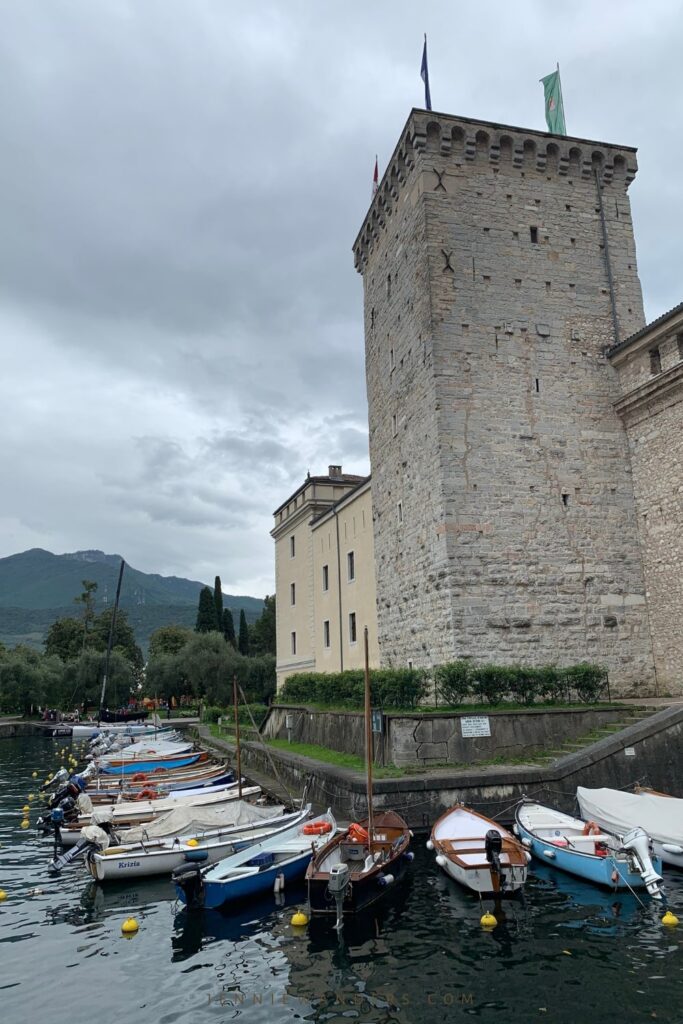
Interrailing Italy: Average train durations
Below I have listed some of the longer (or more frequently used) train duration times for your interrailing Italy trip.
Naples > Rome : 1.5 hours
Rome > Florence: 2 hours
Florence > Pisa: 1.5 hours
Florence > Cinque Terre: 3 hours
Bologna > Venice: 1 hour 45 minutes
Venice > Milan: 4 hours
Bologna > Milan: 1.5 hours
Milan > Verona : 2.5 hours
Don’t forget insurance!
Whilst you’re backpacking, you will always need insurance. We use SafetyWing, for the most flexible, reliable and budget-friendly options. They have the best cover for worldwide, long-term trips, and at the most affordable backpacker prices! You can check out their cover here.
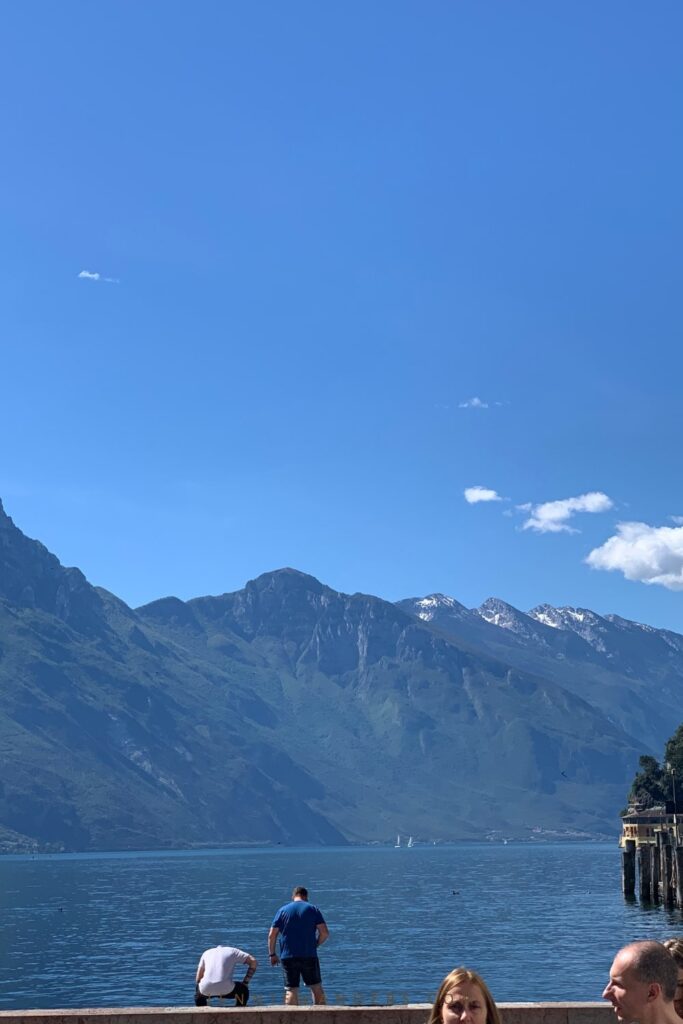
Night trains whilst interrailing Italy
Whilst interrailing Italy, there may be times you need to take the night train. The Intercity Notte is the main night train, and it runs every night. It’s included in the interrailing pass , but you need to book a seat in advance. Don’t forget to reserve a bed, which will be an additional 40 EUR. However, you won’t need to book a night’s accommodation, so this may save you money.
🚇 The main Italy night train route is: Milan – Genova – Pisa – Livorno – Salerno – Catania.
Useful Phrases for Interrailing Italy
Make sure you don’t get confused with Italian vocabulary whilst boarding the trains! Here are a few useful phrases to remember whilst travelling between Italian cities:
🚇 Train: il treno
🎫 Ticket: biglietto
🚝 Train station : stazione dei treni
👨🏼💼 Ticket office : la biglietteria
🚇 Platform : binario
🚃 Carriage : la carrozza
💺 Seat: posti
🙋🏼♀️ Arrivals: arrive
👋🏼 Departures: partenze
➡ Need to hire a car in Italy? We rent our cars all over Europe from this company . They’re reliable, cheap and have car rentals all over the world! 🚗 LOOK AT CAR HIRE PRICES NOW!
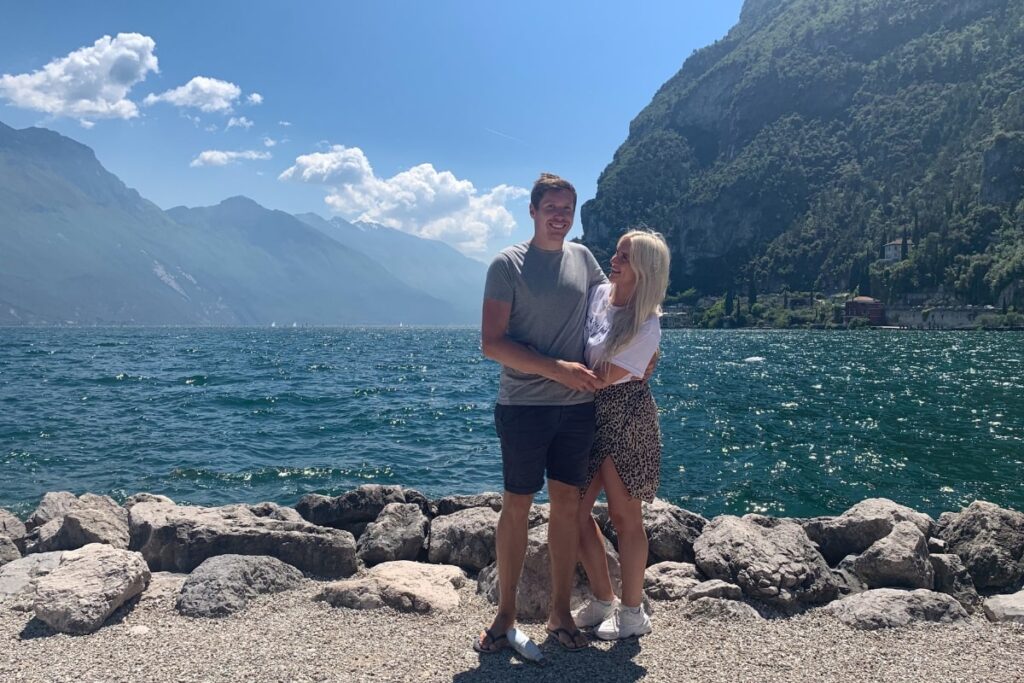
Benefits of having an interrailing pass in Italy
If you buy an interrailing pass to travel around Italy, you’re not just buying a train ticket. With your pass, you get a number of discounts that you can use across the country.
- Bologna welcome card: If you’re visiting Bologna, you can get 10% off museum visits and city tours with your interrailing pass.
- FREE OBB bus travel in Italy (if you have a Global interrailing pass).
- Up to 20% discount on ferries across the country, and between Italy, Greece and Croatia.
- Special discounts on City Sightseeing buses in cities.
NOTE: Benefits change according to the country you’re in. These are listed for Italy interrail route only.
Want to start your digital nomad life?
Check out my ebook page (click here!) to see if there’s a guide that suits you. I’m here to help you leave the 9-5 and work remotely around the world! 💻 🌎
Interrailing Italy: FAQs
1) what is interrailing.
Interrailing is a great way to see Europe on a budget . Interrail passes are available for people of all ages, and they allow you to travel on any day of the week. You can also travel on multiple trains per day, making it easy to explore different countries and cities all in one single trip.
Interrail passes are valid for a certain number of days, so you can tailor your trip to your own needs. Plus, if you’re under 27 years old or under, you can get a special Youth Interrail pass that’s even cheaper!
Global passes for interrailing are the best way to see Europe – and they’re not as complicated or expensive as you might think. With a global pass, you can hop on a train and explore up to 33 different countries in Europe. There are different types of global passes to choose from, so you can tailor your trip to exactly what you want.
Whether you’re looking to backpack Europe for a week or a month, interrailing is a great option. Just be sure to check the rules and regulations before you go so that you can make the most of your trip.
Not sure whether the interrailing pass is worth it? Check out my detailed guide on interrailing passes here.
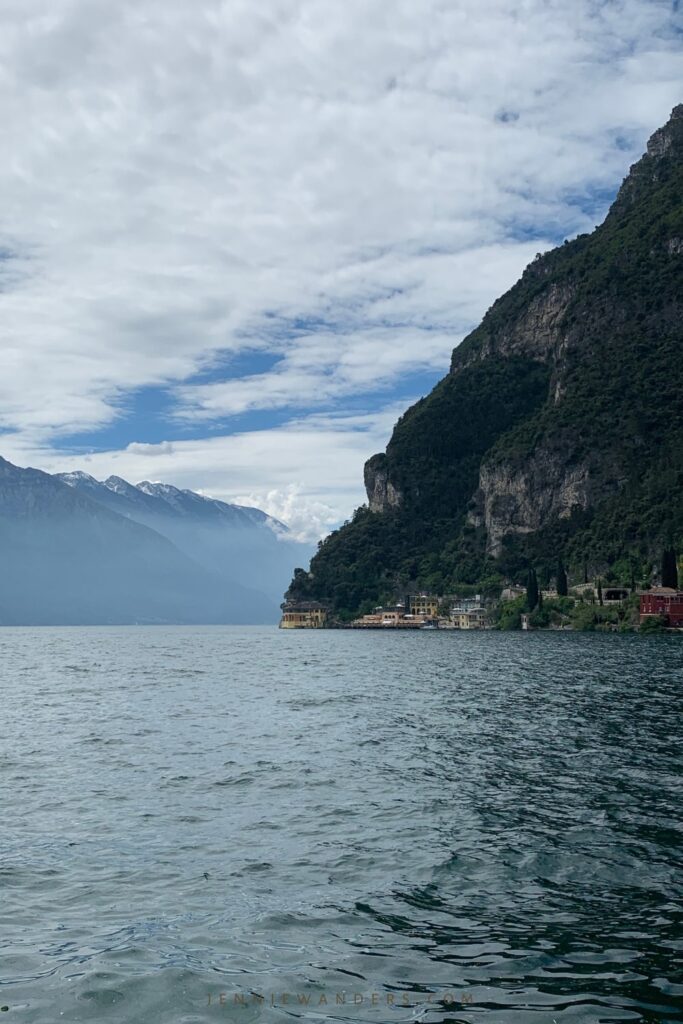
2) What do I need to pack for an interrailing trip?
Need a full packing list for interrailing Italy? Check out my detailed packing guide here.
3) What are some of the best locations to visit whilst interrailing Italy ?
Whether you’re interested in exploring the country’s vibrant cities or the Italian countryside, there are a lot of beautiful places to explore in Italy! Let’s take a look at some of the best Italian cities that can be accessed via train.
➡ Want to know more about some of Italy’s famous landmarks? Check them out here!
If you’re interrailing around Italy, one of the best places to visit is Rome. As the country’s capital, Rome is full of historical landmarks and cultural attractions. From the Colosseum to the Vatican, there’s plenty to see and do. And with an interrail pass, you can easily venture outside of the city and explore some of Italy’s other highlights.
Don’t forget to visit the Colosseum; the ancient Roman stadium is one of the most popular tourist destinations in the city, and it’s an incredible piece of history that you won’t want to miss! And if you have some spare time, visit the Roman Forum and take a food tour! There are also plenty of food tours available that will take you to all the best places to eat in Rome.
If you’re interrailing and staying in Rome, the best hostels include Hostel Trustever , The Rome Hello and Yellow Square Hostel (which is Rome’s biggest party hostel). You can find out more and book your stay here!
Naples is beautiful. Take a stroll through Spaccanapoli – one of the most beautiful and historic streets in the city and visit the Piazza del Gesù. Then head over to the Piazza San Domenico Maggiore, a street lined with grand old buildings, charming cafes and lively market stalls. It’s the perfect place to get a taste of traditional Neapolitan life!
If you have time, visit the Naples National Archaeological Museum – one of the largest and most important museums in Italy. And finally, no trip to Naples would be complete without indulging in some authentic, Italian pizza. Yummm.
🍕 If you prefer to be more hands-on, you can actually learn how to make the famous Naples pizzas yourself! Book the masterclass here .
If you’re interrailing and staying in Naples, the best hostels include Tric Trac Hostel , Ostello Bello , NAP and Hostel of the Sun . You can find out more and book your stay here !
Florence is another amazing location to add to your Italian bucket list. Once you’ve visited all the major sights – the Duomo, the Uffizi Gallery, the Boboli Gardens – you can climb to the top of Giotto’s bell tower for breathtaking views of the city, or stroll across the Ponte Vecchio, the oldest bridge in Florence.
And of course, don’t forget to try some of the city’s renowned gelato – there are said to be over 500 flavours to choose from! – or enjoy a traditional Florentine steak (if you’re not a veggie like me).
If you’re interrailing and staying in Florence, the best hostels include Ostello Del Bigallo, Leonardo House, Yellow Square Florence and Ostello Bello Firenze . You can find out more and book your stay here!
Cinque Terre
Cinque Terre is one of the most beautiful places in Italy, and it’s a perfect interrailing stop or day trip. The views are incredible, and there are plenty of things to do. There are direct trains from Genoa, La Spezia, and Pisa, or you can take a regional train from Milan and Florence.
There are lots of things to do in Cinque Terre , from hiking, swimming, kayaking, and just relaxing on the beach. There are also plenty of restaurants and bars, so you can try some of the local food and wine. If you’re on a budget, buy some cheap food at the supermarket and take it to the beach for a picnic!
There are a few hostels to choose from in Cinque Terre, with the best being either Hostel Ospitalia del Mare, Ostello Corniglia and Vanna . But you can read the reviews and find out more about the Cinque Terre hostels here!
The last Italian highlight I want to mention is Verona. Accessed easily from Milan, it’s one of my favourite places in Italy. It’s known for its Roman arena, the Verona Arena, built in the 1st century A.D. and capable of holding 22,000 spectators! It’s now often used for live music and theatre events.
It’s also associated with William Shakespeare’s Romeo and Juliet; as legend has it that the lovers were based on two real-life young people whose graves lie side by side in a local churchyard. If you’re a Shakespeare fan, you can visit Juliet’s House, which is said to be where Shakespeare’s fictional character lived.
If you’re interrailing and staying in Verona, some of the best hostels are The Hostello, Gabanel Bike, Arena B&B and Locazione Turistica Cittadella . Check out all of the hostels in Verona here.
4) How do I book tickets to interrail Italy?
Once you’ve bought your interrailing pass and have a destination plan, you can book your seat reservations. Your interrail pass is activated when you reach the first location that isn’t your home country/city.
Have a look at Interrail’s train timetable to find times and destinations. Most trains will require a seat reservation (especially high-speed and sleeper trains). Slower train seat reservations are usually cheaper, or in some cases, free. You can also book your seat on italiarail.com , where you can avoid interrail fees.
5) What tours should I do in Italy?
Looking to book a tour whilst interrailing Italy? Tours are one of the best ways to see the hidden gems of the country you are visiting. If you’re travelling during peak season, I highly recommend pre-booking your tours to ensure you don’t miss out!
When travelling, we use this company to book our tours . Tours include skip-the-line tickets to the world’s most iconic attractions, walking tours by top local experts, immersive food and beverage tours, cooking and craft classes, bucket list experiences, and niche offerings you won’t find anywhere else! ➡ You can check out available tours in the Italy with prices here!
6) Do I need a SIM card to visit Italy?
If you’re not from Italy, it’s worth downloading an eSIM on your phone to ensure you can use it for directions and avoid roaming charges as soon as you arrive.
ESIMs are easy to download and ready to use within a few minutes of purchasing! Plus, there are eSIMs available for the entire continent of Europe, so there’s no longer a need to hunt down free Wifi! ➡ You can check out the prices and packages for eSIMs here!

Interrailing Italy: In a Nutshell
Well, you’ve made it! Everything you need to know about interrailing Italy and travelling around Italy by train. If you have any questions, feel free to contact me on Instagram or leave a comment below!
Happy travelling!
Like this post? You might also like…
- 21 Interrail Tips for First-Timers: Interrailing Europe
- How to Interrail on a Budget: Interrail Europe CHEAP!
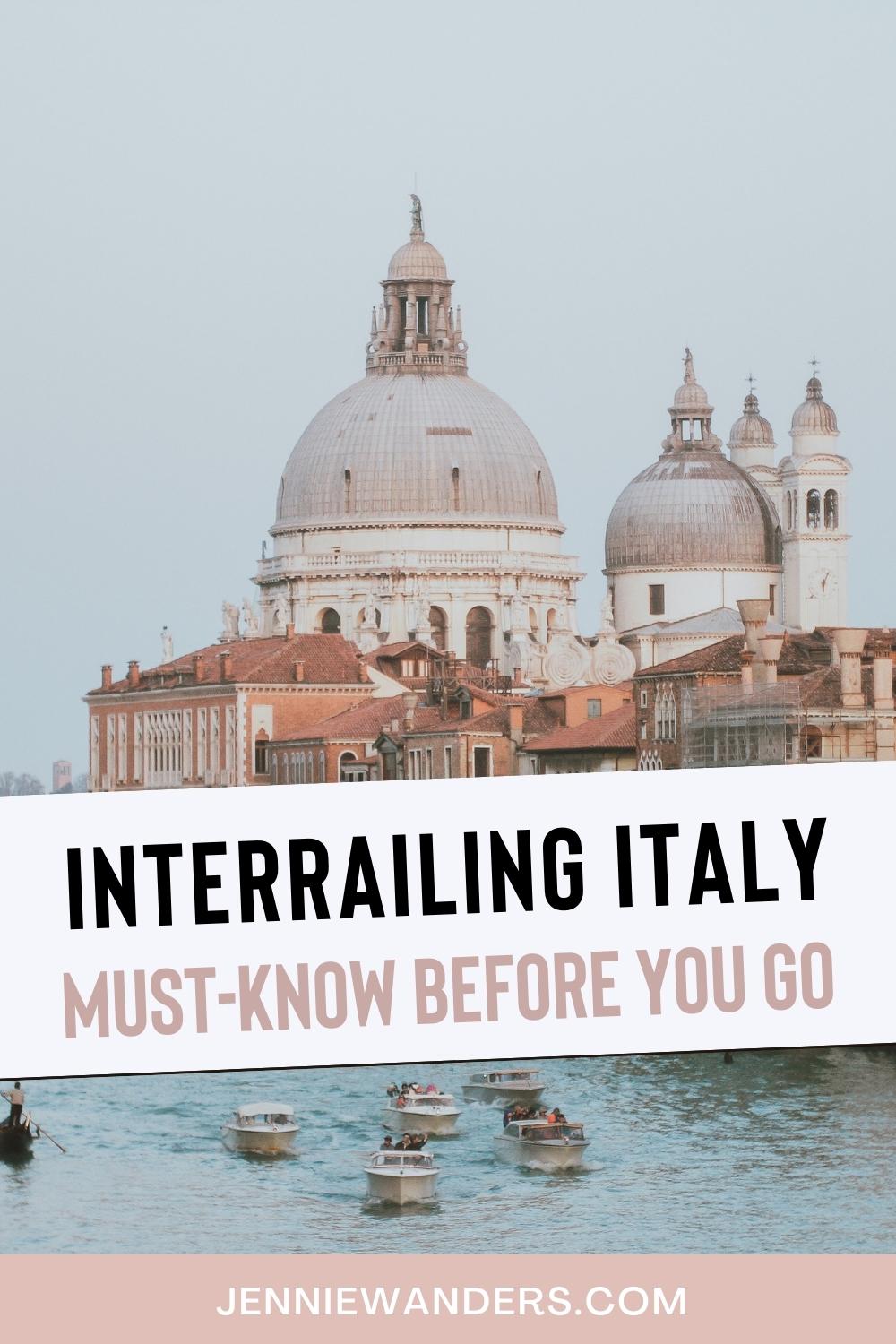
MEET THE AUTHOR!

Hi! I'm Jennie! As a part-time travel blogger based in London, I'm using my 10+ years of travel expertise to encourage & inspire you to step out of your comfort zone through sustainable, mindful and purposeful travel.
If I'm not writing, I'm either reading, drinking coffee or taking a wild swim (all at the same time if I'm feeling impressive).
Similar Posts
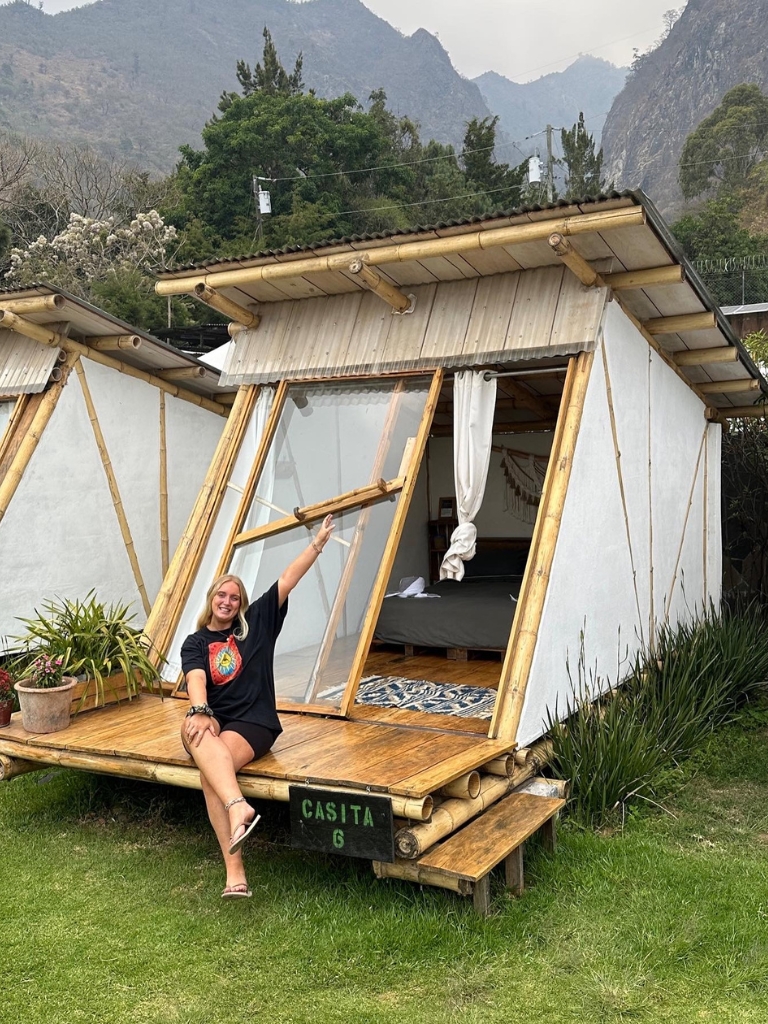
Best Hostel in Lake Atitlan: Free Cerveza (Review 2023)
Looking for the best hostel in Lake Atitlan? There are so many hostels to choose from, but if you want a fun, social stay, pick Free Cerveza! Located in Santa Cruz, a small town around 10 minutes from Panajachel, Free Cerveza is a glamping-style hostel with incredible lake and volcano views. It has a fully…
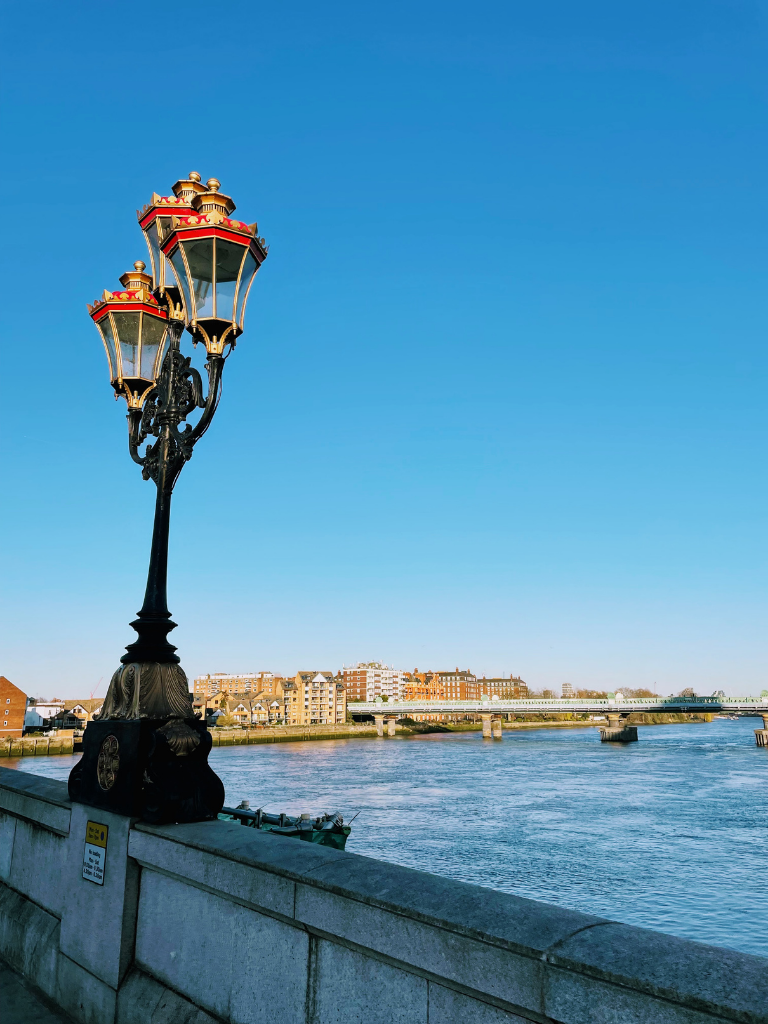
BEST Things To Do In Putney London By A Local (2023)
Looking for the best things to do in Putney? You’re in the right place! Living in Putney has given me the perfect insight into how much fun this part of London is, and I can’t wait to share it with you! Putney is easily one of the best places to live in London. Or if you’re…
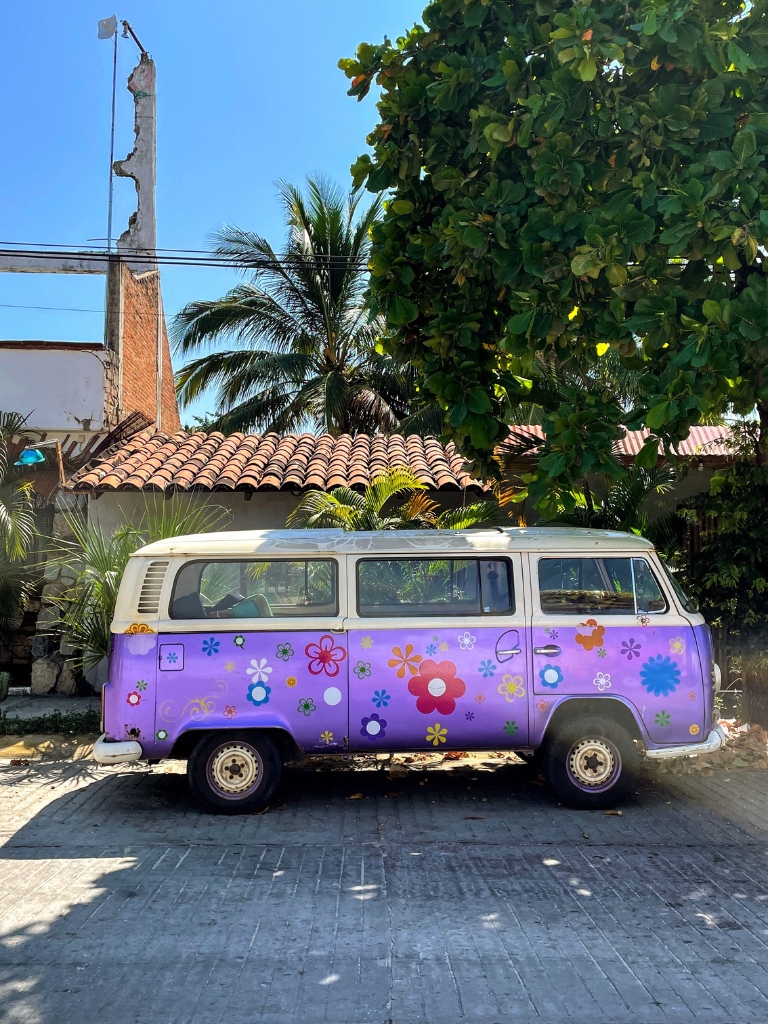
Getting Around Puerto Escondido in 2023: A Complete Guide
In the following post, I explain the best ways for getting around Puerto Escondido. This content was written in November, 2022. At the time of writing, this information is correct and up to date. When you are planning a trip to Puerto Escondido, it’s important to know the different ways you can get around. In…
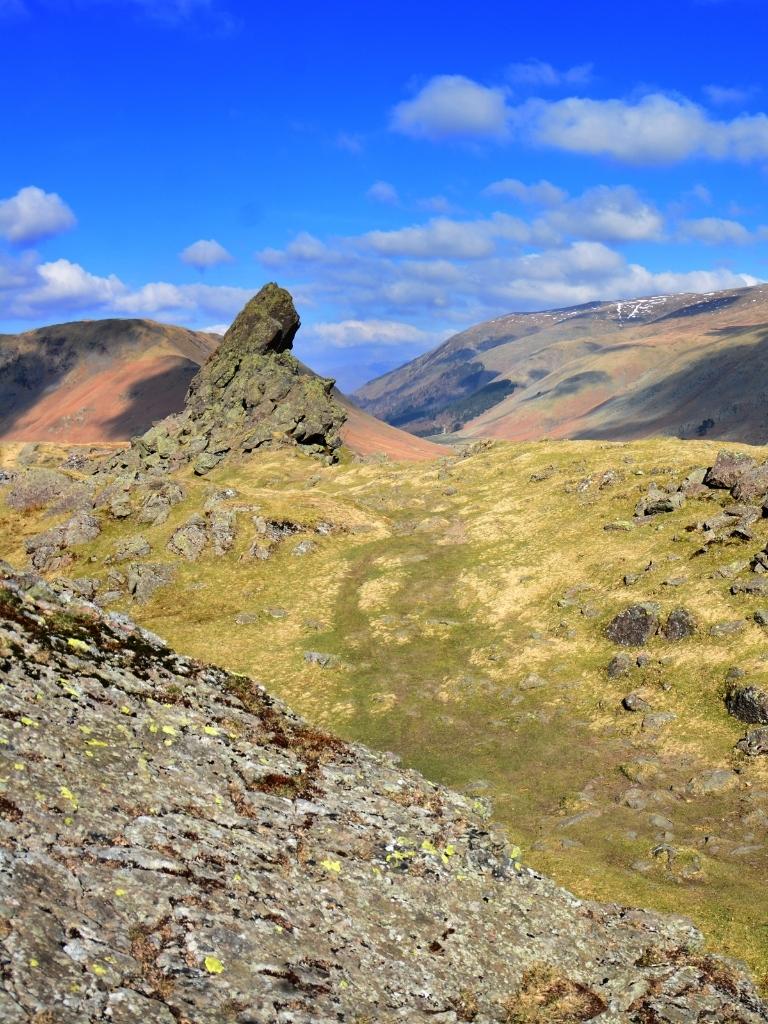
Helm Crag Walk From Grasmere – Everything You Need to Know
Are you looking to do the Helm Crag walk from Grasmere? You’ve come to the right place! As someone who’s a sucker for a good view, but hates heights, Helm Crag is one of my favourite walks in the entire Lake District National Park. The Helm Crag walk isn’t particularly easy, but it’s a lot…
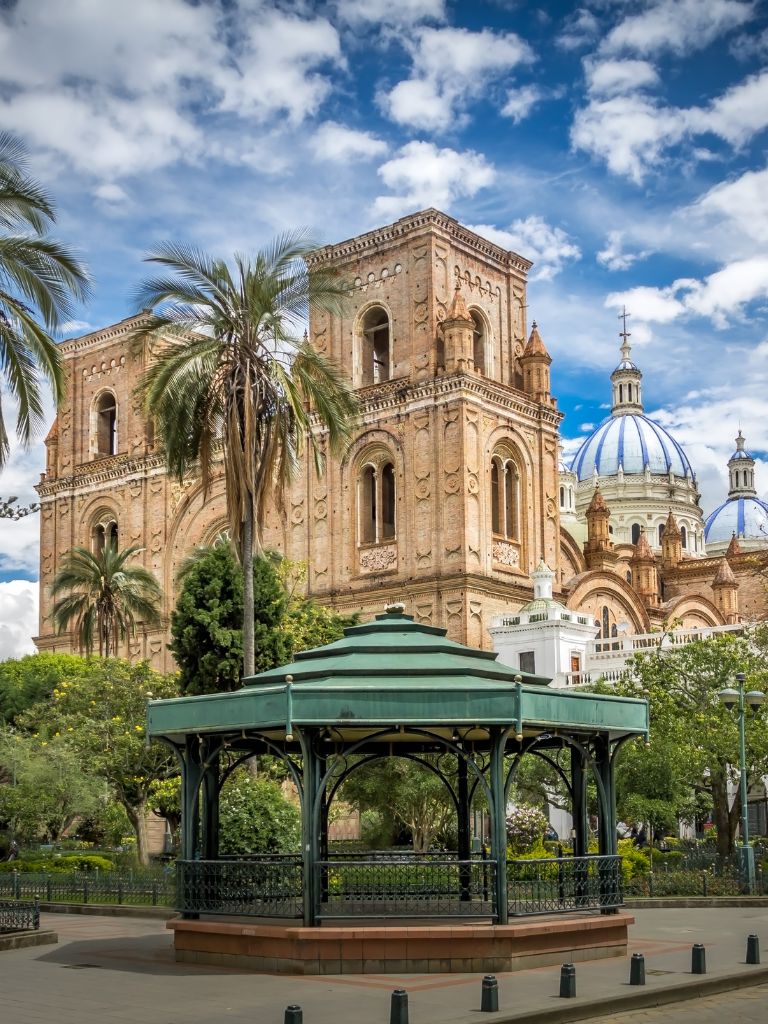
Banos To Cuenca (Ecuador) Full Guide & Routes In 2023
Looking for the best ways to get from Banos to Cuenca? You’re in the right place! Banos is one of the most exciting and adventurous locations in Ecuador and is a must-do for any adrenaline junkies. Then there’s Cuenca, a pretty, historical and beautiful city, which makes for a perfect stop before heading to Guayaquil, the gateway…
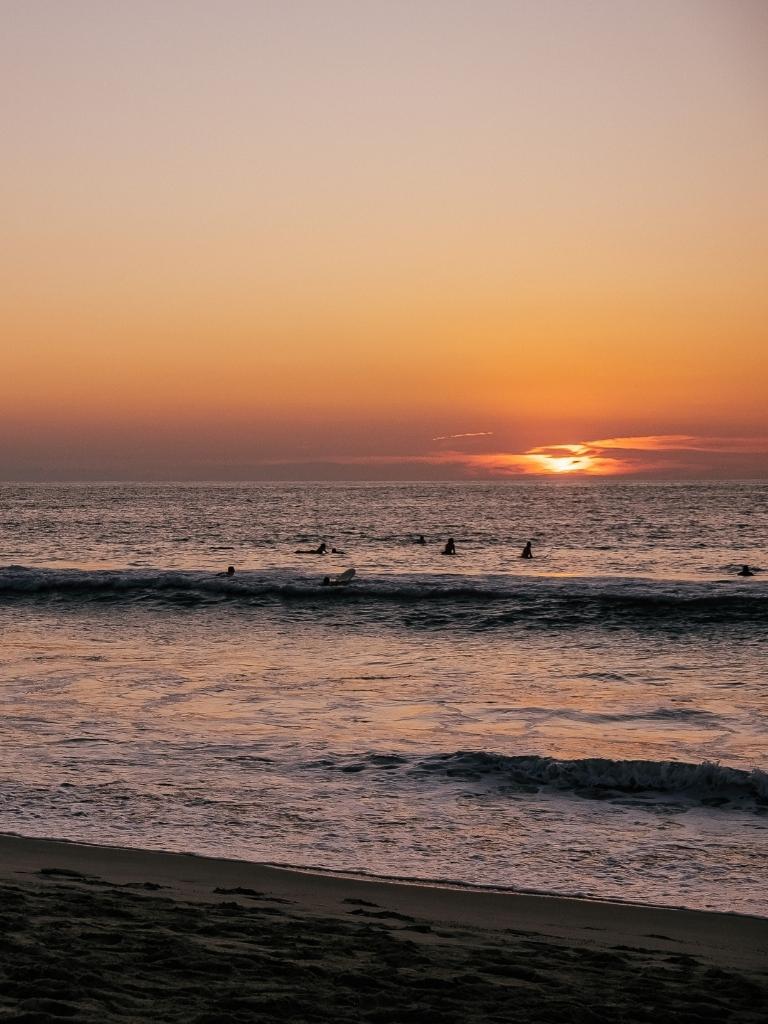
Where To Watch The Sunset in Puerto Escondido (2023)
Looking for the best places in Puerto Escondido to watch the sunset? You’re in the right place! This guide has all the best-hidden gems for watching the sunset in Puerto Escondido. Whilst we lived in Puerto Escondido in 2022, watching the sunset each evening was a ritual. And not just for us, most backpackers, tourists…

The Man in Seat 61
A beginner's guide to
Train travel in italy.
- Buy train tickets
- Buy ferry tickets
- Book a hotel
- Privacy & cookies
- Home
Train travel UK & Ireland...
Train travel in europe..., train travel in asia..., train travel in africa..., train travel in america..., train travel in australasia.

Ride the trains in Italy from €9.90
There's no better way to see the cities of Italy than by train, trains link almost every town & city of any size, centre to centre. Driving & parking in Italian cities is not recommended. The high-speed trains are now faster, more convenient & more relaxing than flying (between 2008 & 2018, the airlines' share of the Milan-Rome market dropped from 50% to just 14%!).
Rome to Florence takes just 1h32 at up to 300 km/h (186 mph) & costs from €19.90, Rome to Venice 3h45 from €29.90, Rome to Naples 1h12 from €19.90, Rome to Milan 2h55 from €29.90.
No check-in, no need for transfers to/from out-of-town airports, no baggage fees or weight limits. There are even trains to Sicily !
Buy tickets online
How to reach specific places
Station guides
City maps showing stations
International trains to & from Italy
Other useful information
Useful country information
How to check train schedules & fares.
Check train times & fares within Italy using any of the websites shown here .
Some major cities have more than one main station, see which station to use in which city . If you're not sure, most websites allow you to select the plain city name, or any station .
Maps of the Italian rail network
How to buy tickets, do you need to buy in advance.
Regional trains, no
For example, Pisa to Florence, Florence to Lucca or Siena, Milan to Como or Tirano, Venice to Trieste.
There's no need to buy in advance and no cost advantage in doing so as the price is fixed, buying online or in an app just saves time at the ticket office. There are no assigned seats, you sit where you like. In most cases tickets are sold in unlimited numbers so the train can't sell out, although regional trains on a few routes now have limited numbers. More about regional (R) & regional express (RV) trains and how they are ticketed .
Long-distance trains, yes
For example, Venice to Florence or Rome, Rome to Naples or Turin, Milan to Venice.
All seats on Frecciarossa , Frecciargento , Frecciabianca & InterCity trains are reserved, so they can in theory sell out. However, as there are so many trains each with hundreds of seats there are almost always places available on most trains even just before departure. So you can buy at the station on the day if you want. The issue is price. Trenitalia ditched the old fare-per-kilometre approach to pricing in 2009 and adopted airline-style dynamic pricing for advance-purchase fares whilst increasing the fully-flexible Base price. So on the day of travel you'd pay the Base fare, Rome-Florence €55, Rome-Venice €99, but if you book in advance you can buy a cheap Economy or Super-Economy fare from as little as €19.90 Rome-Florence or €29.90 Rome-Venice, assuming you're OK with limited or no refunds or changes to travel plans. It's your call!
When does booking open?
Booking opens up to 4 months ahead, but this varies
It can shrink to as little as 30 days for dates immediately after Europe-wide timetable changes on the 2nd Saturday in June and the second Saturday in December.
If some trains are shown, but others are missing...
Trenitalia loads trains in blocks, usually high-speed trains first and regional, InterCity & sleeper trains later. I've seen high-speed trains loaded, but not regional trains. I've seen regional trains loaded, but not high-speed trains. Intercity trains to Sicily and ICN sleeper trains usually get loaded last, after other trains. The Milan-Sicily night train usually gets loaded last of all!
So if you don't see all the trains you expect to see, don't assume that the missing trains have all been mysteriously cancelled, assume they haven't been loaded yet. Wait!
Types of fare
This is the fully-flexible fare for Trenitalia's high-speed Frecce & intercity trains, it's what you'd pay at the station on the day. Refundable, only valid on the train booked but can be changed before departure or at the station up to an hour after departure. The Base fare was originally one fixed price for a given journey, but since 2017 the Base fare for Frecciarossa & Frecciargento trains can vary slightly by day of the week or the popularity of each particular train.
Economy & Super-Economy
These are cheaper advance-purchase fares for Trenitalia's high-speed Frecce & intercity trains, only valid on the train booked, limited refunds & changes, limited availability, these are the fares you want for cheap travel if you are certain what time train you want. The price varies like air fares, cheaper in advance and on less popular dates, more expensive close to departure and on busy days or times of day.
Speciale Frecce
An ultra-cheap advance purchase fare for Trenitalia's high-speed Frecce & intercity trains, must be bought at least 14 days ahead. No refunds, no changes, use it or lose it. But it's cheap!
A small group fare for 3-5 people. Limited availability, price varies. No refunds, no changes, use it or lose it.
Senior & FrecciaYoung
These can only be bought if you have Trenitalia's Cartafreccia railcard which you probably haven't, so ignore these. When you select them it immediately asks for your Cartafreccia card number, so you can't buy them by mistake!
This is the normal fare for regional trains. It's fixed-price, you can buy a ticket at that price even on the day. As of 2023, online regional tickets are only good for the specific train you've selected, but you can change the date or time of departure free of charge up to 23:59 on the day before departure, and you can change the time of departure until 23:59 on the day of travel. Ordinaria tickets are available in unlimited numbers on most regional trains, although there are now some regional trains where the ticket numbers sold are limited, see more about how regional (R) & regional express (RV) trains are ticketed .
Option 1, buy at Italiarail.com
You can buy Trenitalia tickets at www.italiarail.com in €, £, $, Ca$ or Au$ - to book in US$ click here .
ItaliaRail are a well-established US-based agency who link directly to Trenitalia's ticketing system. They don't sell tickets for Italo .
Italiarail books the same trains as Trenitalia's own website, but in plain English with no quirky translations. You can use familiar English place-names such as Venice or Florence.
Italiarail shows a whole day's trains in the search results and can book up to 20 people at a time. Trenitalia's own website only shows a couple of hours-worth of trains at a time and can only book up to 5 people at a time.
For en extra €2 you can choose your seats from a seat map on Trenitalia high-speed & intercity trains, making sure you all sit together.
Italiarail can be cheaper than Trenitalia for 2 or more people travelling together as it is capable of combining (for example) the last remaining €19.90 ticket with a ticket at the next price level up, say €29.90. Trenitalia.com cannot mix & match price levels within the same booking, so will offer 2 x €29.90 even if there is one €19.90 fare left. For family groups the cost saving can be significant.
High-speed & intercity trains are ticketless, you simply print your booking reference or show it on your phone. For regional trains you print your own ticket, show them in an app or in some cases collect it from the self-service machines at a Trenitalia station.
Tip: Italiarail charge a €3.50 booking fee, but they'll refund this if you email them at [email protected] quoting your booking reference.
Option 2, buy at Thetrainline.com
Thetrainline also connects to Trenitalia's system to sell tickets in plain English at the same prices as Trenitalia, in €, £, $, Ca$ or Au$, overseas credit cards no problem, small booking fee.
For an extra €2, you can choose your seats from a seat map on Trenitalia high-speed & intercity trains.
Thetrainline.com has two key advantages:
First, it sells tickets for Italo as well as Trenitalia, so you can compare times & prices for both operators.
Second, it also links to the French, Spanish, Swiss, German, Austrian & Benelux national ticketing systems so you can book train tickets across much of western Europe together all in one place.
High-speed & intercity trains are ticketless, you simply print your booking reference or show it on your phone. For regional trains you print your own ticket, can show them in an app or in some cases collect them from the self-service machines at a Trenitalia station. Who are Thetrainline.com?
Option 3, buy at Raileurope.com
You can also buy Trenitalia & Italo tickets at www.raileurope.com , also in plain English with prices in €, £ or $, small booking fee. It also connects to the French, German, Austrian, Spanish, British ticketing systems (but not the Swiss) so can sell train tickets for much of western Europe all in one place. Again, high-speed & intercity trains are ticketless so you simply print out your booking reference or show it on your phone, for regional trains you usually print your own ticket or collect tickets from the self-service machines at any main Trenitalia station. Who are Raileurope.com?
Option 4, buy at Trenitalia.com
You can of course buy Italian train tickets direct from Italian Railways at www.trenitalia.com , English button at the top, only in €, no booking fee. It's pretty easy to use but you'll need to use Italian-language place names and it has a few quirky translations & processes especially when booking sleepers or international trains so see the step-by-step guide below .
High-speed & intercity trains are ticketless, you print your booking reference or show it on your phone, other tickets can be printed or collected at any main Italian station from the self-service machines . It also offers seat selection for €2 on high-speed & intercity trains.
For 2 or more people travelling together, you may find ItaliaRail cheaper, see option 1 above. Obviously, they don't sell tickets for their competitor Italo , or for other European trains outside Italy.
Buying tickets at the station
It's easy to buy tickets at the station on the day of travel, even if you don't speak Italian. Simply go to one of the Fast ticket machines installed at all main stations, these have a touch screen with an English language facility, see an illustrated guide to using the ticket machines .
The machines will sell both regional and long-distance tickets, including seat reservations for long-distance trains, for any date you like within the next 90 days. They take Visa and MasterCard credit cards, but your card needs to have a PIN code.
Trains seldom sell out, finding tickets even on the day of travel isn't a problem unless you hit a major holiday period. If one train is full, the next will have seats. Just remember that high-speed & Intercity trains are cheaper booked in advance, just like flights. If you buy on the day, you will have to pay the 'Base' fare , in other words the top tier flexible price.
How to buy international tickets
The easy way
The easiest option is to use either www.thetrainline.com or www.raileurope.com as they can book most international journeys to/from Italy.
Both sites connect to the Trenitalia, SNCF (French), SBB (Swiss), ÖBB (Austrian) and DB (German) ticketing systems so they can book most routes to/from Italy including any Italian domestic connecting trains.
They're very easy to use, you can book in €, £ or $, international credit cards are no problem. There's a small booking fee.
Thetrainline.com allows you to select seats from a seat map on Trenitalia's high-speed & Intercity trains, and on French TGVs in 1st class.
For more specific information on international trains from Italy to other European cities and how to book them, click on your starting city:
Rome Naples Florence Venice Milan
The advanced way
Alternatively, you can book with the relevant operator, usually with no booking fee, but you need to know which operator runs which route. You'll often need to book any connecting trains separately, as most operators can't book each other's trains.
To/from Switzerland
The direct EuroCity trains between Milan and Brig, Lausanne, Geneva, Lugano, Luzern, Bern, Basel & Zurich can be booked at either www.italiarail.com or www.trenitalia.com . Italiarail will refund their small booking fee if you email them at [email protected] after booking.
Both sites can book from anywhere in Italy to any Swiss station that is directly served by the EuroCity trains from Milan. But they can't book onward tickets within Switzerland such as Brig to Zermatt, Arth-Goldau to Luzern or Spiez to Interlaken, so buy those separately from Swiss Railways at www.sbb.ch .
To/from Paris
The Frecciarossa trains between Milan/Turin & Lyon/Paris can be booked at either www.italiarail.com or www.trenitalia.com . Both sites can book from anywhere in Italy to Lyon or Paris. However, they can't book onward French trains to other French cities (or to London or Brussels) so you'll need to book those separately at www.sncf-connect.com .
The French TGV trains between Milan, Turin & Paris can be booked at the French Railways website www.sncf-connect.com with no booking fee. It allows you to choose a seat from a seat map in 1st class, too. However, it cannot book connecting Trenitalia trains within Italy, so you'll need to book those separately at either www.italiarail.com or www.trenitalia.com .
To Nice, Cannes, Monaco or Marseille
First book from anywhere in Italy to Ventimiglia (on the French border where Trenitalia's trains terminate) at either www.italiarail.com or www.trenitalia.com . Trenitalia can't sell an onward French ticket, so buy your onward ticket from Ventimiglia to any French destination at the French Railways website www.sncf-connect.com . There's more about the Italy-Nice route on the Italy to Nice page .
To Innsbruck, Munich & Germany by daytime trains
The EuroCity trains between Bologna/Venice/Verona and Innsbruck or Munich can be booked at the German Railways website int.bahn.de with no booking fee, this can book tickets from the EuroCity train's starting stations to anywhere in Germany, but it cannot book connecting Trenitalia trains within Italy (at least not in their main system with through fares), so book those separately at either www.italiarail.com or www.trenitalia.com .
To Vienna by daytime trains
The railjet trains between Venice and Vienna can be booked at the Austrian Railways website www.oebb.at with no booking fee, this can book tickets from Venice to anywhere in Austria, but it cannot book connecting Trenitalia trains within Italy, so book those separately at either www.italiarail.com or www.trenitalia.com .
To Munich & Vienna by Nightjet sleeper train
The Nightjet sleeper trains between Rome, Florence, Genoa, Milan, Venice and Munich or Vienna can be booked at the Austrian Railways website www.oebb.at , but this can't book connecting trains within Italy, so book those separately at either www.italiarail.com or www.trenitalia.com .
Back to top
Railpasses for Italy
Interrail & eurail passes.
Global & one-country passes
You can buy an Interrail pass (if you live in Europe, including the UK) or a Eurail pass (if you live outside Europe) giving unlimited travel on all Trenitalia trains all over Italy. An Interrail/Eurail global pass covers most of Europe including Italy, a cheaper one-country pass only covers Italy.
Interrail & Eurail passes cover all Trenitalia trains, high-speed, intercity, Intercity Notte and regional. They don't cover Italo trains , or some small railways such as the Circumvesuviana Railway Naples-Sorrento.
Reservation fees
Interrail & Eurail passholders must reserve seats to travel on Frecciarossa , Frecciargento & Frecciabianca trains, this costs €13 in addition to the cost of the pass. The reservation fee for Intercity trains is €3. For Intercity Notte sleeper trains , see the reservation fees here .
You can make passholder reservations online as explained in the Italy section of the Interrail & Eurail reservations page . You can also make them at stations, but at the staffed counters only, not the self-service machines. Passholder reservations cannot be made at Trenitalia.com.
Pass or point-to-point tickets?
The cost of reservation fees must be factored into the cost of a pass when comparing with point-to-point tickets. All the point-to-point prices that you see online include any necessary reservation.
You must then realise that there are two types of point-to-point fare: Cheap advance-purchase fares and the more expensive fully-flexible Base fare.
If all your dates and journeys are set in stone a month or two ahead, it's usually cheaper to buy advance-purchase Super-Economy or Economy fares. For example Venice to Florence starts at €19.90, Venice to Rome starts at €29.90, seat reservation included. A typical Interrail or Eurail pass might work out as €55 per day + €13 reservation fee = €68.
But advance-purchase fares vary like air fares, rising as departure date approaches, higher for busy or popular days or dates. So you'll only know for sure if you go online and see what the point-to-point prices are for your specific journeys on your specific dates of travel.
Then remember that these cheap advance-purchase fares commit you to a specific train with limited or no changes to travel plans or refunds. A pass gives you the flexibility to go wherever and whenever you like, you should really compare the pass with the fully-flexible Base fare you'd pay at the station on the day.
Even so, if you only plan to make relatively short hops such as Venice-Florence one day, Florence-Rome next day, Rome-Naples the next, the Base fare is often still cheaper than the per-day cost of a pass. You basically need to be doing longer trips such as Venice-Rome or Milan-Naples every day, or multiple trips per day such as Rome to Florence and back again, to make a pass pay. However, passes get cheaper if you are under 28 and children get free passes, so it's still worth doing the maths. Youth passes can indeed make financial sense for a typical tour of Italy.
More about Interrail passes, with prices . More about Eurail passes, with prices . More about what these passes cover .
The Trenitalia Pass
Trenitalia also sell their own railpass called the Trenitalia Pass. It can be bought by anyone resident outside Italy.
How is it different from a Eurail or Interrail pass?
Unlike Interrail & Eurail, it only covers Trenitalia high-speed, Intercity & Intercity Notte sleeper trains. It doesn't cover regional trains.
Unlike Interrail & Eurail it doesn't give you unlimited travel, you buy a specific number of journeys (3, 4, 7 or 10 trips) to be made within a set period of days, where a journey = one ride on one train. If you went Rome to Florence in the morning and back in the evening, that's 2 trips on a Trenitalia Pass, but would be covered by just one day on an Interrail or Eurail pass.
But on the plus side, unlike Interrail & Eurail there are no extra fees to pay for reservations, it's all included.
Is a Trenitalia Pass cheaper than a Eurail or Interrail pass?
A Trenitalia Pass for a given number of trips is significantly cheaper than a global Interrail or Eurail pass covering the same number of days.
A Trenitalia pass is about the same price as a one-country Interrail or Eurail pass for Italy covering the same number of days, but as you don't need to pay €10 for every reservation, the Trenitalia pass works out cheaper.
That assumes you plan to use only one train per day. A 4-journey Trenitalia Pass gives 4 individual train rides, a 4-day Interrail/Eurail gives unlimited rides, as many as you can cram in over 4 days . If you're going to use multiple trains per day, an Interrail/Eurail pass is a better deal.
Is a Trenitalia Pass cheaper than point to point tickets?
A Trenitalia Pass saves money over the fully-flexible Base fare even for a series of short hops such as Rome-Florence, Florence-Venice, Venice-Milan, especially if you are under 28 so qualify for the youth pass. But if you can book a few months in advance and don't need any flexibility, a no-refunds no-changes advance-purchase Super-Economy fare can still be cheaper than a Trenitalia Pass, check prices before buying a pass.
Trenitalia passes come in 4 sizes:
3 journeys within 7 consecutive days;
4 journeys within 7 consecutive days;
7 journeys within 15 consecutive days;
10 journeys within 30 consecutive days.
Trenitalia passes come in 2 classes:
Easy - good for 2nd class, standard class on Frecciarossa , seats or couchettes on Intercity Notte trains .
Comfort - good for 1st class, business class on Frecciarossa , seats, couchettes or double or triple sleepers on Intercity Notte trains trains.
Executive for executive class has been discontinued.
Trenitalia passes come in 3 passenger types:
Adult - up to 2 children under 12 can be added to an adult pass for free (but infants under 4 go free anyway, of course)
Youth - anyone under 28 on day of purchase.
Senior - anyone over 60 on day of purchase.
For more details and all the small print, see www.trenitalia.com and look for Trenitalia Pass .
How to buy a Trenitalia pass
You don't need to specify dates when buying a Trenitalia pass, you can book your first train for travel on any date up to 11 months afterwards.
Go to the www.trenitalia.com home page and switch it to English top right.
Click Advanced search below the journey planner. Click Carnet . Then look for & click Trenitalia pass .
After buying the pass, you're emailed your pass number. The pass is entirely electronic.
Tip: I recommend registering for an account at Trenitalia.com before buying a pass. Log into your account before buying.
How to book trains with a Trenitalia Pass
Seat reservations are needed on each train, but they are free and can be made online at Trenitalia.com or at stations.
Go to the www.trenitalia.com home page and switch it to English top right.
Click Advanced search below the journey planner. Click Carnet . Then look for & click Trenitalia pass. Then change Purchase to Book .
Enter you pass number, first & last name of the passholder, hit Confirm and book a train with your pass.
The pass validity period starts ticking from the date of the first train you book. So don't book your second train first then try to book another train for the previous day, that won't work. You must book your trains in the order you'll take them!
Reservations have the same change conditions as a Base fare. So you can cancel or change a reservation any time up to 60 minutes after the departure of the train. If you don't do that, 60 minutes after departure that journey is considered 'used up' even if you missed the train.
When travelling, the pass can be shown on your phone or printed out.
Feedback from buying & booking trains using a Trenitalia pass would be appreciated, as without buying a pass I cannot test the process myself.
Italia In Tour , for regional trains
Italia In Tour passes are available for 3 or 5 consecutive days unlimited travel on Trenitalia regional trains all over Italy .
Good for any Trenitalia regional, regional express & metropolitan train. But not valid (1) between La Spezia & Levanto through Cinque Terre, (2) within the territory of Lombardy, (3), the provinces of Bolzano and from Trento to Bassano del Grappa. It can't be used on other operators' trains such as Trenord, so not valid between Milan & Tirano, for example.
It'd be ideal for a series of day trips from Florence to Siena, Luca, Pisa on successive days. Or you could use it to work your way right across Italy on regional trains. With this pass you can just hop on and off Trenitalia regional trains, as you like.
At the time I write this, it costs €29 for 3 days and €49 for 5 days, check latest prices online.
To see prices and buy a pass, see www.trenitalia.com/en/offers/italia-in-tour.html (please let me know if that link stops working).
Tours of Italy by train
Railbookers are a train travel specialist who can put together a tour of Italy for you as a package, including rail travel, hotels & transfers. On their website you'll find a range of suggested tours which can be varied or customised to your own requirements. And as you're booking a package, they'll take care of you if anything happens to one part of the itinerary such as a strike or delay. They have offices in the UK, USA & Australia.
Tailor Made Rail can arrange tours of Italy by train based on your own requirements, they welcome complex itineraries. As it's a package, they'll take care of you if anything happens on one part of the trip, for example, a national strike. They're TTA-protected - like ATOL, but not only for agencies that sell air travel.
Call their dedicated seat61 phone line 020 3778 1461 and quote seat 61 when booking. From outside the UK call +44 20 3778 1461 . Lines open 09:00-17:30 Monday-Friday. Their website is www.tailormaderail.com/destinations/italy .
Expert individual trip planning & advice
DiscoverByRail.com offers expert help in planning trains in Italy & around Europe, with suggestions for routes, trains, hotels to your own specification. They charge a small fee, around £35 per trip.
What are Italian trains like ?
Frecciarossa: see the frecciarossa guide.
Trenitalia's top high-speed trains are the Frecciarossas (red arrows) , mostly operated either by the original 300 km/h (186 mph) Frecciarossa 500 trains or the latest Frecciarossa 1000 trains introduced in 2015. Some are operated by 250 km/h (155 mph) Frecciarossa 700 & Frecciarossa 600 trains.
Frecciarossas have 3 or 4 classes of accommodation, a cafe-bar, power sockets at all seas & free WiFi, s ee the Frecciarossa page for more information .
Tickets for all Trenitalia's long-distance trains include a seat reservation and are only valid on the specific date & train you've booked.
Principal Frecciarossa routes: Turin-Milan-Bologna-Florence-Rome-Naples-Salerno ( Frecciarossa 1000 & 500 ); Venice-Florence-Rome-Naples ( Frecciarossa 1000 & 500 ); Turin-Milan-Verona-Venice (usually Frecciarossa 700 ); Milan-Ancona-Bari-Brindisi-Lecce ( Frecciarossa 500 ). See seat maps .
Frecciargento : See the Frecciargento guide
Next down the pecking order are Trenitalia's 250km/h (155mph) Frecciargento (silver arrow) tilting trains, although these are now rare as most are being rebranded as Frecciarossa. Frecciargento services are operated by pendolino tilting trains, air-conditioned with cafe-bar, power sockets at all seats & free WiFi. The trains reach 250 km/h on the high-speed lines and use their tilt to cut journey times through curves when running on classic lines.
Principal remaining Frecciargento routes: Rome-Bari, plus the odd Genoa-La Spezia-Pisa-Rome trains. See seat maps .
Frecciabianca
One step down from Frecciarossa and Frecciargento are the Frecciabianca (white arrow) services, now getting very rare. The remaining Frecciabianca services on the Rome-Pisa-La Spezia-Genoa route are operated by older ETR460 tilting trains bumped off Frecciargento service. They have 1st & 2nd class, power sockets at seats & free WiFi. Tickets include a seat reservation and are only valid on the specific date & train you've booked.
Principal remaining Frecciabianca route: Milan-Genoa-La Spezia-Pisa-Rome.
Intercity trains : See the IC guide
Next in the pecking order are the Intercity trains, fast trains hauled by locomotives at up to 160 km/h (100 mph), sometimes 200 km/h (125 mph). Most Intercity cars are open-plan with a centre aisle, a few are classic side-corridor-and-compartment cars with 6-seat compartments, though you don't always get both sorts in both classes on a given train. Some Intercity trains have a cafe counter, some just vending machines selling drinks and snacks. You're free to bring your own food & drink, even a bottle of wine if you like. See the Trenitalia Intercity page for more information .
Principal Intercity routes: Rome-Naples-Sicily; Rome-Livorno-Pisa-Cinque Terre-La Spezia-Genoa-Milan; Milan-Genoa-Savona-Ventimiglia (for Nice).
Intercity Notte sleeper trains: See the ICN guide
Comfortable Intercity Notte (ICN) overnight trains link Milan, Bologna, Rome, Naples with Messina, Palermo, Catania & Siracuse on Sicily, see the Trains to Sicily page .
Intercity Notte overnight trains also link Trieste/Venice with Rome, Turin/Milan with Naples, and Turin/Milan with Bari, Brindisi & Lecce, see the Intercity Notte page .
Regionale & Regionale Veloce (R, RV)
Regional trains come in many different shapes & sizes, they operate all over Italy including Florence-Pisa, Florence-Siena, Florence-Lucca, Venice-Trieste, Rome-Civitavecchia. On regional trains there are no assigned seats, you sit where you like. Luggage goes on the racks or simply on the floor. There's no catering, so bring your own food & drink. Many are 2nd class only.
There's little point in booking regional trains in advance as there's just one cheap fixed Ordinaria fare that can be bought on the day at that price. Buy a ticket from the ticket office or self-service machines or buy online or in the Trenitalia app. Interrail or Eurail passholders can just hop on, nothing more to do or pay.
How tickets for regional trains work, from August 2023 onwards:
For tickets bought online, the old system of having to stamp your ticket in a validator is gone and so is the system of tickets being good for a 4-hour time slot. From 5 August 2023, tickets for regional trains bought online or in an app are only good for train you have selected, but this can be changed free of charge as follows:
You can change the date and/or departure time free of charge using the Trenitalia app or website, as many times as you like, up to 23:59 on the day before departure. Tickets are also 80% refundable up to that time.
On the day of travel, you can change the departure time as many times as you like, free of charge, until 23:59 or the last train, whichever is sooner.
Before boarding the train you must 'check in' online using the app or the website link provided. You can check in at any time on the day of travel, as long as it is before you board the train. Checking-in validates the ticket for use on that train, your ticket is then considered used, it becomes non-refundable and no further changes can be made.
Remember you'll need internet access on your phone to check in. If you can't rely on that, either check in before you leave your hotel using the hotel's WiFi (remembering that no changes or refunds can be made after you have checked in), or buy at the station instead, at least 5 minutes before departure.
Online regional tickets bought from a retailer such as www.thetrainline.com or www.italiarail.com also work in this way, you'll get a link to check in and make changes to the date & time. You show the QR code on your phone or can print the confirmation email with the codes on.
Can regional trains sell out?
Tickets are usually available in unlimited numbers so regional trains can't sell out, for example Milan-Tirano, Florence-Siena or Florence-Pisa. However, Trenitalia now have some regional routes such as Venice-Trieste where the number of tickets sold for each train is limited so they can in theory sell out and occasionally do - even though specific seats aren't assigned. This devious practice started during the pandemic and has continued. To check, find the train on www.trenitalia.com and click the 'i' symbol for details. If it says non-prenotabile , you're fine, tickets are unlimited and can't sell out. If it says prenotabile ticket numbers are limited, so bear that in mind.
A regional train of the sort that runs from Florence to Pisa, Livorno & Siena.
Italo high-speed trains: See the Italo guide
Private operator NTV (Nuovo Trasporto Viaggiatori) started operating its Italo high-speed trains on the Milan-Bologna-Florence-Rome-Naples route in 2012, and now competes with Trenitalia on the Turin-Milan-Verona-Venice and Venice-Florence-Rome-Naples routes as well. Competition between Trenitalia and Italo has driven up quality, increased capacity and driven down fares. It's well worth considering Italo for a journey between the main Italian cities.
See the Seat61 Italo information page for more information, an illustrated guide and the Italo video guide .
An Italo AGV train at Rome Termini .
Travel tips
1st or 2nd class?
2nd class (or standard class on Frecciarossas ) is absolutely fine. It's very comfortable and there's plenty of luggage space, there's no need to pay for 1st class (or business class on Frecciarossas ) if you are on a budget. There are very few peasants & chickens in 2nd class on European trains these days...
On the other hand, 1st (or business) class is nicer, with wider, plusher seats and a quieter environment with more laptops tapping and fewer noisy kids. And with long-distance trains dynamically priced, it often costs only a little more to go 1st class if you book ahead.
1st class seats are generally arranged 2+1 across the car width rather than 2+2, so you get solo seats (ideal for single travellers) and face-to-face tables for two on one side of the aisle, ideal for couples as you then face each other and both get a window seat that is also an aisle seat, the best of both worlds.
On Frecciarossa trains you also get a complimentary glass of prosecco and a small snack box in business class.
Luggage arrangements: See the luggage section .
Ticket validation
Language problems
First-time visitors often think this will be a problem, but it hardly ever is. At stations, finding your platform & train using the various departure screens is no different from finding your gate & plane at an airport. Signs are often in English as well as Italian, or pictograms are used. On high-speed trains, announcements are usually repeated in English.
At ticket offices clerks have a pretty shrewd idea you want a train ticket not a packet of washing powder, in fact clerks in popular tourist cities will be used to dealing with Brits, Americans & Australians and will usually know the relevant words in English about one-ways & round trips, first or second class. The ticket machines at every main station have a touch-screen with an English language facility.
The one thing that does help is knowing Italian place names: Rome = Roma, Florence = Firenze, Venice = Venezia, Naples = Napoli, Milan = Milano, Turin = Torino, Genoa = Genova.
Food & drink on trains in Italy
Most high-speed trains have a cafe-bar, although most Intercity trains (and Italo trains) only have vending machines. Feel free to bring your own food and drink with you, even a bottle of wine if you like, no rules against that on the rails!
You can take a bike with you on suburban, Regional & InterRegional trains if you buy a bike ticket costing about €4. You can also pay to reserve a bike space on most Intercity trains . However, on high-speed trains such as Frecciarossas you need to put your bike in a zip-up bike bag, front wheel & pedals removed and handlebars turned, see the bikes by train page .
Dogs & pets
Go to www.trenitalia.com and search under Services for Transport of pets . You can take pets on many trains, but the rules vary slightly by type of train. Very small dogs, cats & other pets in containers no bigger than 70cm x 30cm x 50cm are carried free on almost all trains & classes. Larger dogs on a lead & muzzled are allowed on almost all trains but must have a ticket bought for them at 50% of the adult 2nd class fare (whatever class the owner is using) and they are not permitted in Executive or Premium classes on Frecciarossa trains, or in catering cars. You can take a dog in sleepers or couchettes only if your party occupies the whole compartment. Guide dogs are always free.
First class lounges at Italian stations
Executive class passengers & holders of Trenitalia's frequent traveller card can use the FrecciaClub lounges at stations in major cities.
Club class passengers on Italo , can use the Club Italo lounge at major city stations. Prima class passengers can also use the lounge if they pay a €12 add-on when booking - though this may not be offered at busy times or with the cheapest tickets.
A train planner app for your phone
Railplanner is a free offline train timetable app that you can download onto your phone to check train times, station departures & train calling points on the move without the need to be on WiFi or to use mobile data . It's blisteringly quick and covers not just Italy but most of Europe. It highlights the reservation-required high-speed & InterCity trains in red and the no-reservation-required regional trains in green. It's created with Eurail & Interrail passholders in mind, but is useful for anyone. Download for iPhone or Android at www.eurail.com/en/plan-your-trip/rail-planner-app - please let me know if the link stops working.
Are the trains running on time?
You can check real-time arrivals and departures at any Trenitalia station or the running of any train by train number at www.viaggiatreno.it . Most regional trains run more or less on time, and so do most high-speed long-distance trains, with perhaps a 10 or 20 minute delay here and there. However, make allowances for a typical 30 to 90 minute delay when catching the overnight sleeper trains to/from Sicily, for example.
Choosing your seat
Trenitalia.com , Italiarail.com & Thetrainline.com allow you to choose your seats from a seat map on Frecciarossa , Frecciargento , Frecciabianca and Intercity trains within Italy.
It's pretty self-explanatory, but as I'm often asked, yes, the grey bars are tables, and no, you can't tell which way seats face. Indeed, most Naples-Rome-Venice and Naples-Rome-Milan trains change direction at both Rome Termini and Florence SMN station , both of which are dead-end terminus stations.
For a couple in 1st class I recommend a face-to-face table for two.
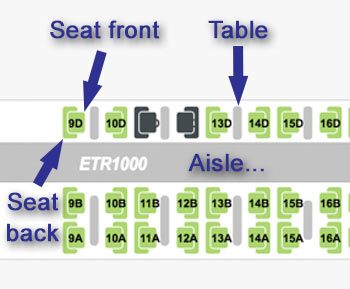
Luggage on trains in Italy
Luggage is no real problem on Italian trains, and it makes no real difference whether you go 1st or 2nd class, there's always room for bags. You don't check your bags in and there is no baggage car. You simply take whatever you like into the train with you, and stick your bags on the racks above your head or on the big luggage racks at the end of each car or between the seat backs. On regional trains, it just goes on the floor next to you if there aren't any racks.
There are no baggage fees or weight limits to worry about, for most practical purposes if you can carry it you can bring it. It's so simple, it hardly needs explaining, yet overseas visitors chase their tails worrying about it. Don't over-think it, but don't travel with more than you really need. Anything up to backpack-sized fits on the racks above your head, larger items such as bulky suitcases go on the racks at the end of the car, in the seating area, or between the seat backs.
Security is not a major problem, your bags full of clothing are no more likely to be stolen than airline checked baggage. There's no need to chain your bag to the rack, any more than you'd chain you bags to the luggage bin on a plane. Although I like to use a rack which I can see from my seat and I always keep cameras, passports and so on in my daypack at my seat. But I thought that was obvious?
Porters are pretty much a thing of the past along with butlers, valets and ladies' maids. However, Milan Centrale , Milan Porta Garibaldi , Venice Santa Lucia , Rome Termini , Florence SMN , Turin Porta Nuova are all termini with level access to and between all trains. You can just pull your bag on its wheels from street or taxi rank across the station concourse right up to the train door, lift it two steps up into the train, and wheel it to a convenient rack or space between the seats next to your seat. If you're elderly or pregnant, another passenger will almost always help you get your bags the two short steps into the train.
Luggage storage at stations
All main Italian stations including Turin Porta Nuova , Milan Centrale , Verona Porta Nuova , Venice Santa Lucia , Florence SMN , Rome Stazione Termini & Naples Centrale have left-luggage facilities, either lockers or a staffed facility. Information on left-luggage prices & opening times .
Which station in which city?
Roma Termini is the main station in Rome, in the city centre walking distance from all the sights, see the Roma Termini station guide .
Roma Ostiense and Roma Tiburtina are on the outskirts of the city, you'll need a local train or taxi (around €15) into the city centre. The Vatican has its own suburban station, Roma San Pietro, but it’s easy to reach St Peter’s from the Stazione Termini by bus or taxi.
Venezia Santa Lucia is the main station in Venice, in the city of Venice itself on the banks of the Grand Canal, 15-25 minutes walk from the Rialto Bridge & St Mark's Square. See the Venice Santa Lucia station guide .
Venezia Mestre is on the mainland in an industrial area outside Venice itself, always book to Venice Santa Lucia unless you have a hotel in Mestre.
Firenze Santa Maria Novella is the main station in Florence, often abbreviated to SMN, in the city centre easy walking distance from all the sights. See the Florence SMN station guide . A few trains use Campo Marte or Rifredi stations outside the city centre, linked to SMN by frequent local trains.
Milano Centrale is the main station in Milan, a magnificent terminus in the city centre, served by most mainline & international trains. It's a major Milan attraction in its own right, see if you can spot Mussolini . See the Milan Centrale station guide .
Milan Porta Garibaldi is rather less magnificent, but still central, used by the French Railways TGVs to Paris and by some Trenitalia trains. It's a 25 minute walk, 5 minute metro ride or 8 minute taxi ride from Centrale.
Some Malpensa airport trains arrive at Milan Cadorna, a small local terminus also located in the city centre, other Malpensa airport trains run to Milan Porta Garibaldi and Milan Centrale . Milan Lambrate is much less central, and Milan Rogoredo is 5 km from the city centre.
Torino Porta Nuova is the main station, a large and historic terminus, see the Turin stations guide .
However, trains to & from Paris use Turin's other main station, Turin Porta Susa , and most trains to or from Rome, Milan or Venice call at Porta Susa before or after Porta Nuova . Both stations are in Turin's city centre, walking distance from all the sights.
In Siena, the station is at the foot of the hill and used to be a steep trek up to the old town. However, there's now a series of modern escalators and moving walkways that ferry you almost painlessly to the top of the hill, from where it's just a minute or two's walk to the Porta Camollia at the entrance to the old town. From the Porta Camollia it's a pleasant 15 minute stroll to the famous Piazza del Campo.
Leaning Tower of Pisa
Map of Pisa showing tower & railway stations . Many people do Pisa as a day trip from Florence, using the frequent local trains. Pisa Centrale is 2km from the Tower, a 30 minute walk, but if you take a train to Pisa S. Rossore station it's only a 5-10 minute walk to the Tower. Some trains from Florence go direct to Pisa S. Rossore, 1 stop beyond Pisa Centrale, others require a change at Pisa Centrale. Check train times using www.trenitalia.com or www.italiarail.com .
How to travel to Sicily
The train is a wonderful way to reach Sicily, an experience in itself.
There are two daytime InterCity trains from Rome & Naples to Palermo, Catania, Siracuse and time-effective overnight sleeper trains from Milan, Rome & Naples direct to Palermo, Catania & Siracuse. See the timetable & information on the Trains to Sicily page .
If you use the daytime trains, bring a picnic and bottle of wine (as there's no catering car) and enjoy the ride, much of it along the Italian coast just a stone's throw from the sea towards the toe of Italy.
All these trains are shunted onto a ferry at Villa san Giovanni for the short crossing of the Straits of Messina to Sicily. It's the last remaining place in Europe where passenger trains go onto a ferry, a unique experience, watch the video . Once the train is secured in the ship's hold, steps are placed next to the train doors, and you can either remain on board the train or get off and walk upstairs to the deck to take some sea air, returning to the train as the ferry docks on the other side. Highly recommended! You can book all of these trains to Sicily as shown here .
Or use an overnight ferry from Naples : You can sail from Naples to Palermo by comfortable overnight ferry, with a or shared cabin with en suite shower & toilet, and there are restaurants and bars for an enjoyable evening on board. Ferries typically sail every day at around 20:00 and arrive around 06:30 in both directions. See www.tirrenia.it & www.snav.it for times, dates, fares & online booking.
How to reach Herculaneum, Pompeii & Sorrento
Naples to Herculaneum, Pompeii & Sorrento by Circumvesuviana train
The railway from Naples to Herculaneum, Pompeii & Sorrento isn't run by Trenitalia, it's the privately-run Circumvesuviana Railway, www.eavsrl.it . That's why you can't find trains to Sorrento on trenitalia.com or italiarail.com. Map of Naples showing stations .
Simply buy a mainline ticket from Venice, Florence, Rome or wherever to Naples Centrale at www.italiarail.com or www.trenitalia.com . On arrival at Naples Centrale, follow the signs to Circumvesuviana , these will take you downstairs to the Circumvesuviana station.
The Circumvesuviana station has its own ticket office, either buy a ticket to Ercolano, Pompeii Scavi or Sorrento there or use the ticket gate that allows you to touch in with a contactless bank card. Go through the automatic ticket gates onto the platform and hop on the next train.
Trains run to Herculaneum (Ercolano), Pompeii and Sorrento every 30 minutes throughout the day, no reservation is necessary or possible. Outside the weekday rush hours the trains are not crowded, there are plenty of seats and it's very easy to use. Luggage goes on the racks or just on the floor, no problem. This handy video shows you what to expect .
Naples to Pompeii costs around €3.20 one-way, journey around 40 minutes.
Naples to Sorrento costs around €4.50 one-way, journey 55-65 minutes.
Naples to Sorrento by ferry
You can also travel from Naples Beverello ferry terminal to Sorrento by fast ferry with around 5 departures a day, journey time 45 minutes, fare around €13, bags €2.10, see www.alilauro.it . You can buy online or just buy at the ferry terminal on the day.
To the top of Vesuvius
To visit the summit of Vesuvius, two morning buses run from Naples or a more regular bus service runs from Pompeii, both run by EAVBUS, see www.eavbus.it (Italian only) or (more usefully) www.unicocampania.it , click English top right and look for 'Vesuvio Fares' under 'Tourist Info'.
Day trip to Pompeii? It's easy to arrange a trip to Pompeii yourself by train, see the guide here .
How to reach Capri
Buy a mainline ticket from Venice, Florence, Rome or wherever to Naples Centrale at www.italiarail.com or www.trenitalia.com .
The island of Capri is just off Sorrento. You have two options: You can take a direct ferry from Naples to Capri, journey time around 45 minutes, fare €20.10, or you can take the Circumvesuviana Railway to Sorrento (55-65 minutes) then a shorter ferry crossing to Capri (around 25 minutes, fare €18.10).
If you choose the ferry from Naples, take a taxi (5-10 minutes) or walk (about 25 minutes) from Naples Centrale to Naples Beverello ferry quay. Fast ferries taking just 45 minutes link Naples Berevello with Capri every hour or two between 07:00 & 18:00, see either www.snav.it or Omio.com for times & fares. The ferry fare is about €20.10 plus a euro or two per item of large luggage. You don't need to pre-book the ferry, just turn up, buy a ticket and hop on. Map of Naples showing station & ferry terminals .
If you choose to take the local Circumvesuviana Railway to Sorrento, there are many ferries to Capri, no pre-booking necessary. Just be aware that it's a longish steep walk from Sorrento Circumvesuviana station down the hill to the ferry terminal.
Ferries from both Naples & Sorrento arrive at Capri's busy Marina Grande, there's a funicular railway up the steep hillside to Capri town itself. Bring plenty of money to Capri, even a small beer costs over €7!
How to reach Ischia
Ferries link Naples with Porto Ischia, see either www.caremar.it (sailings every hour or two, crossing time 45 minutes fast ferry or 90 mins conventional ferry) or www.alilauro.it .
How to reach Amalfi, Positano, Praiano
Option 1, by bus from Salerno
There's no railway to these towns on the famous Amalfi Coast, but buses run from Salerno to Amalfi. So buy a train ticket for one of the many high-speed trains from Milan, Florence and Rome direct to Salerno, then hop on a bus to Amalfi. This Salerno bus option is the quickest way to Amalfi.
Buses link Salerno & Amalfi every hour or better between 06:00 & 22:30 on Mondays-Saturdays, slightly less frequently on Sundays, journey time 1h15, fare around €2.20 one-way, you buy a ticket at the tobacconists shop inside Salerno station. The buses are operated by SITA, to check bus times see www.sitasudtrasporti.it (in Italian only, click 'Orari' then 'Campania'). To check fares, you'll need to use public transport site www.unicocampania.it , click English top right then 'Fares & Tickets'.
Option 2, by ferry from Salerno
Alternatively, you can take a ferry from Salerno to Amalfi or Positano. See www.coopsantandrea.com for a timetable of small coastal ferries from Salerno (Concordia dock, 800m from Salerno railway station) to Amalfi and Positano. At the time of writing, they had departures from Salerno at 08:40, 09:40, 10:40, 11:40, 14:10 and 15:30, journey time to Amalfi just 35 minutes, but check their website for current timings. This is a good option in summer when the narrow coast road is clogged with traffic.
Option 3, by bus from Sorrento
You can also buy a train ticket to Naples, hop on the Circumvesuviana Railway to Sorrento as shown above then take a bus to Positano, Praiano & Amalfi. For buses linking Sorrento with Positano, Praiano & Amalfi, see www.sitasudtrasporti.it (in Italian only, click 'Orari' then 'Campania'). Sorrento-Amalfi takes 1 hour 40 minutes, buses run hourly or at certain times half-hourly 06:30 to 22:00, and the fare is around €2.90. The journey along the coast road is dramatic, the bus hugging the cliff and it rear end swinging out precariously at every hairpin bend!
Option 4, a private transfer from Naples to Praiano, Positano or Amalfi hotels
If cost is no object, a private car transfer from Naples Centrale railway station to Positano or Praiano costs around €95 one-way for up to 3 people, or around €110 to Amalfi. Try www.amalfishuttle.com or www.positanoshuttle.com (same people - click 'transfer' at the top). I have not had any reports about them yet, so feedback would be appreciated. They will also do transfers from Sorrento Circumvesuviana station, which reduces the cost.
How to reach Elba
Travel by train to Piombino Marittima. Moby Lines ( www.mobylines.com ) sail every hour or so from Piombino to Portoferraio on Elba, crossing time 1 hour, foot passengers €7 one-way.
How to reach Lake Como
Como San Giovanni is the mainline station for Como, it's on the Zurich-Milan main line and linked to Milan Centrale by frequent regional train. Check times as above .
Lecco, Varenna & Bellanoare on the eastern side of Lake Como, there is a station at Lecco & Varenna-Esino (for the ferry to Bellagio) and Bellano on the Trenord local line linking Milan Centrale with Tirano (near the Swiss border, for the fabulous narrow-gauge Bernina route to Chur & Zurich). Check times as above
How to reach Lake Garda
There are two main stations for Lake Garda, Desenzano del Garda-Sirmione or Peschiera del Garda , both on the Milan-Verona-Venice main line. As well as regional trains, some Milan-Verona-Venice Frecciarossas call at Peschiera or Desenzano.
Alternatively, take a train to Verona Porta Nuova . Buses run frequently times an hour from outside the station to the eastern shores of Lake Garda including Lazise, Bardonlino & Garda, see the bus company website www.atv.verona.it .
How to reach San Marino
San Marino has no rail station, but can easily be reached by bus from Rimini. Buses leave from outside Rimini railway station every hour or so between 08:10 and 19:25 in winter, between 06:45 and 20:30 in summer, less frequently on winter Sundays, journey time 50 minutes, fare around €5.00 one-way. You can check bus times and fares at the bus company website, www.bonellibus.it .
How to reach Sardinia
Ferries to Sardinia
Ferries sail from Civitavecchia, Livorno, Naples & Palermo to various ports on Sardinia including Olbia & Golfo Aranci in the north and Cagliariin the south. Operators include Tirrenia, Grimaldi Lines, Corsica-Sardinia Ferries, use Direct Ferries to check and book all ferry routes & operators .
The shortest ferry crossing is Civitavecchia (just north of Rome) to Olbia where the daily daytime ferry takes 5h30, and an overnight ferry with cabins takes 7h. A daily ferry with cabins links Naples with Caligari overnight.
Trains on Sardinia
Regional trains run by a division of Trenitalia link the major centres and ports: Golfo Aranci, Olbia, Sassari, Porto Torres, Oristano, Cagliari. You can check train times at www.trenitalia.com although as trains are classed as regional you may as well just buy tickets at the station on the day.
In addition to the main Trenitalia routes, tourist services called the Little Green Trains run on two or three very rural routes, see www.treninoverde.com (in Italian only, use Google Chrome translation feature). These trains are run by transport authority ARST, a company formed by merging the urban transport authority with Sardinian Railways.
Airport train connections
Milan malpensa airport.
There are regional trains from Milan Malpensa airport to Milan Centrale every 30 minutes, journey time 52 minutes, fare around €12, no reservation necessary or possible, just buy a ticket at the station and hop on the next train.
Change at Milan Centrale for high-speed Frecciarossa & Frecciabianca trains to Venice, Florence, Rome, Naples or anywhere else in Italy. You can check times & fares at www.italiarail.com or www.trenitalia.com . Reservation is required for Italian long-distance & high-speed trains, make sure you read the tips below.
Rome Fiumicino airport
Leonardo Express trains run from Rome Fiumicino airport to Rome Termini in the city centre every 30 minutes, journey time 32 minutes, fare around €14, no reservation necessary or possible, just buy a ticket at the station and hop on the next train.
Change at Rome Termini for high-speed Frecciarossa & Frecciargento trains to Venice, Florence, Naples or anywhere else in Italy - indeed, there's even a very occasional direct high-speed train from Rome Fiumicino Airport to Florence & Venice. You can check times & fares at www.italiarail.com or www.trenitalia.com - Reservation is required for Italian long-distance & high-speed trains, make sure you read the tips below.
Pisa airport
A people-mover (driverless train) shuttles passengers from Pisa airport to Pisa Centrale in the city centre in just 8 minutes. Change at Pisa Centrale for hourly regional trains to Florence, and regular regional, Intercity or Frecciabianca trains to Rome, La Spezia and Monterosso in Cinque Terre. You can check times & fares at www.trenitalia.com selecting Pisa fermata Aeroporto for Pisa airport station - but read the tips below.
Bologna airport
A people mover links Bologna Centrale with Bologna airport, for more info see the Bologna Centrale station guide .
Tips for buying plane-to-train tickets
The regional trains from Malpensa into Milan, from Fiumicino into Rome or from Pisa to Florence are no problem - you can turn up, buy a ticket at the station & hop on the next train. No reservation is possible and no pre-booking necessary. They cannot sell out.
But if you intend to catch an onward high-speed train from Milan or Rome to (let's say) Florence, Naples or Venice, remember that Italian high-speed trains require reservation and tickets are only valid on the specific train you book .
Cheap advance-purchase economy or super-economy tickets become worthless if your flight is late and you miss your train. Even a flexible 'base' ticket becomes worthless one hour after departure if you can't get to a Trenitalia ticket counter to change the reservation to a later train.
So when arriving by air at Malpensa or Fiumicino and going to Florence, Naples, Venice and the like, you must choose one of two strategies:
Option 1, prioritise your budget: The money-saving option is to buy a cheap Super-Economy fare and commit to a specific train in advance at www.italiarail.com or www.trenitalia.com , but allowing a hefty 3-4 hours between flight arrival and train, to allow for any flight delays or long lines at immigration.
Option 2, prioritise your time: The time-saving option is to just buy a ticket at the base price when you get to the airport station. Then you can buy a ticket for the first train leaving after you have landed, collected your bags and are ready to go. I know this goes against the grain for overseas visitors desperate to reserve every Starbucks cappuccino 6 months ahead, but unless it's Christmas Eve or the like, you'll always find places available even right before departure as there are so many seats on so many trains, this shouldn't be a concern. You can check what the base fare is by running an enquiry on www.italiarail.com , clicking on a train then clicking the button marked '+ show flexible fares'. The flexible fare is what you pay at the station on the day.
A compromise option? You may find it cheaper to book cheap advance-purchase tickets on two trains - the train you should easily make if your flight is on time and a back-up train an hour or two later - than to pay the base fare for one train as in the time-saving option above. Or book one train that you should normally easily be able to make, then just accept that if the plane is significantly late, you'll have to buy another ticket at the base fare.
How to use Trenitalia.com
The Italian Railways website www.trenitalia.com is well worth getting to know. It can sell:
Domestic Italian train tickets for any train journey within Italy, including couchettes & sleepers on overnight trains, at cheap prices with no booking fee.
International train tickets for most direct international trains starting in Italy heading for Paris, Switzerland, Austria, Germany and Slovenia, including couchettes & sleepers on overnight trains, again with cheap tickets if you pre-book. Remember that ticket collection for trains to Austria & Germany is only possible at stations in Italy!
Or use Italiarail.com instead. You may find www.italiarail.com easier to use than trenitalia.com for sleeper trains, international trains and passholder reservations. ItaliaRail is a US-based agency who connects directly to the Trenitalia ticketing system to sell the same trains at the same prices as Trenitalia, but in plain English using English-language place names. They charge a booking fee of around €3.50, but this will be refunded if you send them an email at [email protected] after you book.
How to use www.trenitalia.com
Base is the fully-flexible fare, it's what you'd pay at the station on the day. Refundable, only valid on the train booked but can be changed before departure, or at the station up to an hour after departure. The base fare was originally one fixed-price for a given journey, but as from late 2017 the base fare for Frecciarossa & Frecciargento trains can vary slightly by day of the week or the popularity of each particular train.
Economy & Super-Economy are Trenitalia's cheap advance-purchase fares, only valid on the train booked, limited refunds & changes, limited availability, these are the fares you want for cheap travel, if you are certain what time train you want.
Cartafreccia Special fares can only be bought if you have a Cartafreccia card, which you probably haven't.
Ordinaria is the regular fare for regional trains. It's fixed-price, you can buy at that price even on the day. In principle this fare is good for any train, but you now need to select a specific departure and check in online for it before boarding, see more about how regional tickets now work .
Posto Doppio - Compart. Intero = books a whole private 2-bed sleeper for 2 people. If there's 2 of you, this is what you select for both passengers.
Posto Doppio - Uomo = reserves a bed or beds in a shared 2-bed sleepers, male-only compartments.
Posto Doppio - Donna = reserves a bed or beds in a shared 2-bed sleepers, ladies-only compartments.
Posto Singolo = single-bed sleeper, books one private compartment for one person.
Cuccette C4 Comfort-Promiscuo = bunk in shared 4-berth Comfort couchettes, normal mixed sex compartment.
Cuccette C4 Comfort - Donna = bunk in shared 4-berth Comfort couchettes, in special ladies-only compartment.
Cuccette C4 Comfort-Compart. Intero = whole 4-berth Comfort couchette compartment (must have 4 passengers selected).
Compartimento 3 Letti - Uomo = bed in shared 3-bed sleeper, male-only compartment.
Compartimento 3 Letti - Donna = bed in shared 3-bed sleeper, ladies-only compartment.
Compartimento 3 Letti - Intero = 3-bed sleeper, whole compartment (need to have pre-selected 3 passengers).
To book 2 people together in a 2-bed sleeper you'd select Posto Doppio - Compart. Intero for both passengers.
On some international routes they use slightly different sleeper terminology:
Cabina A3 = 3-berth. Cabina A2 = 2-berth. Gran classe = deluxe with shower & toilet.
But again, Uomo means male, donna means female, intera means you want to book a whole compartment.
Other problems? If you get stuck, you can contact Trenitalia's web team at [email protected] to unfreeze frozen accounts and so forth. They can handle emails in English. Or you can call Trenitalia telesales on +11 39 06 6847 5475.
How to use Trenitalia ticket machines
It's easy to buy tickets at the station using the self-service ticket machines at all main Italian stations, as long as you have a credit card with a PIN (4-digit personal identification number). They have an English language facility, and it's faster and easier than using the ticket office. The machines are pretty self-explanatory, but to give you confidence and so you know what to expect, here's how to use them.
Incidentally, you'll sometimes find annoying types who hang around offering to 'help' foreigners, just be healthily suspicious of them and refuse all help, you don't need it as the machines are self-explanatory and you certainly don't need anyone near your wallet or pockets while you are distracted. Italian stations are perfectly safe (I've spent literally hours hanging round them out of professional interest, without any problem whatsoever), but it pays to be streetwise!
To buy a ticket
Children under 4 go free with no ticket needed, children under 12 can use a child rate ticket on regional trains, children under 14 can use a child ticket on Frecciarossa, Frecciargento, Frecciabianca, InterCity & InterCity Notte mainline trains.
Paying for a guidebook may seem an unnecessary expense, but it's only a fraction of what you spend on the whole trip. If you have a decent guidebook, you see so much more and know so much more about what you're looking at. I think the Lonely Planets or Rough Guides are the best ones out there for the independent traveller.
Click the images to buy at Amazon.co.uk
Or buy in the usa from amazon.com.
Alternatively, you can download just the chapters or areas you need in .PDF format from the Lonely Planet Website , from around £2.99 or US$4.95 a chapter.
European Rail Timetable & maps

Rail Map Europe is the map I recommend, covering all of Europe from Portugal in the west to Moscow & Istanbul in the east, Finland in the north to Sicily & Athens in the south. Scenic routes & high-speed lines are highlighted. See an extract from the map . Buy online at www.europeanrailtimetable.eu (shipping worldwide) or at www.amazon.co.uk (UK addresses).
Recommended hotels
Here are my suggested hotels in key Italian cities, conveniently located for arrival by train and all with good or great reviews. You are unlikely to be disappointed by any hotel scoring over 8.0 out of 10 on Booking.com .
There are lots of hotels near Milan Centrale , used by the Frecciarossa to/from Paris, the EuroCity trains to/from Switzerland and the majority of Italian domestic trains.
Affordable hotels & guesthouses with good or great reviews just outside the station include the Hotel Bristol , Hotel Bernina , 43 Station Hotel , B&B Hotel Milano Central Station , Guesthouse Teodora .
M ore upmarket hotels include HD8 Hotel , Glam Hotel , Made to Measure Business , Starhotel Echo or Starhotel Anderson .
At the top end, the 5-star Excelsior Hotel Gallia is just across the road, you won't go wrong with that if your budget will stretch!
Near Milan Porta Garibaldi (used by the TGV to/from Paris), the AC Milano Hotel (a Marriott Lifestyle Hotel) is just 350m from the station and gets good reviews. Also try the Holiday Inn Porta Garibaldi , which offers family rooms.
Hotels near Verona Porta Nuova station with good or great reviews include the Corte Merighi Rooms & Breakfast , Novo Hotel Rossi , Guesthouse Verona or (a little closer to the centre, but with fab reviews) the Relais Empire .
Location, location, location! Some people try to save money by staying on the mainland at Mestre , hotels in Mestre being naturally cheaper. It's an option, but don't do it if you don't have to. You want to be a resident in Venice, not a serial day-tripper, so try to find an affordable place in the historic city of Venice itself.
Venice Santa Lucia station is walking distance from everywhere in central Venice including the Rialto Bridge and Piazza San Marco, so a hotel near the station which you can easily walk to with your bags makes a lot of sense.
Relatively inexpensive places with good reviews near Venice Santa Lucia include Albergo Marin , Hotel Marte , La Loggia della Luna , Albergo ai Tolentini .
An excellent upmarket choice just 5 minutes walk from Venice Santa Lucia is the small and intimate Hotel Canal Grande - I've stayed there myself. Also try the Abazzia De Luxe .
For the least expensive places in central Venice check www.hostelworld.com . Use the map view to see places in Venice itself.
Of course, if you have the financial backing for a water taxi, then fine, stay near San Marco or wherever you like. My son nagged me continually until I caved in and splurged €70 on a water taxi from Santa Lucia station to St Marks. I have to say that it was the best thing I have ever done in Venice, and that includes a gondola ride!
If you do decide to stay in Mestre to save money and travel in & out of Venice by train every day, try the Hotel Cris which has great reviews 200m from Venezia Mestre station , and the Best Western Plus Hotel Bologna .
In Florence
For something fancy, try the Hotel Santa Maria Novella with a 9/10 review score and rooftop terrace overlooking the Basilica of Santa Maria Novella. It's a mere 5-minute 400m walk from Florence Santa Maria Novella station .
For something more affordable but also an easy walk from the station, try the Hotel Art Atelier .
Other hotels nearby with good reviews include C-hotels Club , 7Florence B&B , Hotel Lombardia .
There are many hotels near Rome Termini . However, an affordable top choice with a 9/10 review rating is the Hotel Diocleziano , a 5-minute 400m walk from Roma Termini's main entrance, set in a 19th century building next to the Terme di Diocleziano ancient Roman baths.
An upmarket option near the station is Hotel Le Petit , an 8-minute 700m walk from the station, also with great reviews.
Other hotels near the station with good or great reviews include The Hive Hotel , Dream Station , The Republic Hotel .
There are lots of hotels near Naples Centrale .
The Starhotel Terminus is just across the road from the station, gets great reviews and has a roof terrace with views over the Bay of Naples.
The Hotel Potenza is only a little further into the Piazza Garibaldi, cheaper, also with good reviews.
The Unahotel Napoli is highly recommended, on Piazza Mancini overlooking Piazza Garibaldi, on the far side facing the station.
Also consider the Pit Stop Napoli Centrale .
Booking.com for hotels
I generally use Booking.com for hotels for 3 reasons:
(1) It keeps all my hotel bookings together in one place;
(2) I've come to trust Booking.com 's review scores;
(3) Booking.com usually offers a clearly-marked Free cancellation option.
Free cancellation means you can secure hotels risk-free even before trains open for booking, and if necessary change those bookings if your plans evolve.
If I'm only staying a night or two, I look for a hotel near the station to make arrival & departure easy. You can enter the station name (e.g. Berlin Hbf ) as search location. If staying longer, I look for a hotel close to the sights, entering the name of a city attraction as the search location, then using map view.
AirBnB: Airbnb.com
www.airbnb.com began in 2008 when two designers who had space to share hosted three travellers looking for a place to stay. AirBnB is a platform which connects hosts with guests, so you can now book a room in people's homes, or an apartment, flat or house which people want to rent out. It can be nicer than a hostel, cheaper than many hotels.
Backpacker hostels: Hostelworld.com
www.hostelworld.com offers online booking of dorm beds or cheap private rooms in backpacker hostels most European cities at rock-bottom prices. It's one way to cut costs significantly compared to using a hotel every night.
Travel insurance & other tips
Always take out travel insurance.
You should take out travel insurance with at least £1m or preferably £5m medical cover from a reliable insurer. It should cover trip cancellation and loss of cash & belongings up to a reasonable limit. These days, check you're covered for covid-19-related issues, and use an insurer whose cover isn't invalidated by well-meant but excessive Foreign Office travel advice against non-essential travel. An annual policy is usually cheapest even for just 2 or 3 trips a year, I have an annual policy with Staysure.co.uk myself. Don't expect travel insurance to bail you out of every missed connection, see the advice on missed connections here . Here are some suggested insurers, I get a little commission if you buy through these links, feedback always welcome.
Get an eSIM with mobile data package
Don't rely on WiFi, download an eSIM with a European mobile data package and stay connected. Most newer mobile phones can download a virtual SIM including iPhone 11 & later, see device compatibility list . There's no need to buy a physical SIM card! Maya.net is a reliable eSIM data retailer with a 4.5 out of 5 Trustpilot rating and a range of packages including unlimited data .
Get a Curve card for foreign travel
Most banks give you a poor exchange rate then add a foreign transaction fee on top. A Curve MasterCard means no foreign transaction fees and gives you the mid-market exchange rate, at least up to a certain limit, £500 per month as I write this. The money you spend on your Curve card goes straight onto one of your existing debit or credit cards. And you can get a Curve card for free.
How it works: 1. Download the Curve app for iPhone or Android . 2. Enter your details & they'll send you a Curve MasterCard - they send to the UK and most European addresses. 3. Link your existing credit & debit cards to the app, you can link up to two cards with the free version of Curve, I link my normal debit card and my normal credit card. 4. Now use the Curve MasterCard to buy things online or in person or take cash from ATMs, exactly like a normal MasterCard. Curve does the currency conversion and puts the balance in your own currency onto whichever debit or credit card is currently selected in the Curve app. You can even change your mind about which card it goes onto, within 14 days of the transaction.
I have a Curve Blue card myself, it means I can buy a coffee on a foreign station on a card without being stung by fees and lousy exchange rates, just by tapping the Curve card on their card reader. The money goes through Curve to my normal debit card and is taken directly from my account (in fact I have the Curve card set up as payment card on Apple Pay on my iPhone, so can double-click my phone, let it do Face ID then tap the reader with the phone - even easier than getting a card out). I get a little commission if you sign up to Curve, but I recommend it here because I think it's great. See details, download the app and get a Curve card , they'll give you £5 cashback through that link.
Get a VPN for safe browsing. Why you need a VPN
When travelling you may use free public WiFi which is often insecure. A VPN encrypts your connection so it's always secure, even on unsecured WiFi. It also means you can select the geographic location of the IP address you browse with, to get around geoblocking which a surprising number of websites apply. See VPNs & why you need one explained . ExpressVPN is a best buy with a 4.7 out of 5 Trustpilot ranking which I use myself - I've signed up as an ExpressVPN affiliate, and if you go with expressvpn.com using this link you should see a special deal, 3 months free with an annual subscription. I also get some commission to help support this site.
Carry an Anker powerbank
Tickets, reservations, hotel bookings and Interrail or Eurail passes are often now held on your mobile phone. You daren't let it run out of power, and you can't always rely on the phone's internal battery or on being near a power outlet. I always carry an Anker powerbank which can recharge my phone several times over. Buy from Amazon.co.uk or Buy from Amazon.com .
Touring cities? Use hill walking shoes!
One of the best things I've done is swap my normal shoes for hill-walking shoes, in my case from Scarpa. They're intended for hiking across the Pennines not wandering around Florence, but the support and cushioning for hiking works equally well when you're on your feet all day exploring foreign cities. My feet used to give out first and limit my day, now the rest of me gives up before they do!
Back to 'Rail travel to Europe' general page
Back to home page

I spent nearly a month traveling through Italy. Here are 8 things I'll do differently when I go back.
- We visited Italy for 25 days this past summer, and there are things we'd do differently next time.
- We'd only stay in a few places, learn more Italian, and buy comfy shoe inserts.
- I'd skip bus tours and Airbnbs and explore more small places next time.
We'd stay in 2 or 3 places, tops
Across our 25 days, we stayed in seven different places, which let us see the best of Venice, the Dolomites, Lake Como, Cinque Terre, Florence, Rome, and the Amalfi Coast.
But every four days or so, we had to pack up, board a train (or brave a rental car), and travel to our next location.
For a first-time trip, I stand by this choice. But now that we've been and hit all the bucket-list items, I look forward to a return trip where we stay in two, maybe three, spots and really soak in the local culture .
If I had to choose, I'd definitely spend more time in Cinque Terre or the Amalfi Coast, and I could spend months in some of the small towns we visited between Rome and Florence and be thrilled.
Small towns would take priority over more famous ones
Some of our best memories were our days in Orvieto, Bracciano, and Civita di Bagnoregio, all charming towns between Rome and Florence . Wandering the streets, sampling the food, exploring a castle, and just observing the culture was so relaxing.
We visited a few other small towns in Tuscany during day trips from Florence, but most of our days were spent in the larger, sprawling cities you've more likely heard of.
Although those cities were full of adventure, great food, beautiful architecture, and even nightlife, I found myself drawn to those smaller towns — and I can't wait to go back and explore more.
Bus tours will not be on our itinerary ...
We took two guided bus tours — one to Tuscan towns and one to wine tastings — but we felt the experiences were rushed, overpriced, and spent mostly on the bus.
For instance, when we visited Siena on a tour bus, we only had an hour to see the city. But we had a half day of exploring when we drove to Orvieto and a full day of exploring when we took the train to Bracciano.
Going on your own can be scary and stressful, but there's lots more adventure that way, too.
... and neither would Airbnbs
We mostly stayed in hotels and agriturismos ( farmhouse stays ) during our trip, with just one Airbnb, but that wasn't the original plan. When we booked the trip earlier this year, our itinerary featured mostly Airbnbs.
However, hosts kept canceling our bookings with little explanation. One said he needed to cancel our reservation and ask us to book again at a higher price.
After multiple cancellations — and plenty of frustration — we decided it would be easier to just stick with hotels , for the most part. (We held onto one Airbnb because we loved the location and wanted access to its washing machine.)
Going forward, we plan to stick to formal lodging when traveling internationally. Back home in the US, we'll still rely on a mix of hotels and Airbnbs.
We'd wander farther south
Our trip started in Venice, and then we went a little north. Eventually, we made our way down to Florence and Rome, then the Amalfi Coast. But then we went back up to the Roman airport and headed home.
Italy's a massive country, and we completely missed the actual "toe" and "heel" of its boot shape. Most notably, we didn't make it to Sicily , which I've read is a trip on its own. We intend to go back someday just to explore this region.
Better-fitting shoes and inserts for them would be essential
My husband and I are avid hikers, and we packed some of the best hiking boots REI has to offer. But we only wore those when hiking in the Italian Dolomites and the Path of the Gods on the Amalfi Coast.
The rest of the time, we walked in tennis shoes. And we walked a lot .
When you're touring Italy's cities and small villages, it's easy to walk 10 to 15 miles a day. Doing so took a toll on my feet. By the end of the trip, my tennis shoes were down for the count, and I had blisters all over my feet.
When we go back, I will definitely be packing shoe inserts — and some better-fitting sneakers.
We'd learn more Italian
Although we certainly got by with English, our Italian cheat sheet, the little we learned from Duolingo, and Google Translate, I definitely wish I had learned more Italian before the trip.
I don't foresee ever being able to have a full-on conversation with a local, but I would at least like to make an attempt. After all, I'm in their country — I'd love to try to speak their language .
We'll be wearing plenty of linen clothing next time
Linen shirts, shorts, and pants are all the rage in Italy, and it's clear why: They're cool and comfortable on hot Italian days.
We each bought a pair of linen shorts about halfway through our trip, and they were a huge improvement from the khakis we'd been wearing. Linen is much lighter and more breathable, which was great on long days of walking around cities and hopping on and off hot buses and trains.
Close to the end of the trip, I splurged on linen shirts as well. How I wish I would've worn those shirts every day.
The beautiful thing about not having all the best experiences on our first trip to Italy is that we have a reason to go back
My husband and I have plenty of other trips abroad on our horizon, but I know we'll return to Italy to relive some of our favorite memories and make some new ones.
That's the thing to remember about a trip to Italy — or anywhere, really. Just understand that you can't possibly see it all on any single trip, and there will always be things you'd do differently if you could.
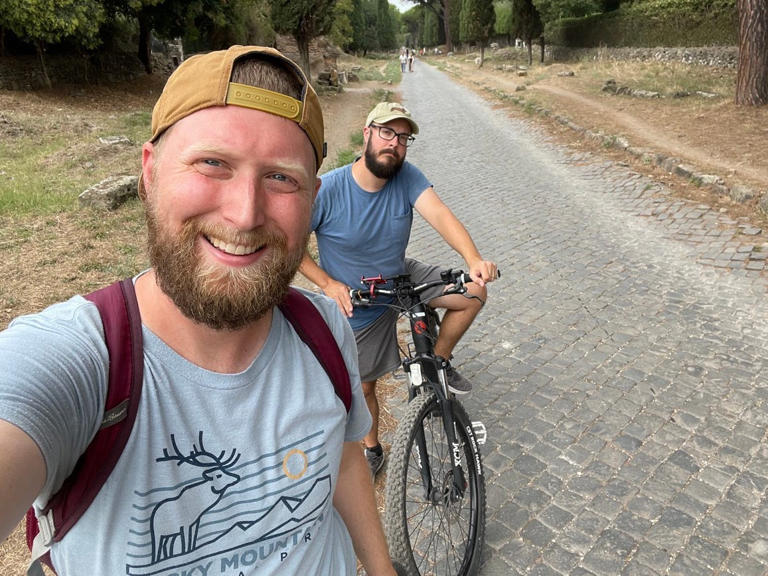
Awesome, you're subscribed!
Thanks for subscribing! Look out for your first newsletter in your inbox soon!
The best things in life are free.
Sign up for our email to enjoy your city without spending a thing (as well as some options when you’re feeling flush).
Déjà vu! We already have this email. Try another?
By entering your email address you agree to our Terms of Use and Privacy Policy and consent to receive emails from Time Out about news, events, offers and partner promotions.
Love the mag?
Our newsletter hand-delivers the best bits to your inbox. Sign up to unlock our digital magazines and also receive the latest news, events, offers and partner promotions.
- Los Angeles
Get us in your inbox
🙌 Awesome, you're subscribed!

The 10 most beautiful places in Italy
Italy's list of stunning destinations is seemingly endless. The most beautiful places in Italy? Look no further

Widely regarded as one of the most beautiful countries on earth, Italy is full of beautiful places to visit. With its rich cultural heritage, diverse landscapes and long-standing traditions, there’s a lot to uncover on a trip to Il Bel Paese.
The enduring popularity of Italy means many areas of the country suffer from over-tourism. We’ve done our best to cover the most beautiful places in Italy while highlighting some of the unique destinations you can visit within them to avoid (some of) the crowds. Next time you visit Italy, don’t miss these unique attractions showcasing the best of its nature, culture and history.
RECOMMENDED: 🏝️ The best Italian islands 🏖️ The best places to visit in Italy 🇮🇹 Italy's most beautiful villages and towns 🍝 The best restaurants in Italy
Livia Hengel is a travel writer based in Rome. At Time Out, all of our travel guides are written by local writers who know their cities inside out. For more about how we curate, see our editorial guidelines . This guide includes affiliate links, which have no influence on our editorial content. For more information, see our affiliate guidelines .
An email you’ll actually love
Most beautiful places in Italy

1. Val d’Orcia
Tuscany needs little introduction. A region beloved for its picturesque landscapes, vast vineyards and curving roads lined with cypress trees, it’s a destination everyone dreams of visiting once in a lifetime. The Val d’Orcia, located south of Siena, is one of our favourite parts of Tuscany to explore, with its charming hilltop towns and numerous wine estates. Don’t miss visiting the thermal village of Bagno Vignoni, with a large pool in its central piazza, wineries around Montalcino, which produce the area’s fabled Brunello red wine, and La Foce, a 15th-century estate with one of Italy’s most beautiful, manicured gardens.

2. Burano
Venice is more than Saint Mark’s Square. This beautiful, floating city comprises 118 islands scattered throughout the Venetian Lagoon. Hop on a vaporetto and head north in the lagoon to Burano, a small fisherman’s island with candy-coloured houses, lace workshops and tiny alleyways. Don’t miss seeing the leaning tower in the central piazza and enjoying lunch at one of Burano’s trattorias, serving local specialties, including sardines, fish risotto and bussolai (traditional cookies). You can also cross over a footbridge to reach Mazzorbo, a sleepy agricultural island where artichokes and grapes grow in a small vineyard.
📍 Check out more of the best day trips from Venice

3. Tuscia
The glory of Rome tends to overshadow the Lazio region, which is full of fascinating places that are well worth a day trip. Tuscia, an old Etruscan stronghold located a couple of hours’ drive north, is the perfect region to escape the crowds while enjoying cultural and natural sights. Villa Farnese a Caprarola, a pentagonal 16th-century villa, houses incredible Renaissance frescoes, while the nearby Villa Lante in Bagnaia has exquisite gardens known for their water features. From Viterbo’s thermal waters to Lago di Bolsena’s lakeside towns, there’s a lot to see in the area. Don’t miss the Civita di Bagnoregio, a fairytale village sitting atop a tufa rock foundation, seemingly suspended above a vast valley.
📍 Discover the best things to do in nearby Rome

4. Costa degli Dei
If you’re looking for an alternative to the crowded streets of Positano, head further south to the Costa degli Dei – the Coast of the Gods – in Calabria. As its name suggests, this pristine coastline is an otherworldly marvel with crystal-clear turquoise water and soft, sandy beaches. The uncontested ‘pearl’ of the coastline is Tropea, a hilltop town overlooking the Tyrrhenian Sea, which offers mesmerizing views, Slim Aarons-style. Adventurous travellers will enjoy the Marina di Zambrone (which requires a hike to reach the beach), while Capo Vaticano has beach clubs with loungers for rent.
📍 Find more of the best beaches in Italy

5. Alta Murgia
Once regarded as the ‘shame of Italy’ for its troglodyte caves and underdeveloped infrastructure, Matera’s lunar landscapes are quickly becoming one of southern Italy’s leading attractions. It’s worth spending a couple of nights in the city before venturing across the vast Murgia park to explore smaller towns like Altamura, famed for its local bread production, and Gravina in Puglia, with its verdant canyons. The park is ideal for nature enthusiasts who will enjoy hiking, cycling and birdwatching across its limestone plateaus, while culture hunters should pay a visit to Castel del Monte, a 13th-century octagonal castle with towering views over the surrounding landscape.
📍 Discover more of the best things to do in Italy

6. Sorrentine Peninsula
One of the world’s most popular honeymoon destinations, the Sorrentine Peninsula is undoubtedly one of the most beautiful parts of Italy – if not the world. This scenic stretch of coastline, which includes the Amalfi Coast and Sorrento Coast, is filled with dozens of famous seaside towns, cliffside villages, rocky bays and sandy coves that capture the essence of la dolce vita . It’s hard to beat the crowds, but you’ll find more space – and locals – if you head to towns like Cetara, known for its anchovy production, and Vietri sul Mare, famed for its ceramics.
📍 Check out more of the most romantic places in the world

7. Villa Romana del Casale
The largest island in the Mediterranean, Sicily is a true microcosm of Italy – one which has seen empires rise and fall over millennia. As such, it is filled with ancient Greek and Roman relics, from temples and theatres to ornamental estates. Villa Romana del Casale, located in Piazza Armerina (a small town in central Sicily), is one of these. This large, 4th-century villa is best known for its well-preserved mosaics, the ‘Bikini Girl’, featuring young women playing sports and exercising —an extremely rare depiction that challenges gender roles and stereotypes of the time.

8. La Strada del Sagrantino
As one of the biggest global producers and consumers of wine, Italy is filled with vineyards up and down the boot. Instead of heading to more famous regions, why not explore Umbria’s rich wine heritage on your next trip? A full-bodied red wine made near Montefalco, Sagrantino pairs well with the region’s flavourful cuisine, which includes wild boar, black truffles and gingerbread with candied fruits. And with its rolling hills and fall foliage, the Sagrantino Wine Trail is every bit as beautiful as Chianti or Le Langhe. Nearby, you can visit charming medieval towns, including Todi, Spoleto and Assisi.

9. Riviera del Conero
Situated on the eastern shore of Italy, Le Marche is blessed with a long and picturesque coastline along the Adriatic Sea – and fewer crowds. Its highlight is the Conero National Park, a nature reserve that covers 18km of nature trails and cliffs overlooking secluded beaches where you can swim in crystalline water. La Spiaggia delle Due Sorelle (‘Beach of the Two Sisters’) is the prettiest bay in the park and is named for two large rock formations that emerge from the sea. You can reach it by sea with ferries from the port of Numana.
📍 Find more of the best hikes in the world

10. Residences of the Royal House of Savoy
A collection of 22 palaces and castles built by the House of Savoy in Piedmont, these castles in Turin are some of the most lavish residences ever built on Italian soil. The House of Savoy was a European royal dynasty that ruled from the 11th century until the monarchy was abolished in 1946. An enormously wealthy and influential family, the Savoy built several estates to house its members, enjoy recreational activities and host governmental functions. The 17th-century Venaria Reale, often referred to as the ‘Versailles of Italy’, is the most famous venue thanks to its grand hall with intricate stucco features and checkered floors.
[image] [title]
Discover Time Out original video
- Press office
- Investor relations
- Work for Time Out
- Editorial guidelines
- Privacy notice
- Do not sell my information
- Cookie policy
- Accessibility statement
- Terms of use
- Modern slavery statement
- Manage cookies
- Advertising
- Time Out Market
Stay up to date with notifications from The Independent
Notifications can be managed in browser preferences.
UK Edition Change
- UK Politics
- News Videos
- Paris 2024 Olympics
- Rugby Union
- Sport Videos
- John Rentoul
- Mary Dejevsky
- Andrew Grice
- Sean O’Grady
- Photography
- Theatre & Dance
- Culture Videos
Food & Drink
- Health & Families
- Royal Family
- Electric Vehicles
- Car Insurance deals
- Lifestyle Videos
- UK Hotel Reviews
- News & Advice
- Simon Calder
- Australia & New Zealand
- South America
- C. America & Caribbean
- Middle East
- Politics Explained
- News Analysis
- Today’s Edition
- Home & Garden
- Broadband deals
- Fashion & Beauty
- Travel & Outdoors
- Sports & Fitness
- Sustainable Living
- Climate Videos
- Solar Panels
- Behind The Headlines
- On The Ground
- Decomplicated
- You Ask The Questions
- Binge Watch
- Travel Smart
- Watch on your TV
- Crosswords & Puzzles
- Most Commented
- Newsletters
- Ask Me Anything
- Virtual Events
- Betting Sites
- Online Casinos
- Wine Offers
Thank you for registering
Please refresh the page or navigate to another page on the site to be automatically logged in Please refresh your browser to be logged in
The Independent's journalism is supported by our readers. When you purchase through links on our site, we may earn commission.
9 of the best holiday destinations in Italy for 2024
From milan to sardinia, here’s where to travel for tranquil lakes, historic cities and paradise islands, article bookmarked.
Find your bookmarks in your Independent Premium section, under my profile

Sign up to Simon Calder’s free travel email for expert advice and money-saving discounts
Get simon calder’s travel email, thanks for signing up to the simon calder’s travel email.
With a rich cultural heritage, fine cuisine and a Mediterranean climate, southern Europe ’s global tourist hotspot, Italy , gives dull summer holidays the boot – literally.
Famed for its romantic allure, dynamic mountain regions in the north meet idyllic islands in the south, plus there are mainland cities brimming with echoes of the past. Charming Positano fuses days spent sunbathing with sightseeing, fashion capital Milan boasts a wealth of delights for every season, and the olive groves and vineyards of the Tuscan countryside offer visitors a chance to live in the hills as the Romans did.
Whether a food lover, artist or history buff, feast your eyes (and stomach) on iconic landmarks and ancient architecture while enjoying a slice of authentic pizza on glamorous seaside shores.
From when to travel and where to stay, here are The Independent’s top Italian holiday destinations for city breaks, beach stays and countryside getaways where you can exprience la dolce vita .
Read more on Italy travel :
- Milan city guide: Best things to do and where to stay in Italy’s northern powerhouse
- Best hotels in Rome: See the Italian capital in style
- Italy travel guide: Everything you need to know before you go
Best for: History buffs
Rome is home to art masterpieces, ancient mythology and the Vatican City , the smallest country in the world. The passionate Italian capital is littered with ancient ruins, Roman villas, haunting temples and 13 heritage landmarks, including the Colosseum and the Pantheon. Within the walls of the historic centre, a Unesco World Heritage Site, indulging on streetside carbonara, tiramisu and fried artichokes to refuel from long days of sightseeing comes highly advised, after all, when in Rome ...
When to visit Rome
A good time to visit Rome is the spring shoulder season from March to May, as temperatures are warm but mild, and crowds are far more sparse than in the height of summer. Accommodation and flight prices tend to see better rates and average daily temperatures reach highs of 24C in May – perfect for sightseeing.
Where to stay
The exuberant Mama Shelter Roma in Prati offers quirky decor, three restaurants and a spa in the basement. A short walk from the Vatican, loud fabrics, lush greenery and comfortable bedrooms greet guests who can enjoy a Roman pizza and homemade gelato in the colourful lobby.
Rooms available from {{#price}} {{price}} per night {{/price}} {{^price}} Check availability for dates and prices {{/price}}
Rates provided by Booking.com
Hotel Amenities
Health & wellbeing, amalfi coast, best for: seaside towns.
Italy’s rugged southern shore on the Sorrentine peninsula is 50km of world-famous pastel houses, fishing villages and magical grottos. From A-list hotspot Positano to Ravello, Amalfi and Vietri sul Mare, chic boutiques, cliffside lemon groves and grand villas dot the popular holiday destination, a taste of azure paradise at the foot of Monte Cerreto mountain. Keen hikers can trek the “Path of Gods”, old-mule trails through the picturesque villages, for the most breathtaking views of the awe-inspiring Amalfi Coast .
When to visit Amalfi Coast
It’s off-peak tourism season in May, September and October, which is an ideal time to enjoy the coastline with fewer tourists. Comfortable temperatures in the low to mid-20s are still pleasant for days on the beach as well as afternoon walks in the famous lemon groves that bloom in spring.
Palazzo Avino, a 12th-century palazzo, boasts panoramic Amalfi views, stylish rooms and romantic garden terraces in Ravello. Antique accents, infinity pools and free shuttles to a private beach club on the coast give holidaymakers a taste of luxury before even dining in Rossellinis, the hotel’s Michelin-star restaurant.
Best for: Idyllic beaches
Off the west coast of mainland Italy, Sardinia ’s serene beaches and Emerald Coast ooze glamour. The opportunity to soak up the sun on quality sands attracts VIPs to decadent villas and superyachts on the Costa Smeralda every summer. The second largest Italian island has allure in abundance, with luxury spas and beaches on the coastline of Cagliari , the capital, and speciality regional dishes such as porcheddu (suckling pig) for tourists to try in between days spent living like a rockstar in Olbia.
When to visit Sardinia
The height of the summer holidays from June to August brings scorching temperatures, warm seas and luxury boats great for a beach holiday. With daily average temperatures of 32C in the hottest month (August), the renowned Mediterranean climate is a paradise for tourists. To swerve the sun seeking crowds, visit Sardinia in March for reduced room rates, calmer beaches and highs of 17C.
A few metres from Poetto Beach Hotel Nautilus in Cagliari exudes nautical style and authentic Italian vibes. Buffet breakfasts are complimentary and spacious sea-view rooms feature terraces and en suite bathrooms, some with outdoor whirlpool tubs.
Best for: Retail therapy
Northern city Milan , Italy’s fashion and design capital, is home to heritage brands such as Prada, Giorgio Armani and Dolce & Gabbana, renaissance art such Leonardo da Vinci’s mural The Last Supper , and the Gothic Duomo di Milano cathedral. For those who like the finer things in life, the undeniable style of the flashy metropolis in high-end stores, decadent architecture and bustling business districts, once part of Italy’s industrial Golden Triangle, has a unique lure.
When to visit Milan
September to December may see mild highs of around 18C and rainy days but are optimum conditions for those who wish to spend days in museums and shops on a budget. Ski holidays at nearby mountain resorts are also easily accessible from Milan.
The four-star Avani Palazzo Moscova Milan Hotel offers a small spa, outdoor terrace and contemporary Italian cuisine from inside Milan’s historic old railway building. It’s just five minutes to the cosmopolitan fashion hubs of Corso Como and Porta Nuova business district.
Best for: Italian charm
Glistening waters, romantic gardens and glamourous villages epitomise Italy’s third-largest lake. Lake Como’s Y-shaped body at the foot of the pine-fringed Alps is best enjoyed on picturesque private boat tours, secluded beaches and enchanting walks through the villages of Bellagio, Varenna and Tremezzo. The regal shores are dotted with ochre villas, fine dining and fashionable boutiques.
When to visit Lake Como
Head to Lake Como from April to June for mild weather, quiet shores and lower humidity. Highs of 25C bless the lake in June, but sporadic rain showers are not uncommon as Como’s gardens start to bloom.
Casa Sull’Albero , on the shores of Lake Como, features a minimalist design, airy natural furnishings and monochromatic bedrooms. Exploring leafy gardens, a small pool and activities, from wine tasting to water skiing, are on the itinerary for guests. There’s even an “honesty kitchen” stocked with local farm produce.
Best for: Walking holidays
The Dolomites ’ 18 peaks are a Unesco World Heritage mountain range in northeastern Italy. Sheer cliffs, dramatic valleys and glacial lakes populate the dynamic landscape and alpine adventures (skiing, hiking) and wellness holidays are abundant. Bordered by chocolate-box villages with winter markets and mountain museums, this Italian corner including South Tyrol, Trentino , and Belluno are great for chic stays in front of a breathtaking backdrop.
When to visit the Dolomites
June to September is an ideal time to visit the Dolomites on a hiking holiday. The region rarely tops 25C, a comfortable temperature for outdoor activities, and mountain huts are open on paths free from heavy snow and regulars on the skiing scene.
If quaint wooden rooms, cosy saunas and mountain views in the centre of Vipiteno are what you desire from a Dolomites holiday, then Steindl’s Boutique Hotel should fit the bill. Less than 100m from cycle trails, local restaurants and cable cars to the Monte Cavallo ski area.
Best for: Foodie delights
Medieval Bologna is a haven of culinary delights in the north of Italy. Swap afternoon teas for Aperol aperitifs and idle past Renassaince fountains to fairytale piazzas and al fresco gelato spots in the historic capital of the Emilia-Romagna region. The 11th-century university town houses collection of libraries, fine art and ancient squares – go on a food pilgrimage around the terracotta-tiled streets to best savour the taste of rich culture and cuisine in the home of bolognese.
When to visit Bologna
The best time to visit Bologna is in September and October, when the weather is still in the pleasant 20Cs but humidity levels are down. With autumn usually comes food festivals of local produce and dwindling crowds so better hotel rates.
I Portici Hotel , in the heart of Bologna, boasts a Michelin-starred restaurant, a bar and spacious rooms with intricately frescoed ceilings. A five-minute walk from Bologna Central Station, a lively atmosphere and park view terrace welcome guests to the historic town.
Siena, Tuscany
Best for: country landscapes.
The scenic Tuscan countryside is made up of rolling hills, leafy olive groves and world-famous vineyards. Siena , a raised medieval city with ancient piazzas and an old-world soul, sits amid distant green and brown fields, vines and lines of Cypress trees. Be charmed by the terracotta districts, unique museums and a wealth of tradition – including hosting the thrilling Palio horse race in the cobbled central streets – all an easy bus ride from the rest of Tuscany’s mesmerising sights.
When to visit Siena
Visitors should plan a trip from May to June. Crowds are more manageable, the Tuscan landscape is at its most vibrant and weather conditions reach highs of around 25C. However, for cheaper flights and quieter piazzas, visit off-peak in autumn to watch the leaves change colour.
Hotel Palazzo di Valli is an 18th-century villa built in traditional Tuscan style just 400m from the historic heart of Siena, with rooms featuring valley views, ornate Italian decor and authentic ceiling frescoes.
Palermo, Sicily
Best for: cultural classics.
Sicily, a volcanic paradise island of seafront resorts and cultural treasures is best absorbed in the musical capital, Palermo . The third largest opera house in Europe, theatrical architecture and echoes of Norman royalty make Palermo’s diverse landscape a hot spot for creative travellers in a fusion of occupier's past. Awash with beaches, chapels and authentic street food markets, a week in Sicily would not be complete without days in Palermo’s ancient world.
When to visit Palermo
The shoulder seasons of autumn and spring are the best time to visit Sicily, as the sweltering temperatures of summer begin to rise and fall to 20C but balmy evenings can still be spent tasting wine with only a light jacket required. Money-saving travellers should visit in winter – between December and Feburary – for the best deals and fewer crowds.
Villa Igiea offers world-class service on the Bay of Palermo. The pricey luxury villa has elegant suites, an outdoor swimming pool and a restaurant serving Sicilian specialities – all just a stone’s throw from pristine beaches, museums and ancient catacombs.
Headed for a holiday in the Italy this year? Here’s everything you need to know before you go
Join our commenting forum
Join thought-provoking conversations, follow other Independent readers and see their replies
Subscribe to Independent Premium to bookmark this article
Want to bookmark your favourite articles and stories to read or reference later? Start your Independent Premium subscription today.
New to The Independent?
Or if you would prefer:
Want an ad-free experience?
Hi {{indy.fullName}}
- My Independent Premium
- Account details
- Help centre
More From Forbes
6 unique spa experiences around the world.
- Share to Facebook
- Share to Twitter
- Share to Linkedin
From stunning views to local ingredients, custom shower treatments to shark sighting, these are some of the most unique–and luxurious–spa experiences around the world.
The Rainforest Spa at Sugar Beach - St. Lucia
Treatment rooms at Sugar Beach are in private treehouses.
With treatment rooms in private treehouses above a stream in the middle of the rainforest, the spa at Sugar Beach feels like a hidden secret. A range of treatments draw on ingredients from the nearby volcanic springs and cocoa farms, along with synthetic chemical-free Tata Harper skincare. Try the signature Rainforest Renewal, a body peel, massage and facial. If you’re only getting a massage, nothing will leave you smelling better than the Healing Coconut Milk massage, done with local coconut milk. Spa guests can use the Temazcal, with sauna and steam room, and the outdoor shower.
Conrad Maldives Rangali Island – Maldives
You can watch marine life below you during treatments at the Over-Water Spa at Conrad Rangali ... [+] Island.
Imagine watching colorful fish and small sharks swim while getting the post-flight kinks out. The ultimate welcome to the Maldives, found at the Over-Water Spa at the Conrad Rangali Island. Walk across the bridge over some of the clearest water you’ll ever see and arrive at your private treatment room, where you can indulge in treatments focused on ancient wellness techniques. The Aromatherapy Gemstone Massage uses herb-infused oils and energy-balancing gemstones to encourage deep relaxation. Or, try a combination, like the Radiance treatment, that starts with a lymphatic drainage massage, followed by the Ayurveda practice of Shirodhara, dripping warm herbal oil to soothe the nervous system, followed by a facial and crystal massage. When you’re face-down, meditate by watching marine life go by through the glass floors below.
Talise Ottoman Spa at Jumeirah Zabeel Saray – Dubai
The tilework at the Talise Ottoman spa is gorgeous.
The spa at Jumeirah Zabeel Saray is breathtakingly beautiful. Literally, I gasped when I saw the tiles in the Turkish hammam and relaxation room. There are also saltwater pools and snow rooms (a relief after a day in the desert heat). Here, a hammam treatment is a must-do. The Royal Ottoman features a full body mitt exfoliation, shampoo, and honey mask. Pair with a Sultan’s Massage, a massage and stretching experience with aromatic oils. And save time to enjoy the pools and relaxation areas in the spa.
Kohler Waters Spa – Wisconsin
The custom shower treatments make the Kohler Waters Spa one of a kind.
It makes sense that a company known for designing showers would come up with unique water-based spa treatments. The Hydrotherapy Circuit involves a shower, exfoliation hot whirlpool, cool plunge pools, steam rooms and saunas. That’s before you even start your treatment. Try the new Fire and Ice experience, which uses a custom Vichy shower. A massage therapist will exfoliate your body, apply a carrot seed facial oil, and rinse you with warm and cold water before applying silky body butter. You’ll leave relaxed and refreshed, and maybe wanting to upgrade your at-home shower experience.
UFC 300 Results Jalin Turner Takes Embarrassing KO Loss After Blunder
New york islanders new york rangers deliver a worthy preview of a possible postseason series, gmail and youtube hackers bypass google s 2fa account security, the dior spa at hôtel plaza athénée –paris.
A trip to the The Dior Spa at Hôtel Plaza Athénée is the ultimate luxury.
Visiting the Dior Spa in Paris is the ultimate luxury experience. Low lighting and cream-colored rooms are a tranquil respite from the city, and the new Le Soin Dior Privé Sur-Demande treatment provides a bespoke experience for the face or body. The treatment brings together expert techniques to combine electrostimulation and cryotherapy. During the facial treatment, skin is smoothed, plumped, lifted and visibly resculpted––great before a night out in the city. The body treatment targets the organs involved in detoxification, purifying from the inside out to de-puff and revitalize the skin.
T Spa Haven at Grand Hotel Tremezzo – Italy
The T Spa at Grand Hotel Tremezzo has views of Lake Como and stunning frescoes.
The iconic Grand Hotel Tremezzo has a spa worthy of history books . It’s in an 18th-century villa, complete with original floor mosaics and dreamy frescoes, with views over Lake Como. Opt for the T Spa Haven treatment, a full face and body treatment that starts with an antioxidant massage using warmed lemon, bergamot and anise essential oils, followed by a Santa Maria Novella facial. The spa has an infinity pool, Mediterranean bath, steam room and sauna with lake views, and ice-fountain plunge. Do like the Italians and embrace the slow life here.

- Editorial Standards
- Reprints & Permissions

COMMENTS
Roads in Italy are split into three main categories: roads referred to as strada normale are those that run through urban centers and have a speed limit ranging between 30 and 70km/h. All vehicles can drive here. A superstrada is a free, multi-lane state road marked by blue signs, with a speed limit of 90km/h.
Train Travel is Popular. Train travel is one of the best ways to travel around Italy and one of my top travel tips for Italy is to utilize the system. The train networks are extensive and fairly affordable. Fast trains cost between €30 - €70, while regional slow trains can cost €6 - €30 depending on the distance traveled.
In Rome and Florence, prices throughout the year are about 20% higher than anywhere else. For those traveling with a tent, campgrounds are available around the country, usually costing between 15-30 EUR per night for a basic plot for two people. A night in a two-star budget hotel ranges between 70-125 EUR per night.
Once in Italy, you'll have a good choice of affordable and efficient transport options. Note that on Sundays and public holidays, the frequency of public transport can be heavily reduced or even non-existent, so it is important to check before you travel. Travel by Train in Italy. Getting around Italy by train is a great option.
Traveling around Italy is fun! But it comes with its own experiences. Some of the tips below will help you to navigate your way through the transportation system in Italy. 18. Trains follow their "own" timetable. Trains have improved massively in the last few years in Italy. Some impressive high-speed modern trains connect big cities like ...
Plugs: The plugs in Italy are Type C, F, and L. The standard voltage is 230 V, and the standard frequency is 50Hz. I recommend buying a universal adapter (make sure it has surge protection) and using a converter for hairdryers and hot tools. Safety: While Italy is generally a safe destination for solo female travelers, the one thing you need to ...
How to travel on a budget around Rome, Florence, Venice and elsewhere in beautiful Italy Rome: The city of echoes, illusions and yearning How long to stay: 3 days
Train travel is the cheapest and easiest way to travel around Italy. Renting a car would provide more flexibility, while flying can be the quickest option and is often great value! Conclusion. This complete travel guide will ensure that your days in Italy are well spent! We have covered the best trips for your Italy vacation, where to find the ...
Transport while in Italy. As a general rule, if you are traveling between cities and major towns then the best way to travel around Italy is by train. If you want to explore the countryside and small villages you will need to rent a car. When you are mapping out distances to travel between destinations use Google maps or Rome2Rio. Train travel ...
The train is the best way to get around Italy in the following cases: If you are visiting main cities such as Rome, Bologna, Naples, Florence, Venice, Milan etc. In this case, you can use Italy's high-speed trains and find yourself in the center of Italy's main cities in a fast, efficient and stress-free way.
Reserve a seat on Italy's Frecce high-speed trains for a fast and comfortable journey between the country's major cities. Or, hop on board Trenitalia regional trains and visit Italy's authentic towns and villages. The Eurail Italy Pass gives you the freedom to travel around Italy at your own pace and along the route that you choose.
Italy is one of Europe's bigger countries (slightly smaller in surface area than Germany, but slightly bigger than the UK). The narrow size of its famous boot shape makes travel distances from north to south quite significant—for example about 800 miles (1,200 km) from Venice to the tip of Italy's boot across the sea from Sicily. Driving around Italy isn't as straightforward as in other ...
What to Pack for Italy. The Best Way to See Italy in 10 Days5 Italy Itinerary Ideas. Itinerary #1: Gotta See it All. Rome, Amalfi, Florence, Pisa, Cinque Terre, Milan, & Venice. Day 1 & Day 2: Rome. Traveling from Rome to Amalfi. Day 3: Amalfi Coast. Traveling from Amalfi to Florence. Day 4: Florence.
The best way to travel around Italy, if you mainly want to visit the cities like Rome, Florence and Venice, is by train. Italy has an extensive network of both fast speed inter-city trains and regional services that connect the smaller cities and towns. Travel by train in Italy is fast, efficient, comfortable and convenient.
A car is most helpful for exploring the hill town regions and the Dolomites. Major car-rental agencies have offices in many towns. Day 1: Arrive in Milan (sleep in Milan) Day 2: Milan to Lake Como (sleep in Varenna) Day 3: Lake Como (sleep in Varenna) Day 4: To the Dolomites via Verona (sleep in Bolzano or Castelrotto)
The train is one of the easiest and most convenient ways to travel around Italy, however this does not mean you have to do it all by train. Whether you use the train for all or part of your Italian trip depends on the itinerary that you are planning. If you do the classic Rome-Florence-Venice tour, then you can do it all easily by train, and it ...
Interrailing Italy: Route 2. 🇮🇹 Duration: Three weeks. 🚇 Six locations in Italy: Naples - Rome - Florence - Milan - Verona - Venice. Interrailing Italy for three weeks is an ideal amount of time. From the famous Italian cities to the Italian coast and beaches of Sorrento, this is my favourite interrailing Italy route.
Naples to Sorrento costs around €4.50 one-way, journey 55-65 minutes. Naples to Sorrento by ferry. You can also travel from Naples Beverello ferry terminal to Sorrento by fast ferry with around 5 departures a day, journey time 45 minutes, fare around €13, bags €2.10, see www.alilauro.it .
Across our 25 days, we stayed in seven different places, which let us see the best of Venice, the Dolomites, Lake Como, Cinque Terre, Florence, Rome, and the Amalfi Coast. But every four days or ...
🍝 The best restaurants in Italy. Livia Hengel is a travel writer based in Rome. ... wineries around Montalcino, which produce the area's fabled Brunello red wine, and La Foce, a 15th-century ...
Italy's rugged southern shore on the Sorrentine peninsula is 50km of world-famous pastel houses, fishing villages and magical grottos. From A-list hotspot Positano to Ravello, Amalfi and Vietri ...
In the seven centuries since the Ponte Vecchio was first built in Florence, Italy, the bridge has watched the city changing around it, surviving floods, fires and the Nazi invasion in World War II.
Then start making plans to join Ashley and Holiday Vacations October 5th through the 13th. You can find more information by going to their website at HolidayVacations.com. Don't forget to use ...
Kohler Waters Spa. It makes sense that a company known for designing showers would come up with unique water-based spa treatments. The Hydrotherapy Circuit involves a shower, exfoliation hot ...